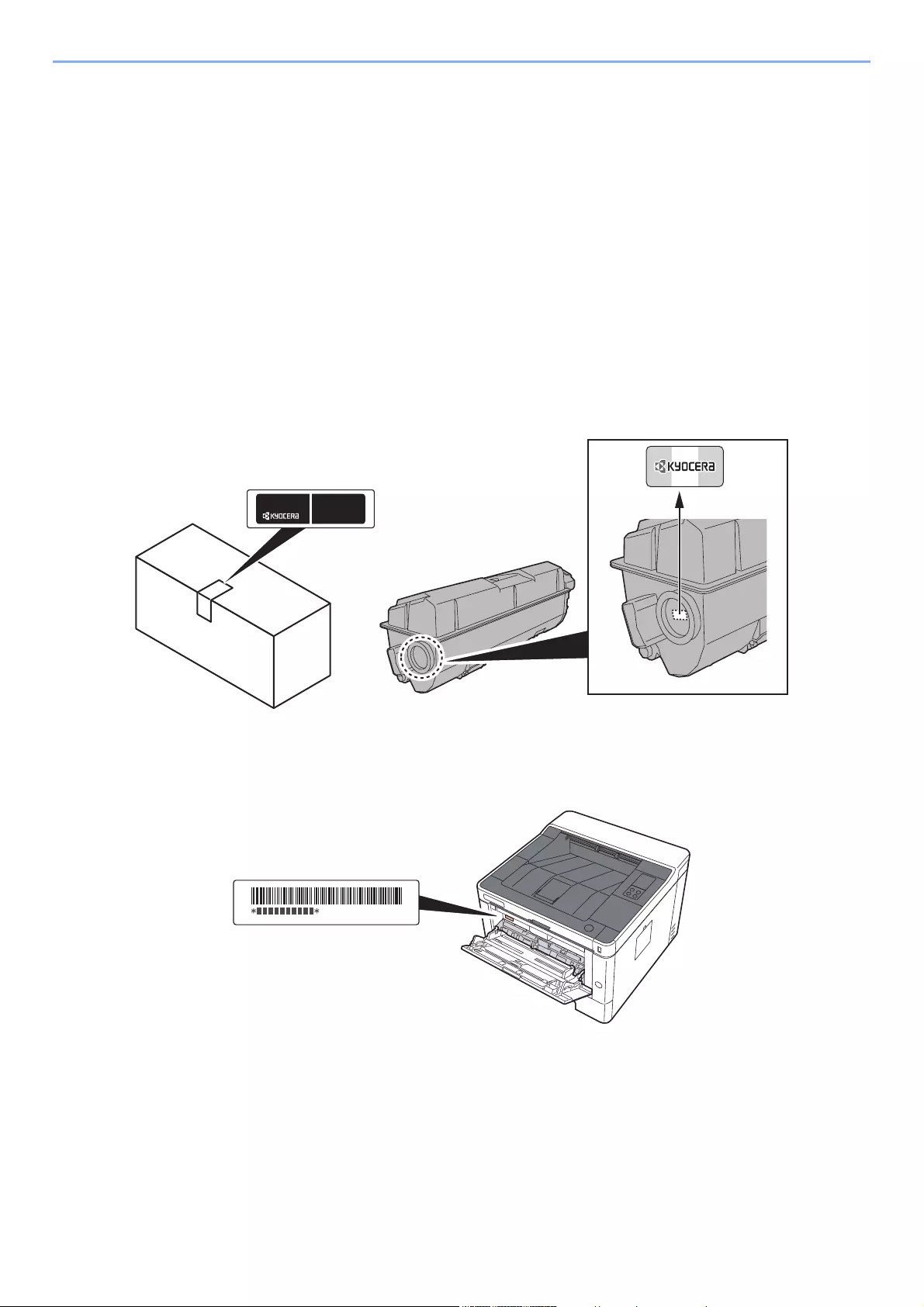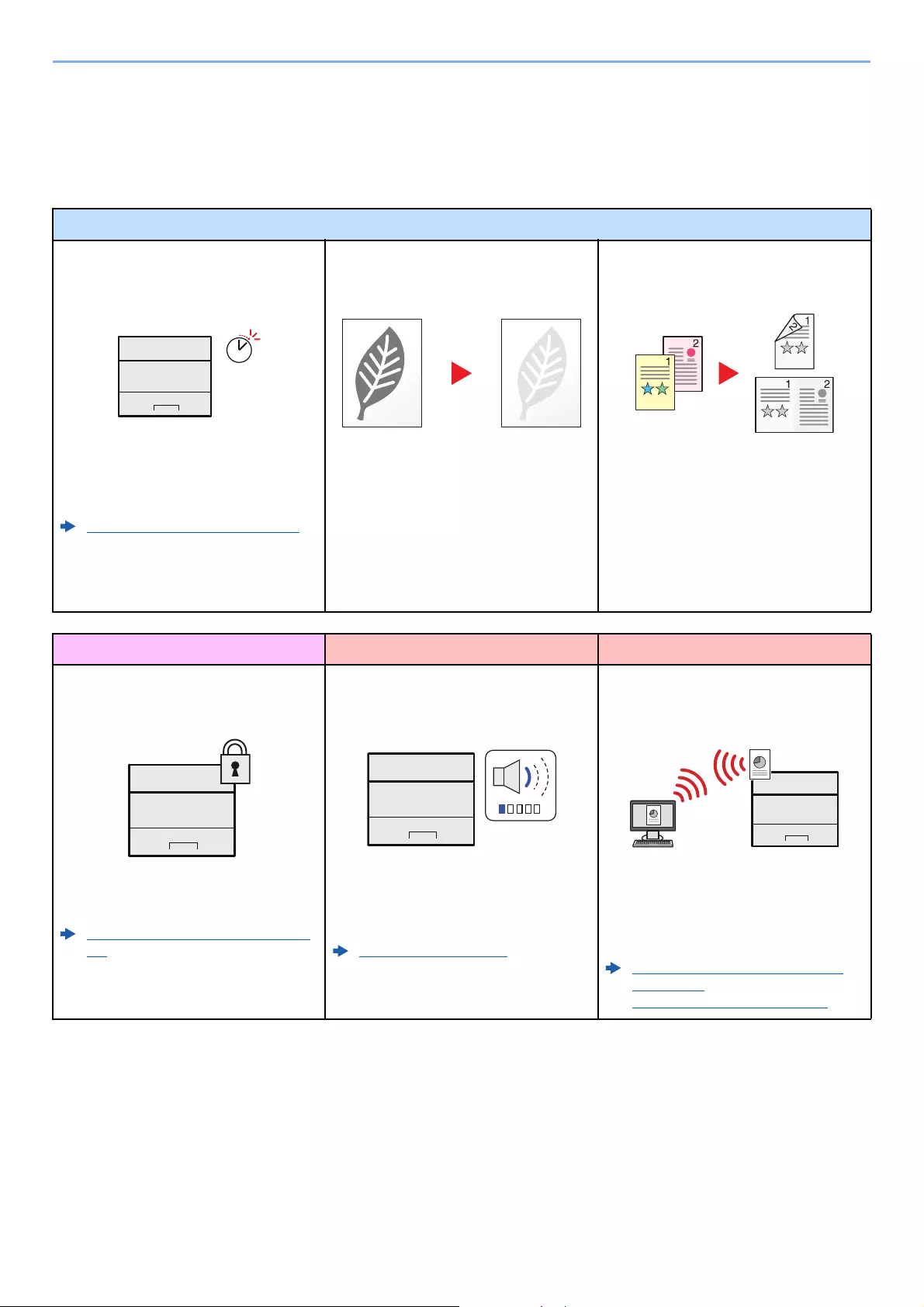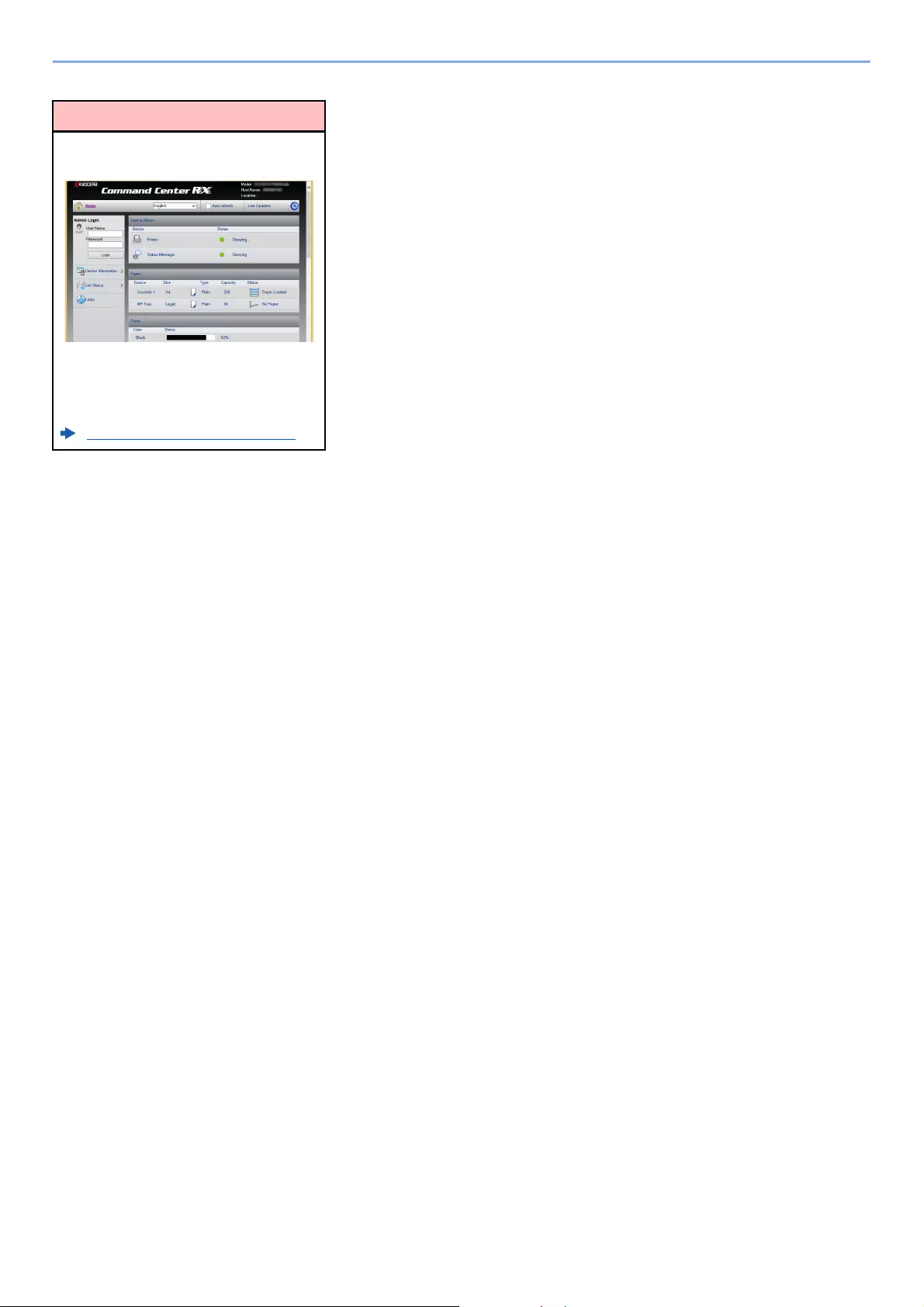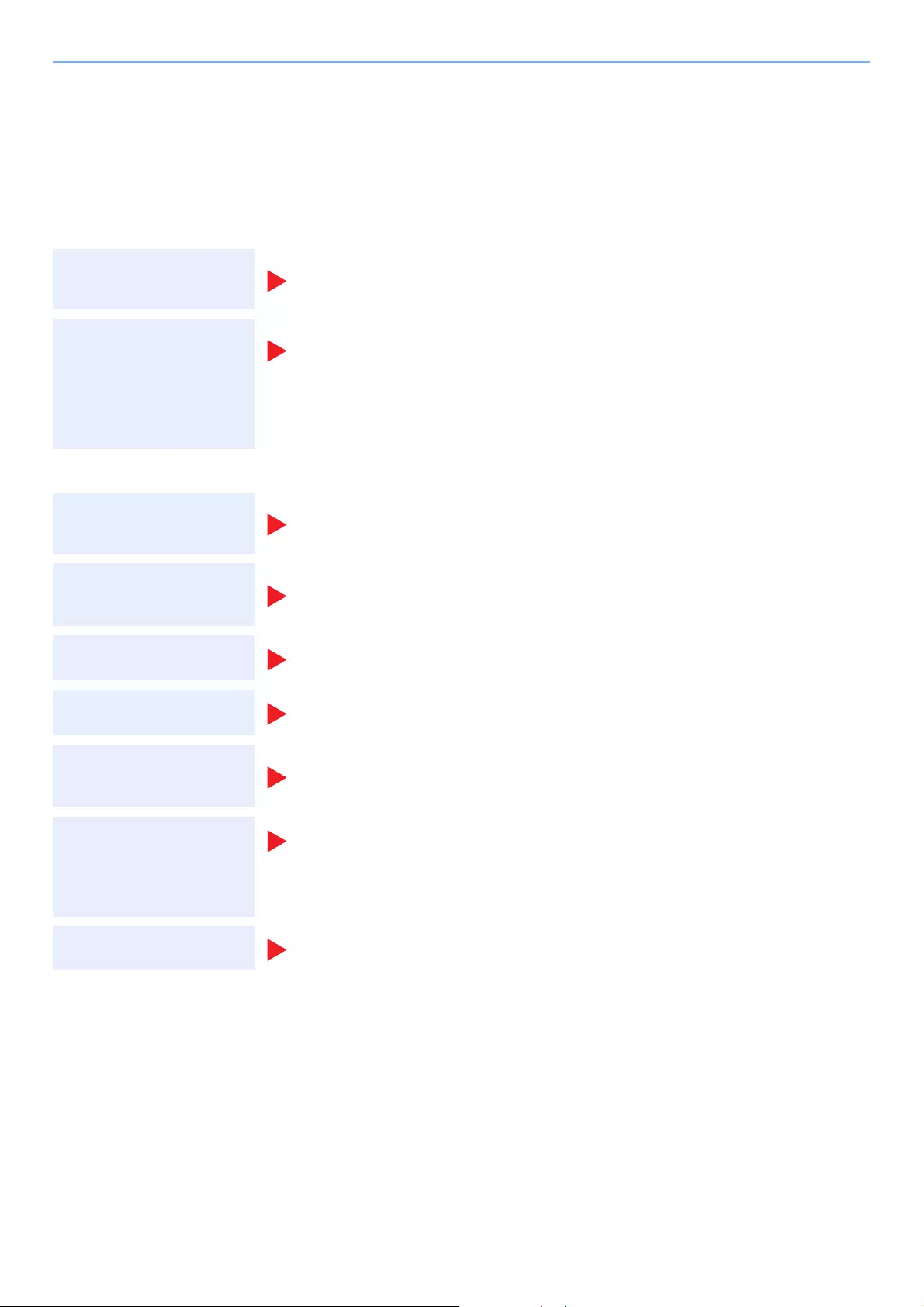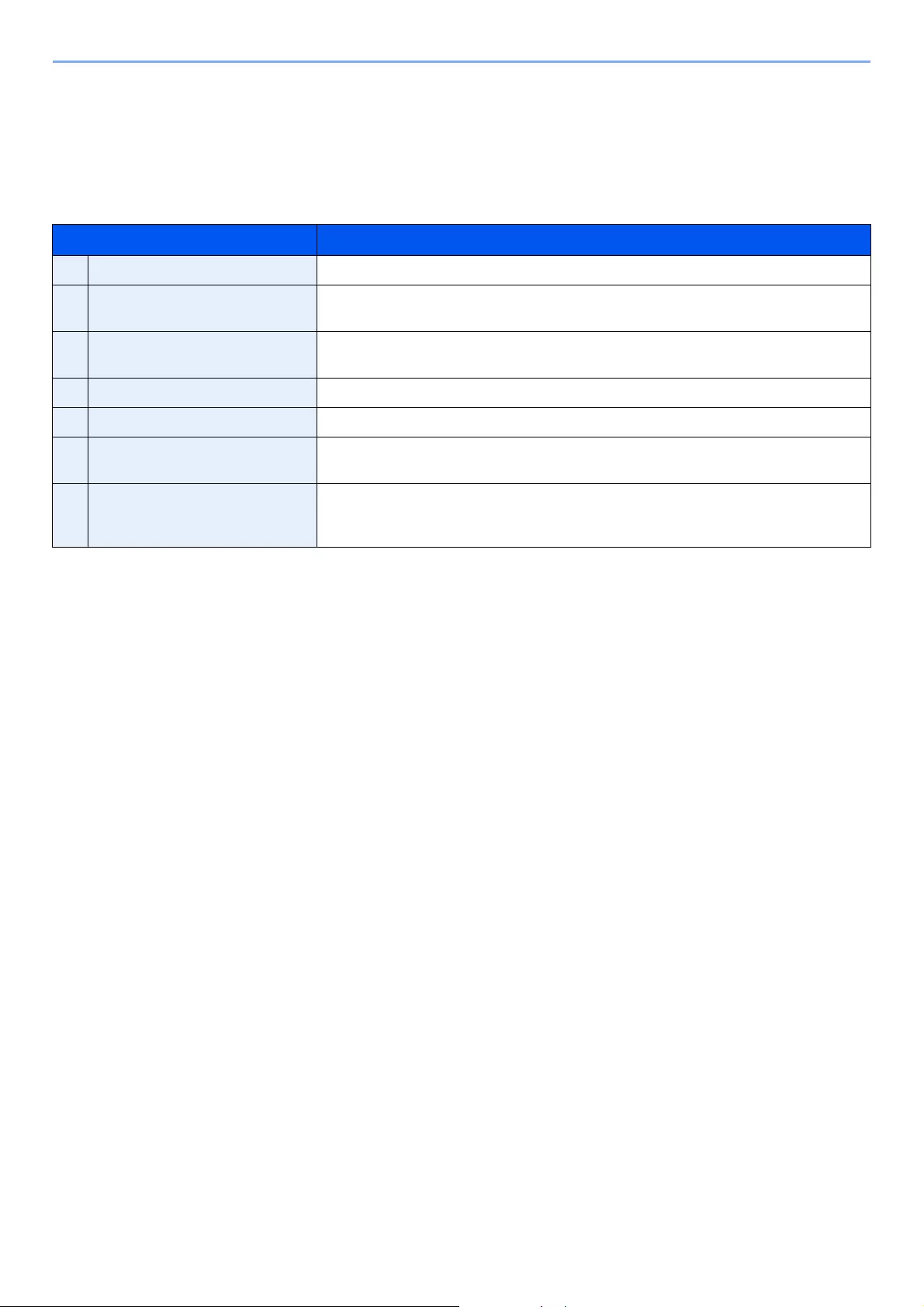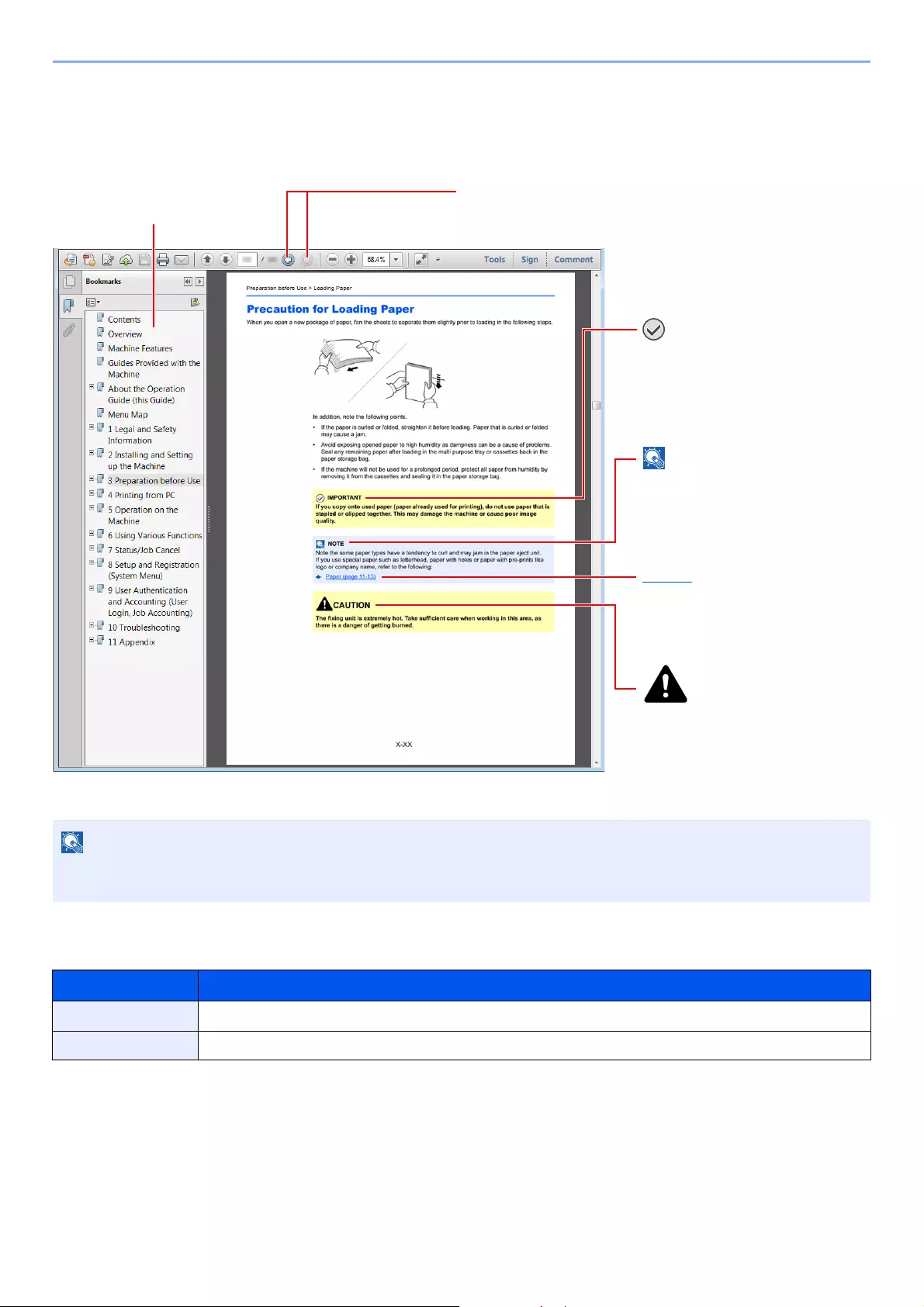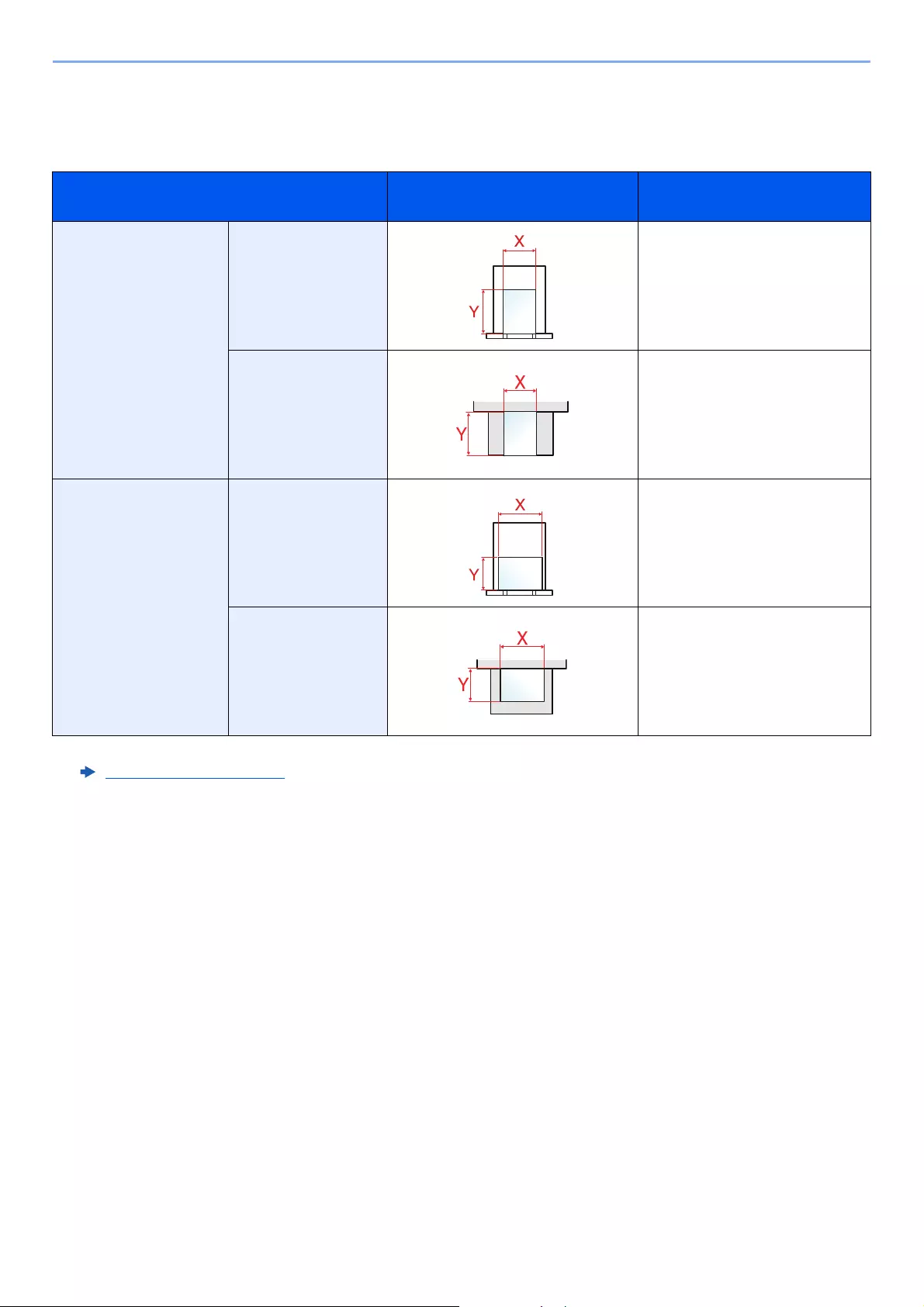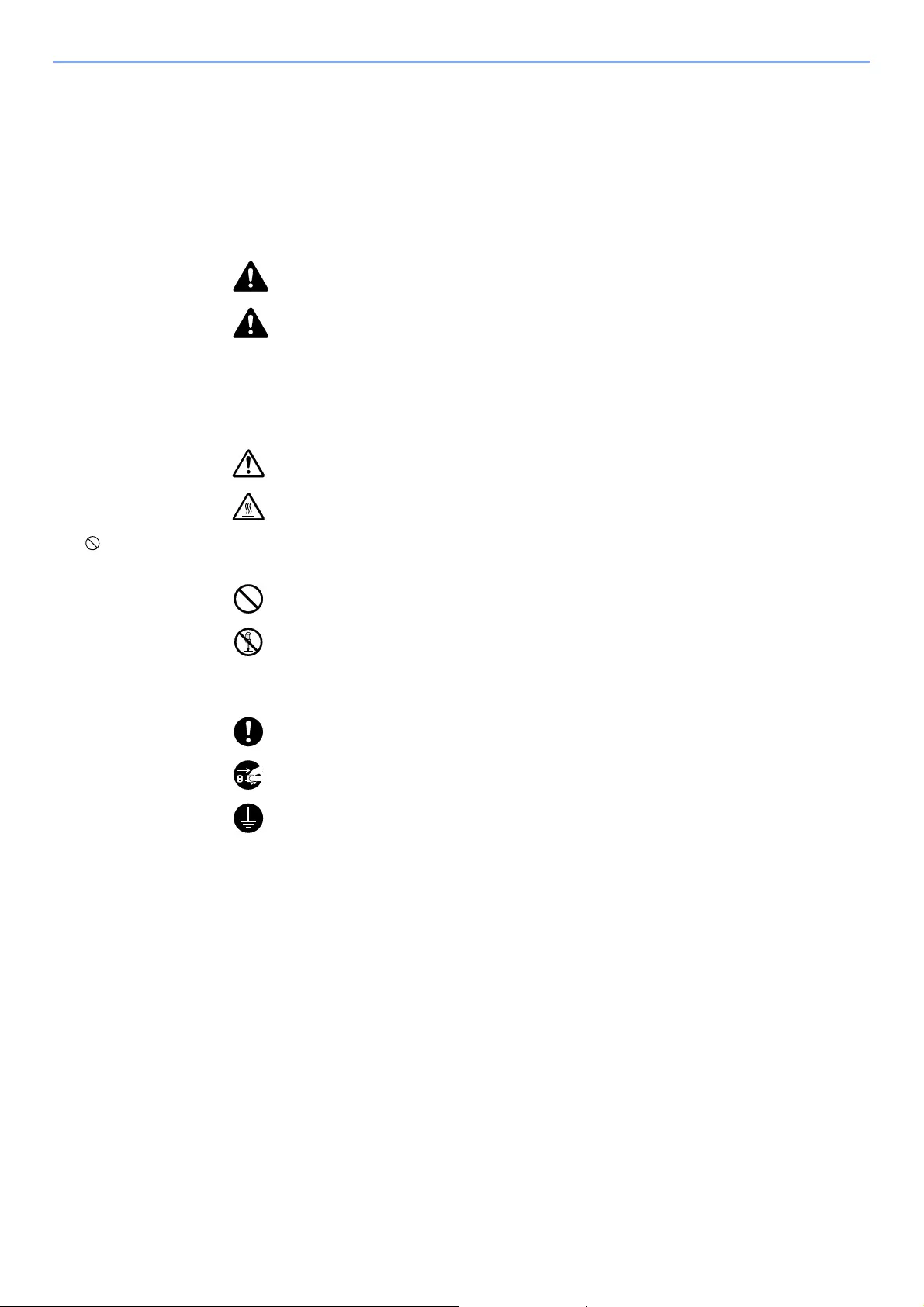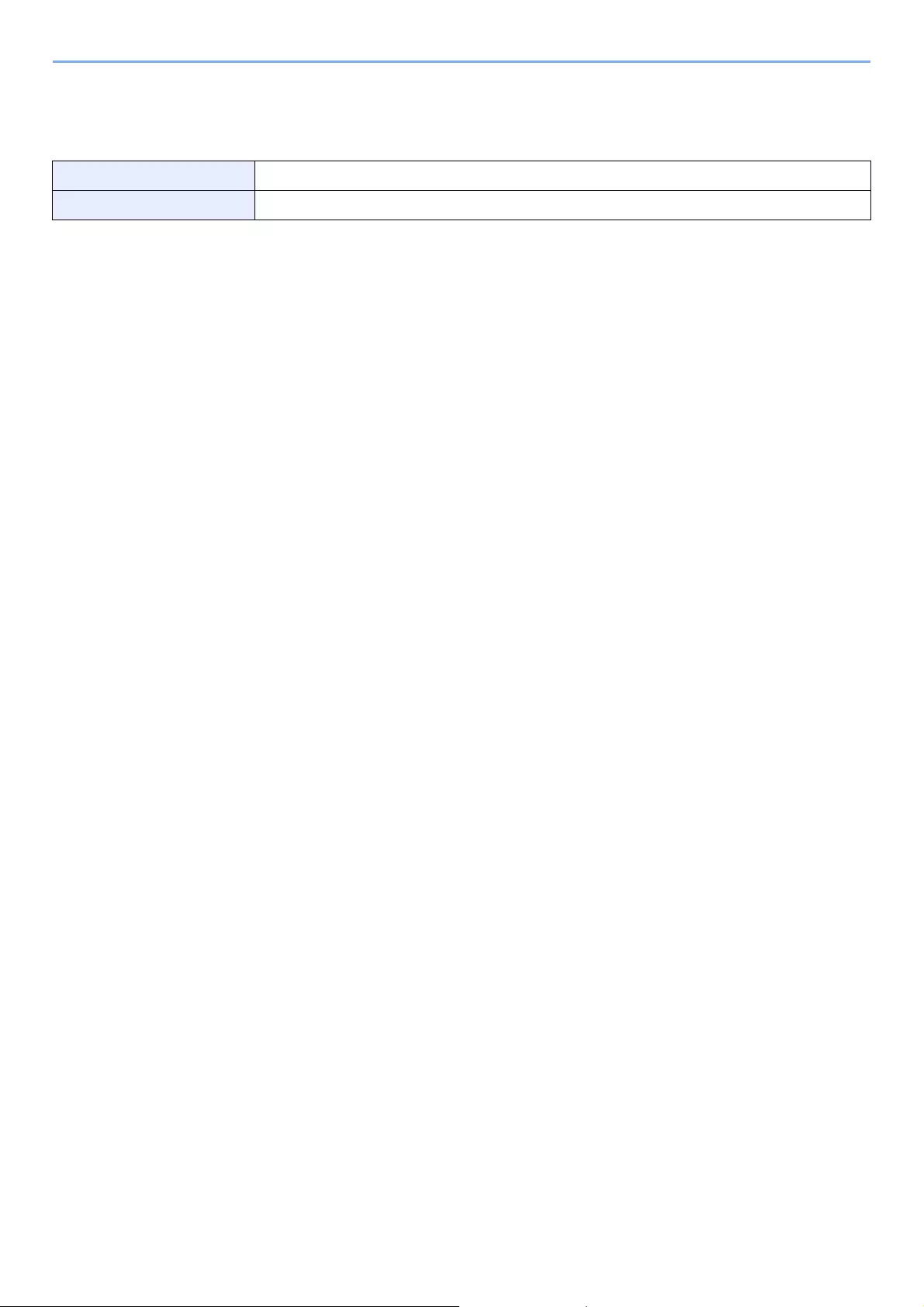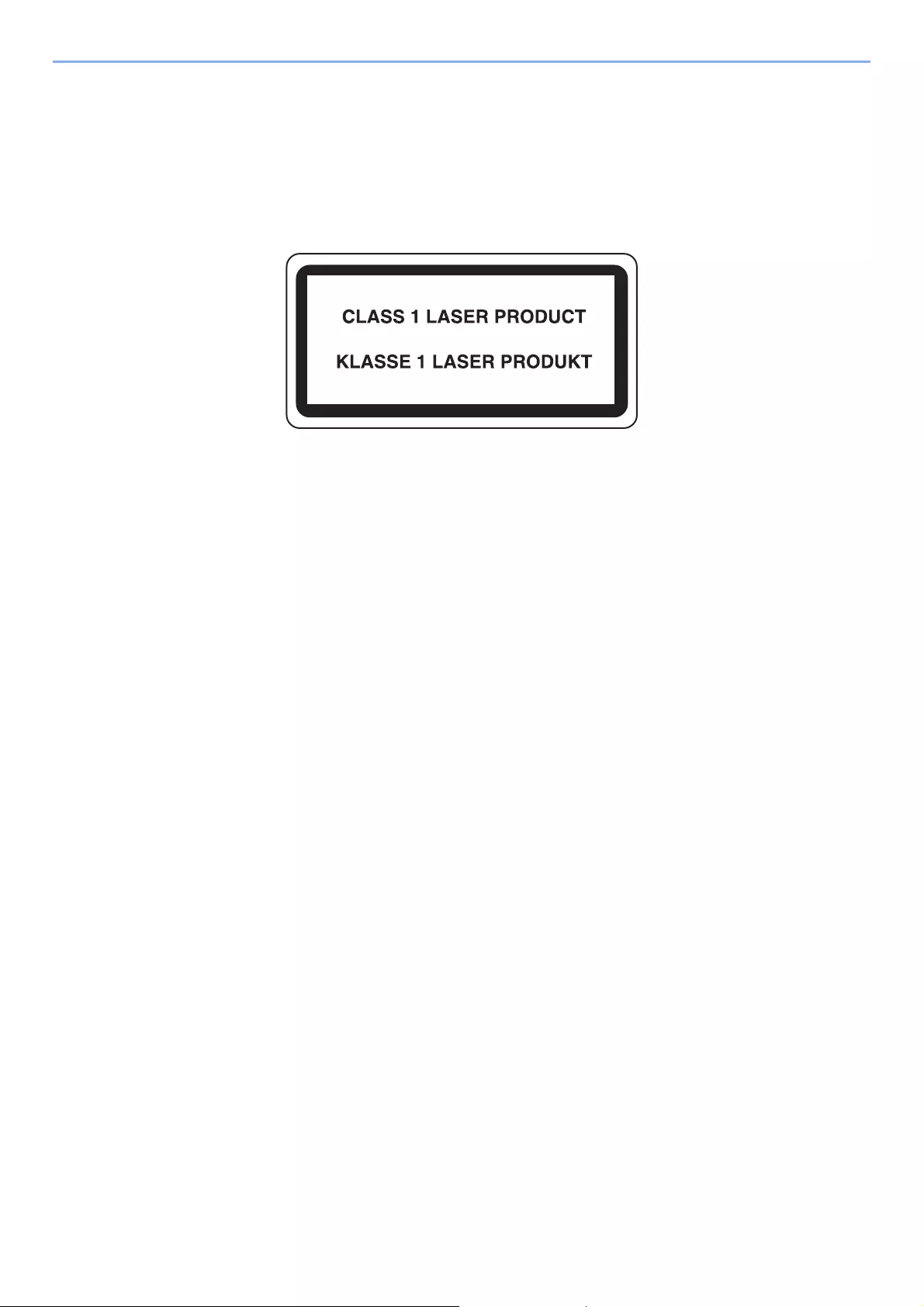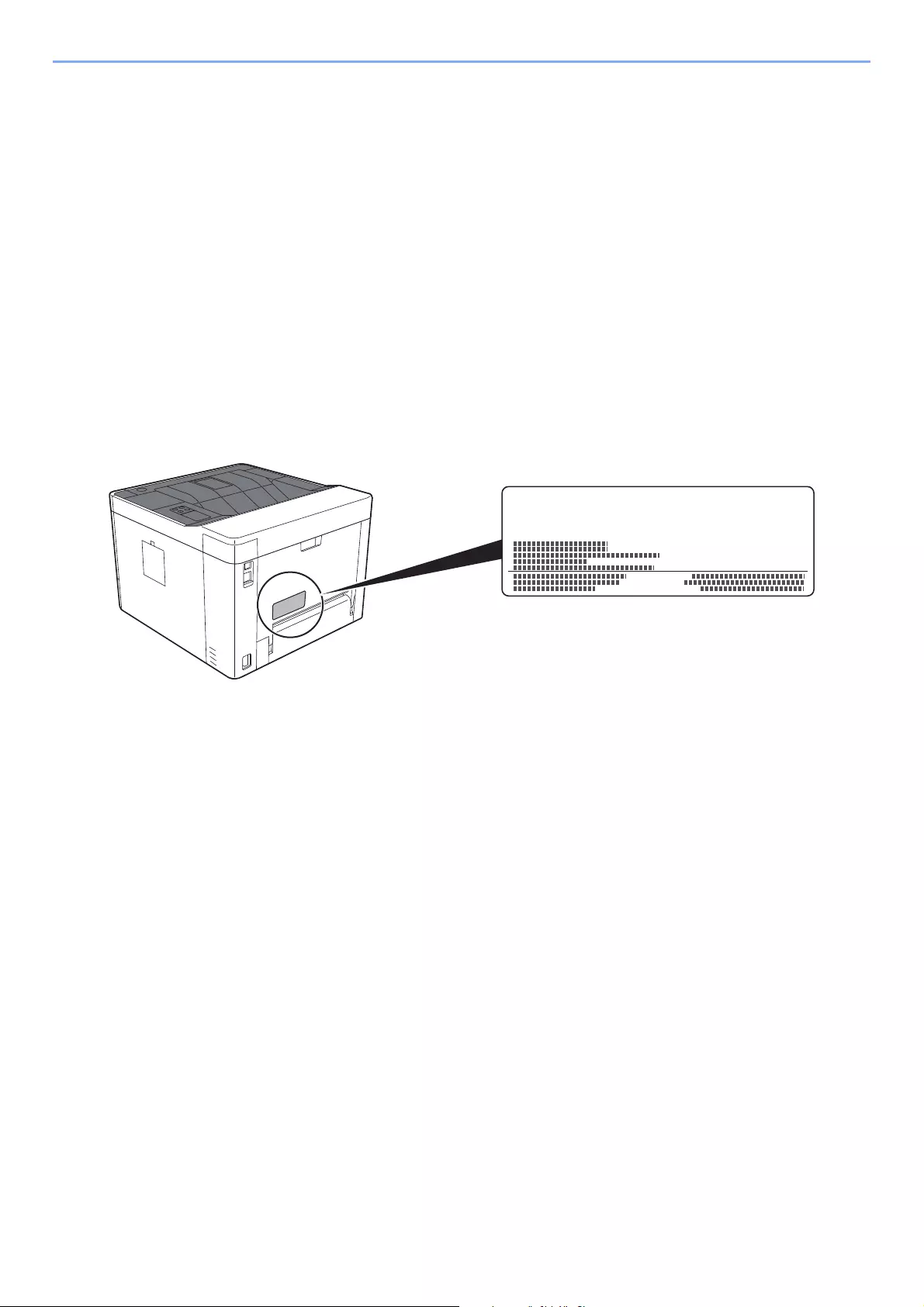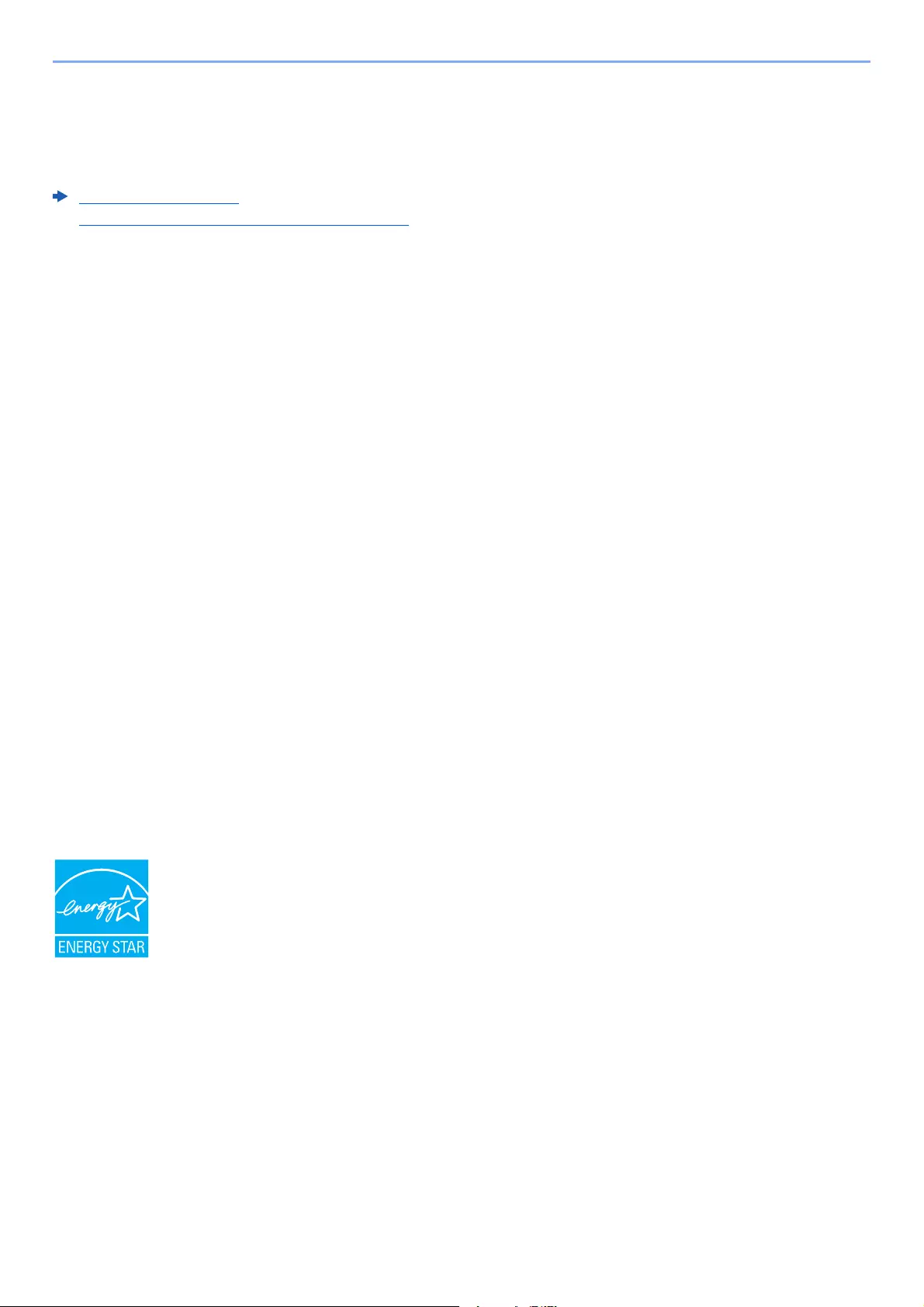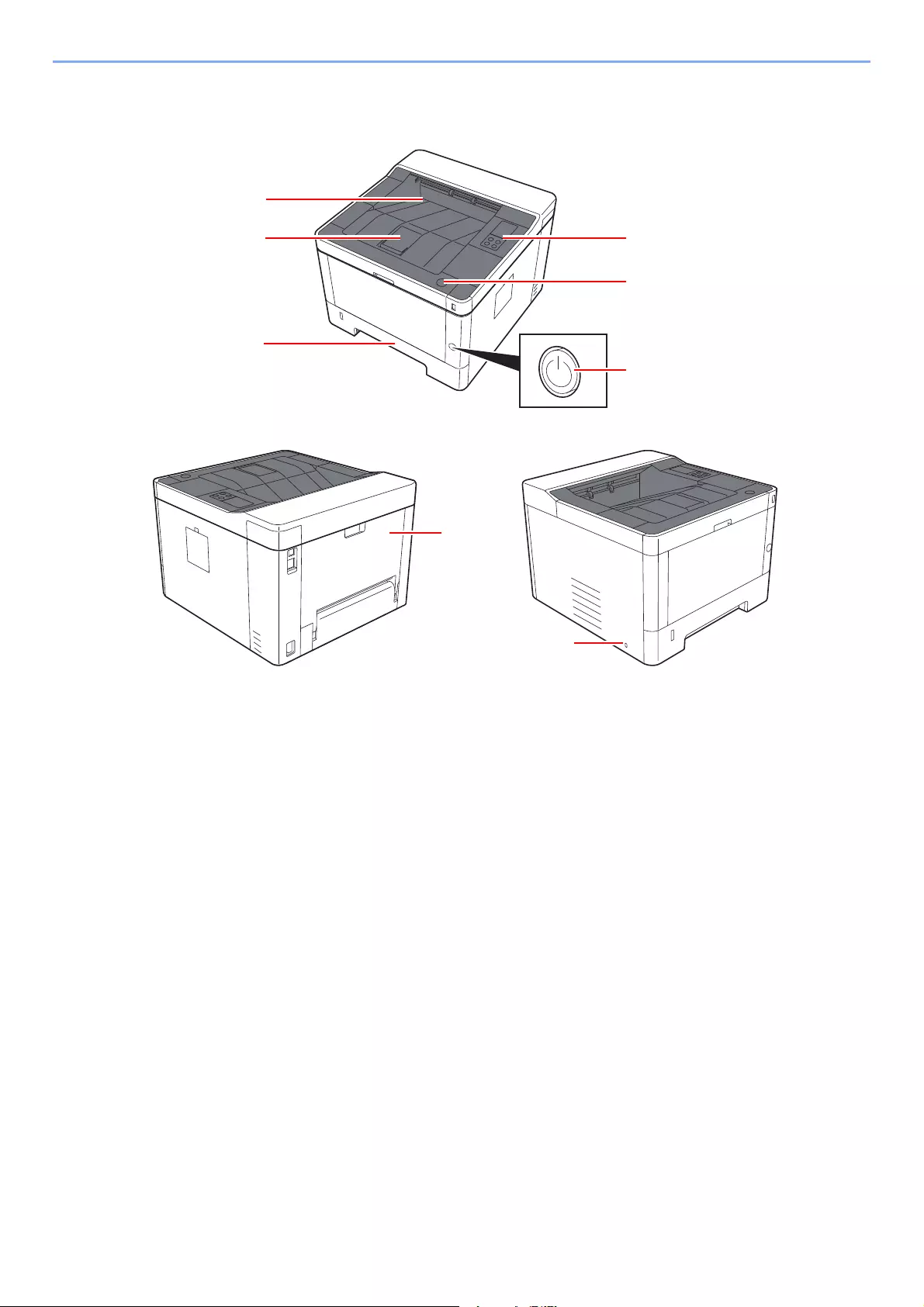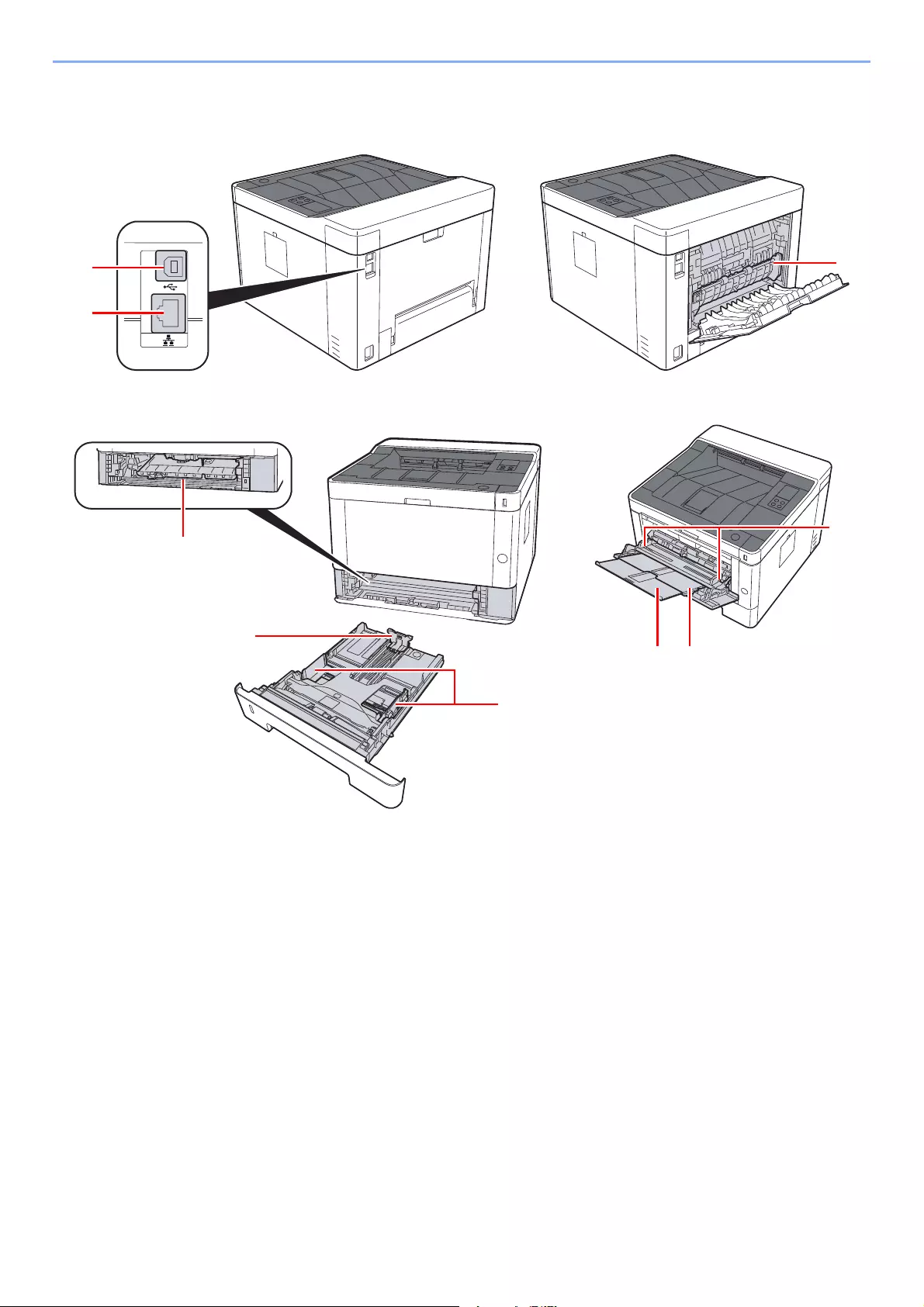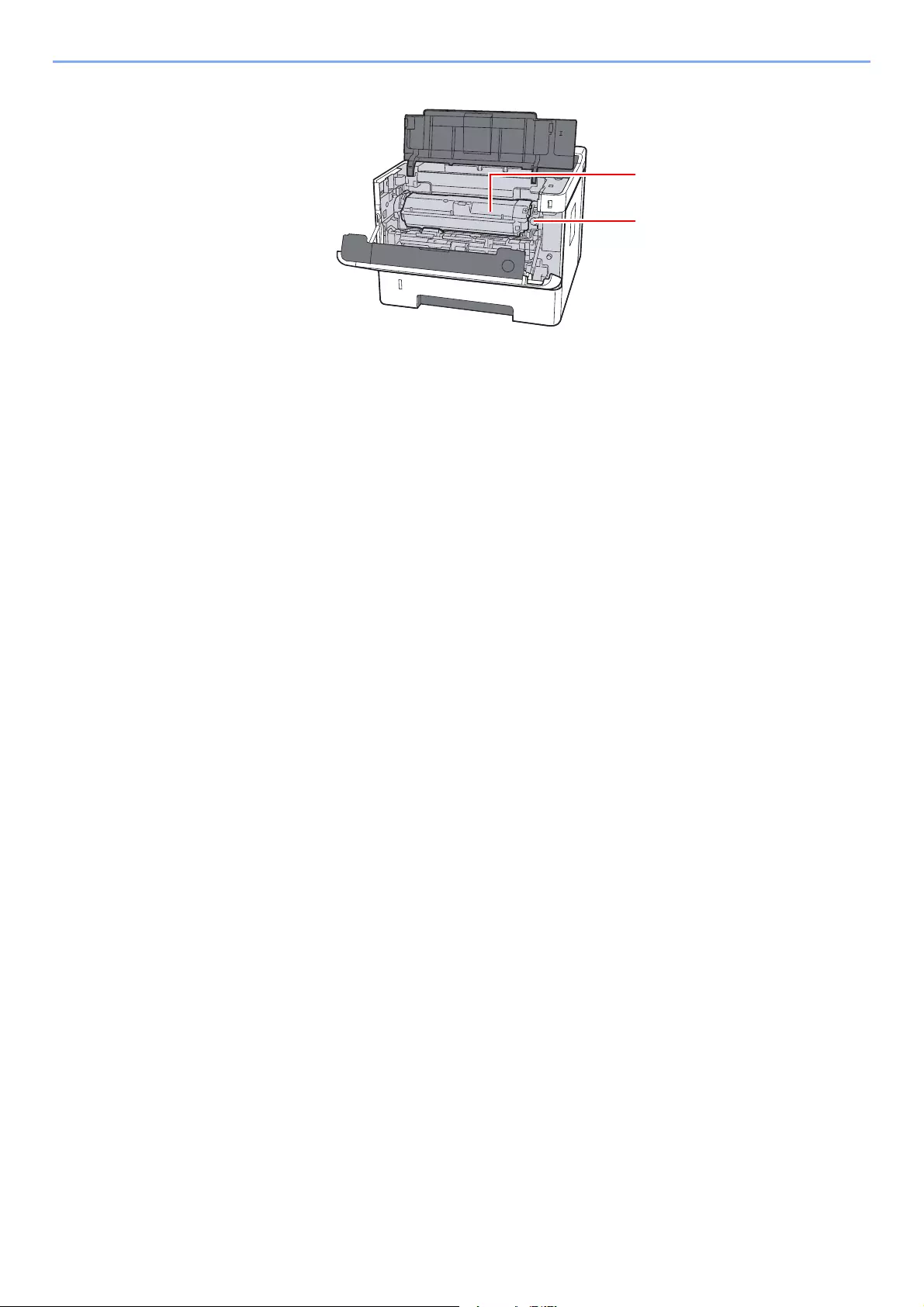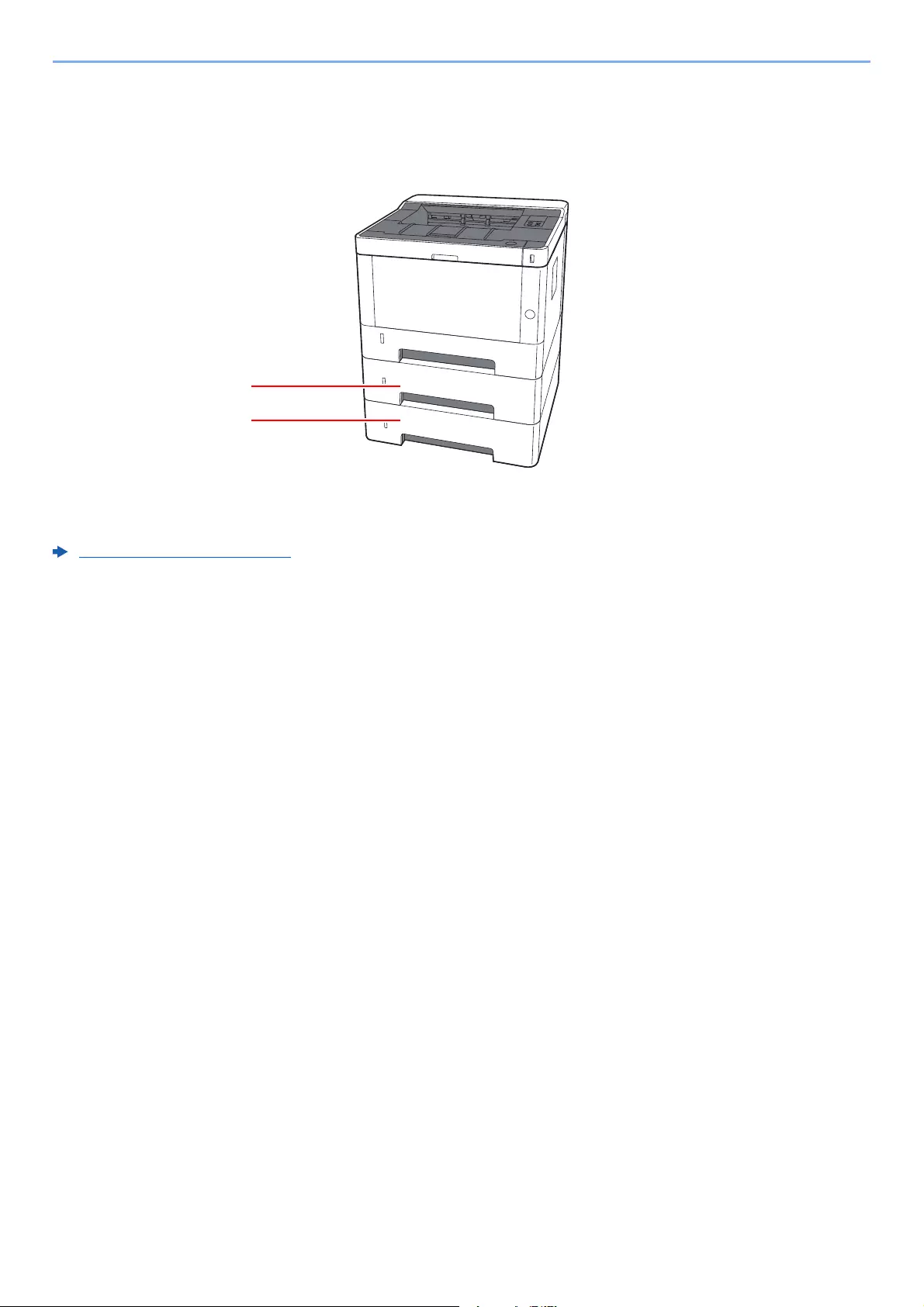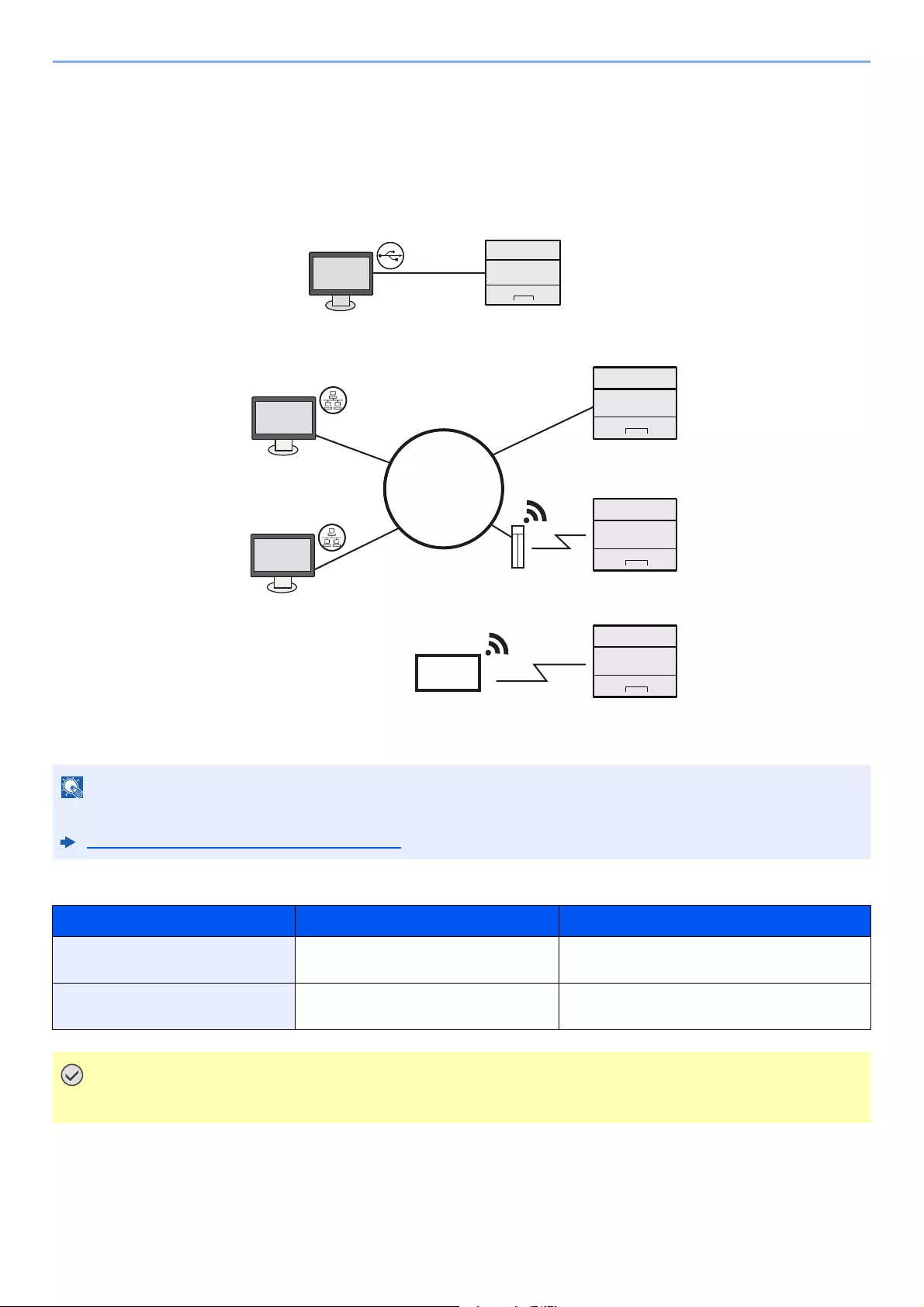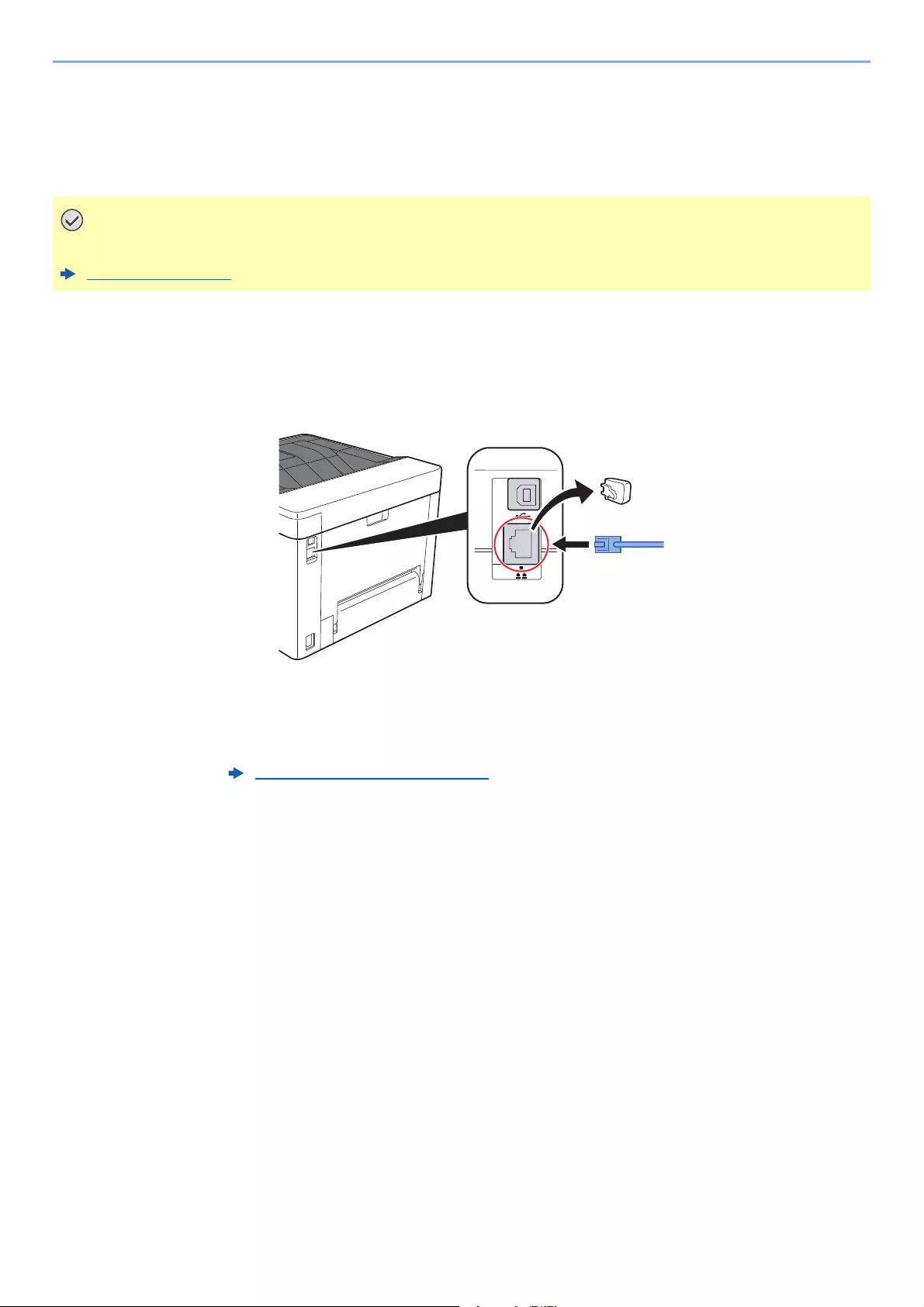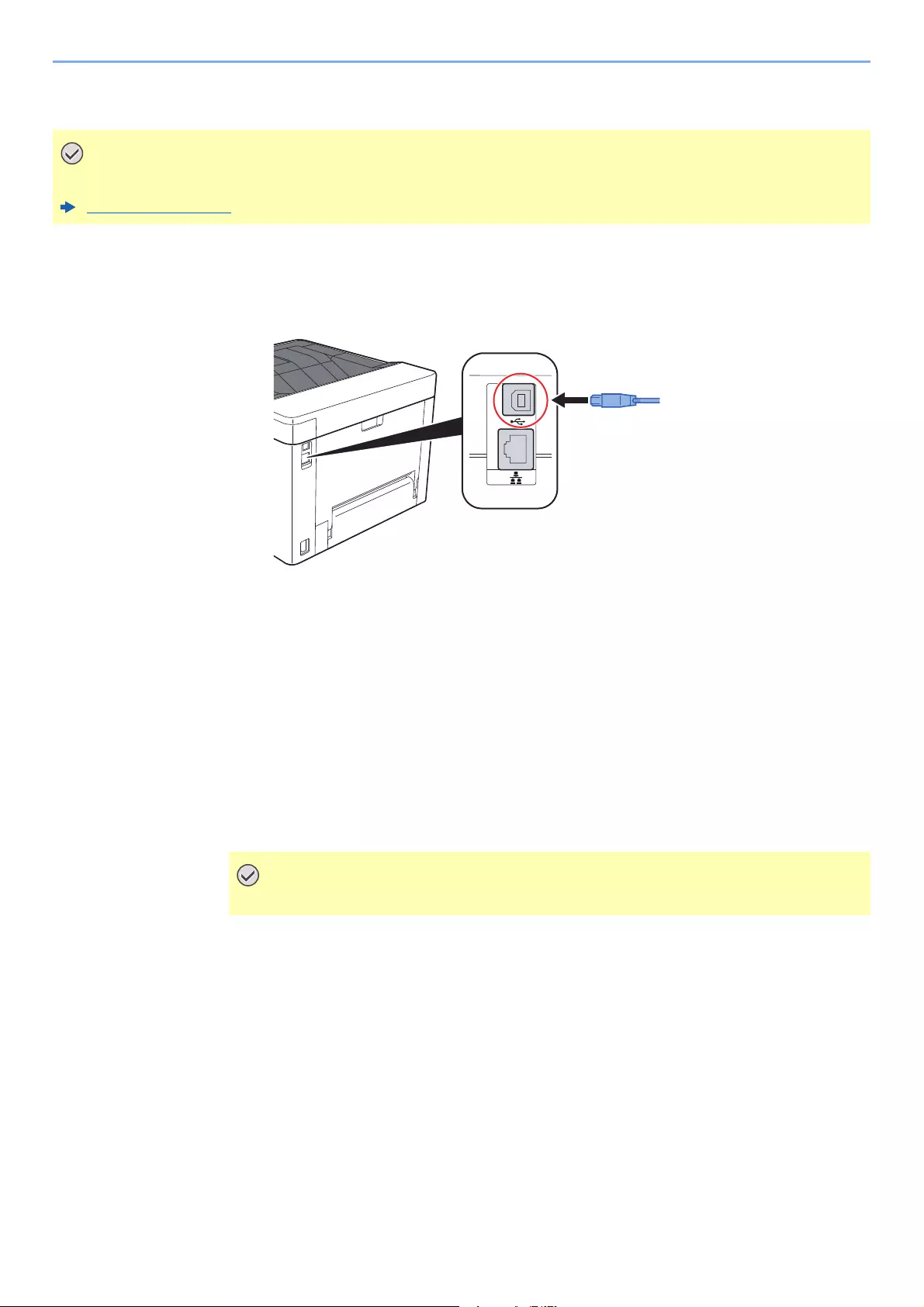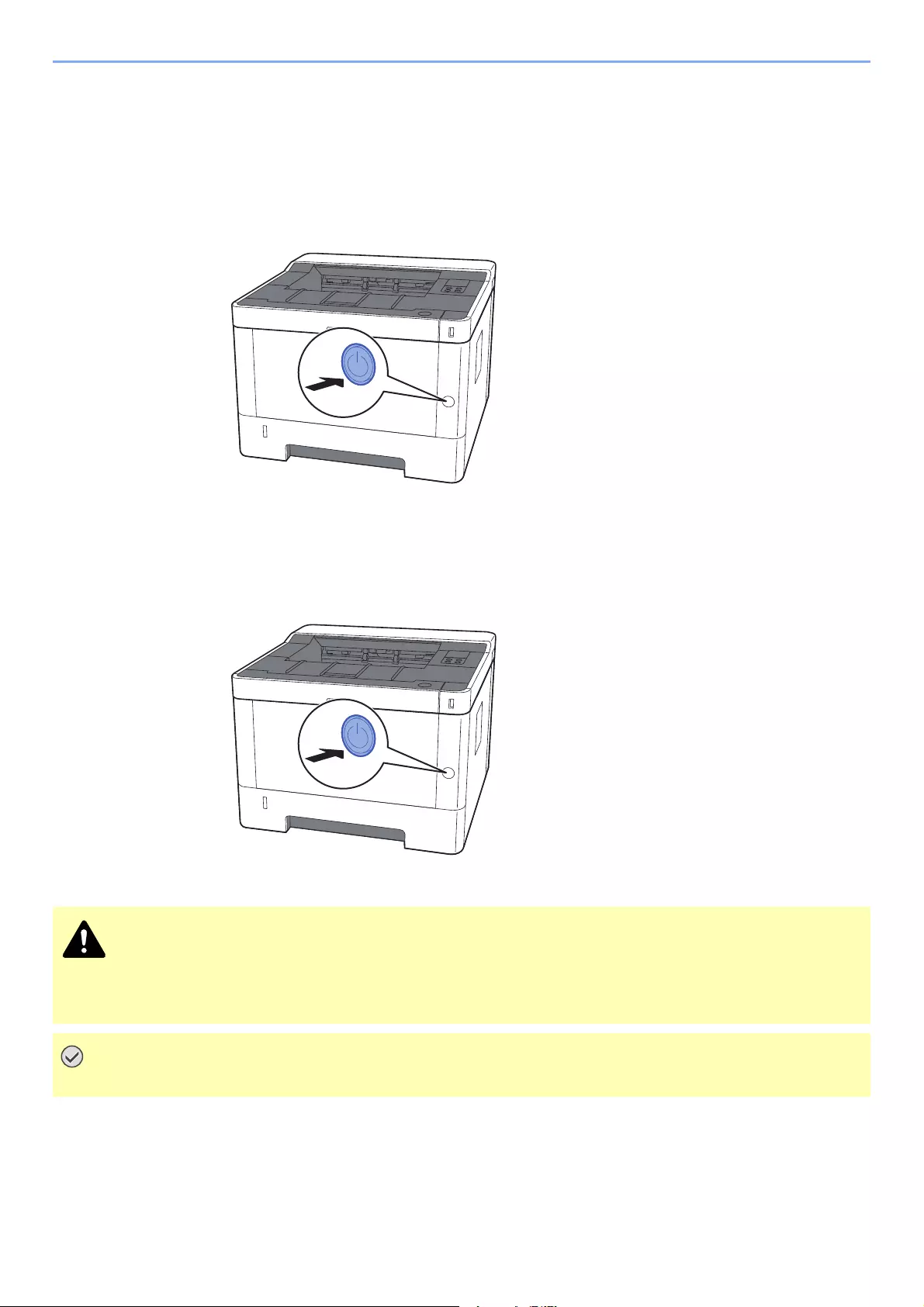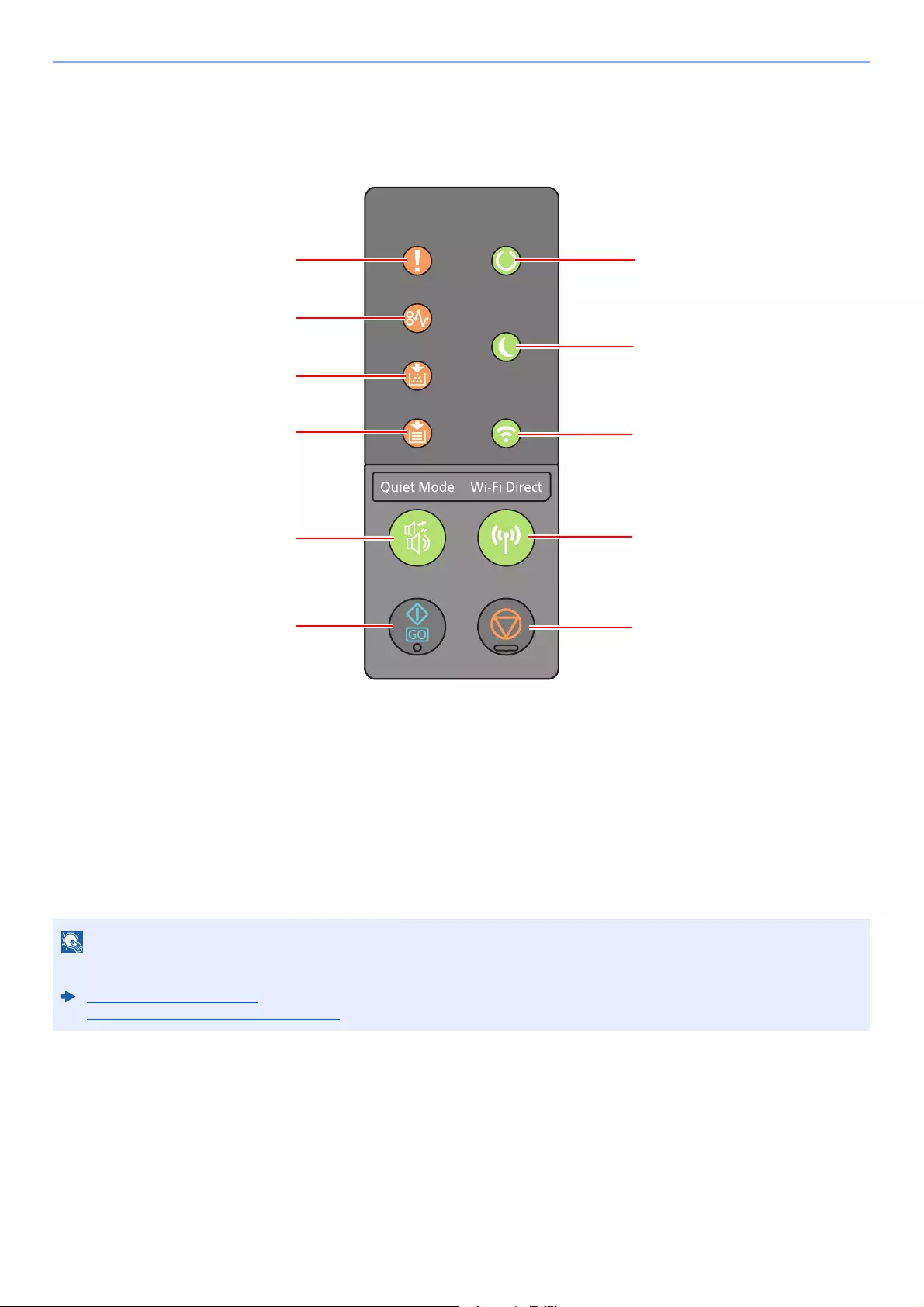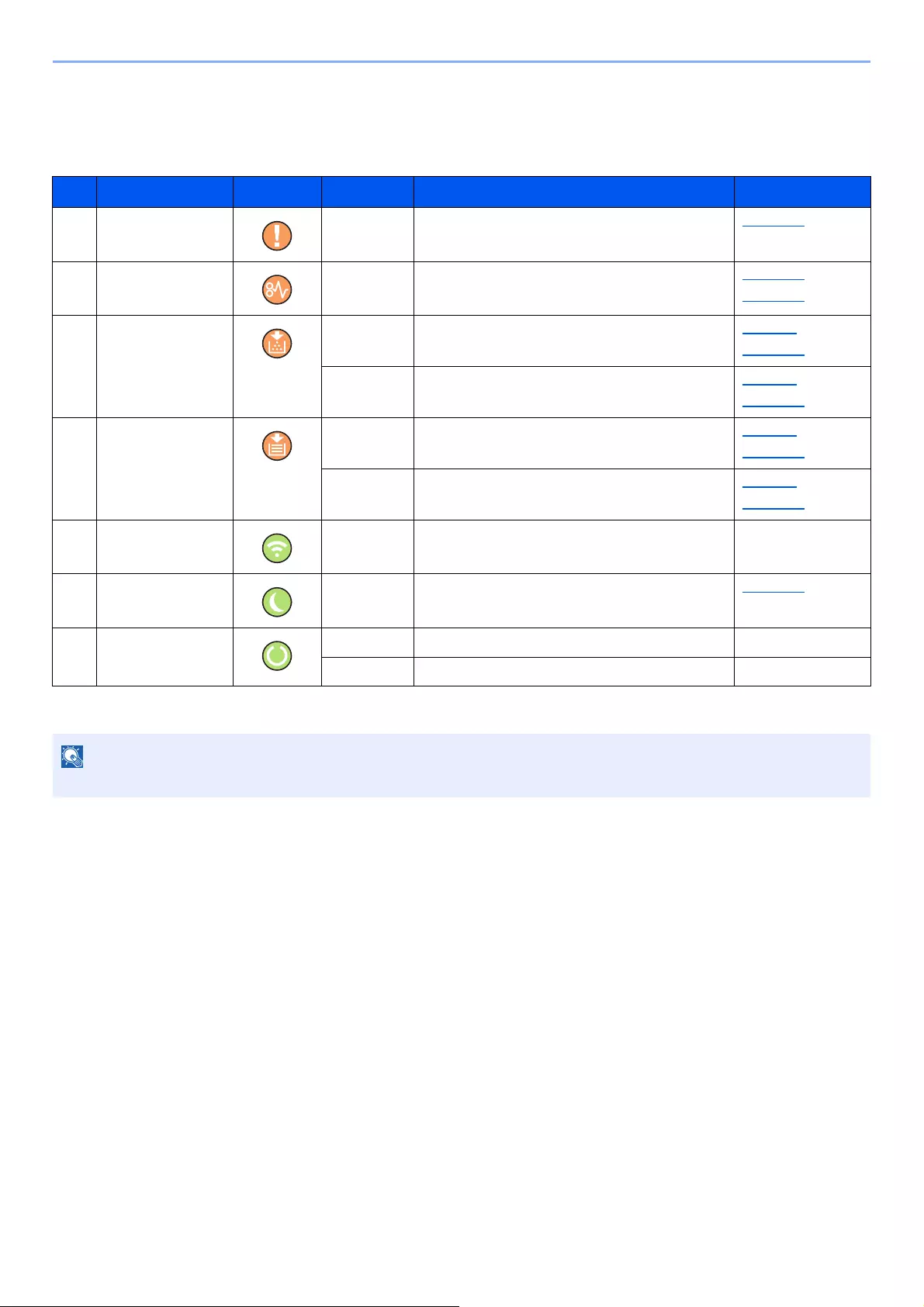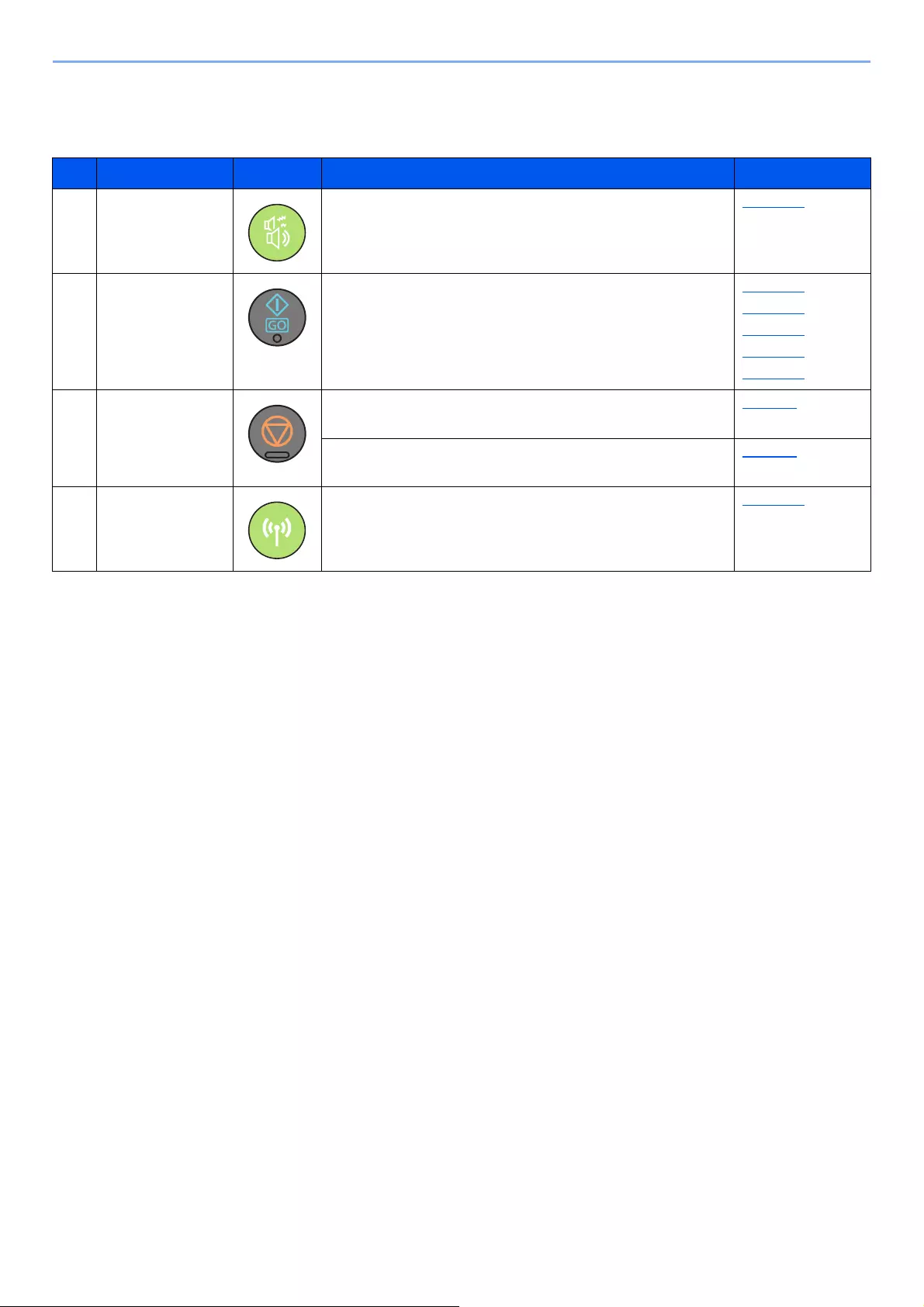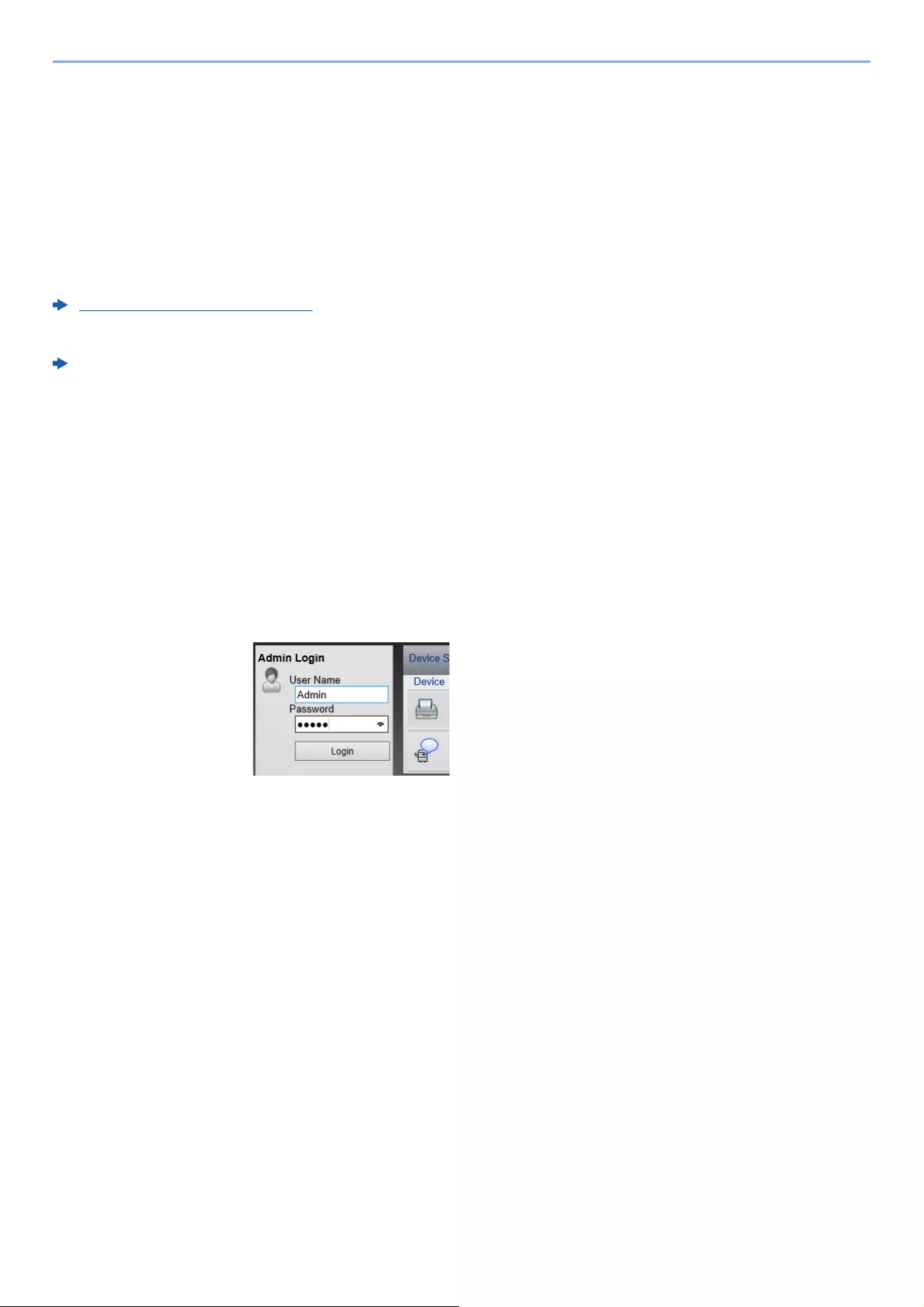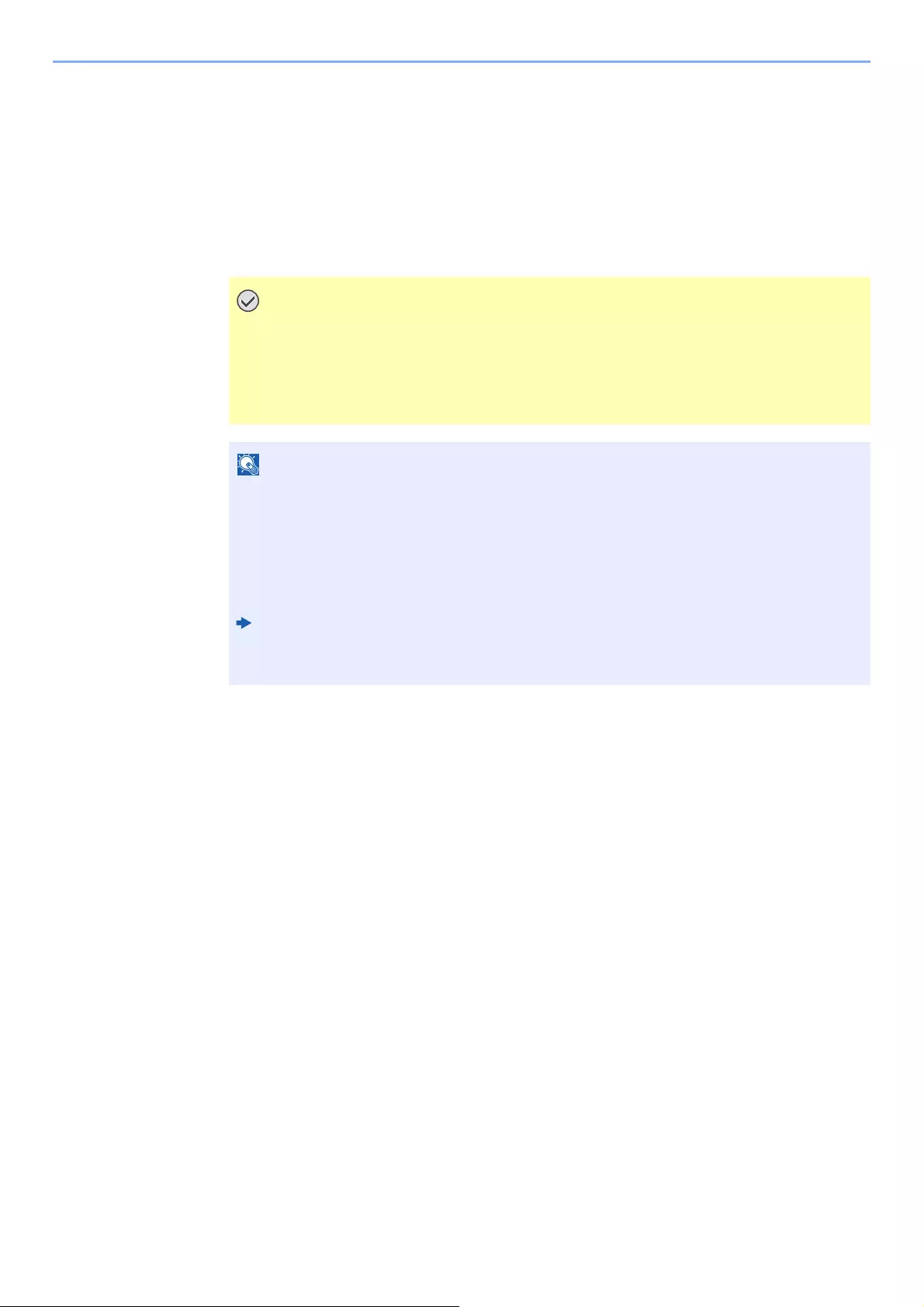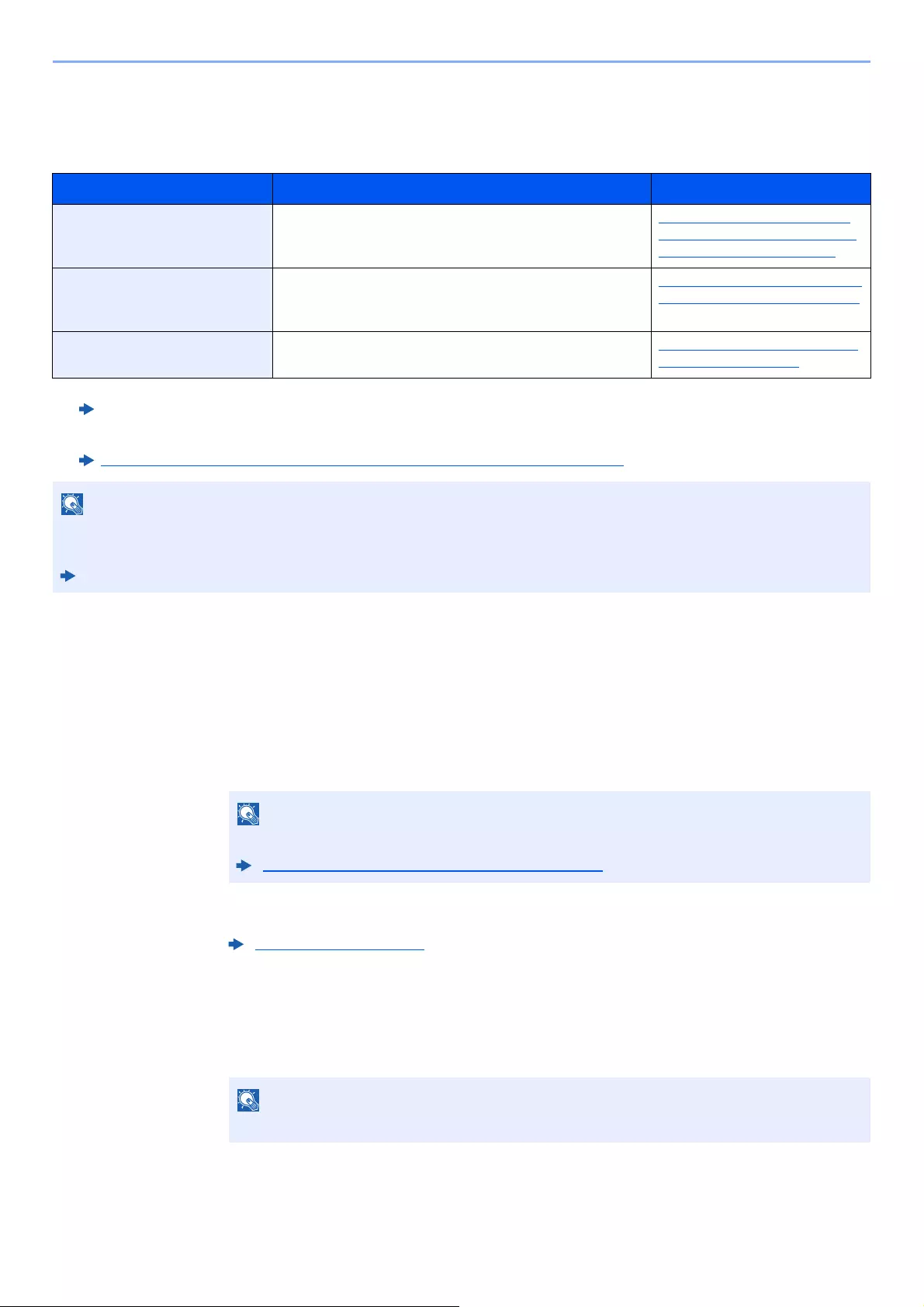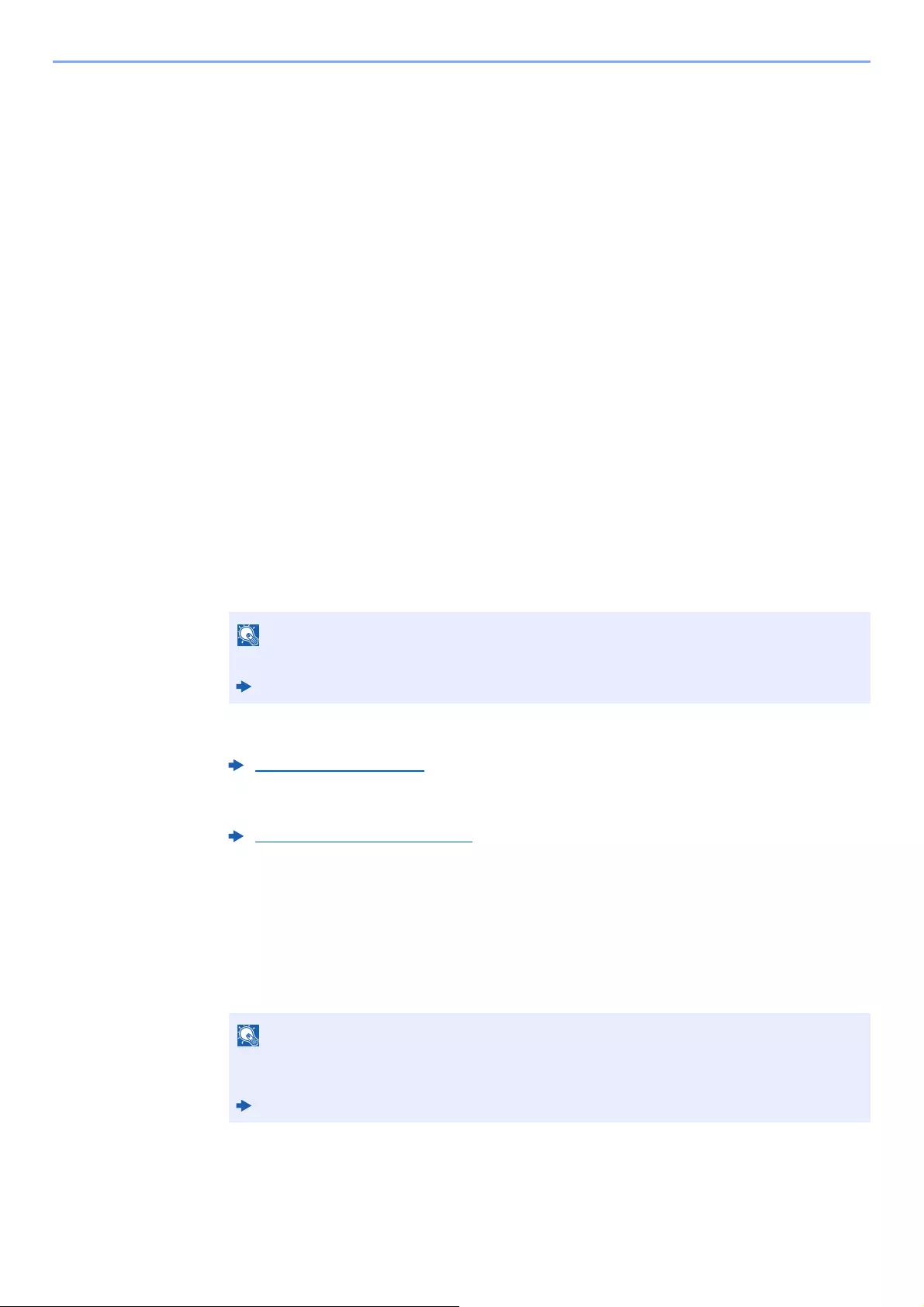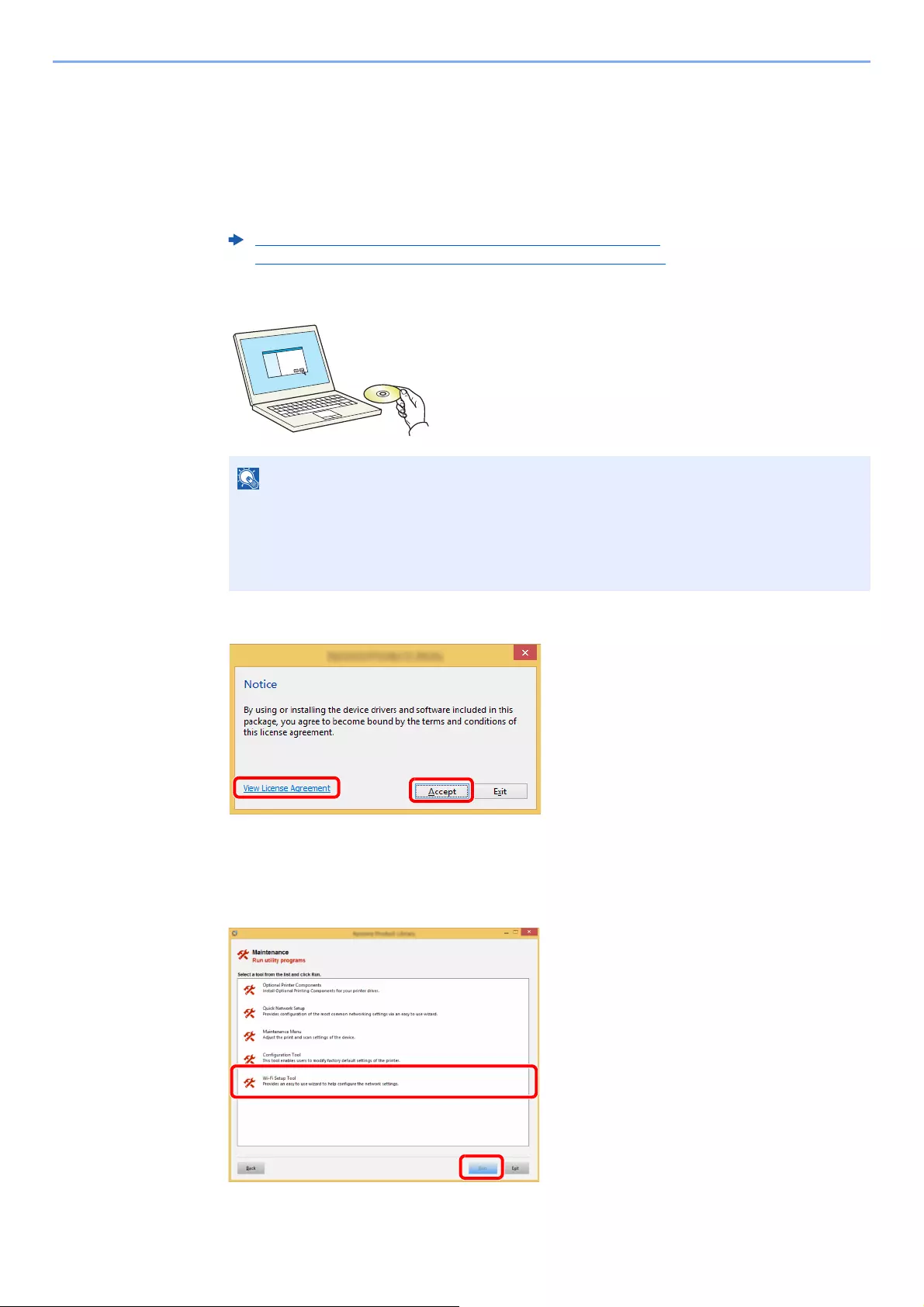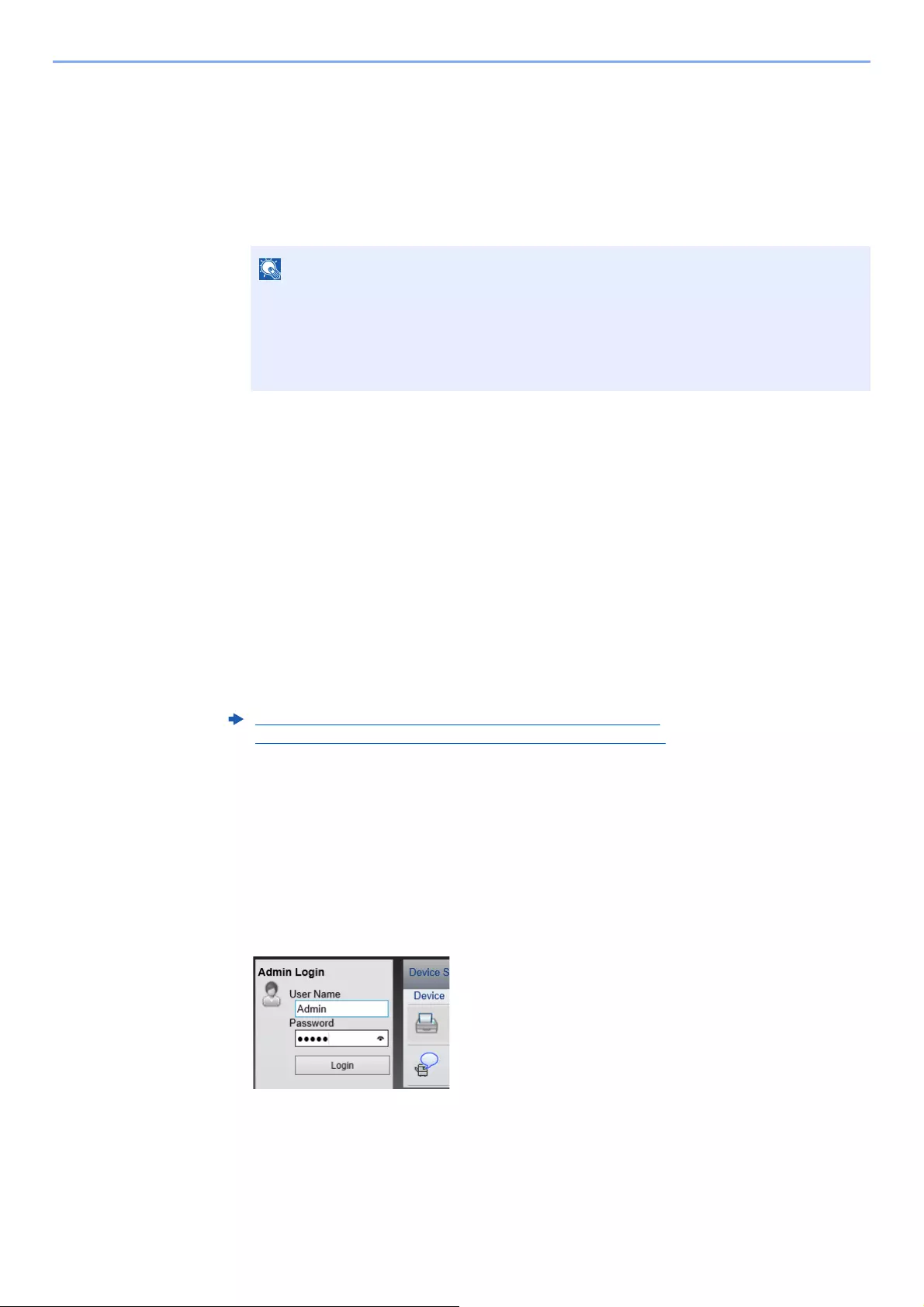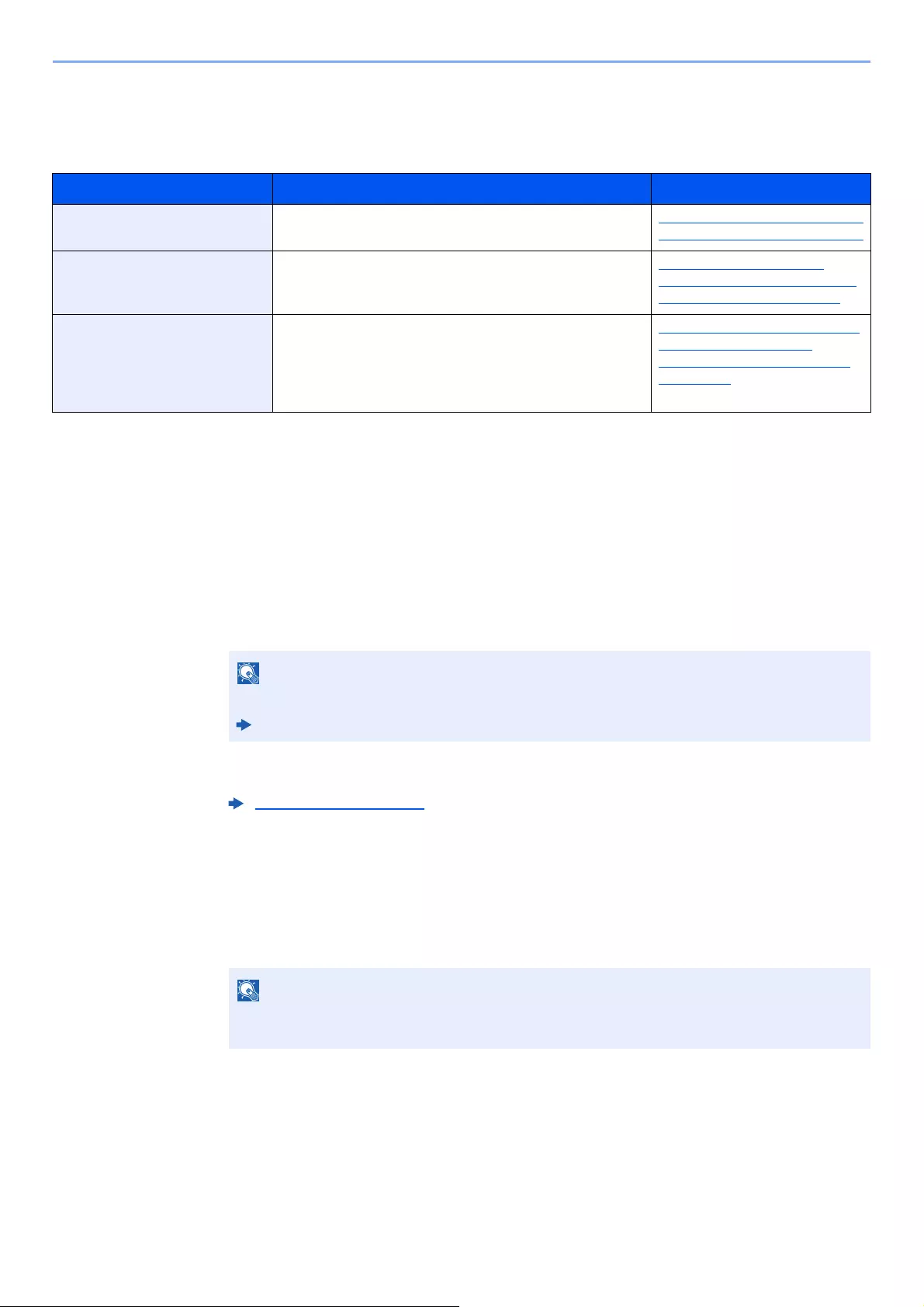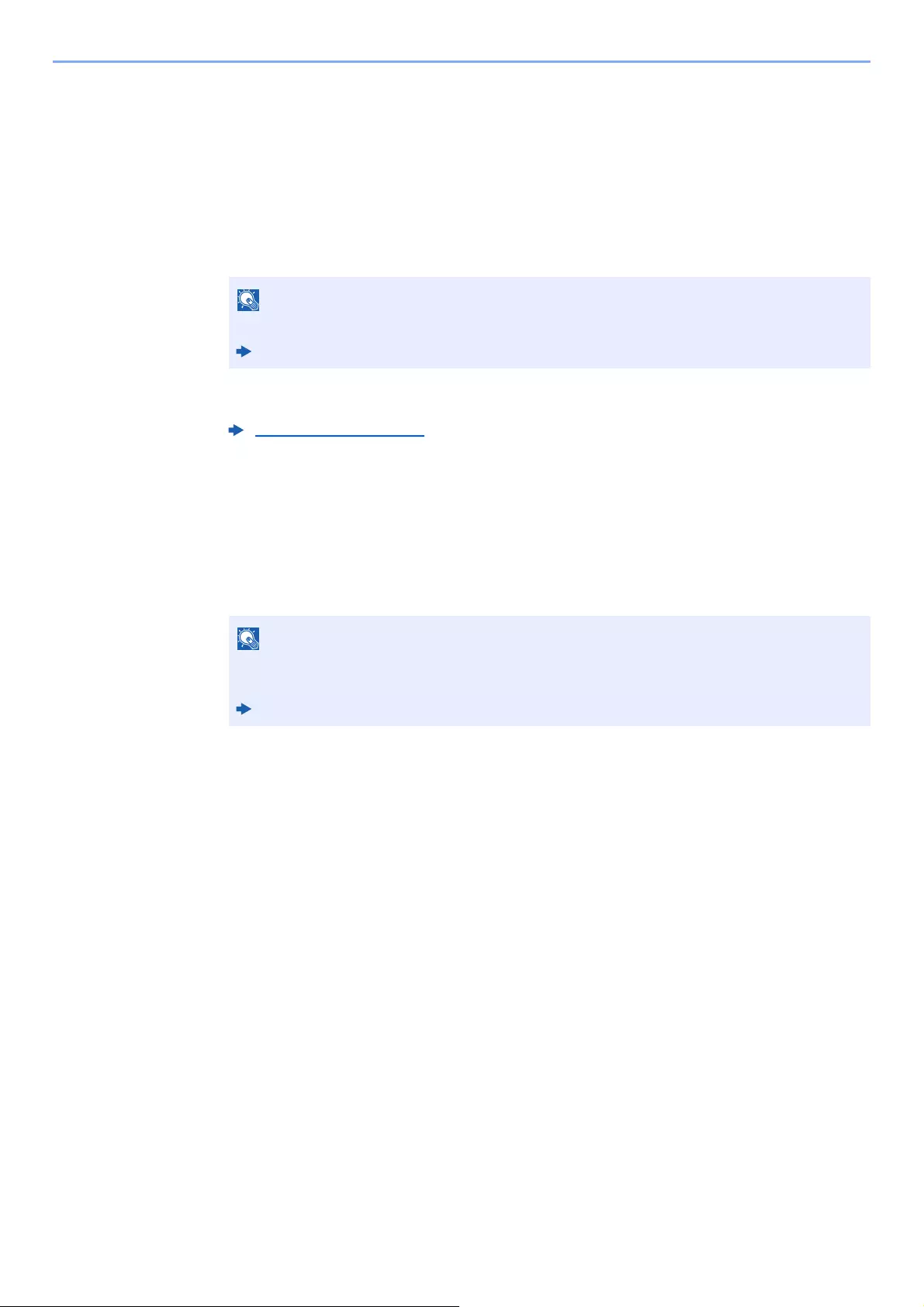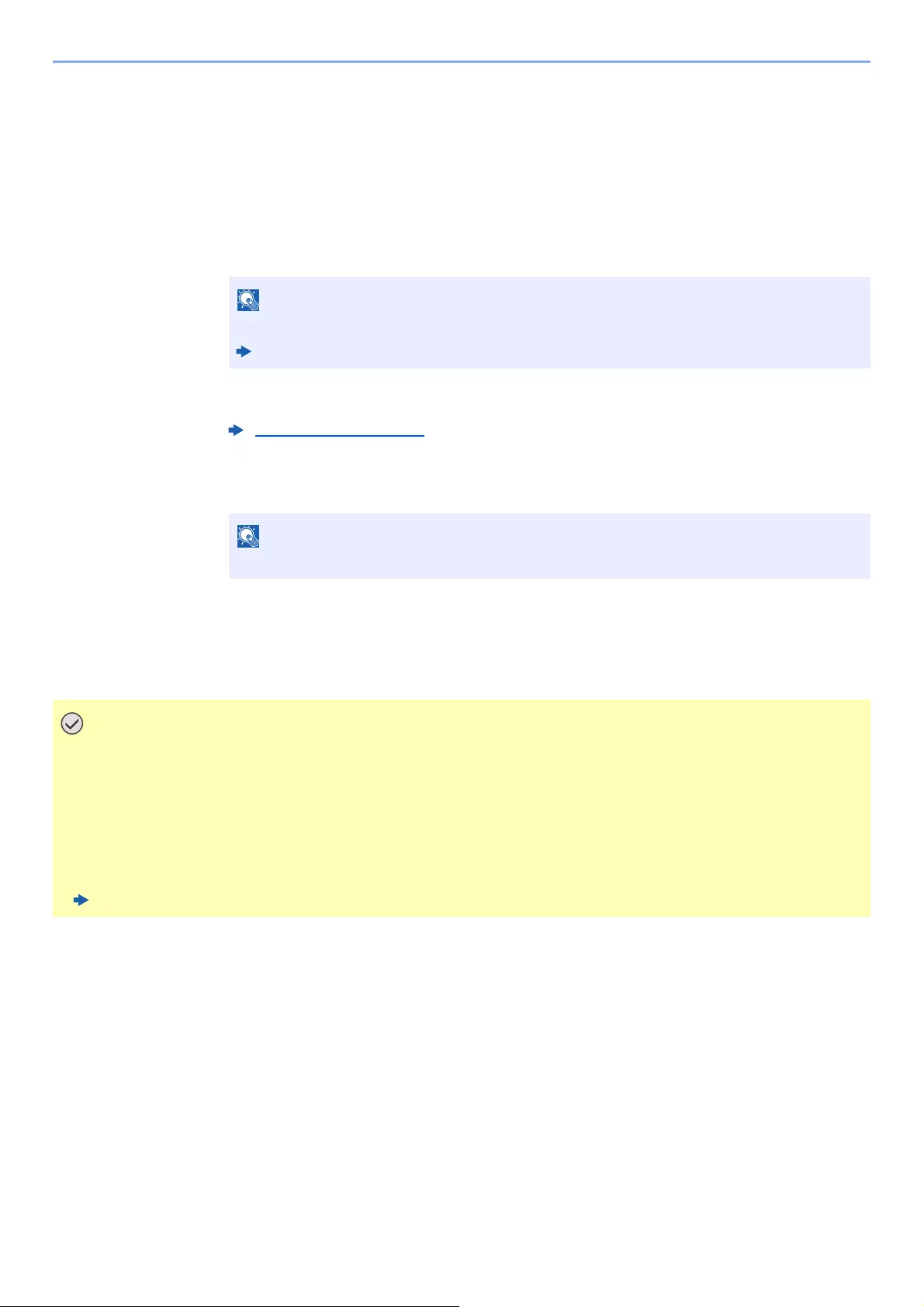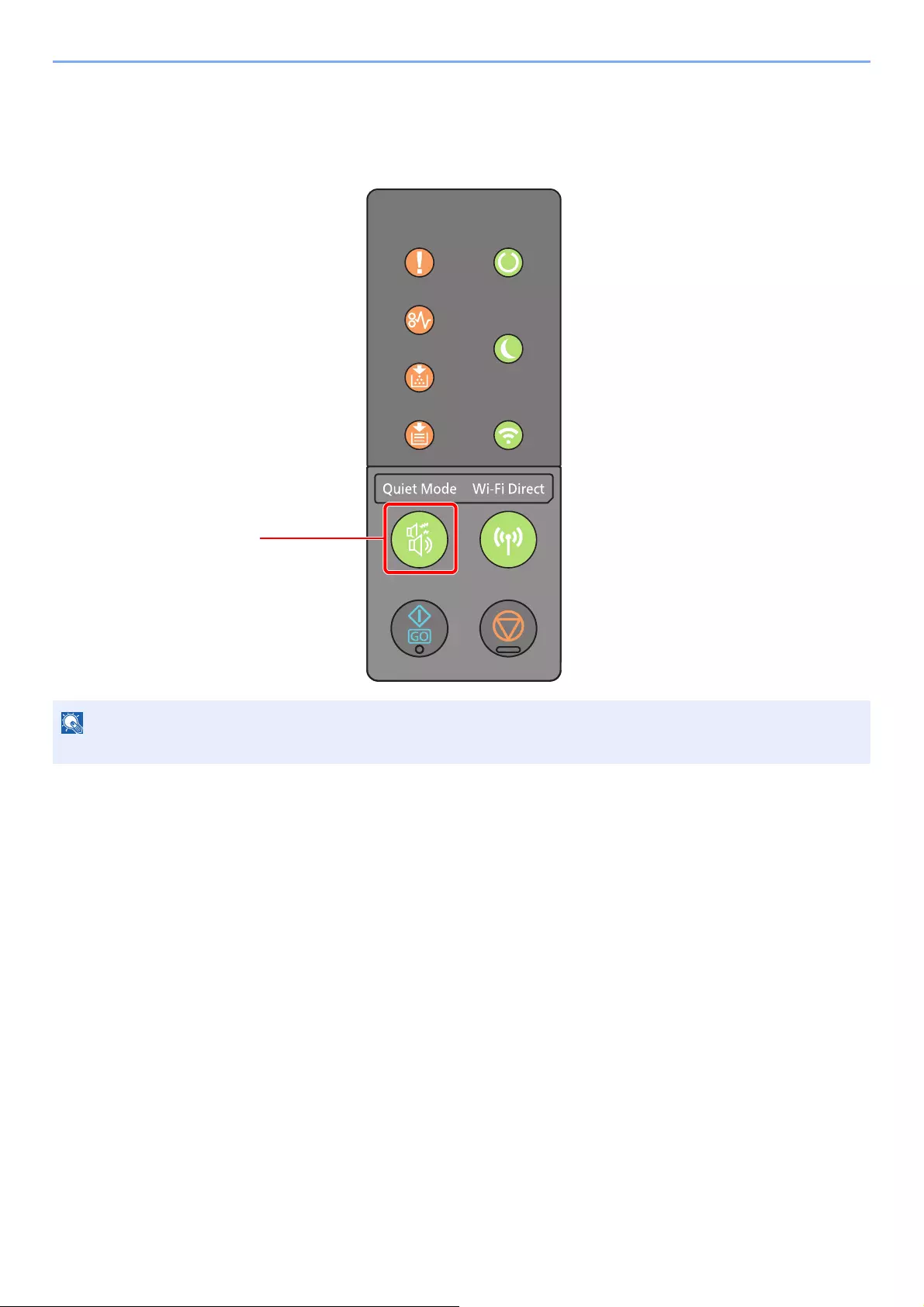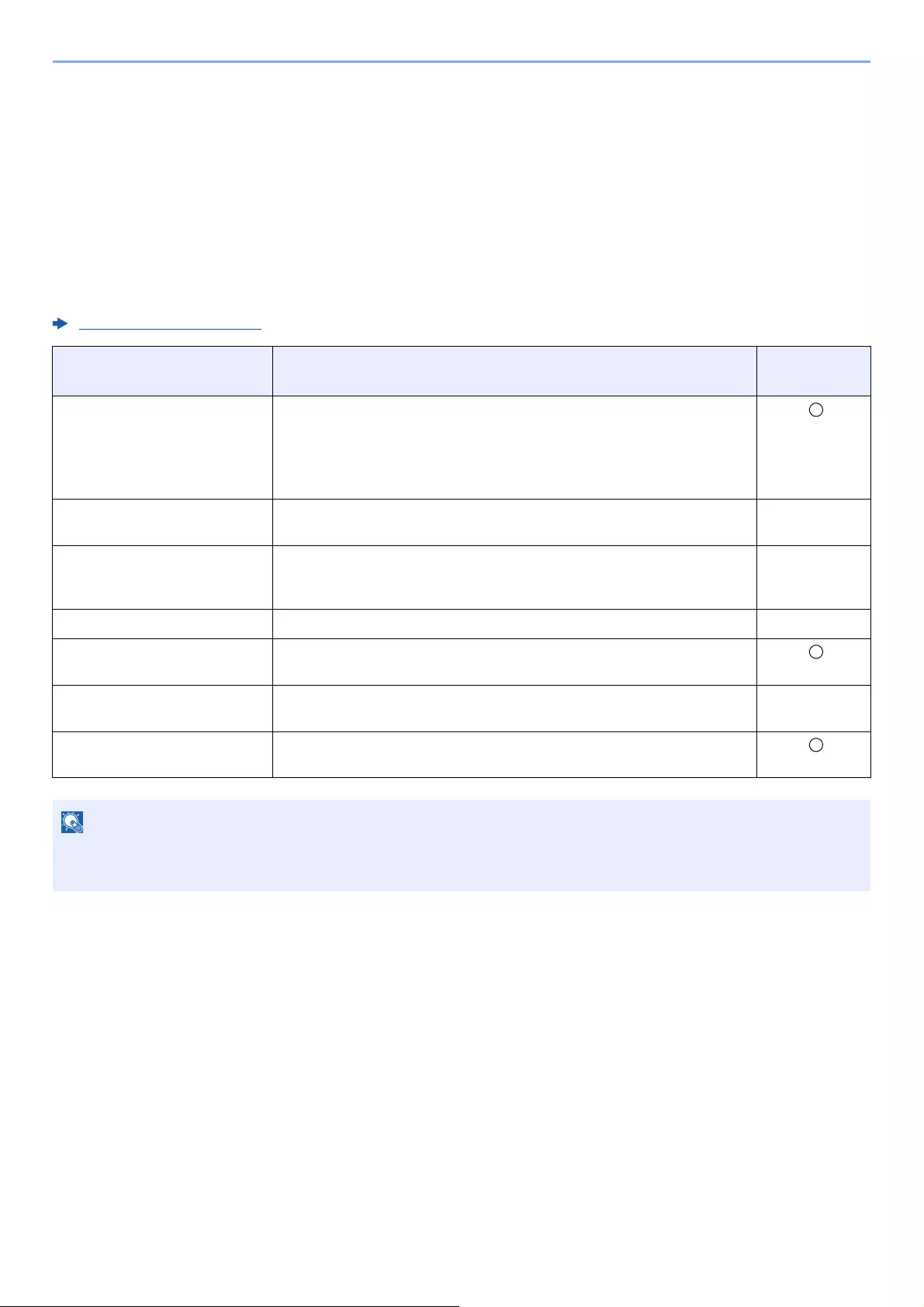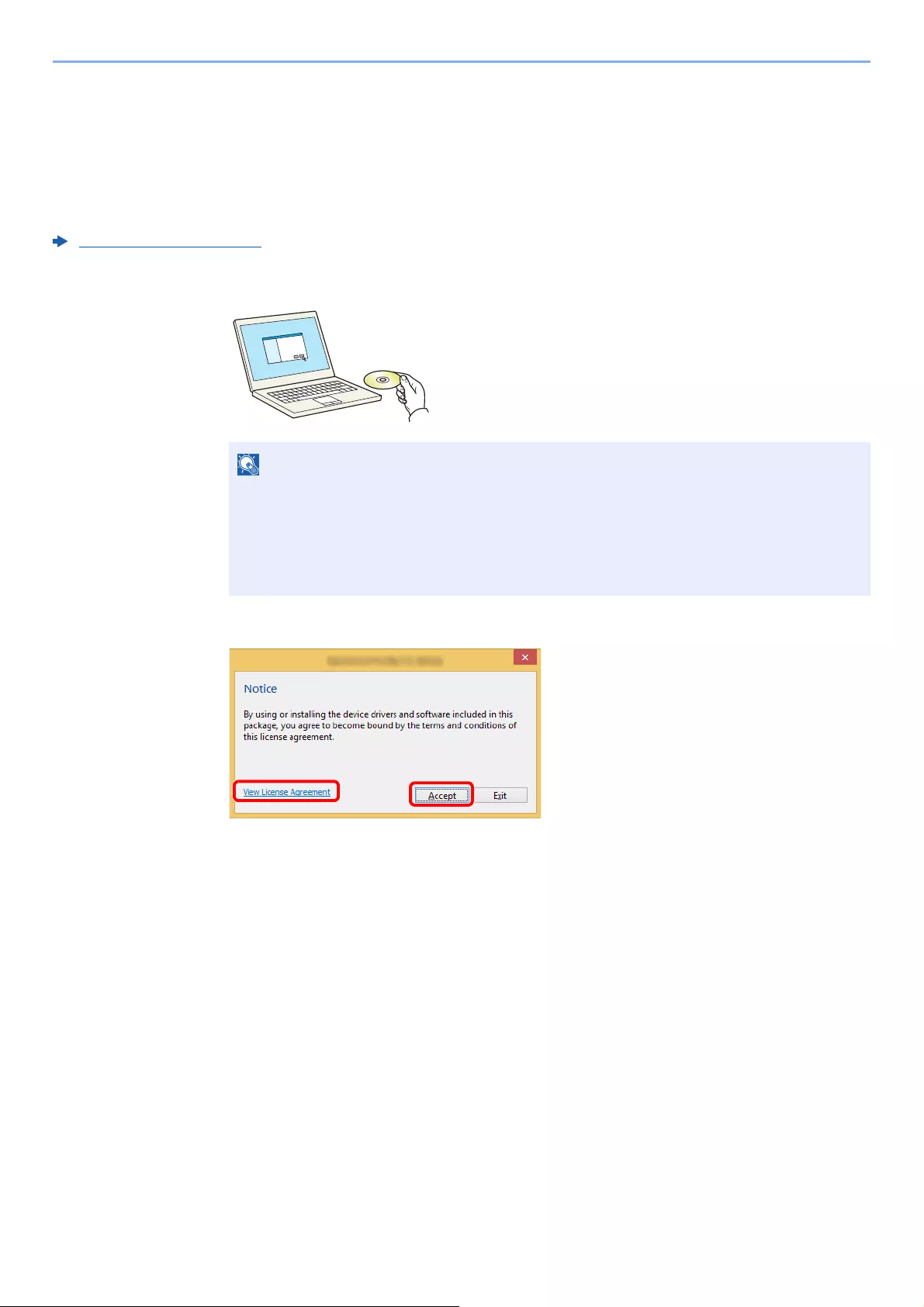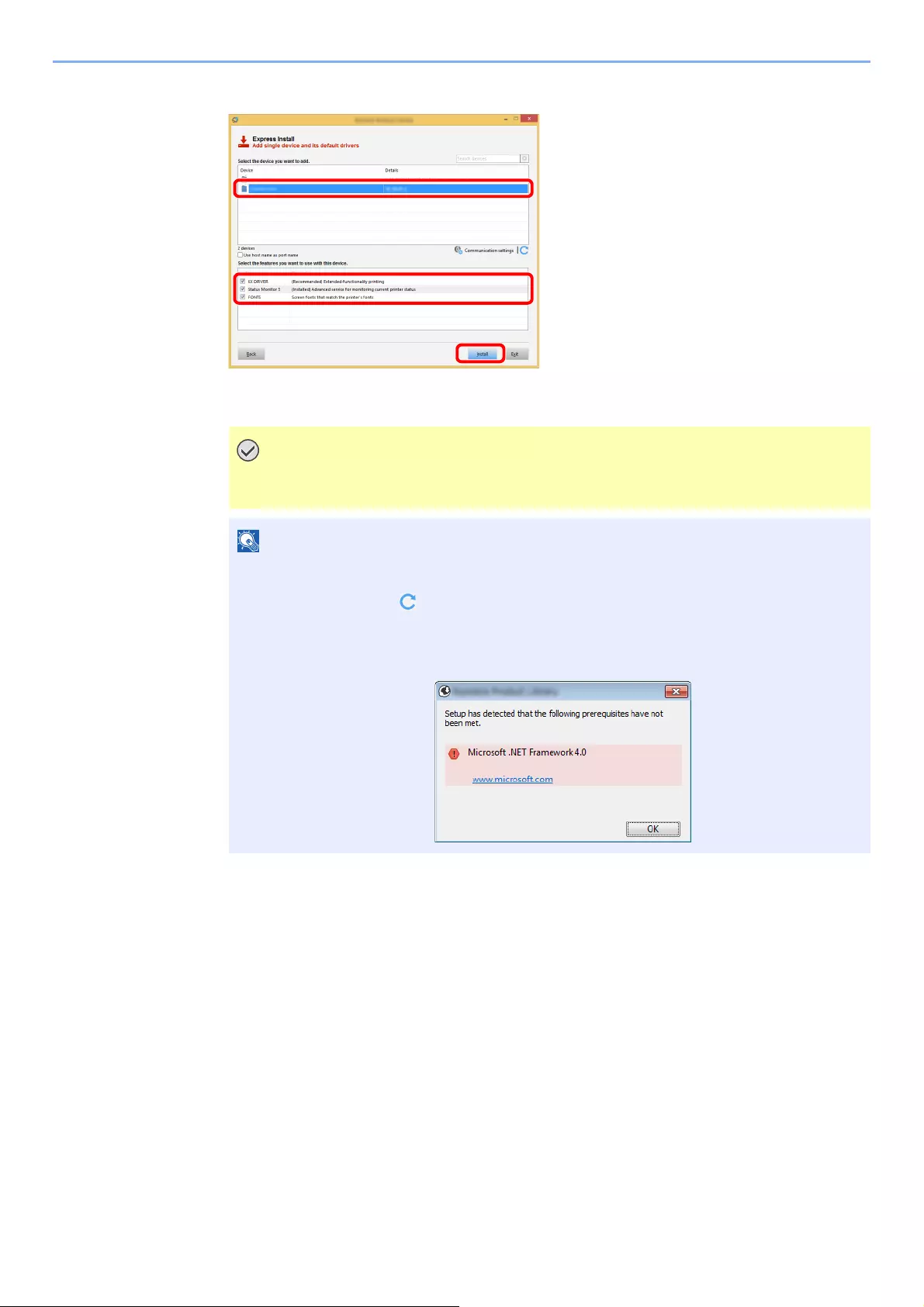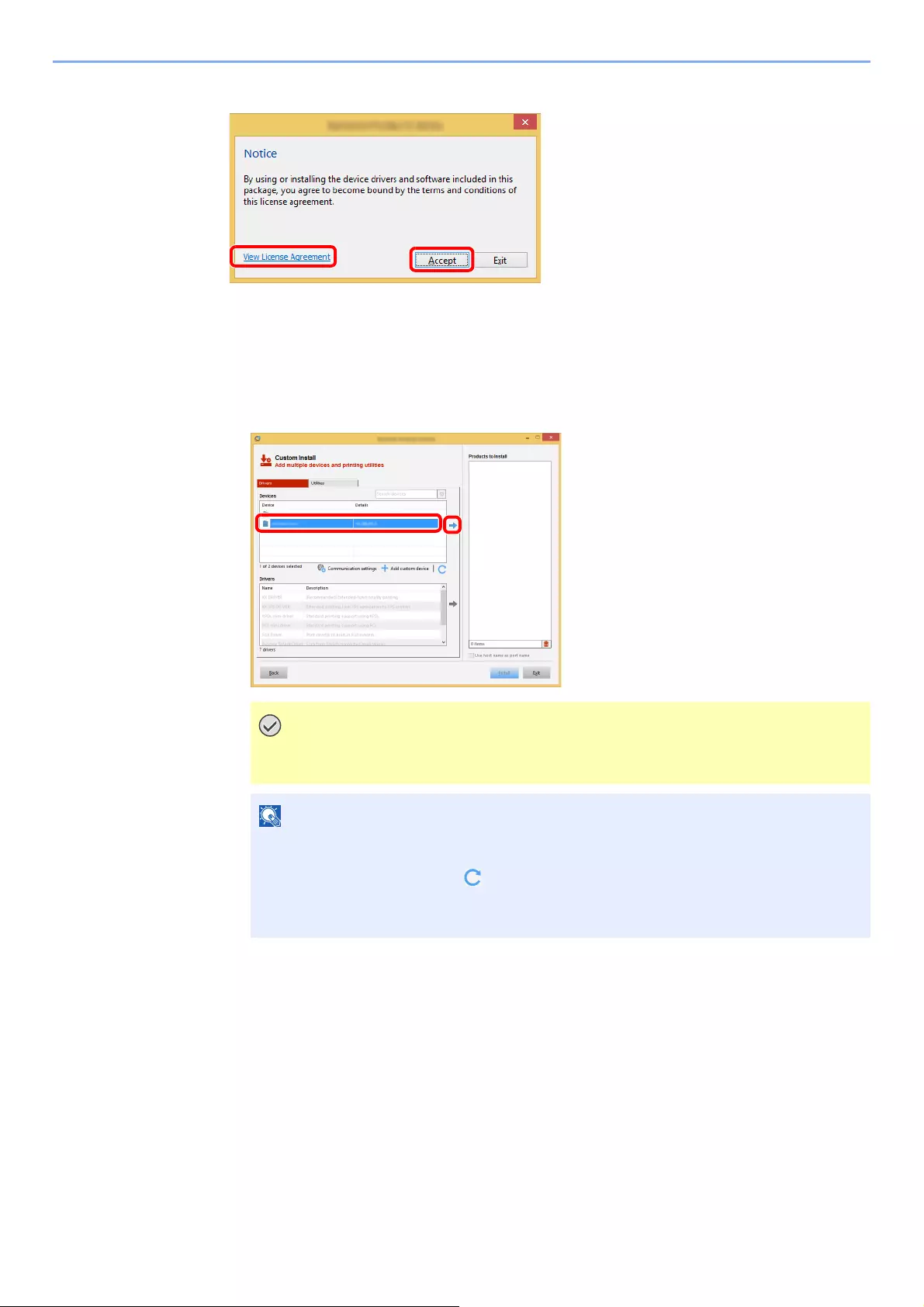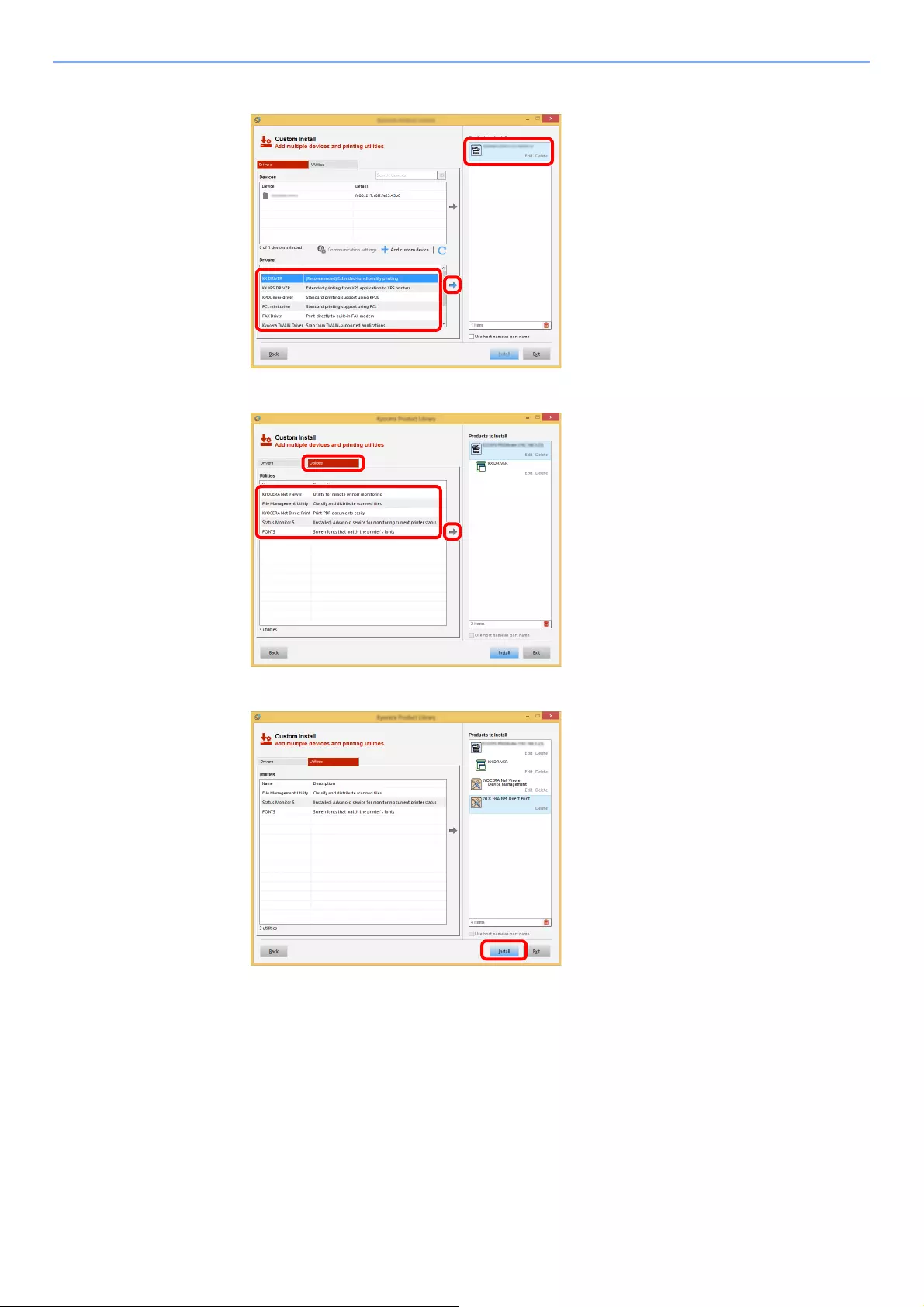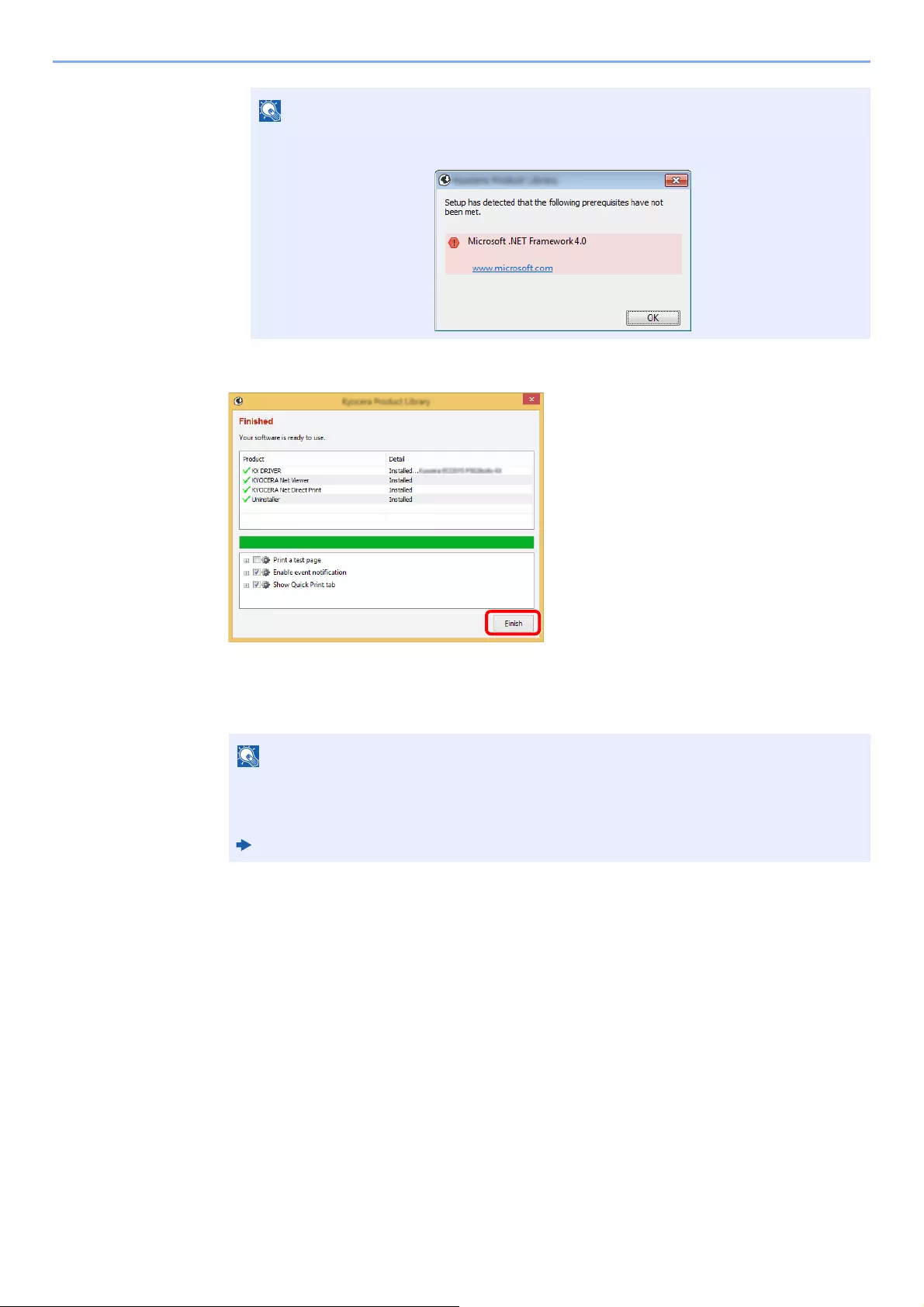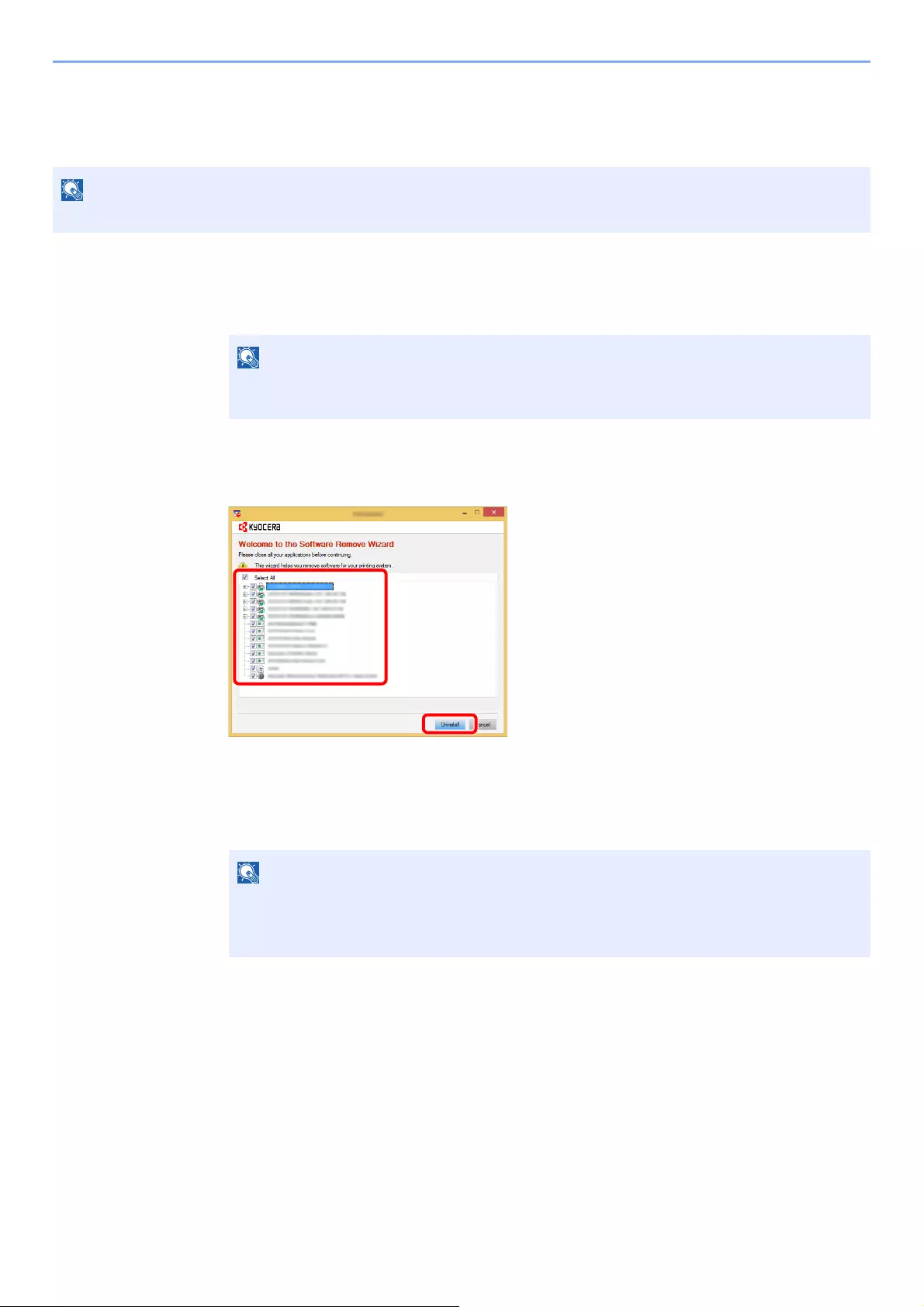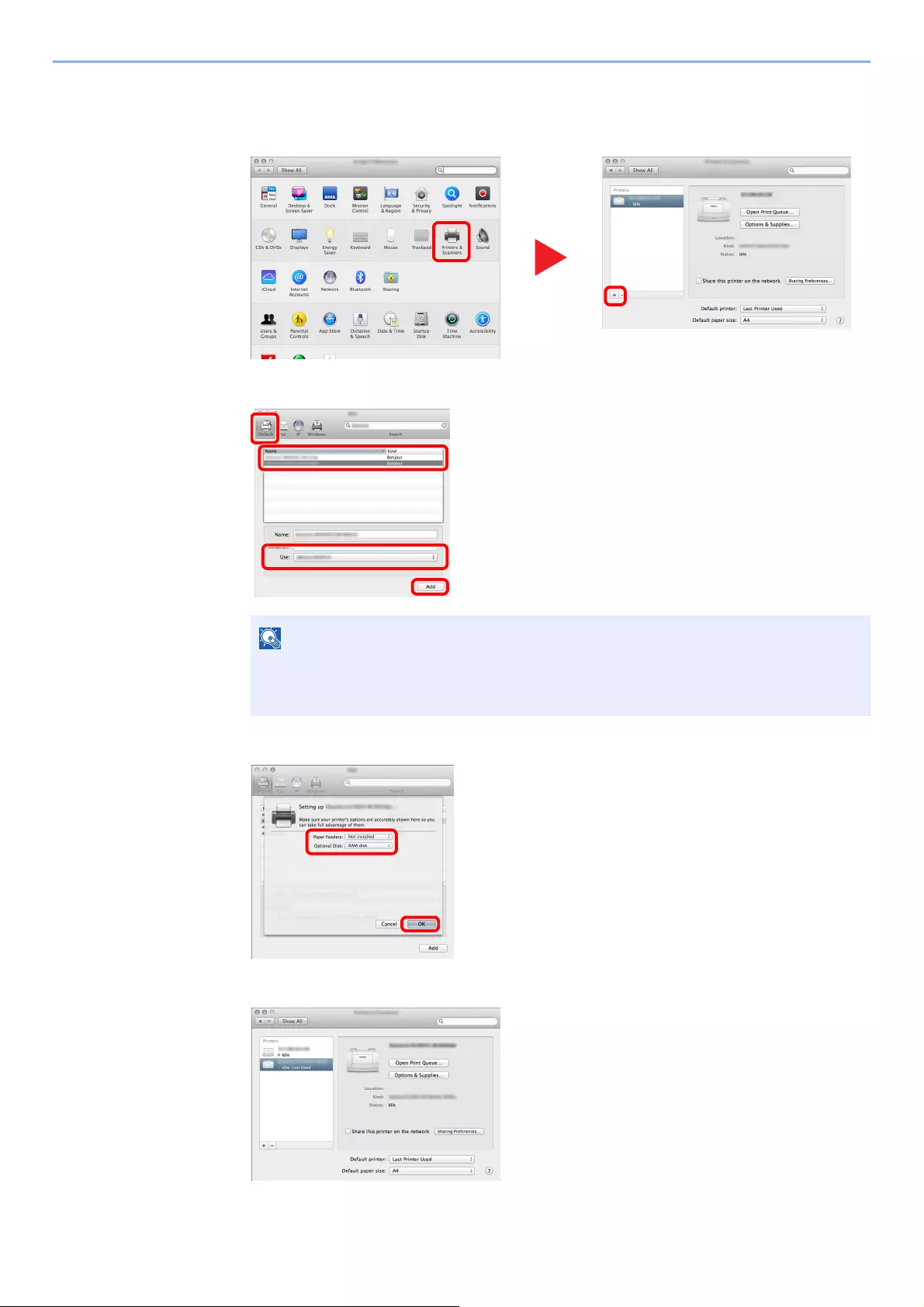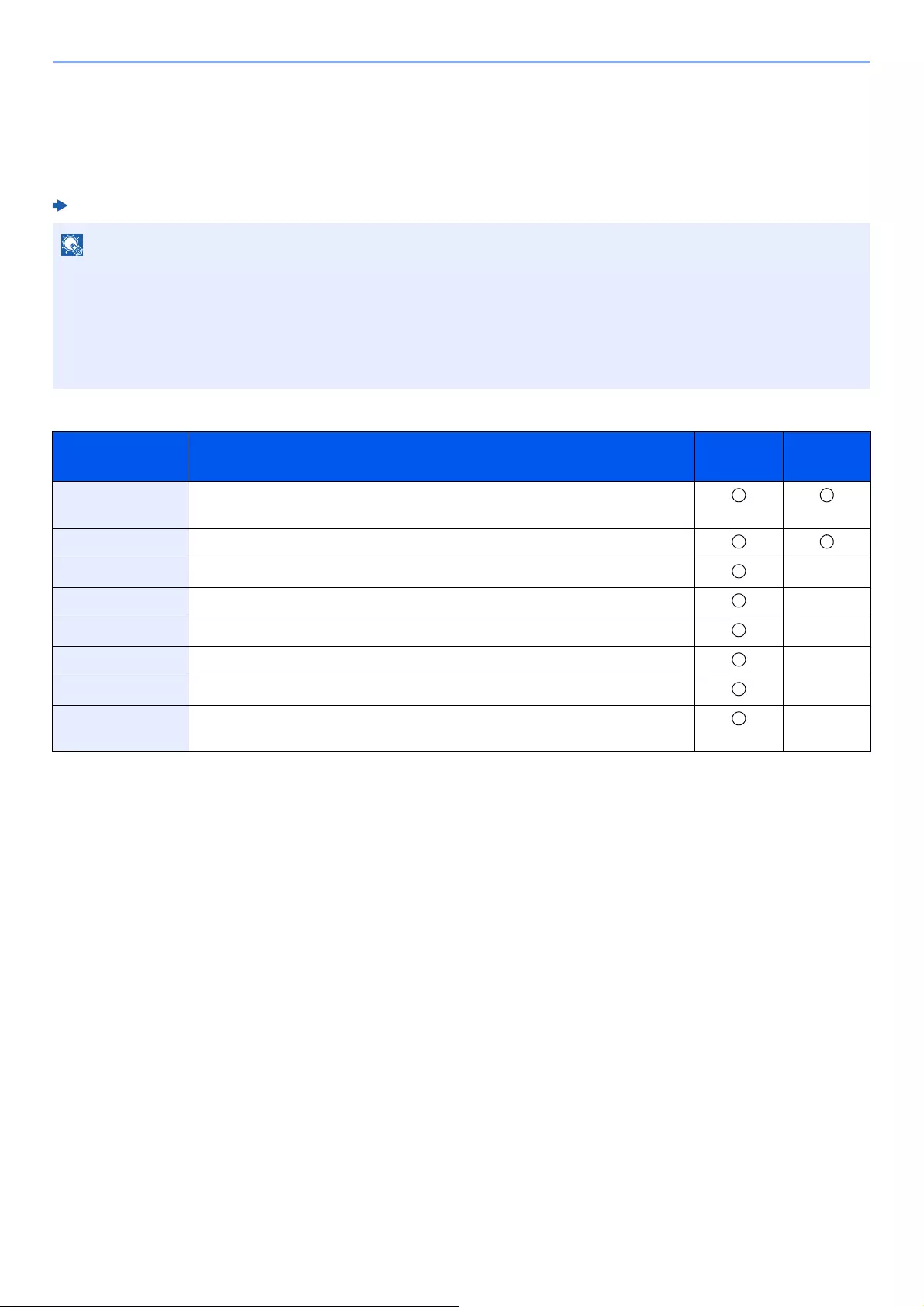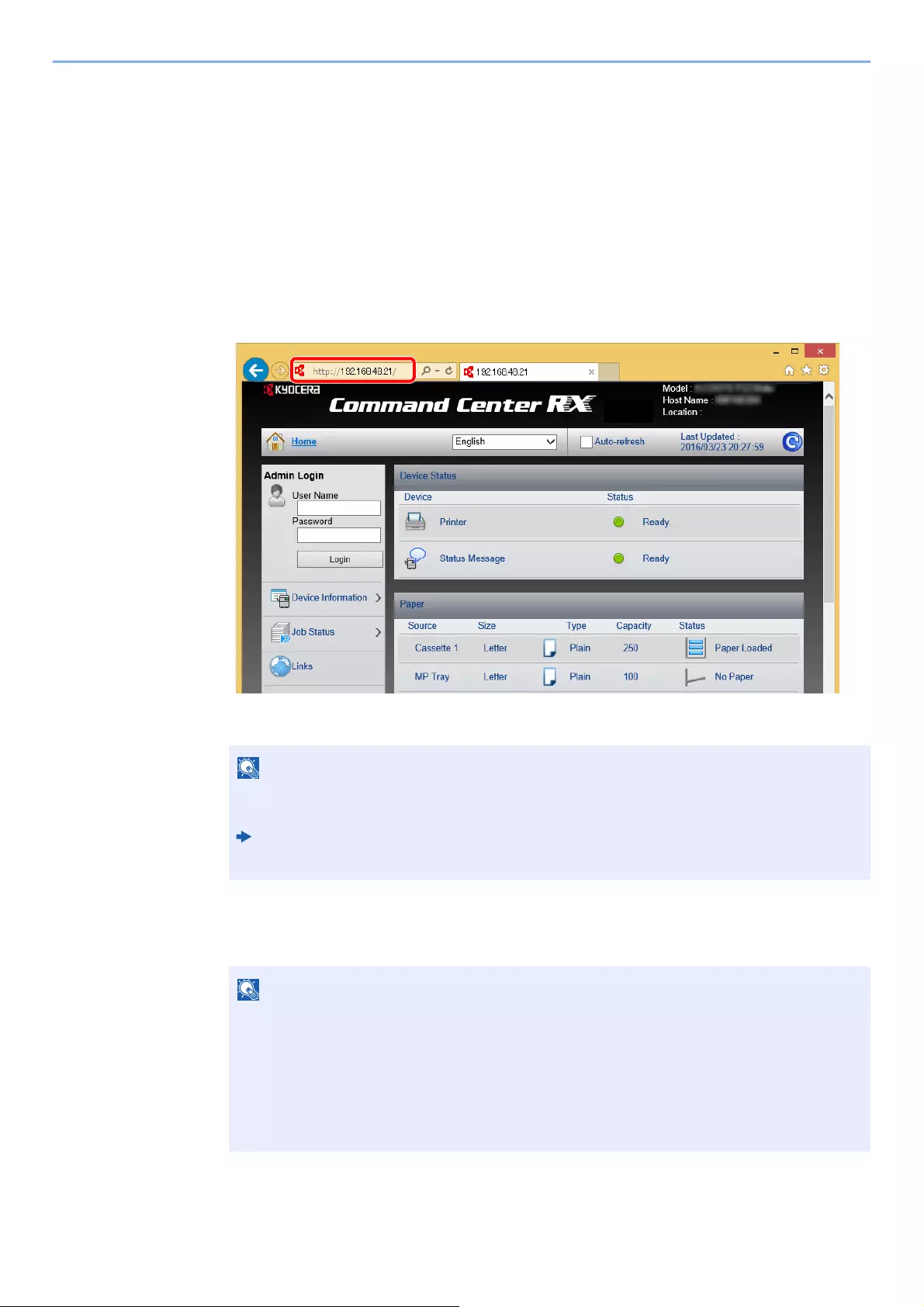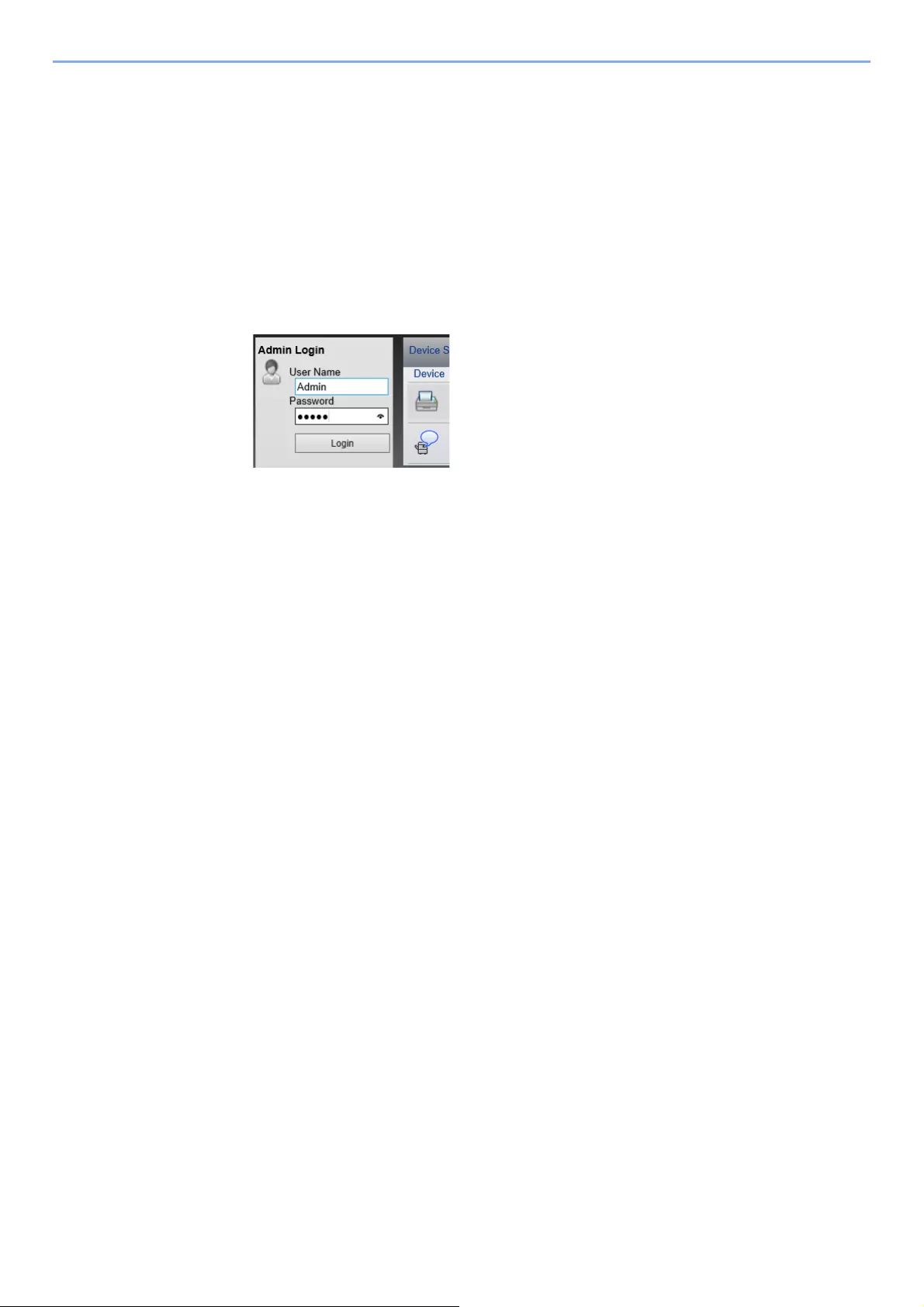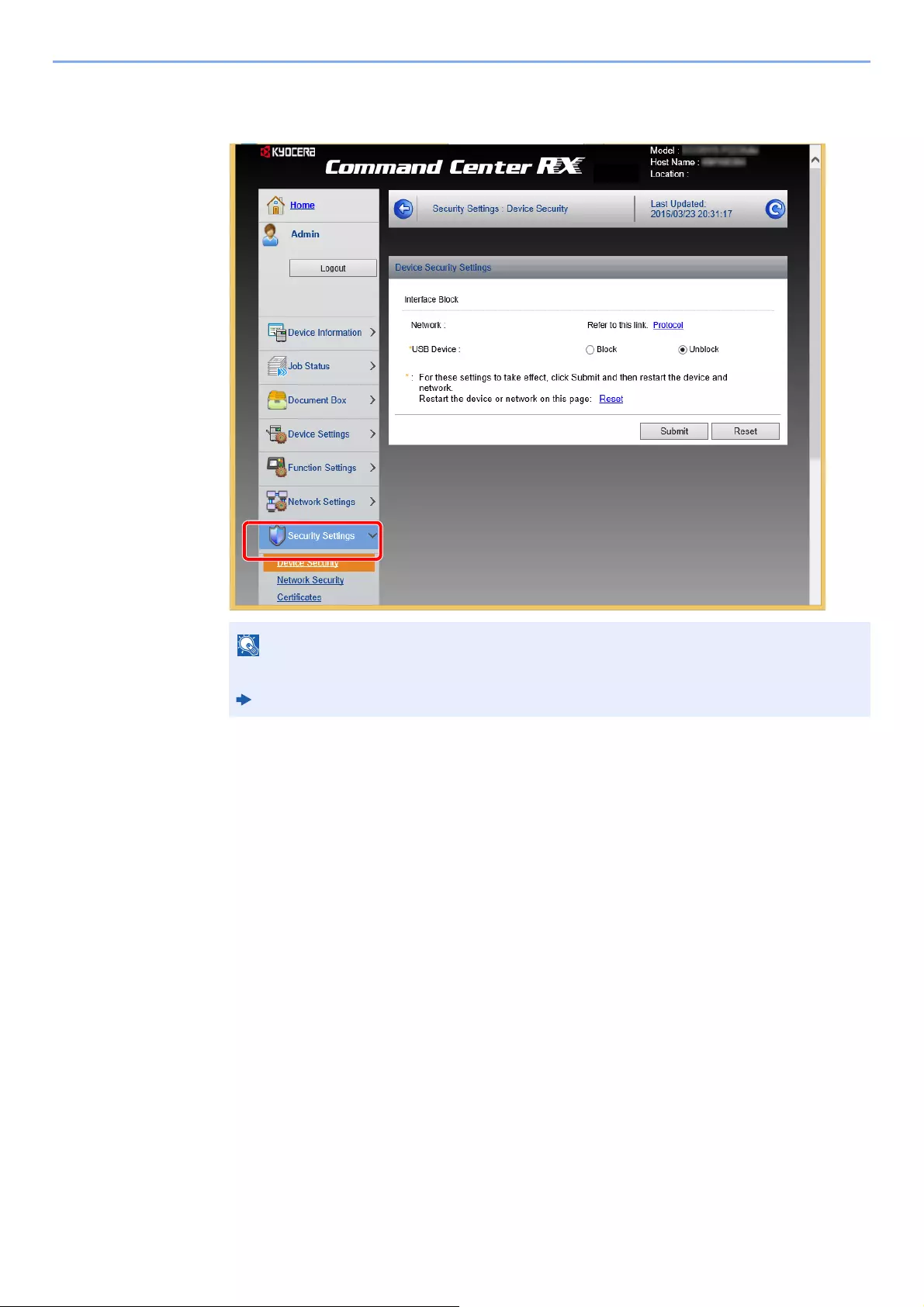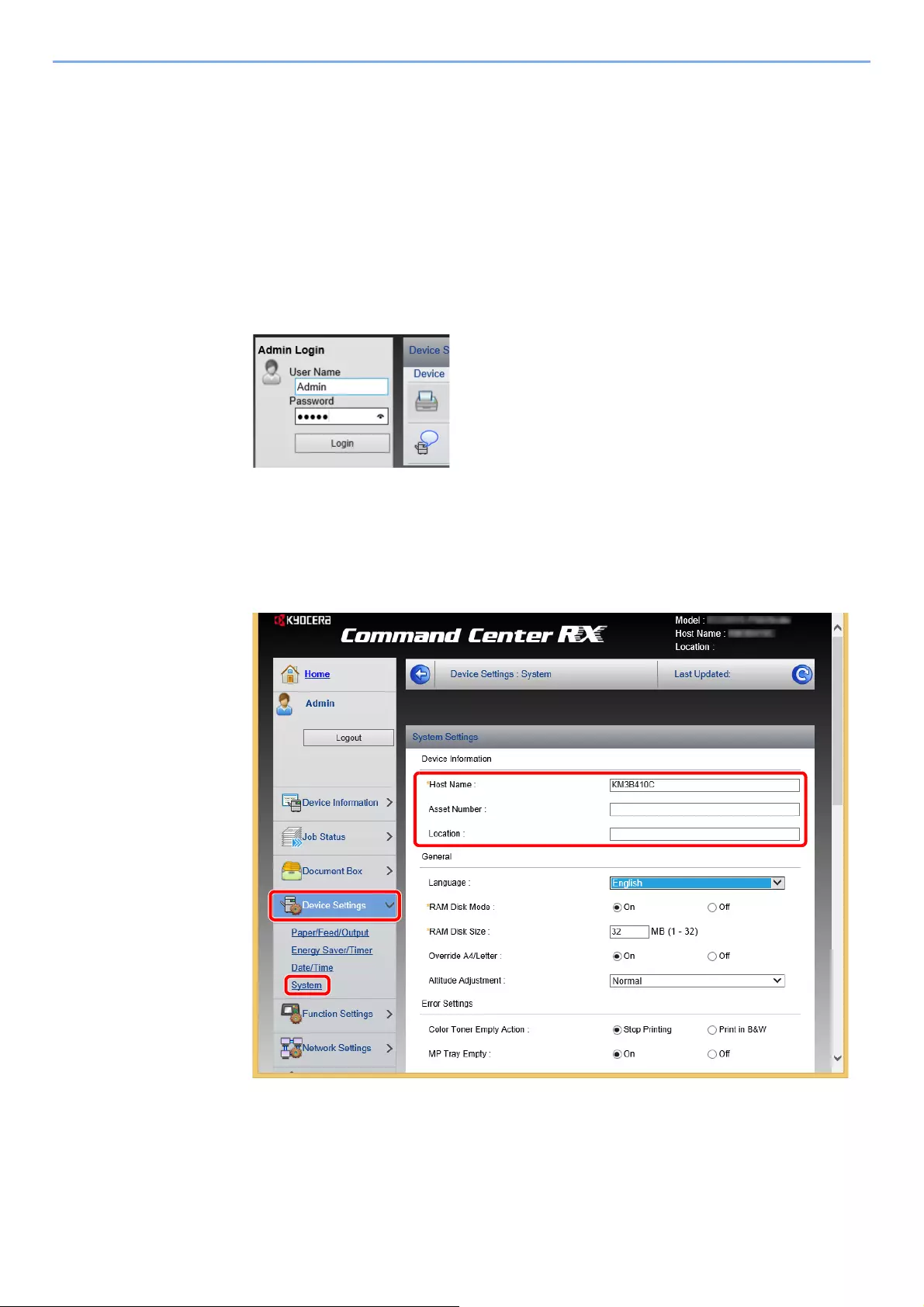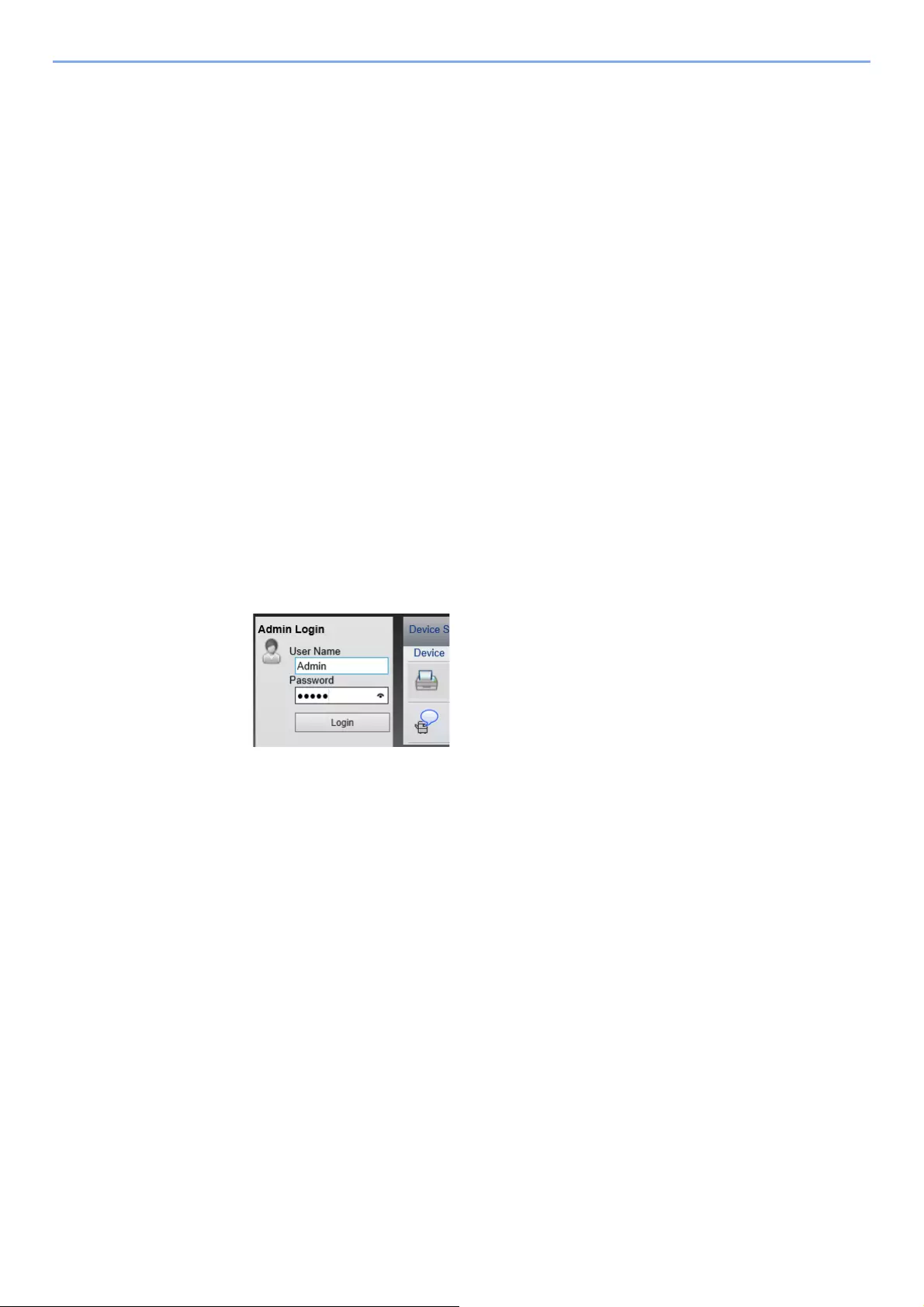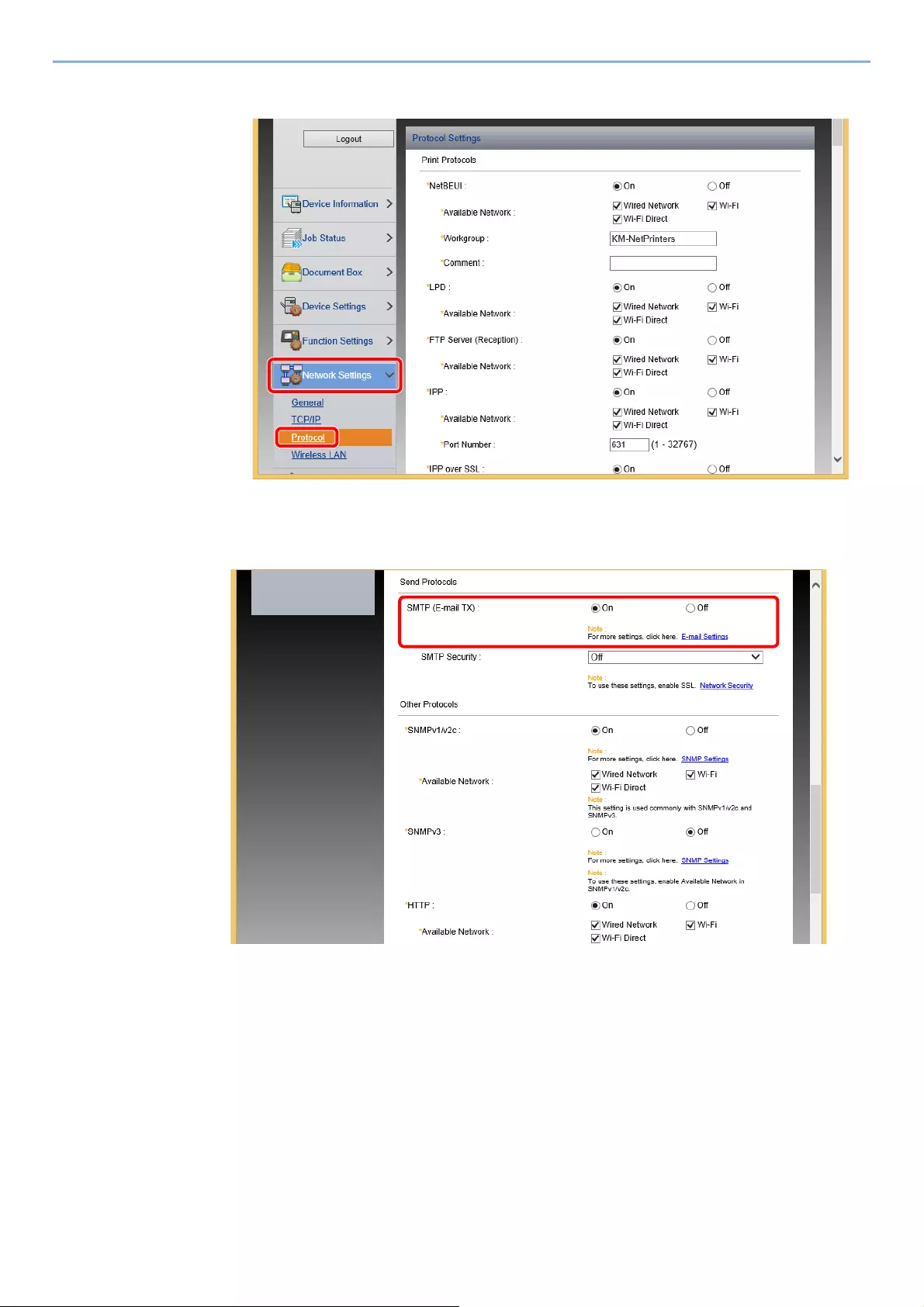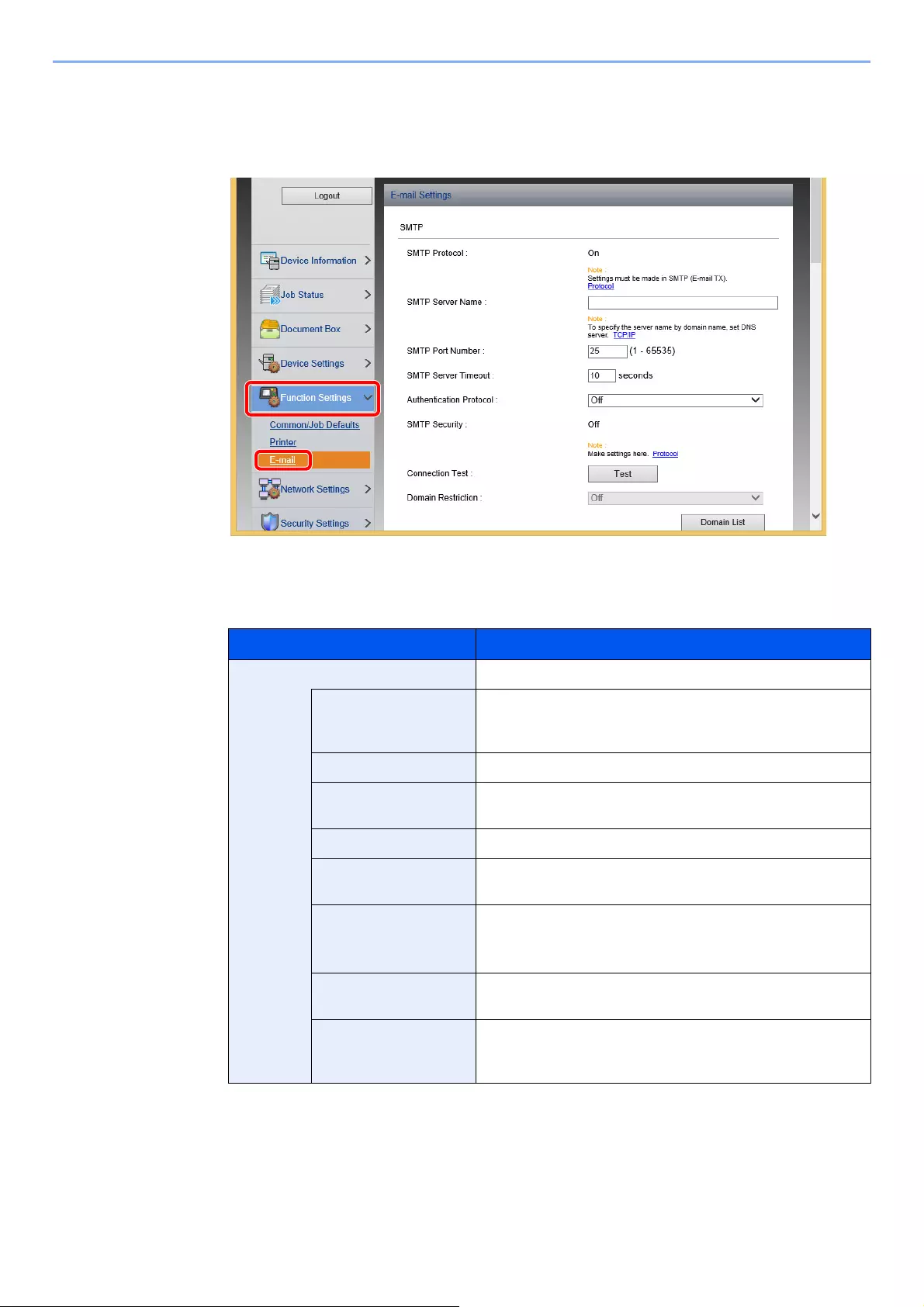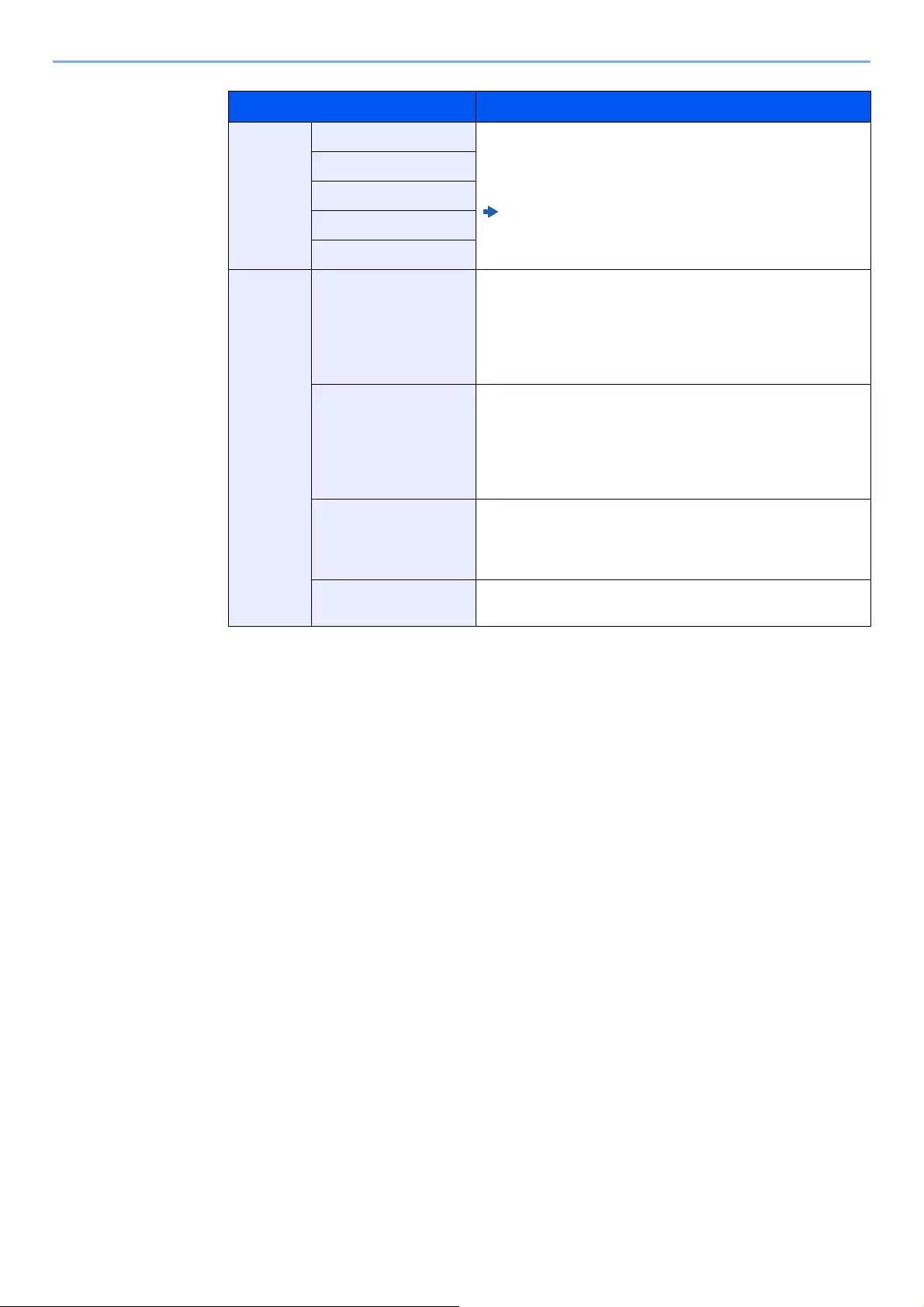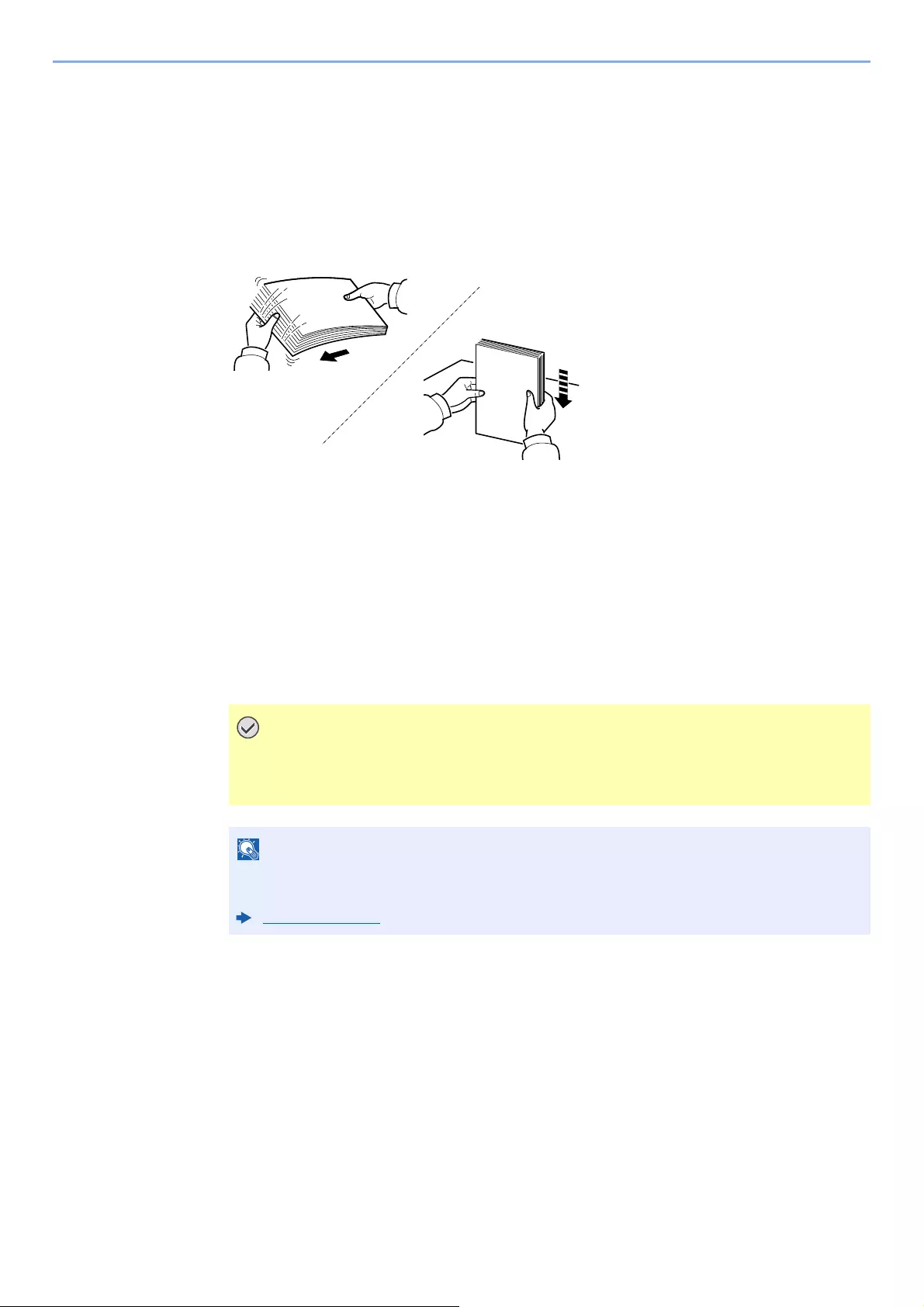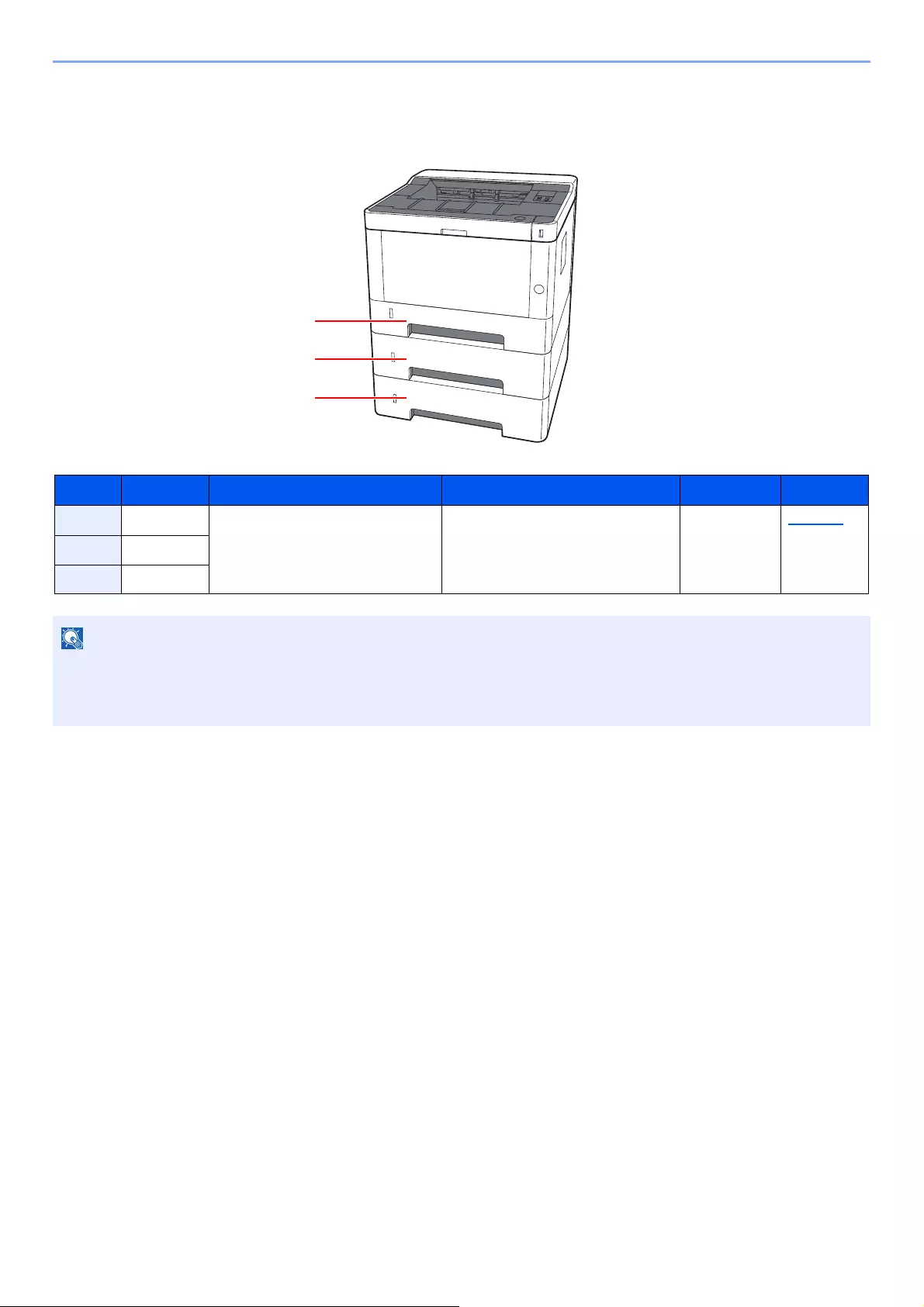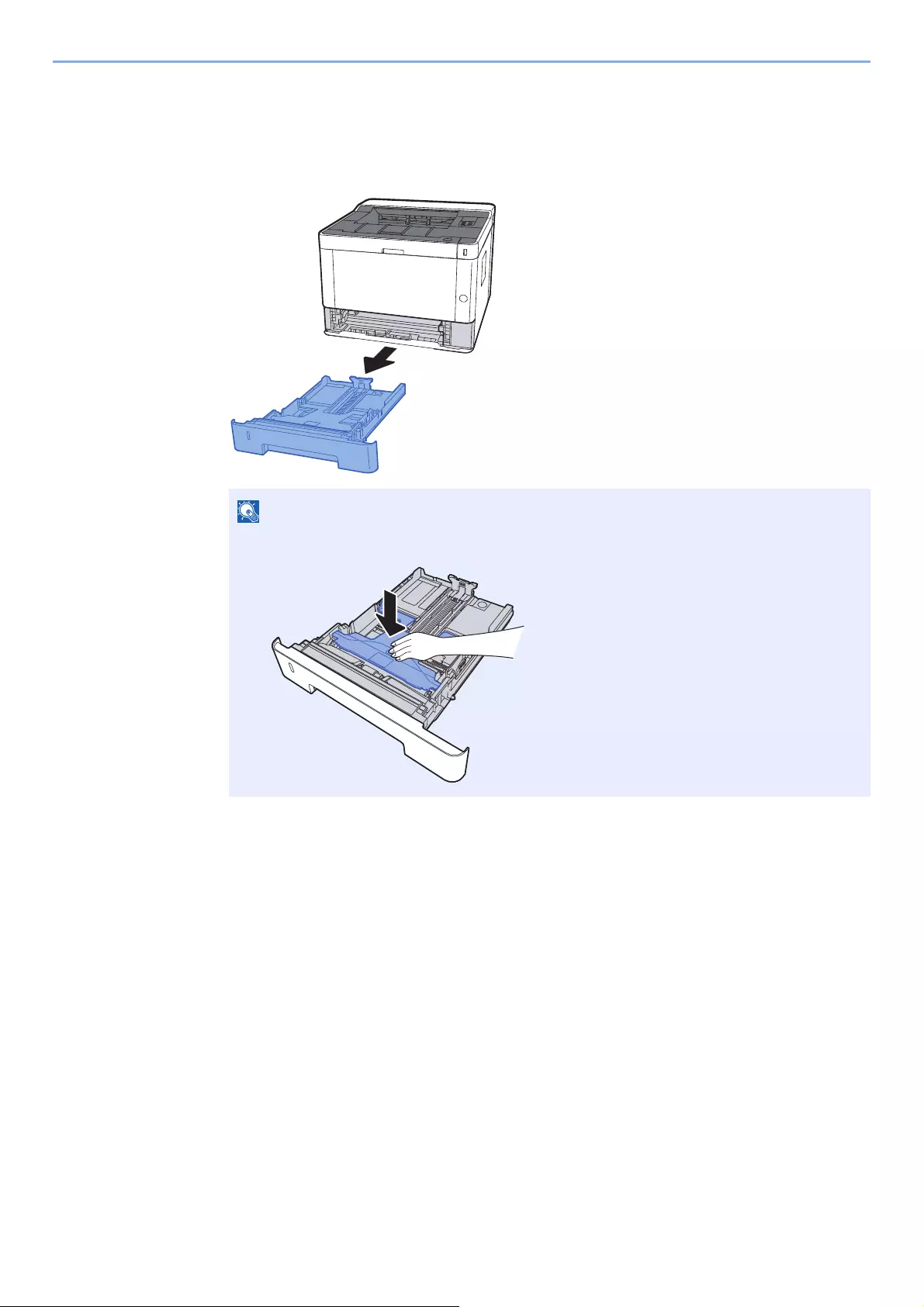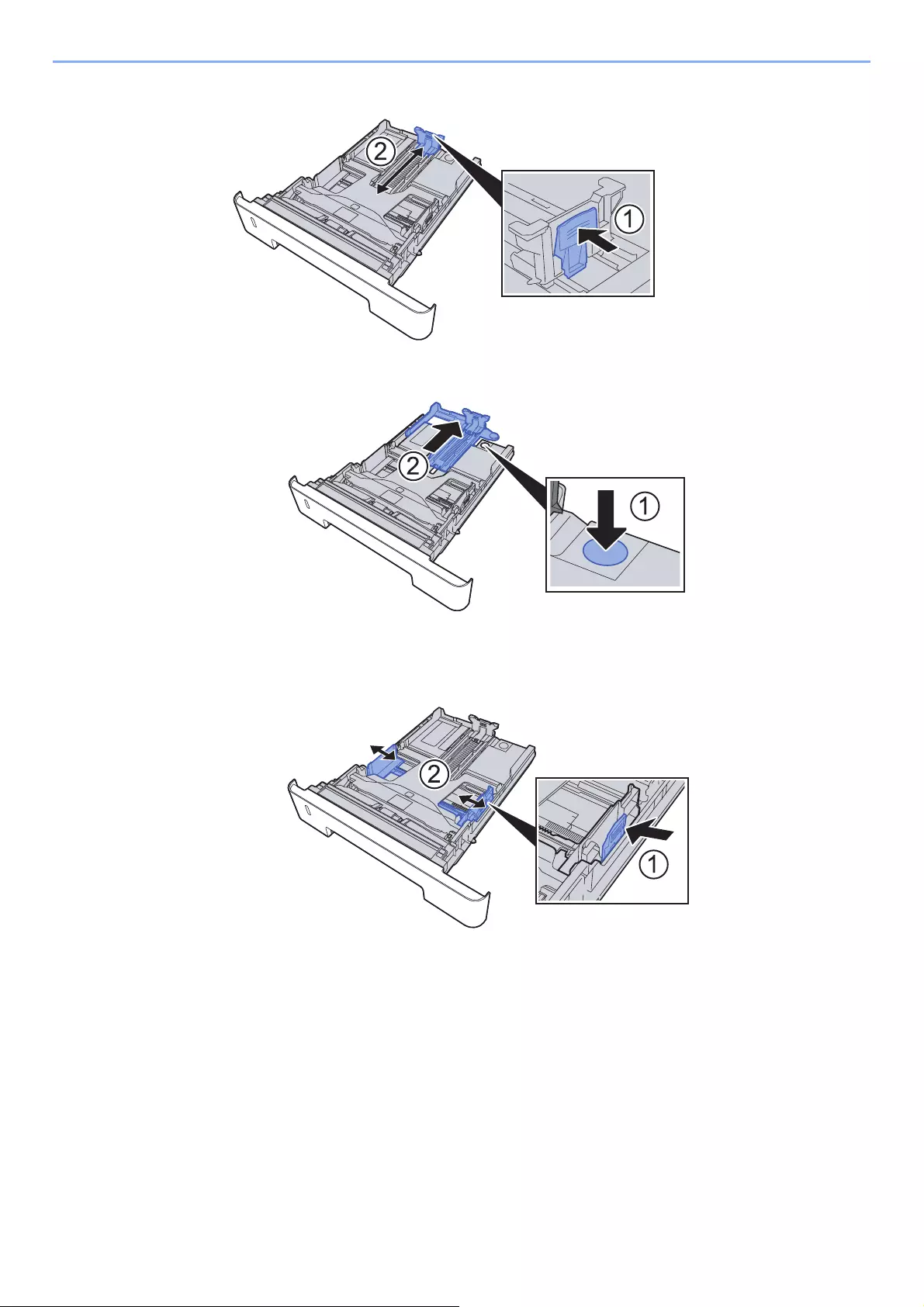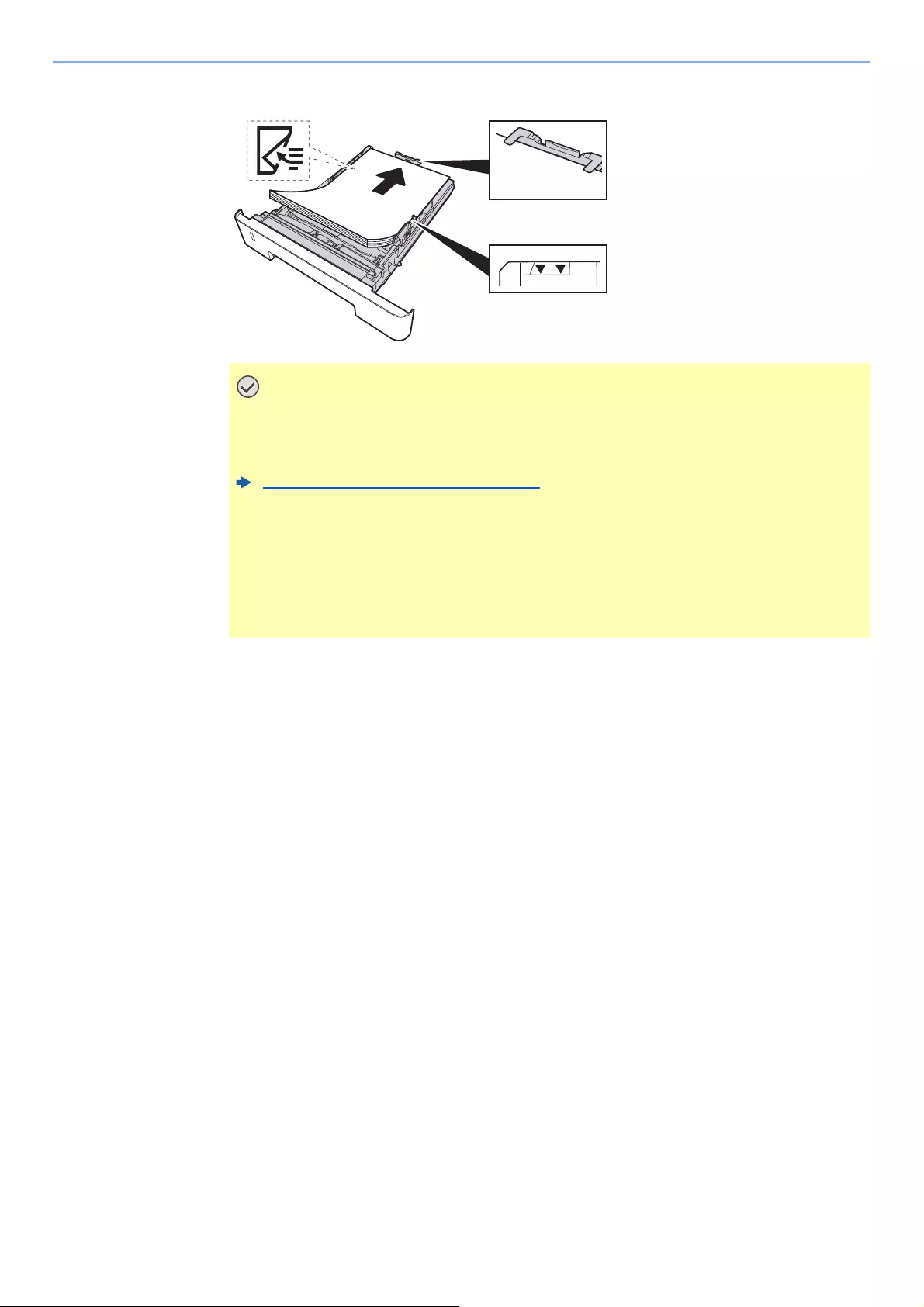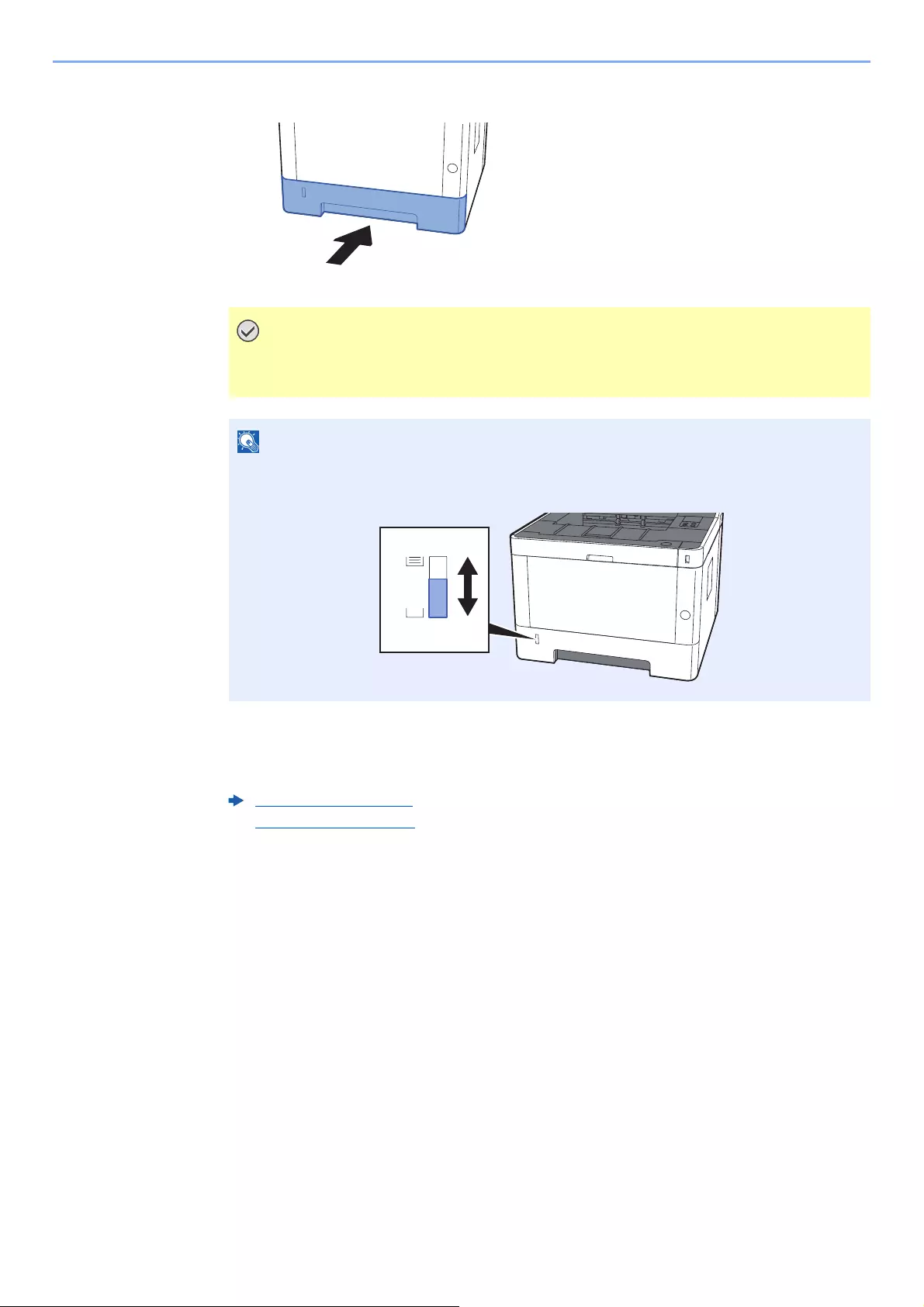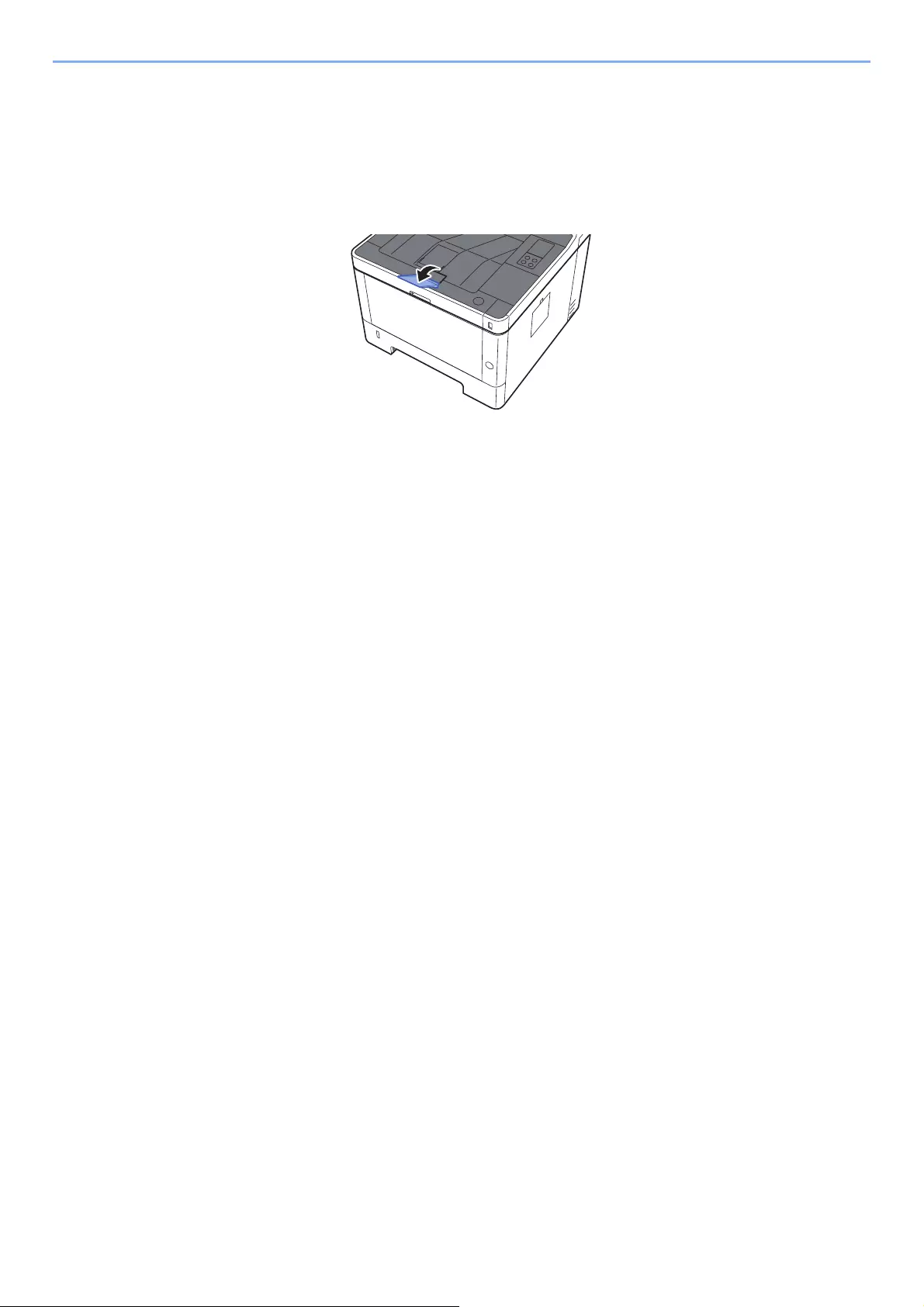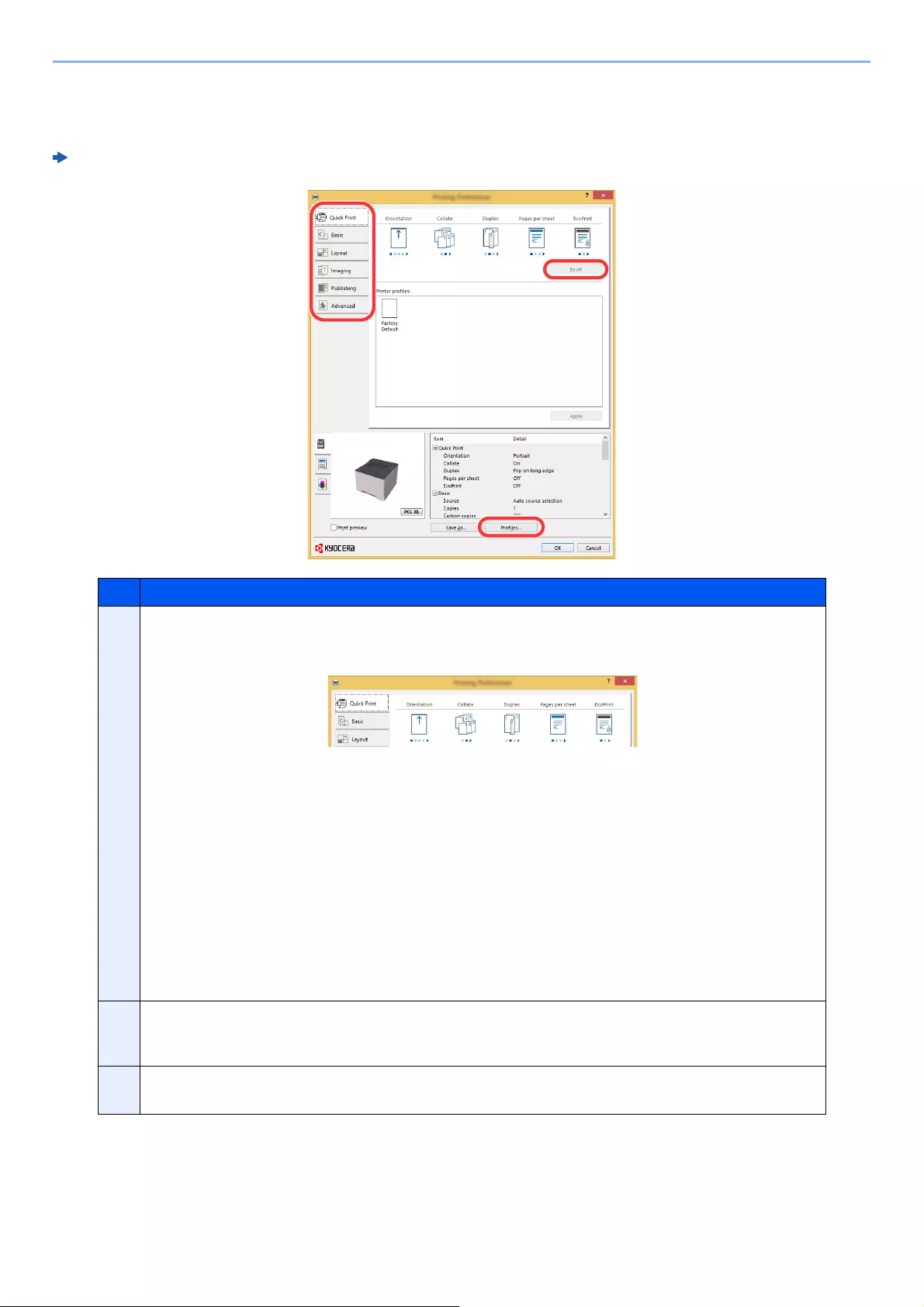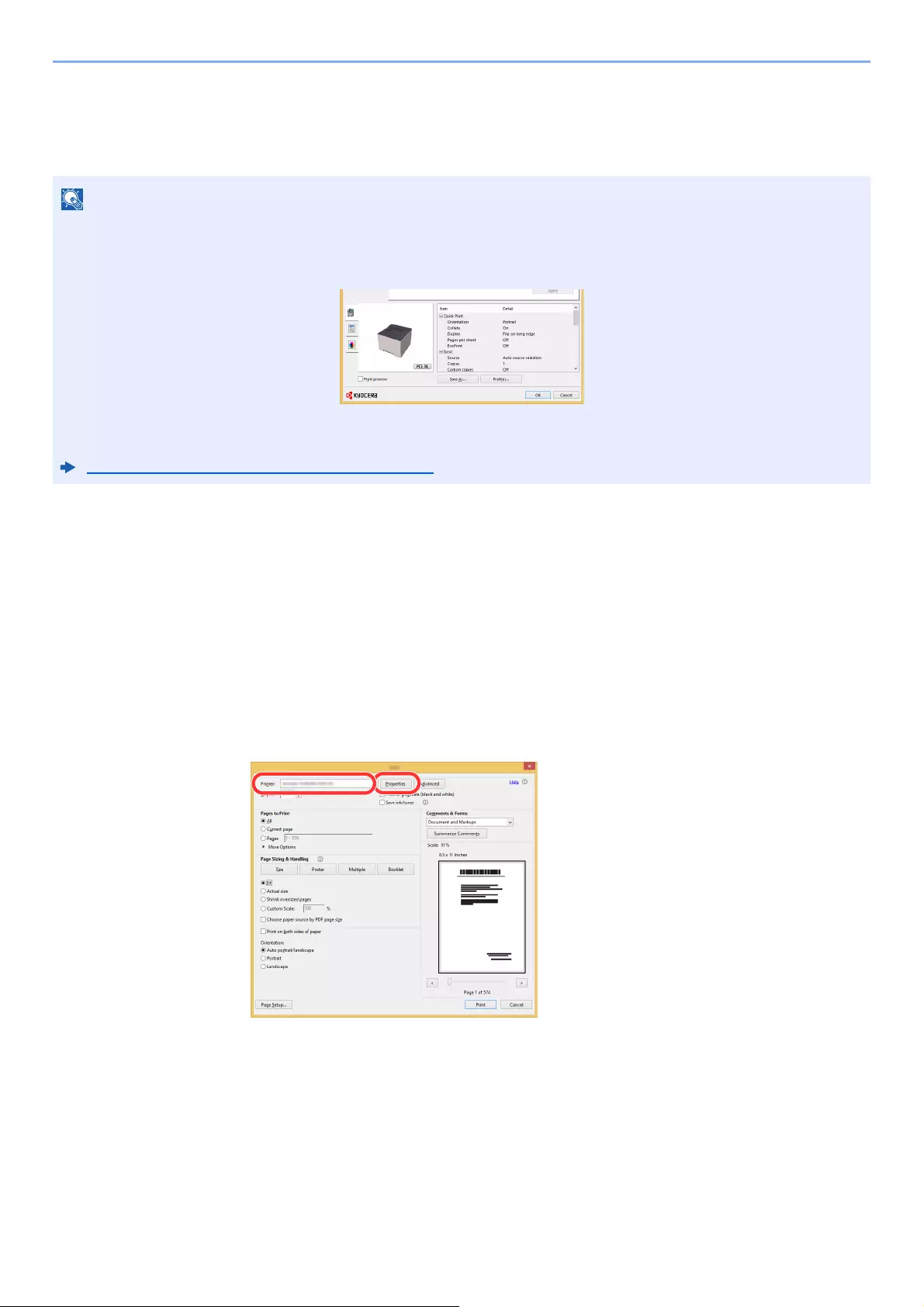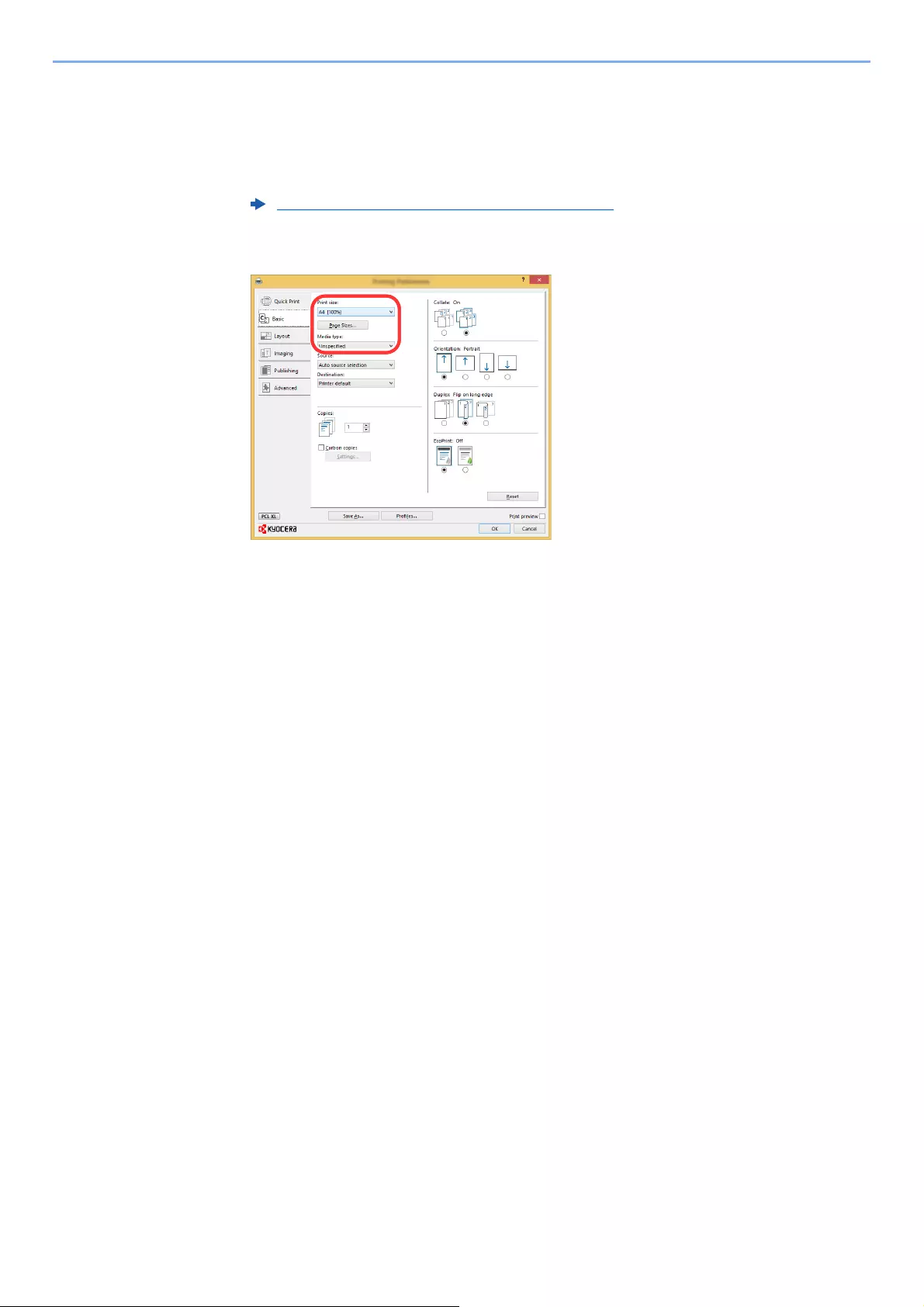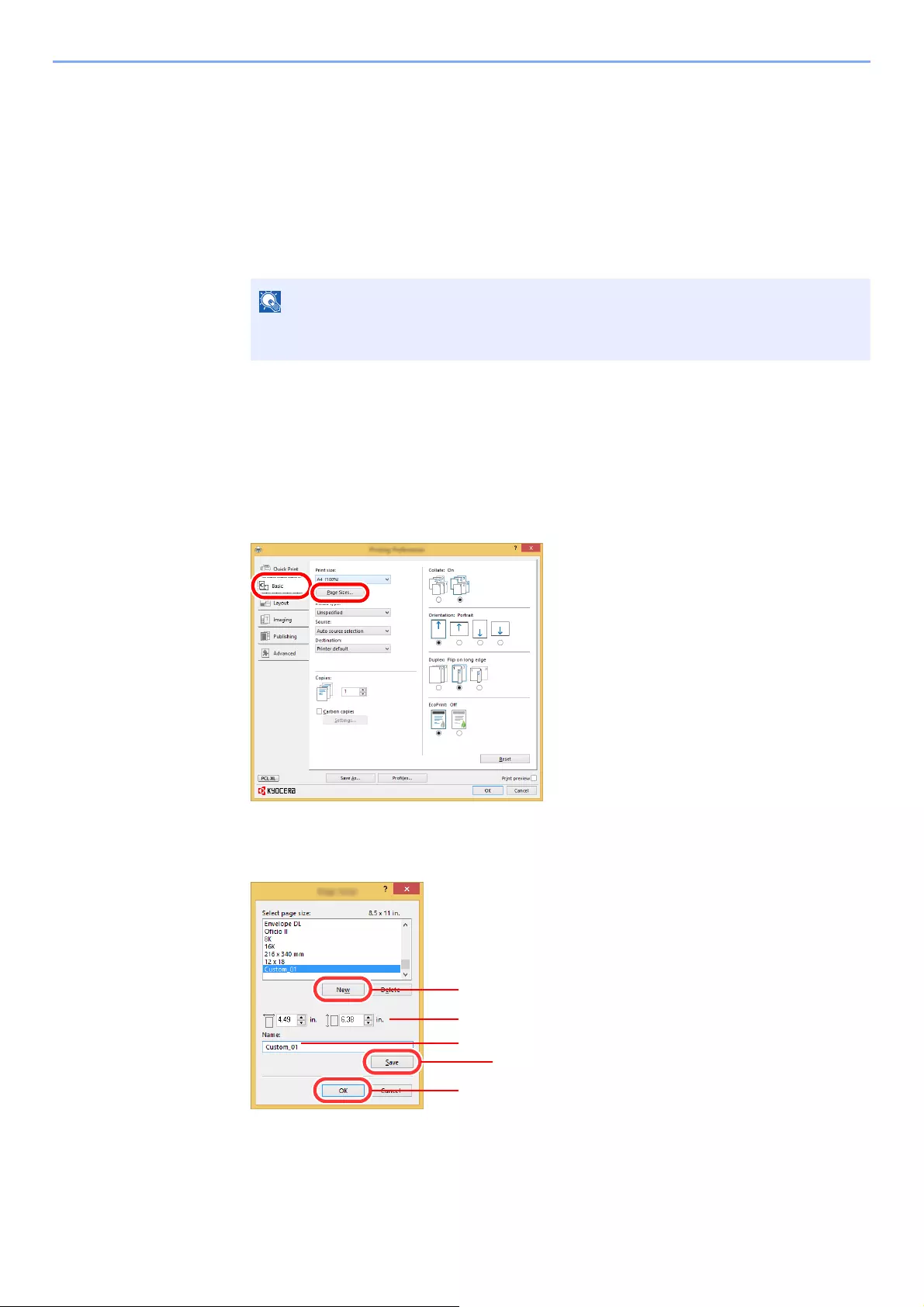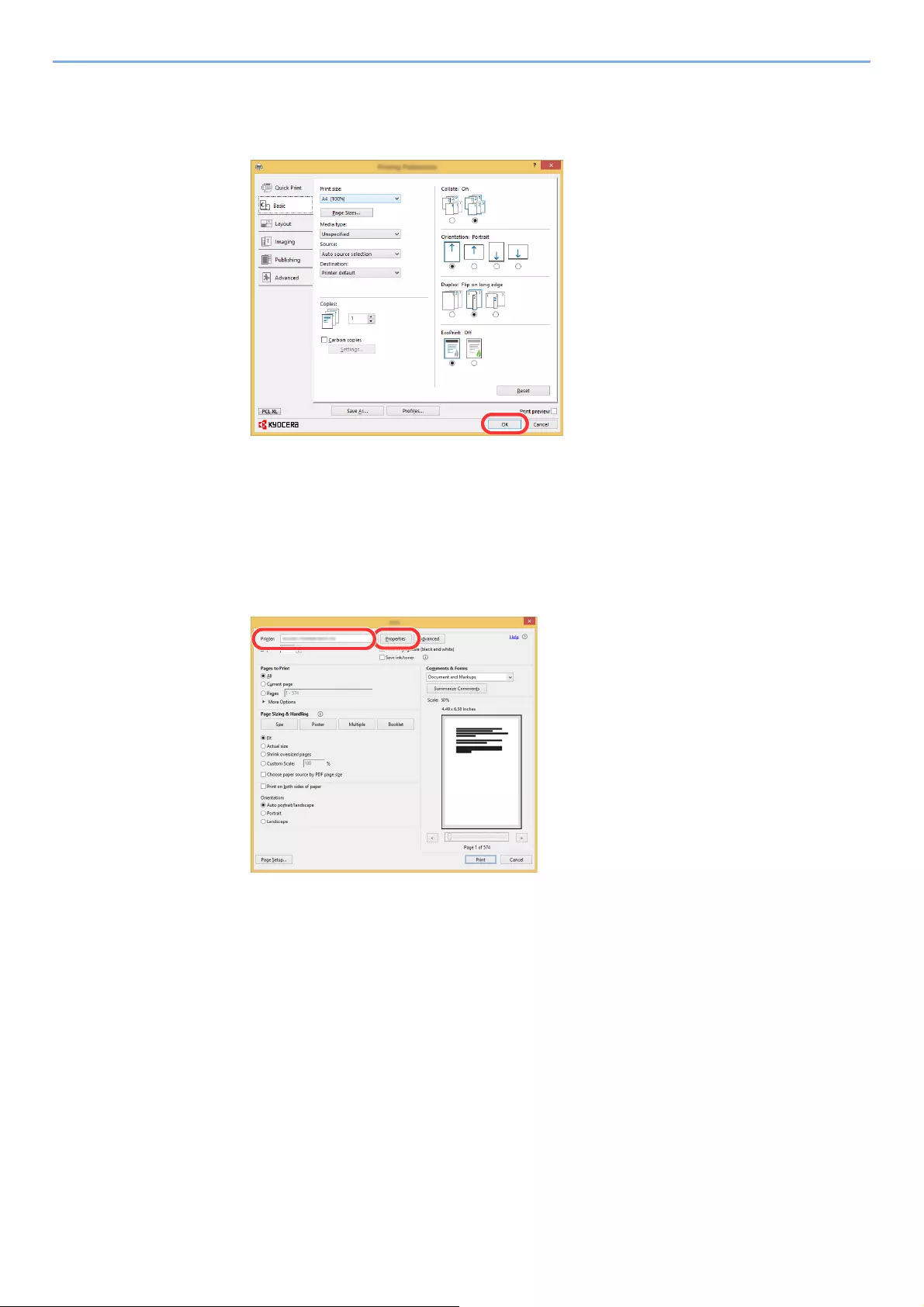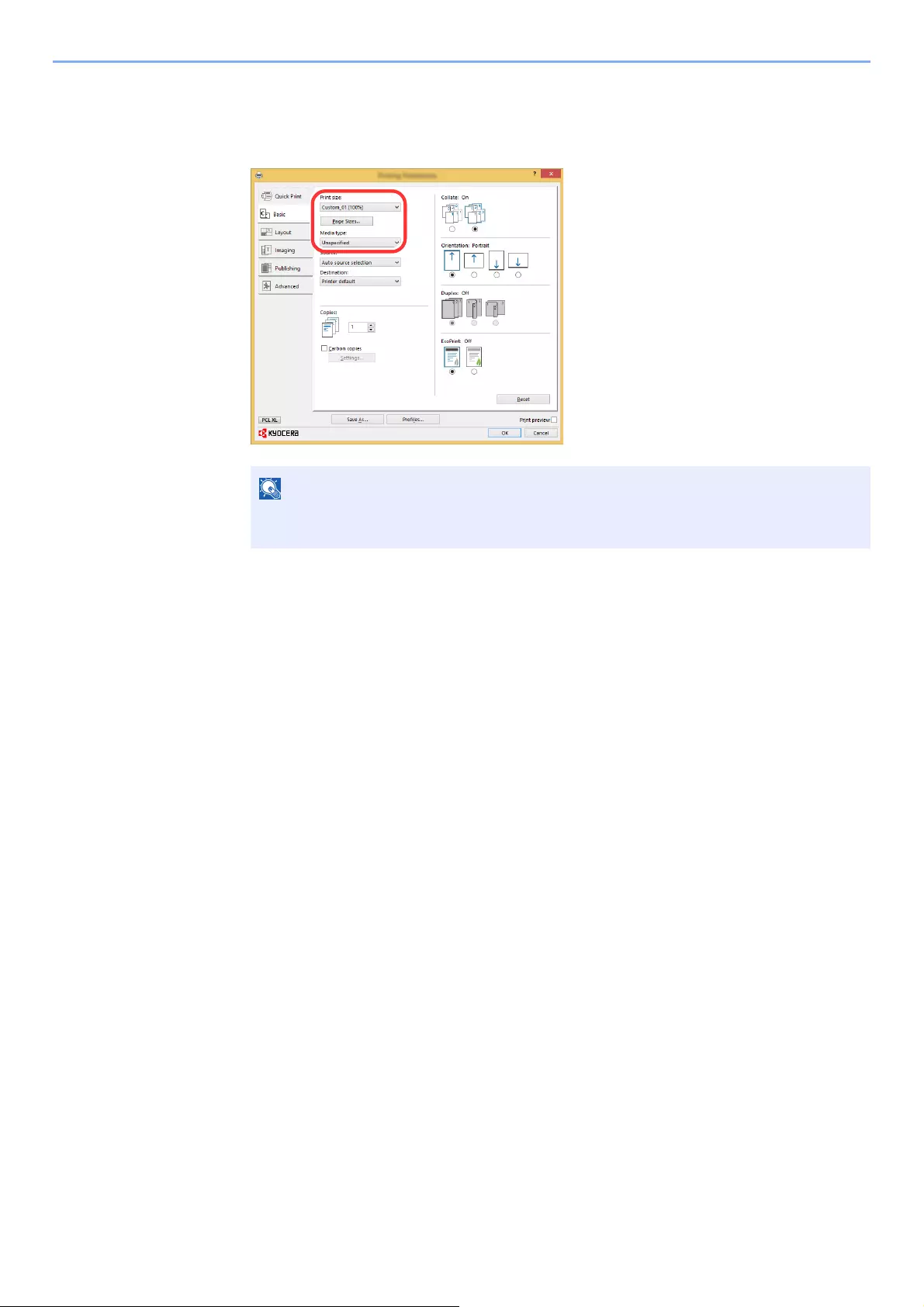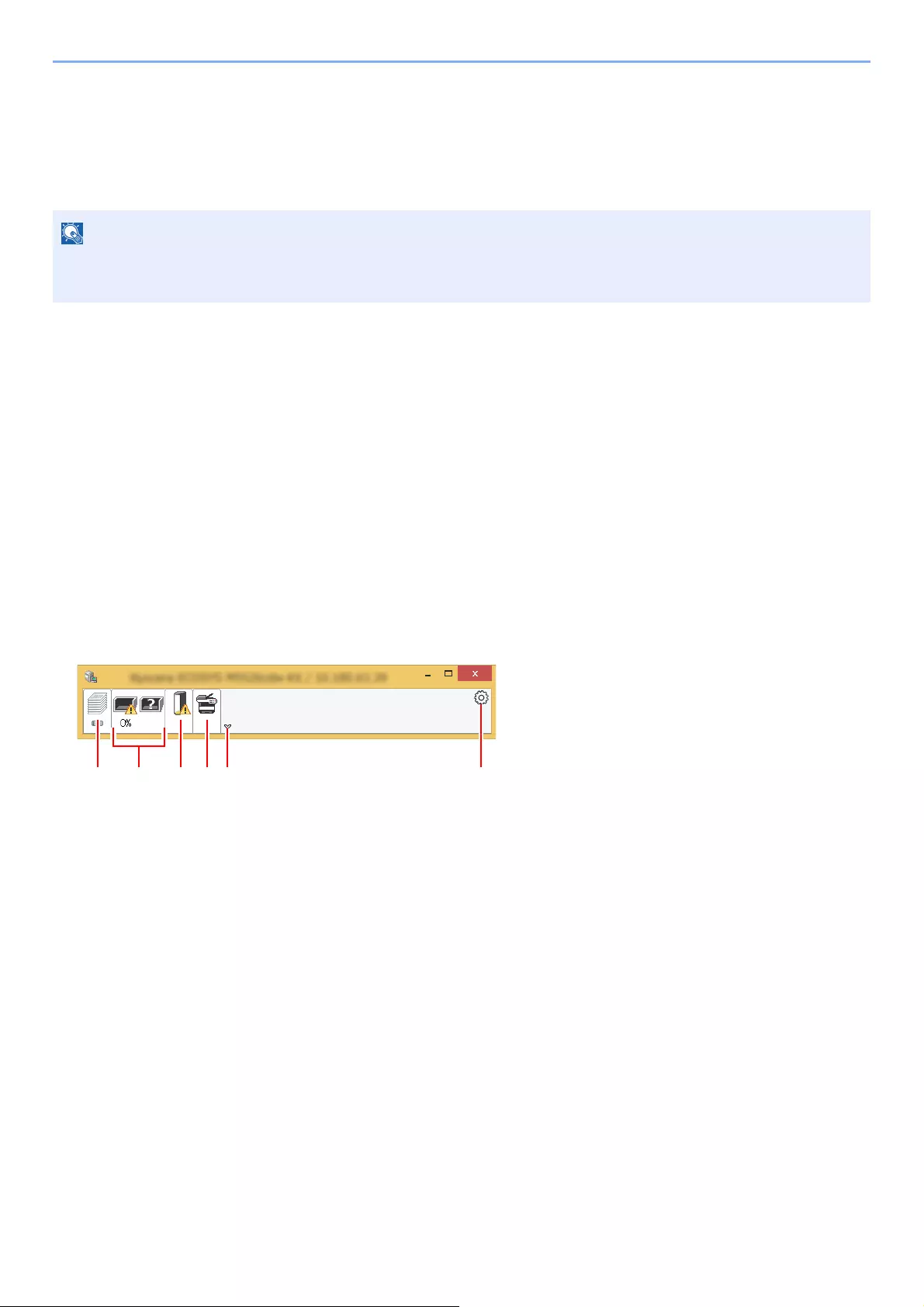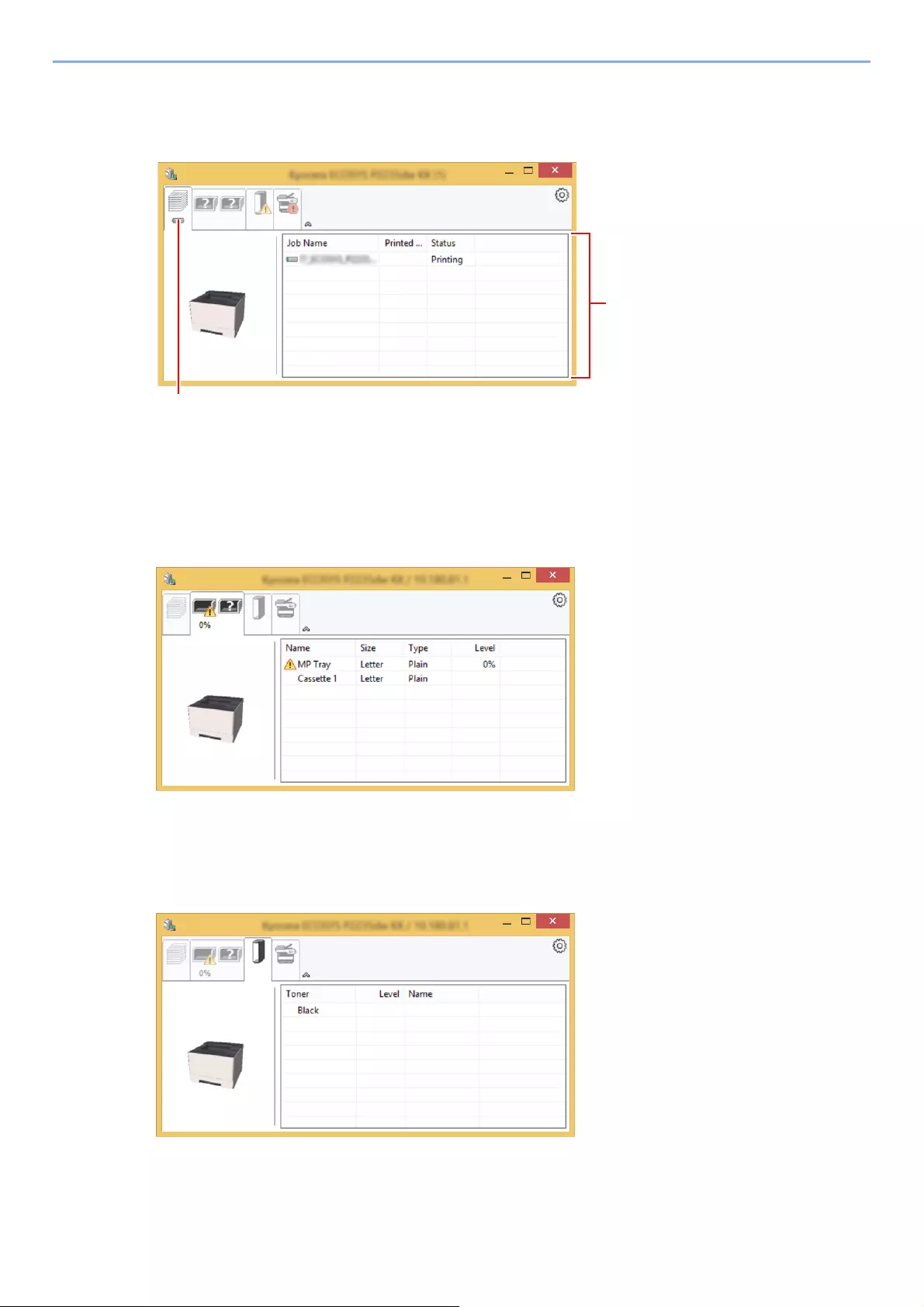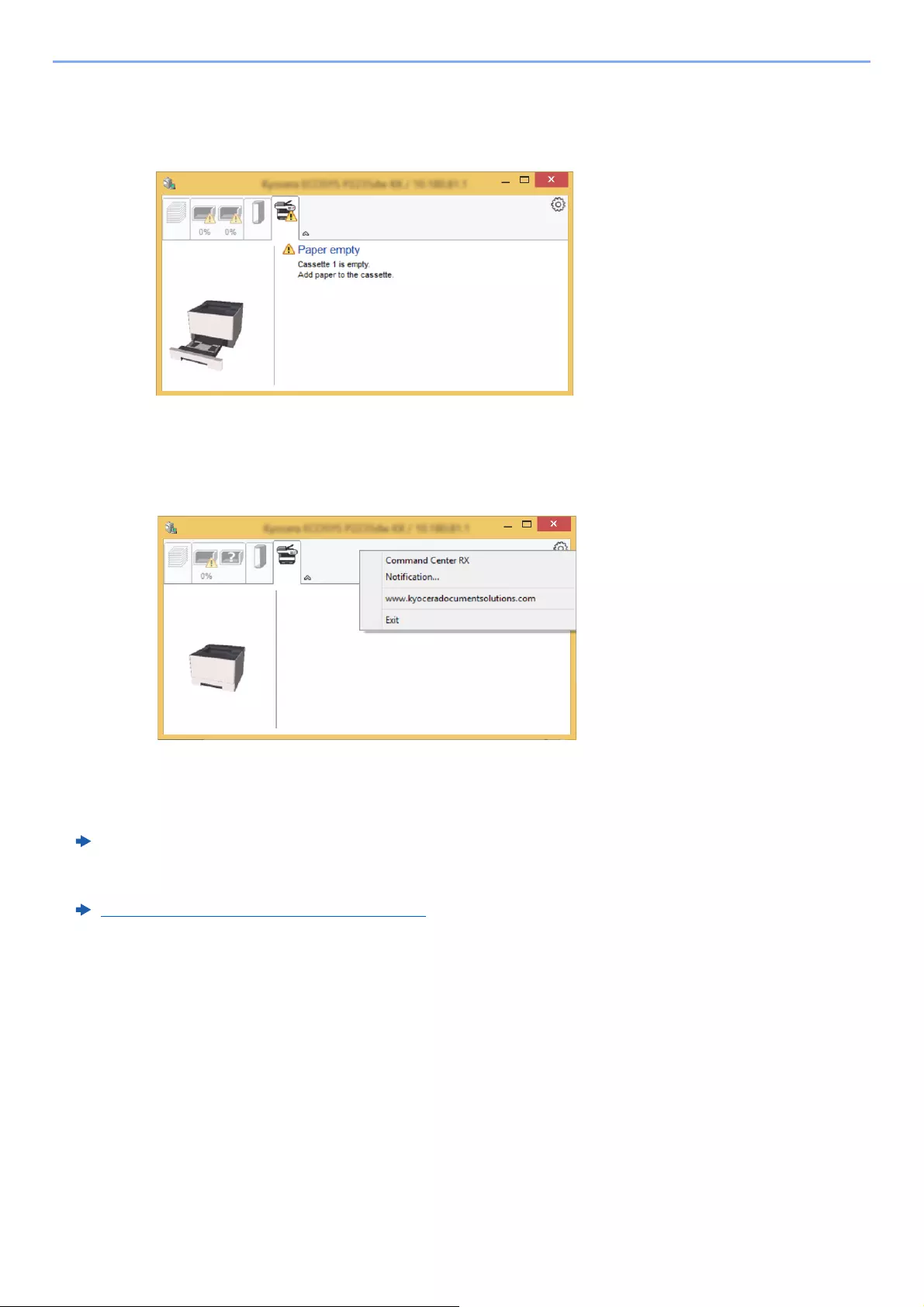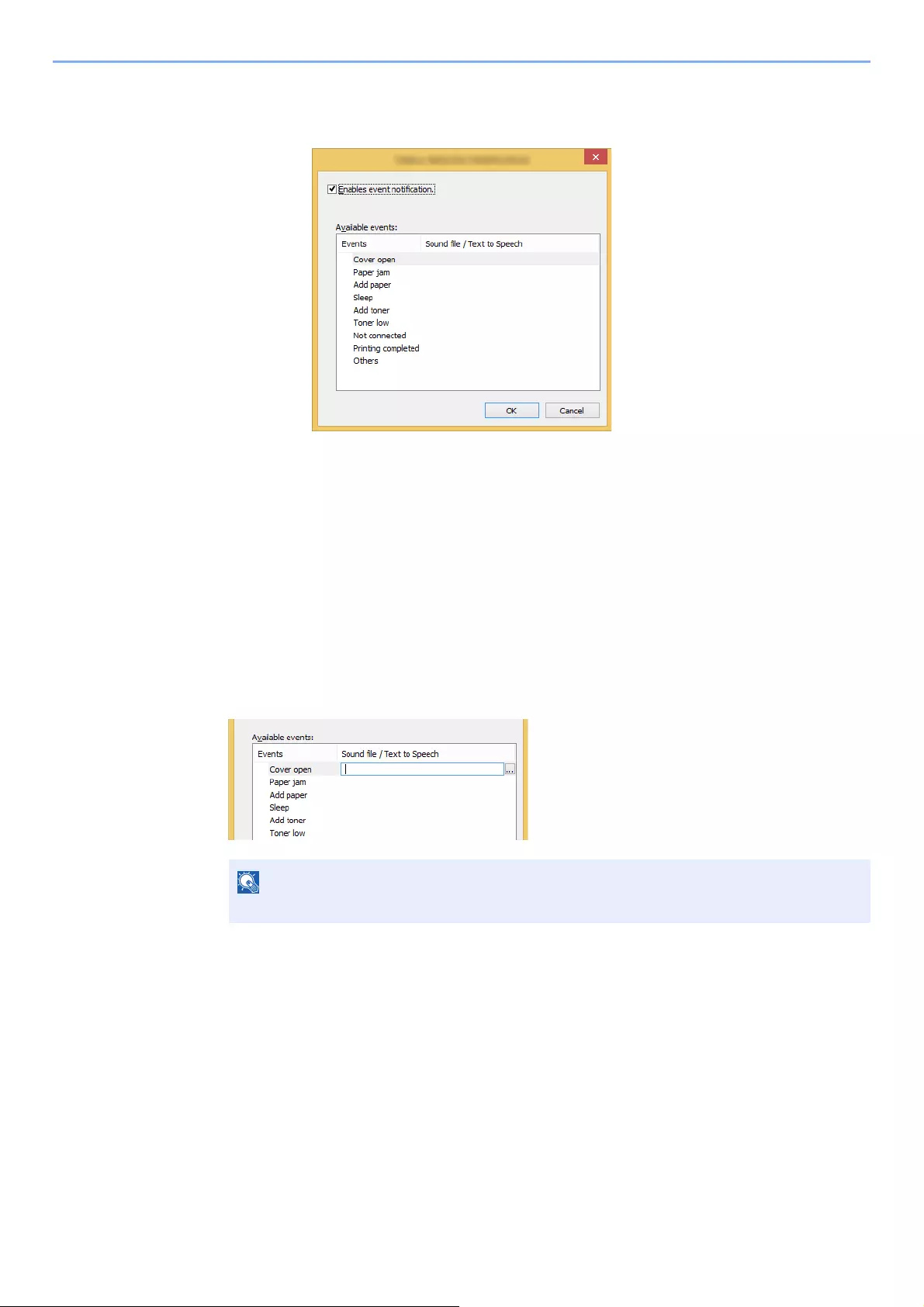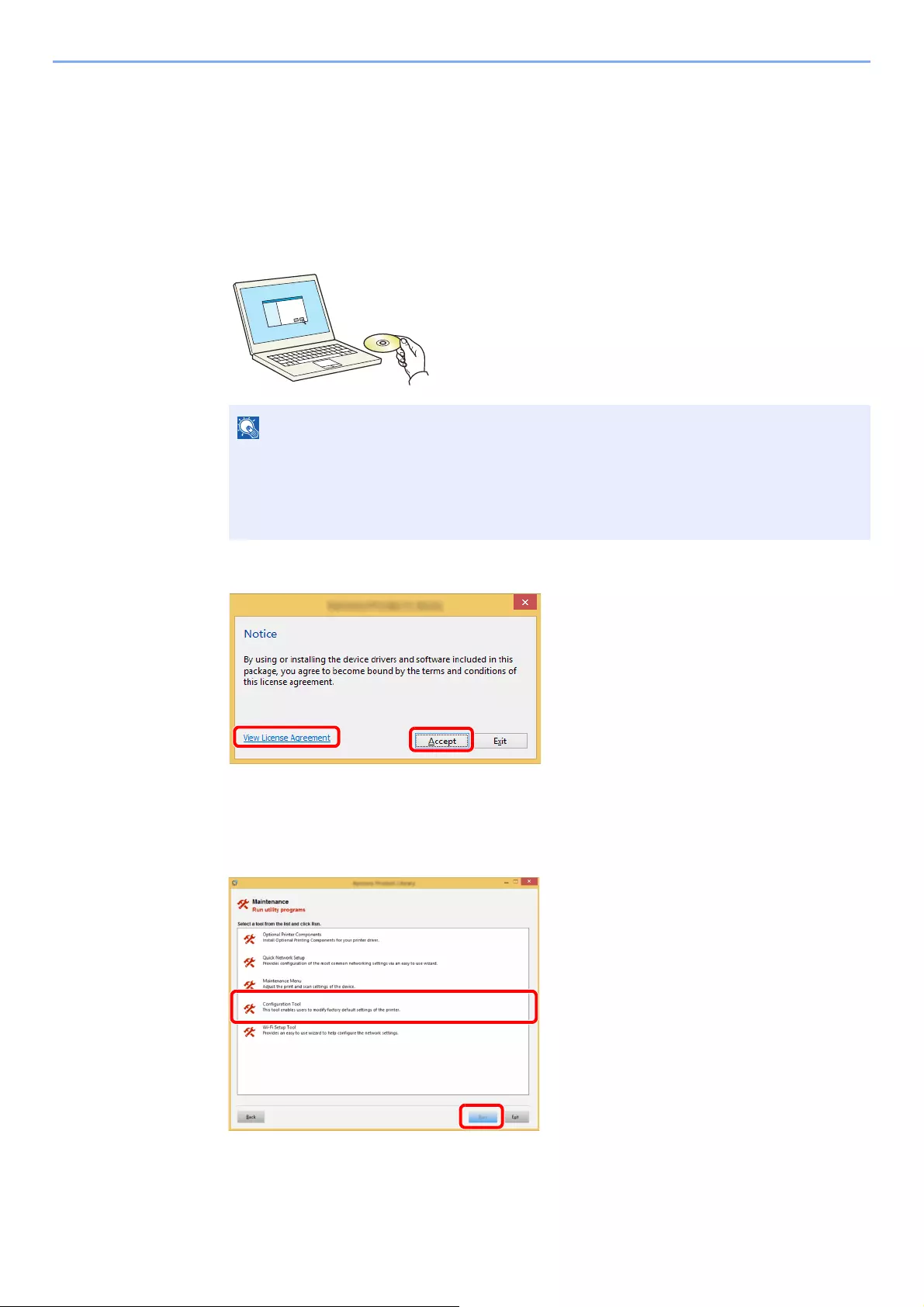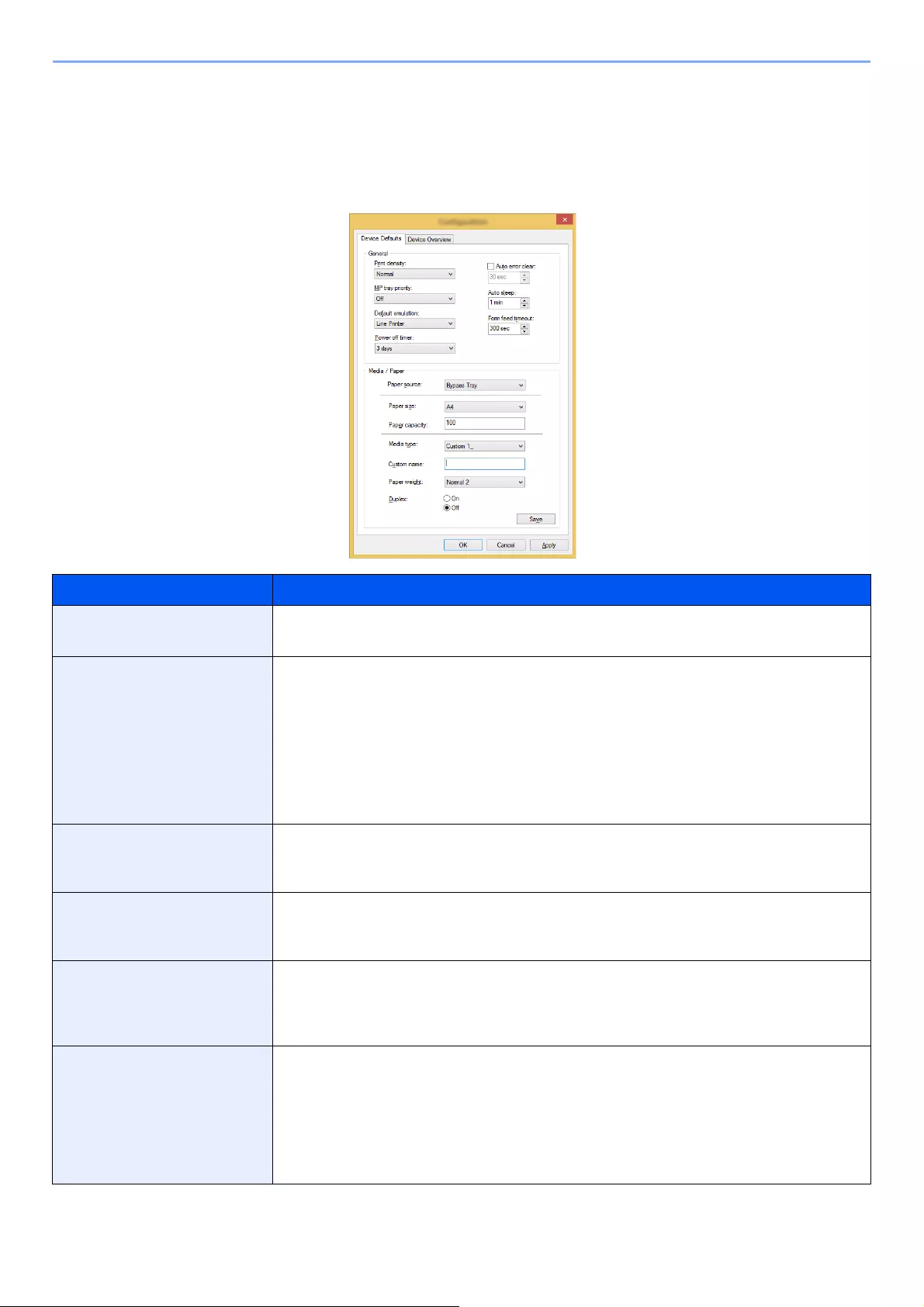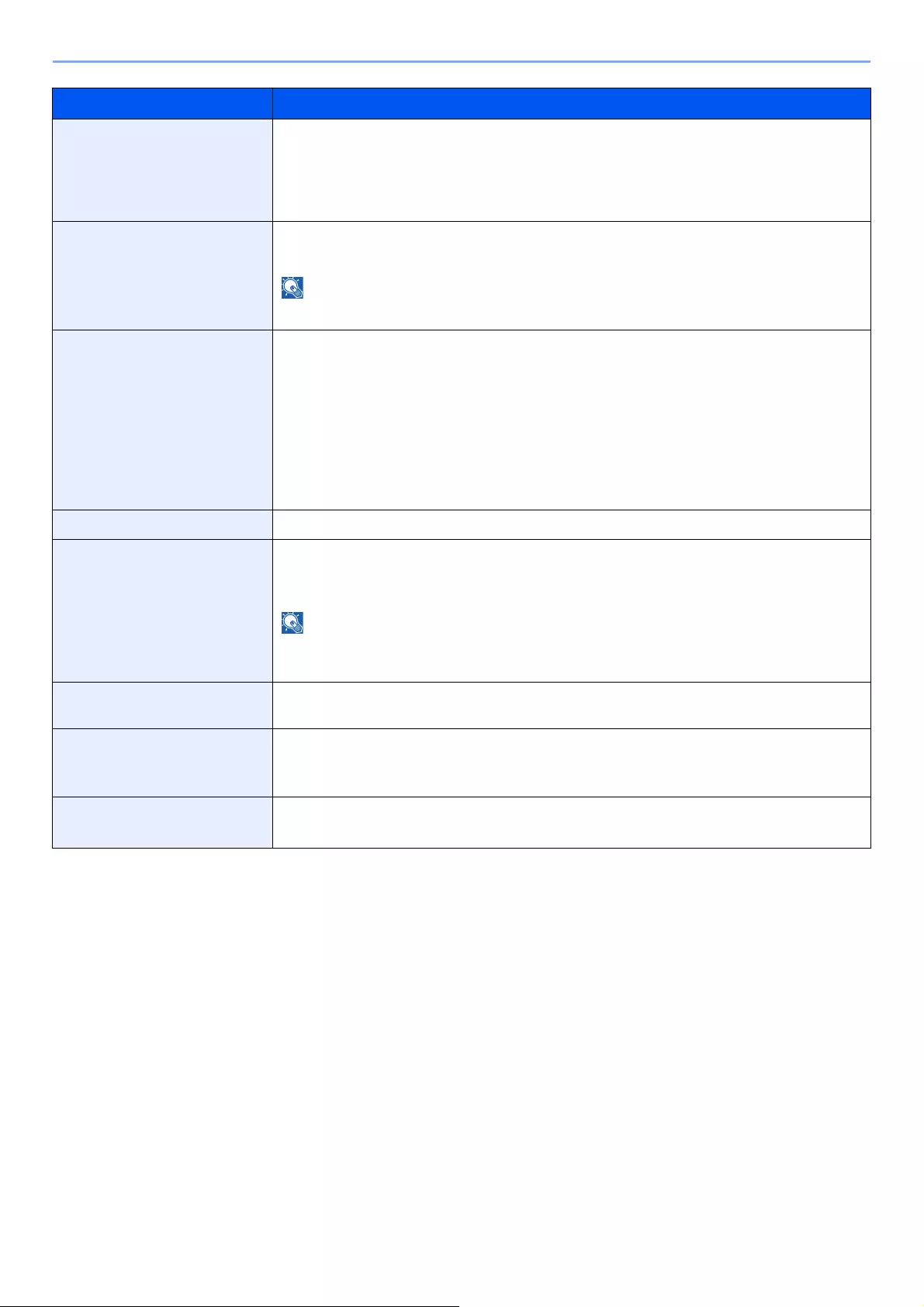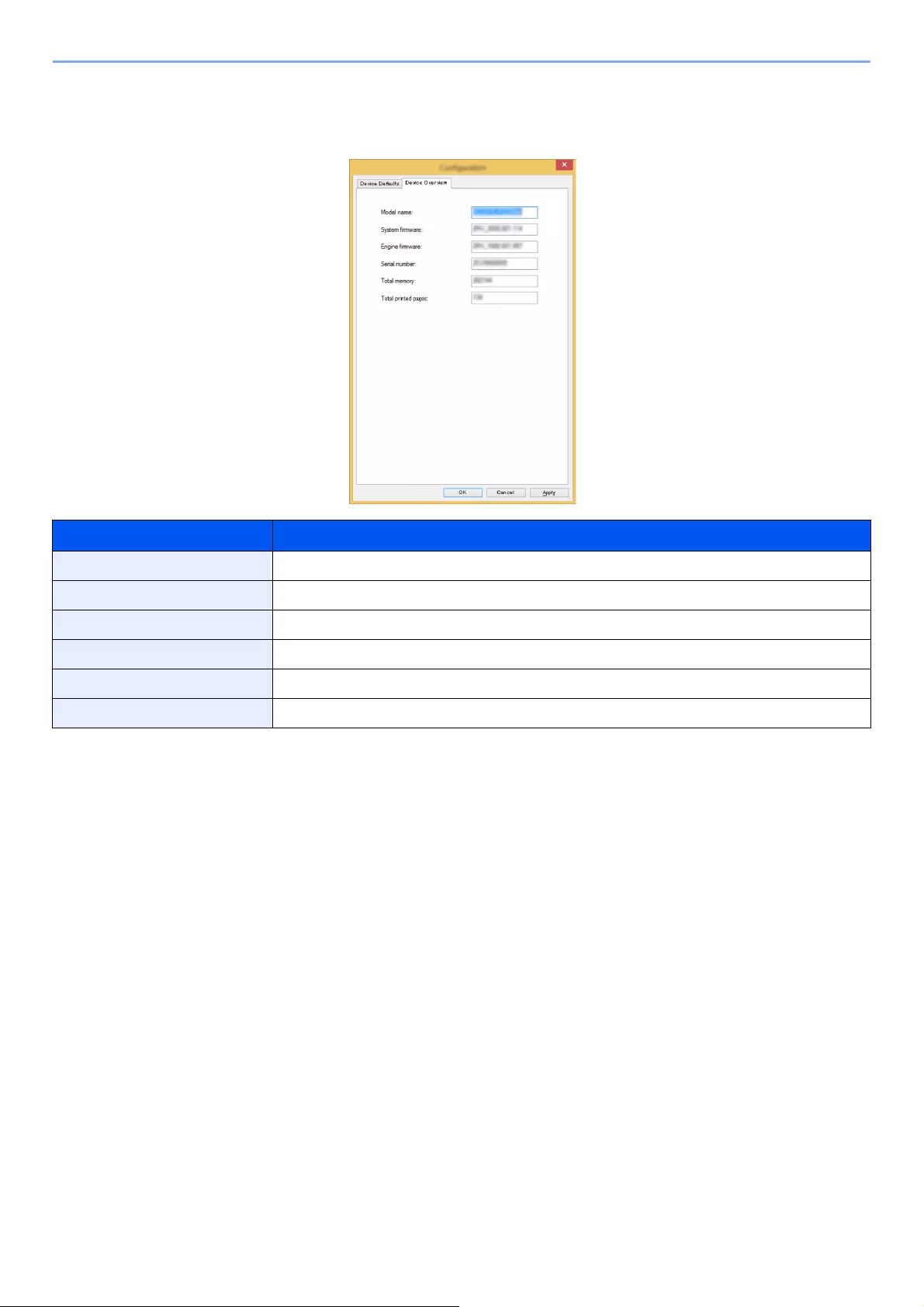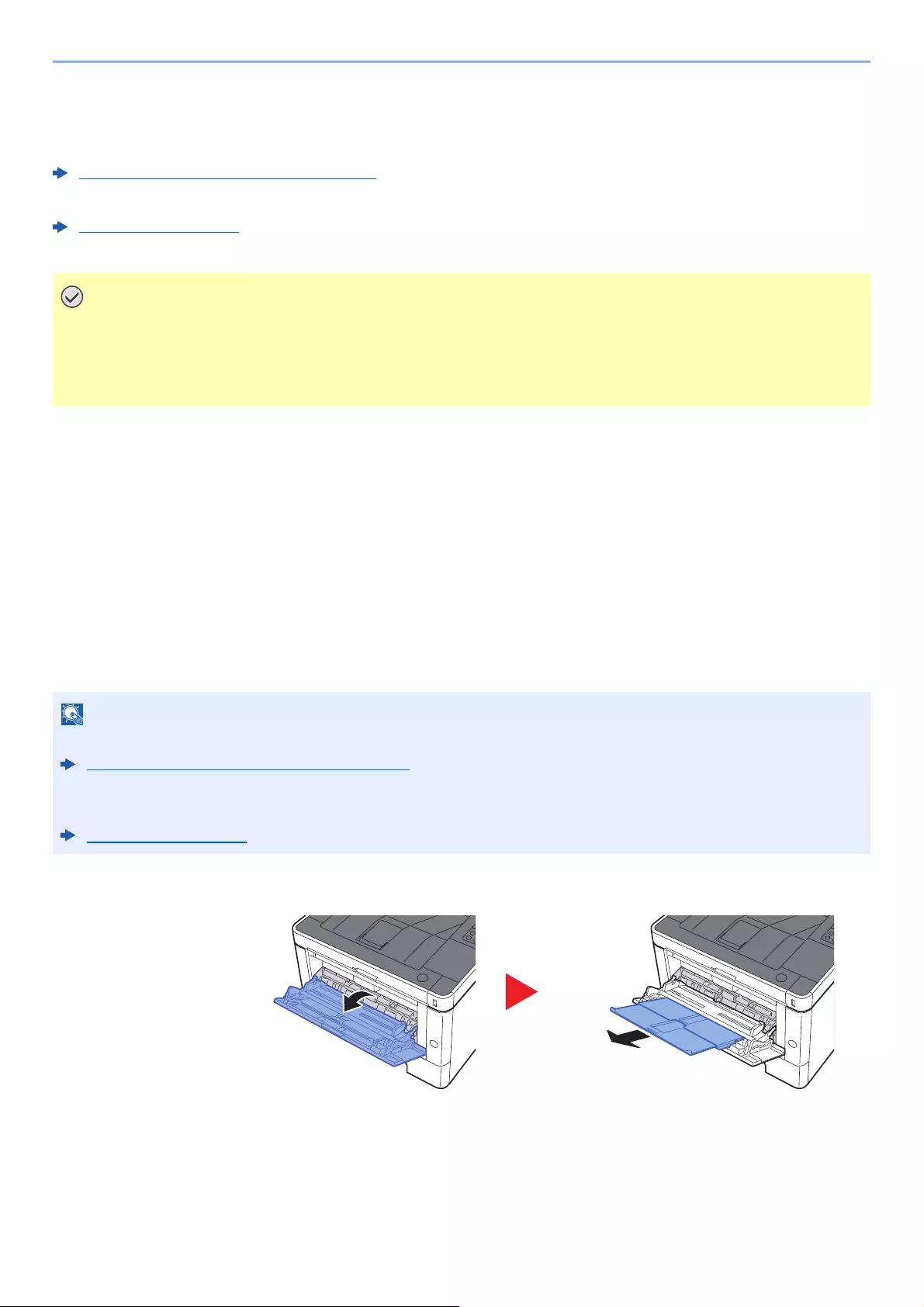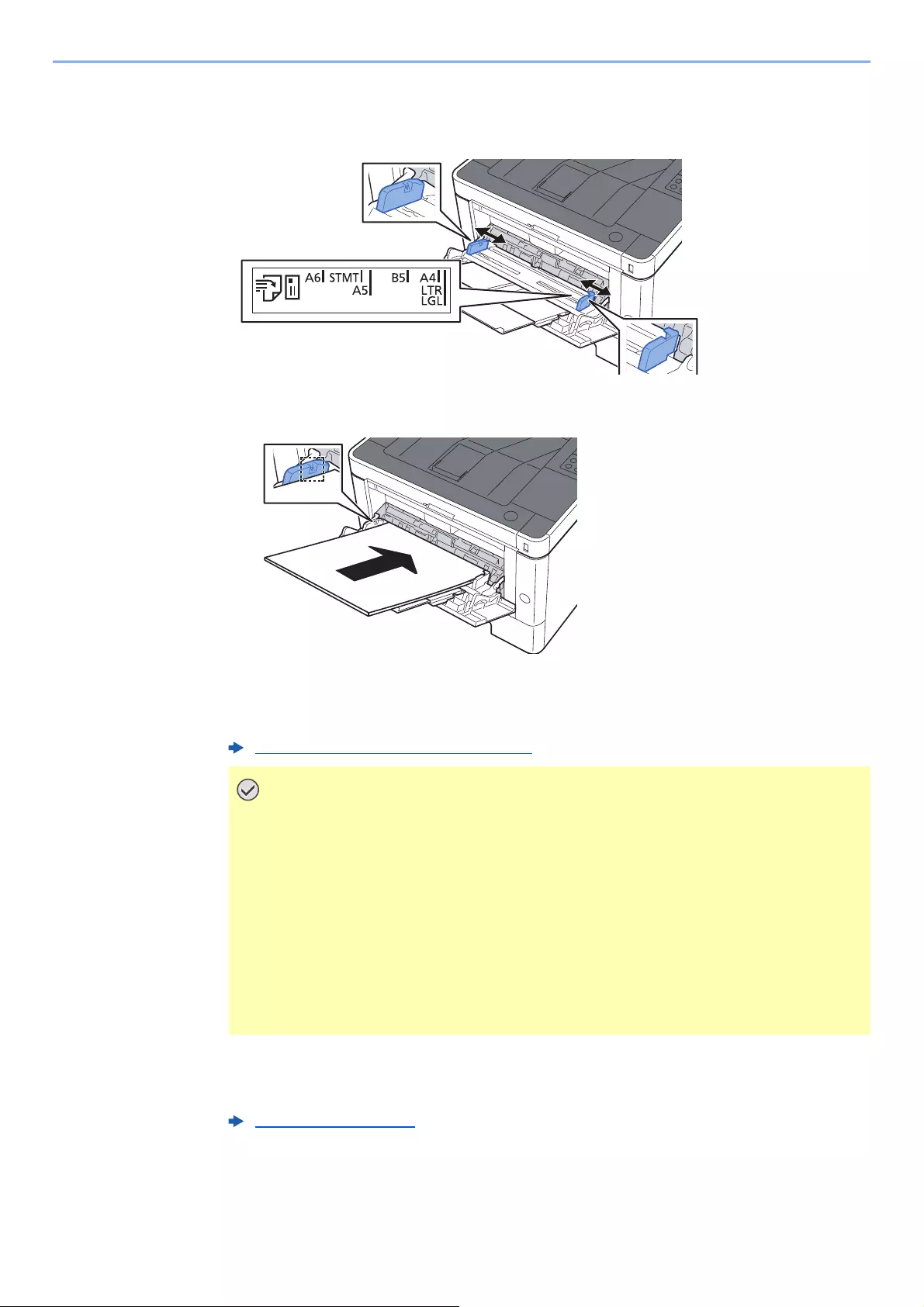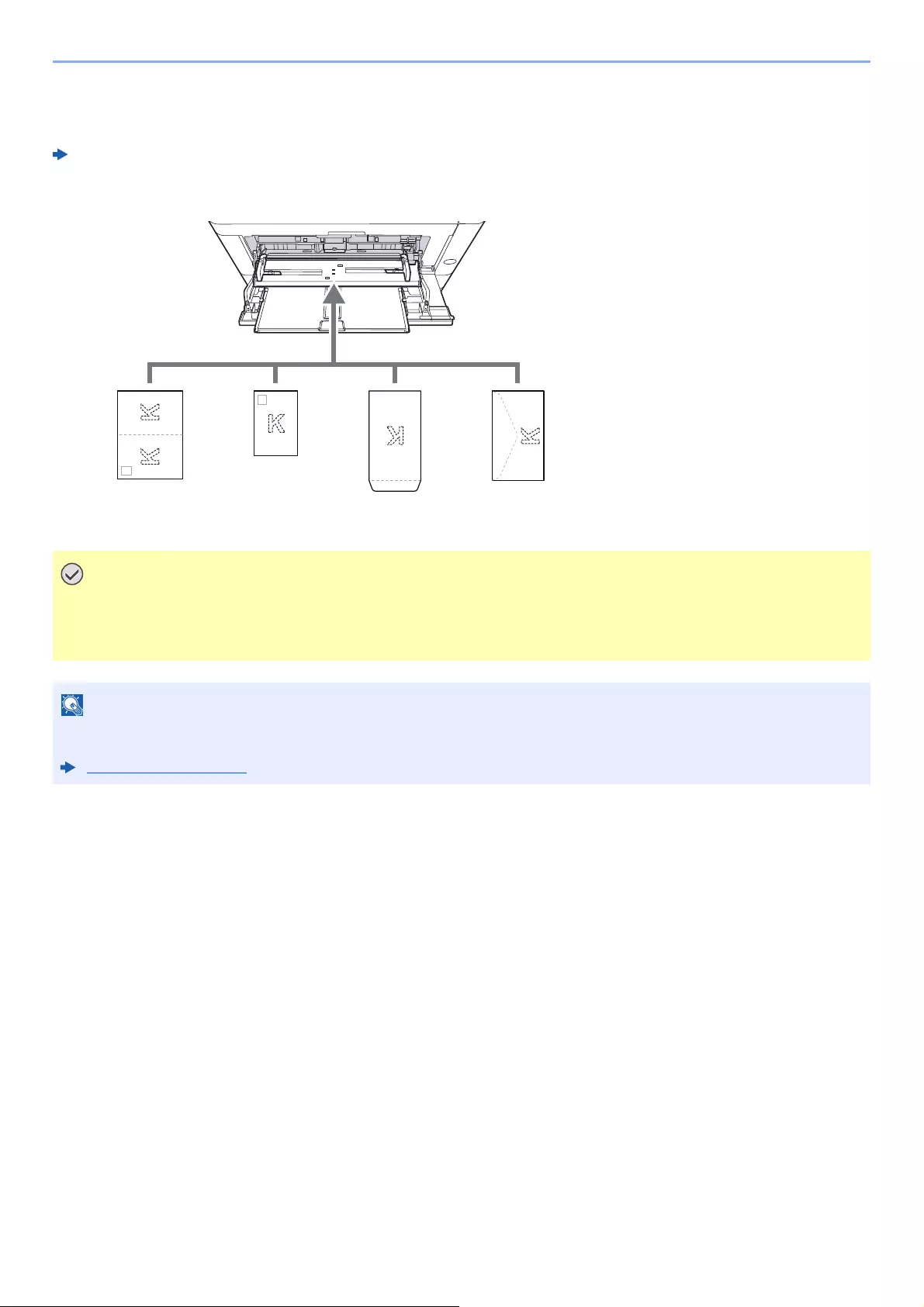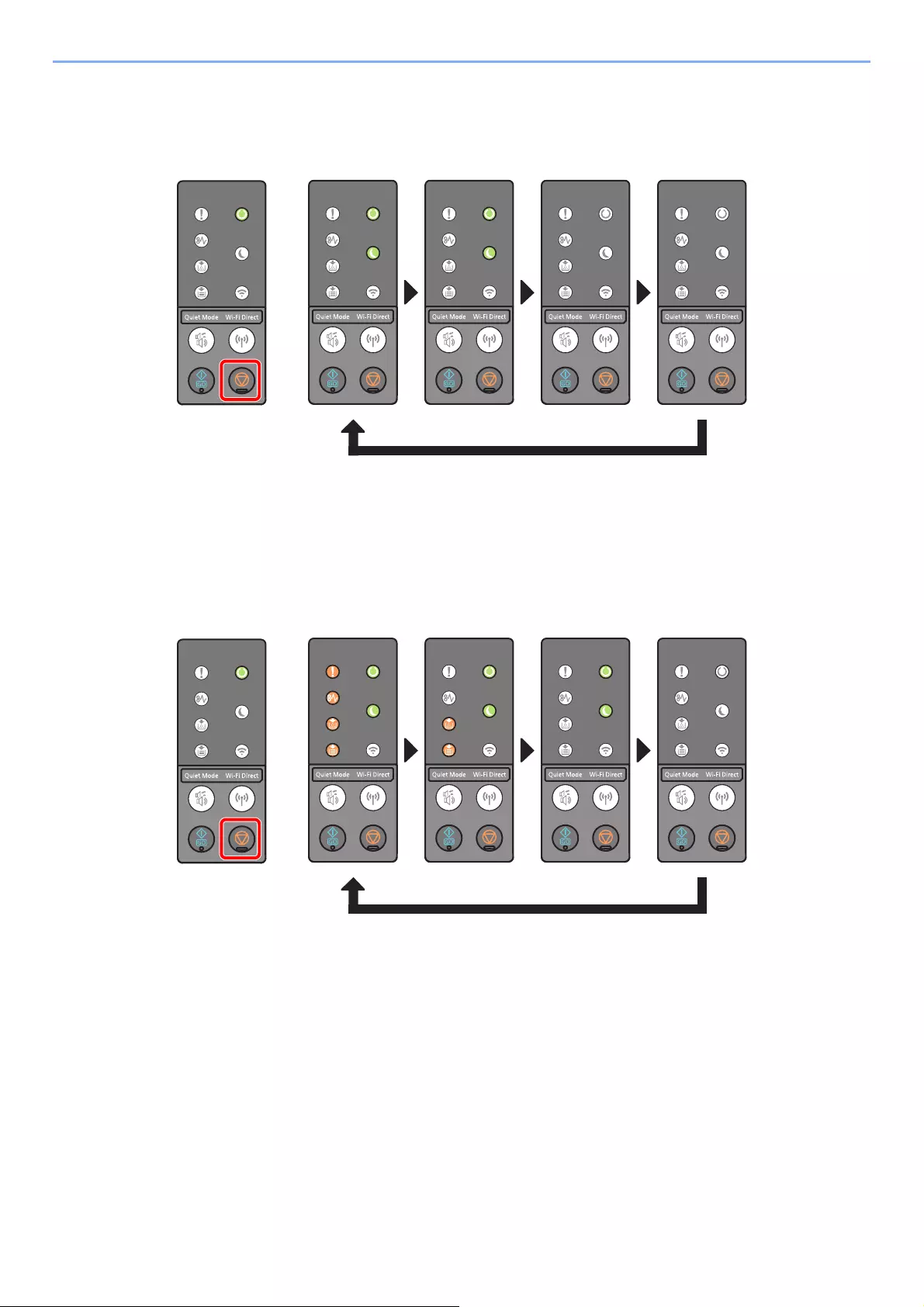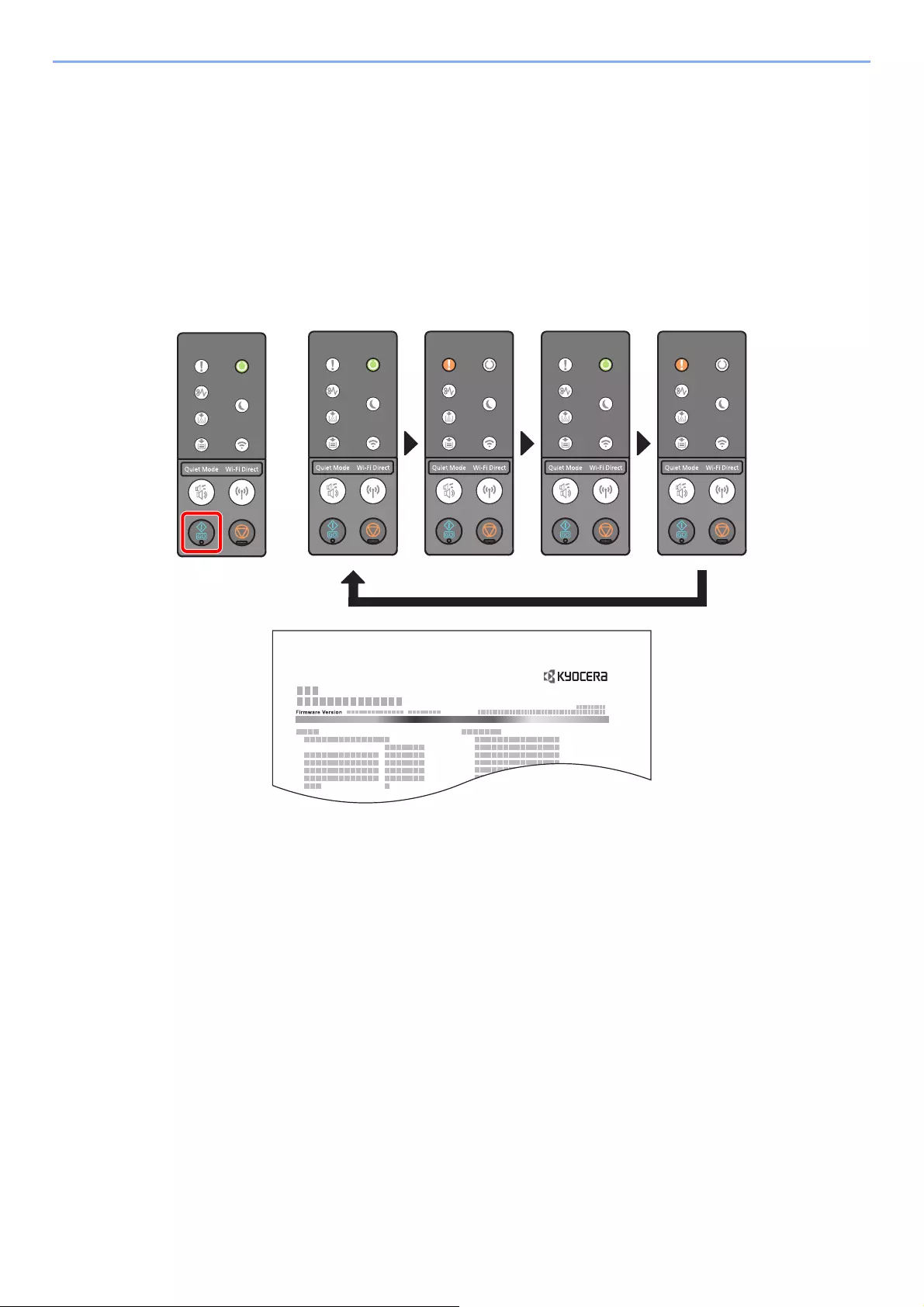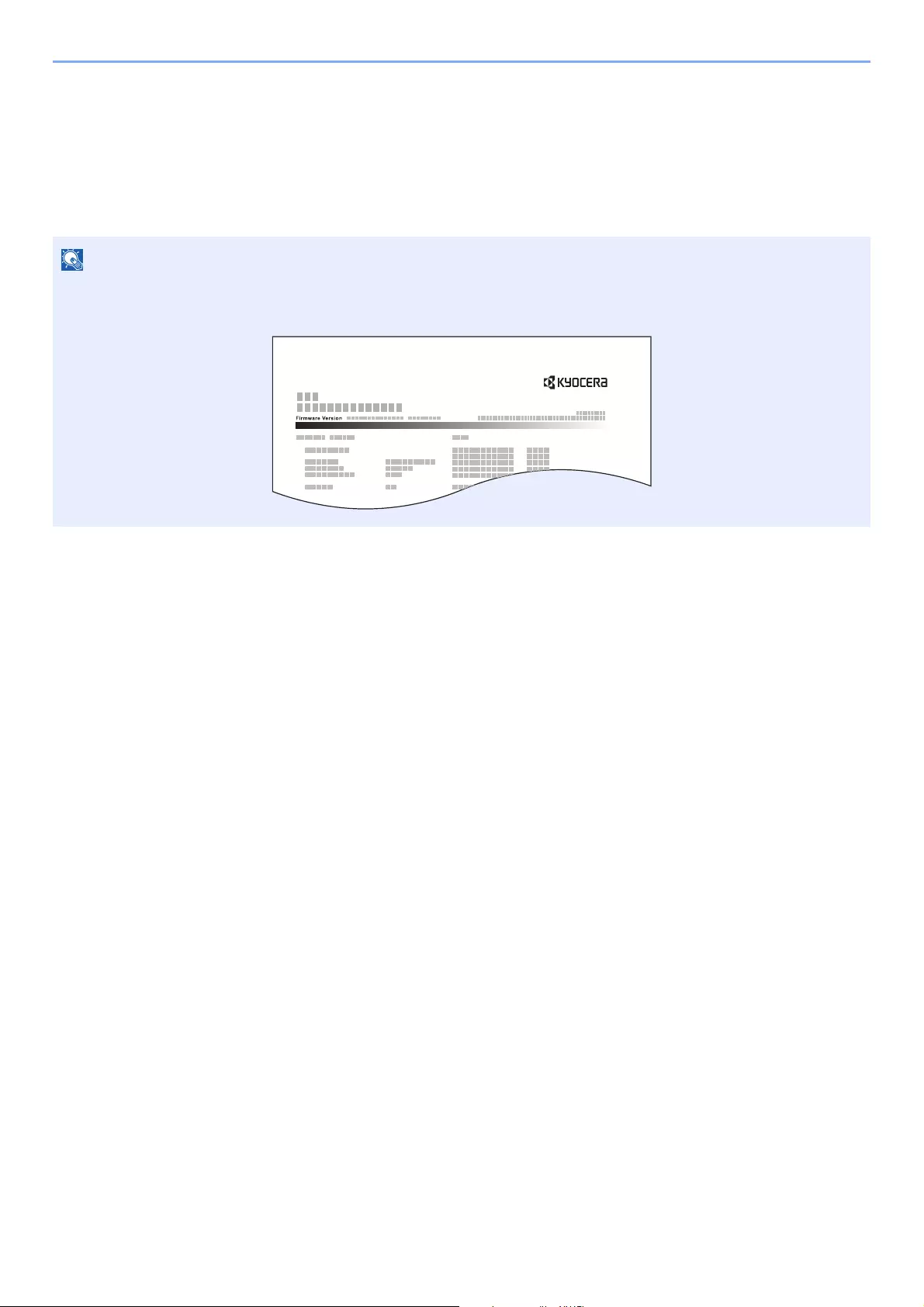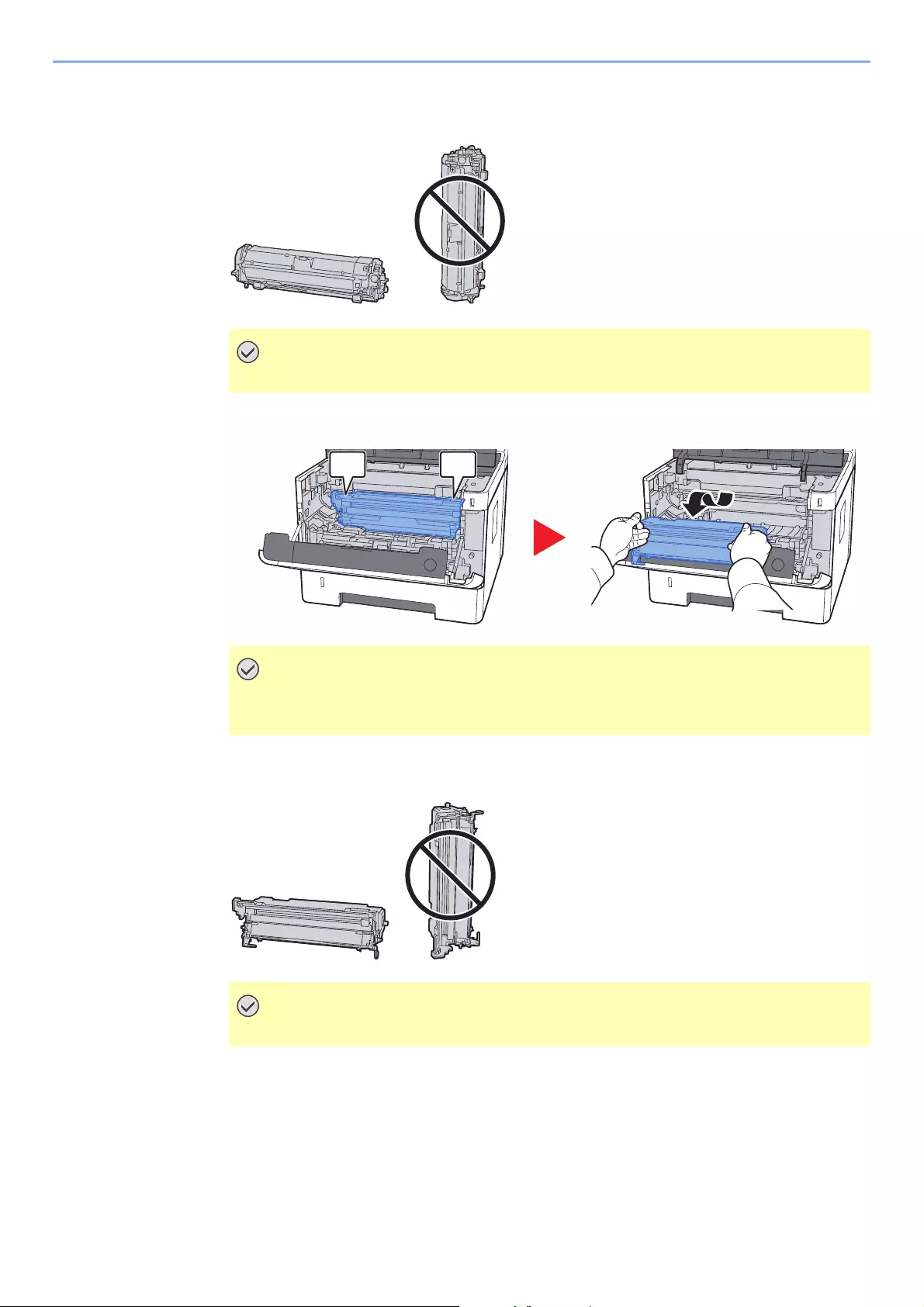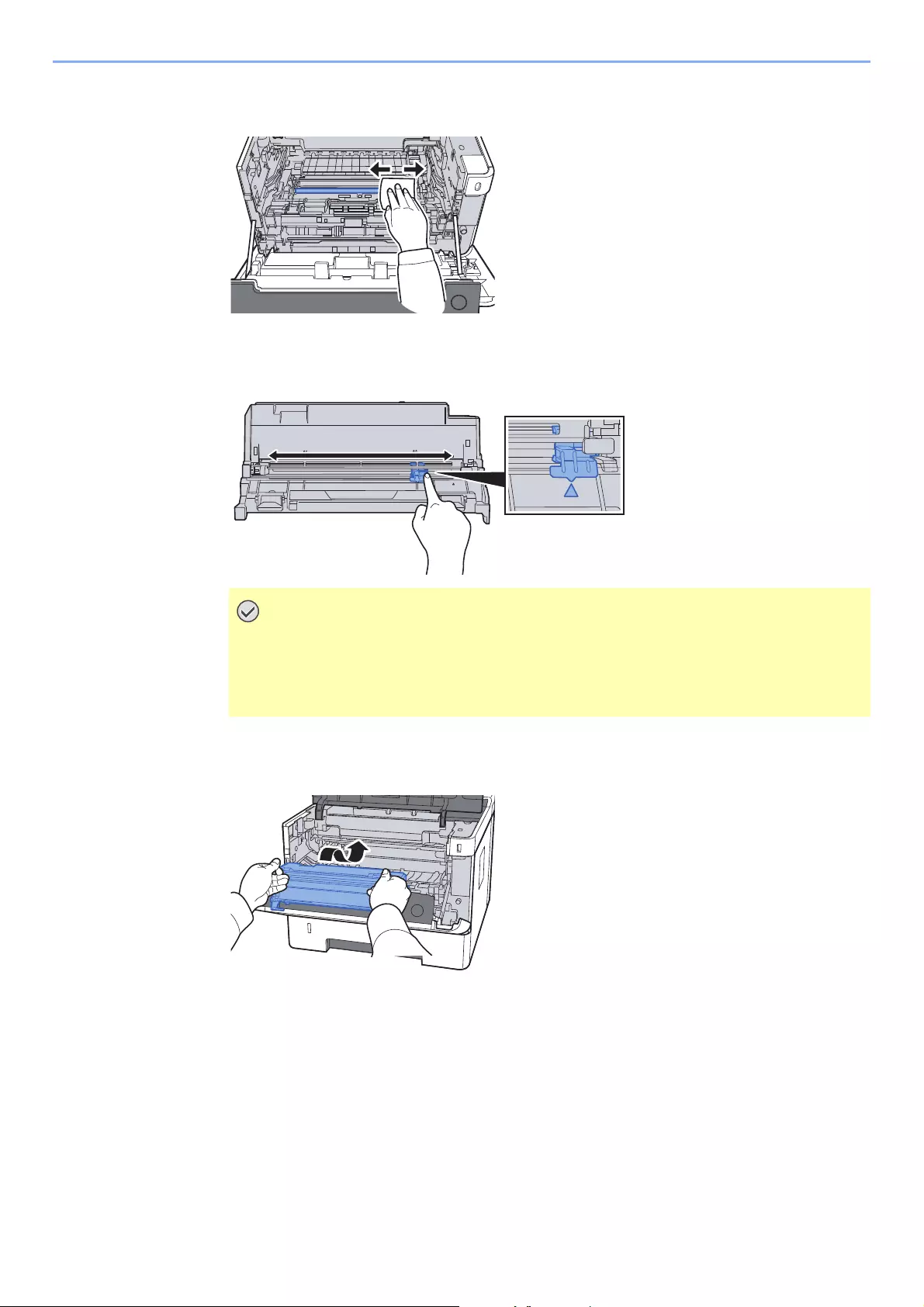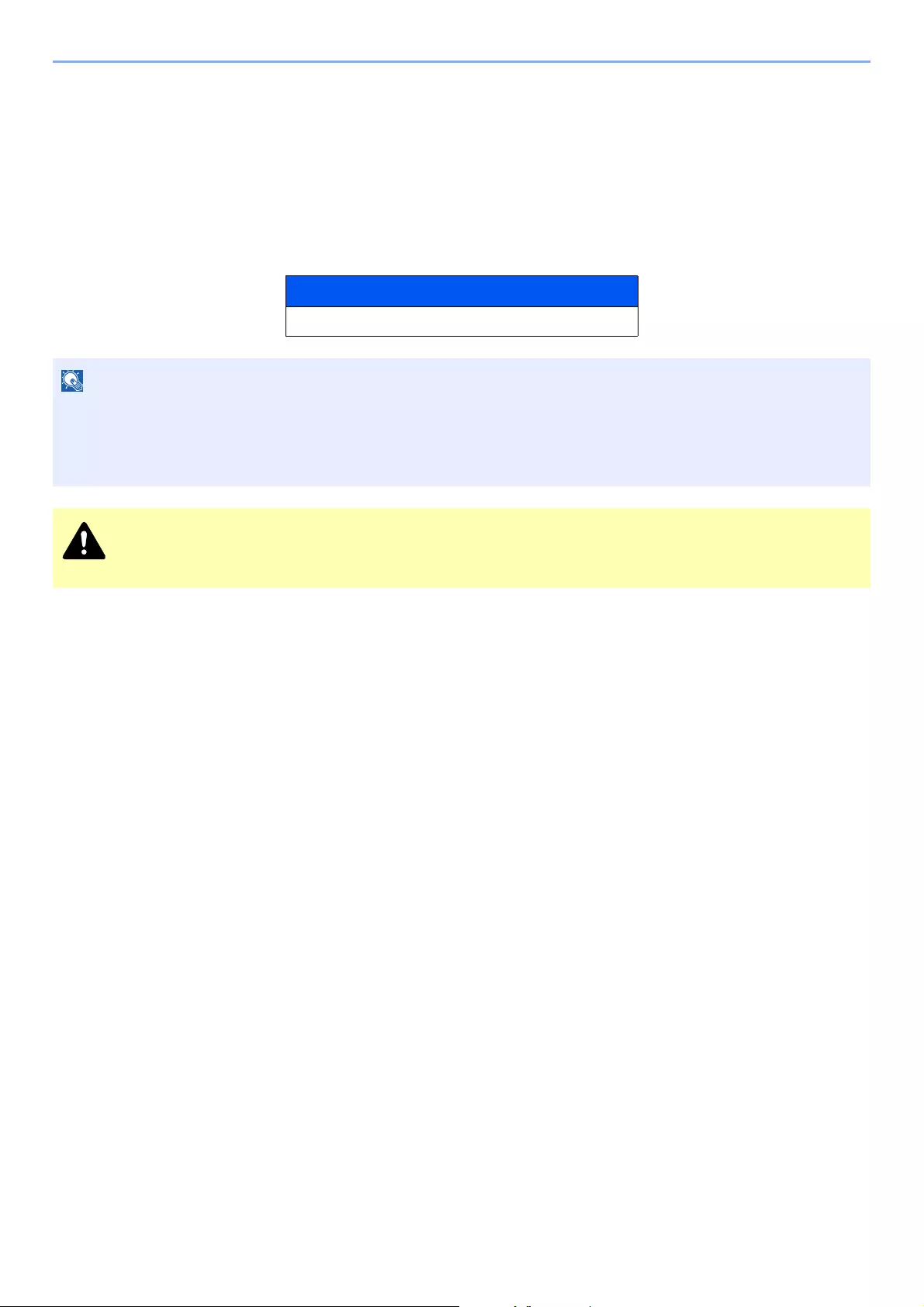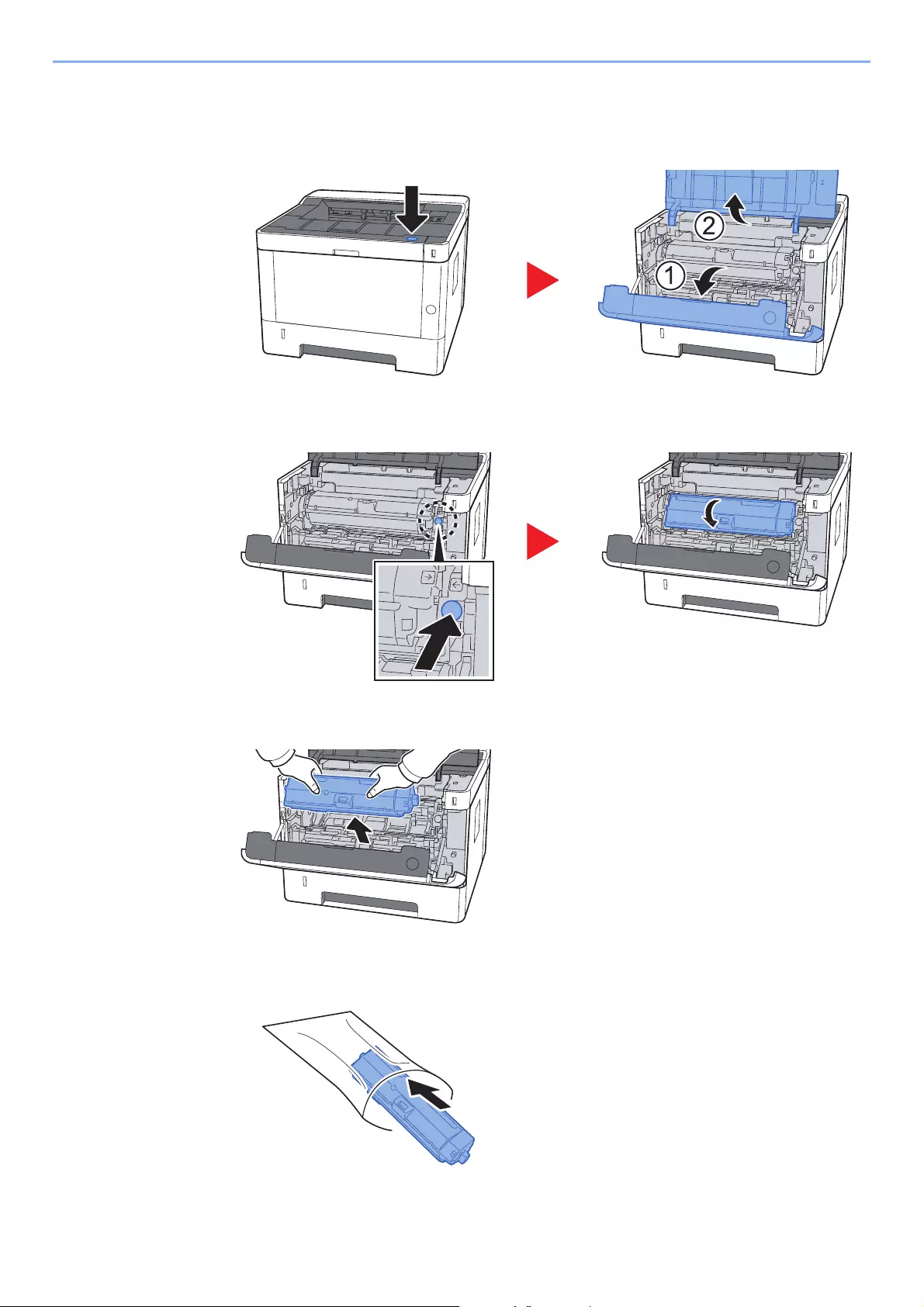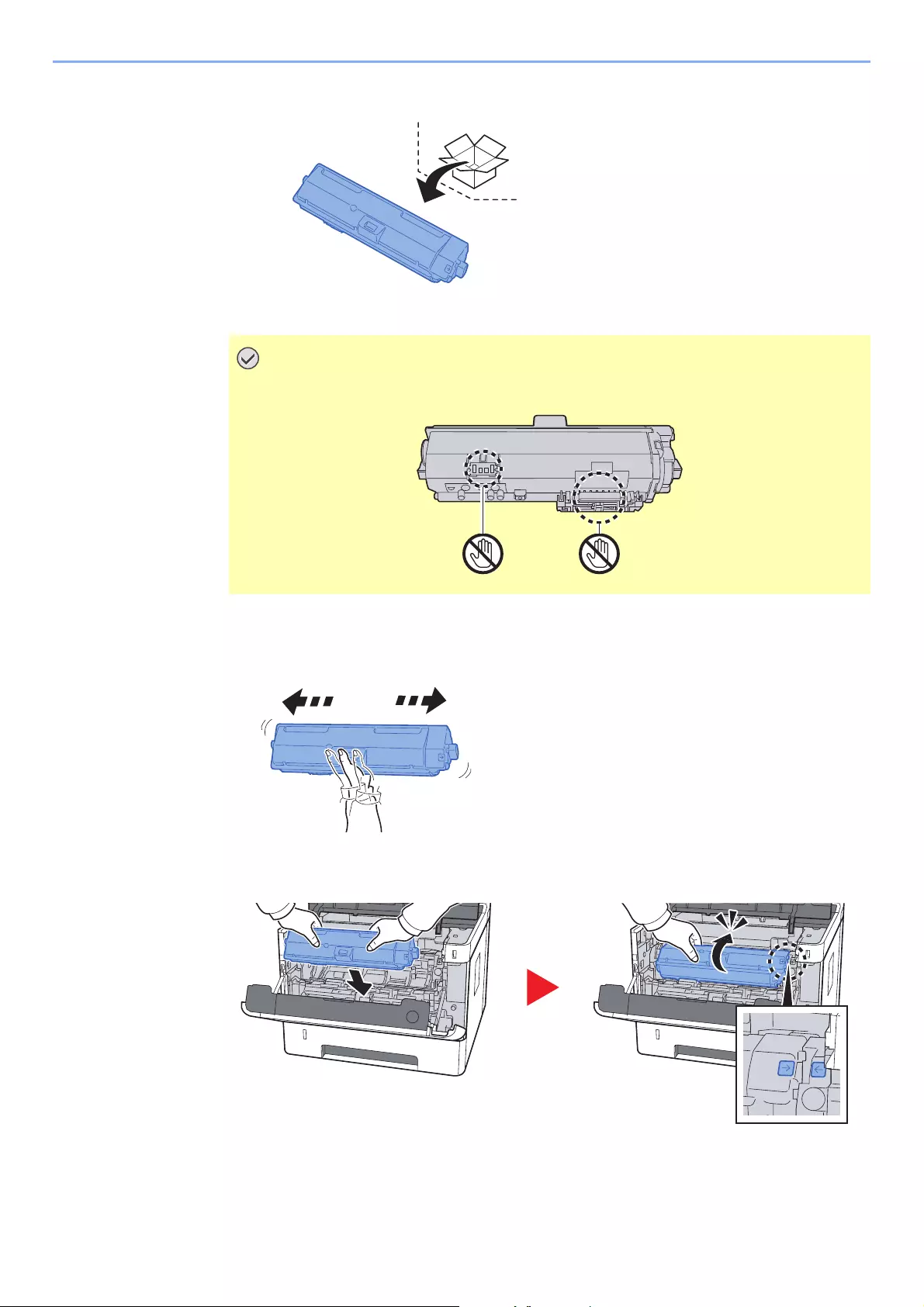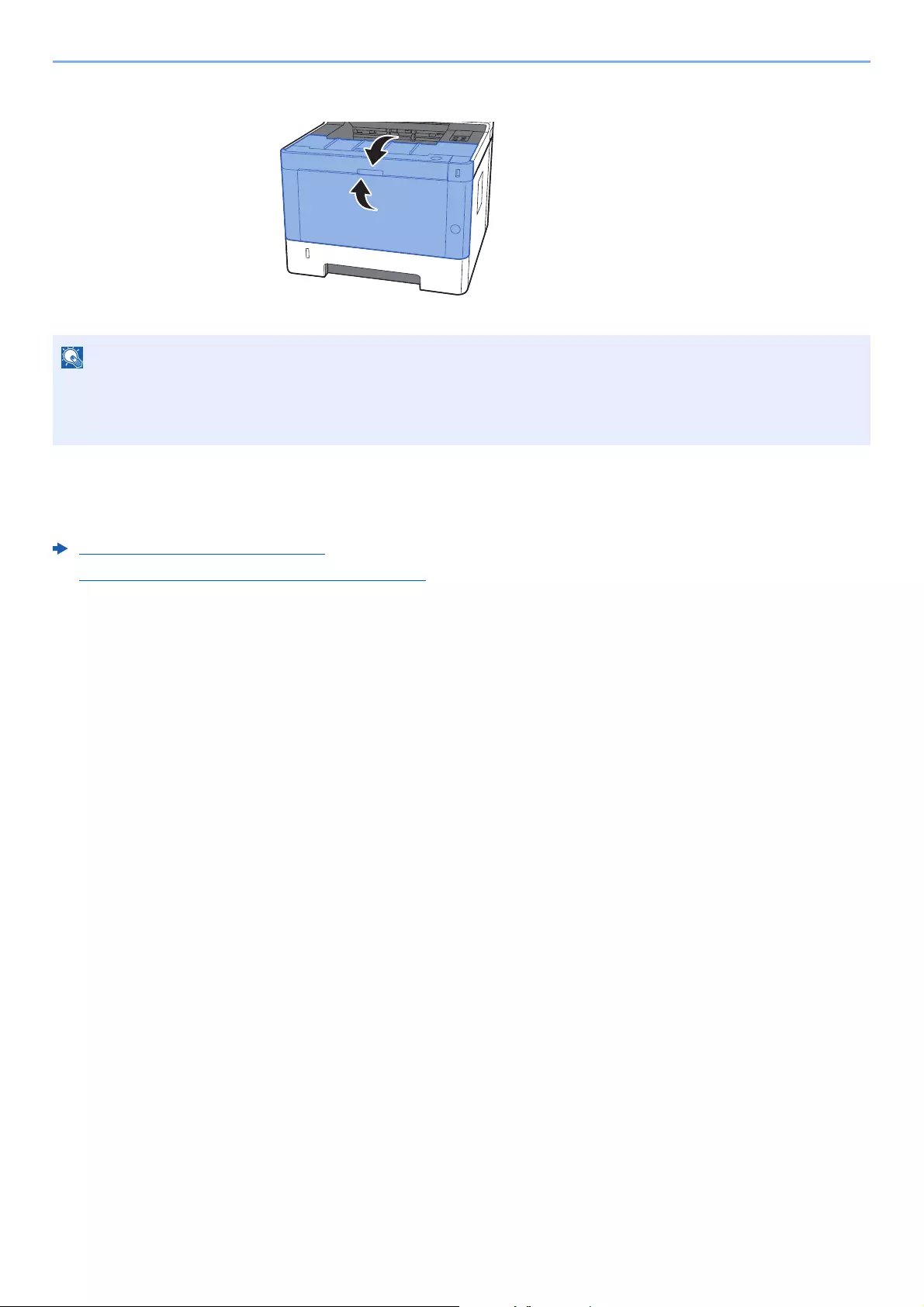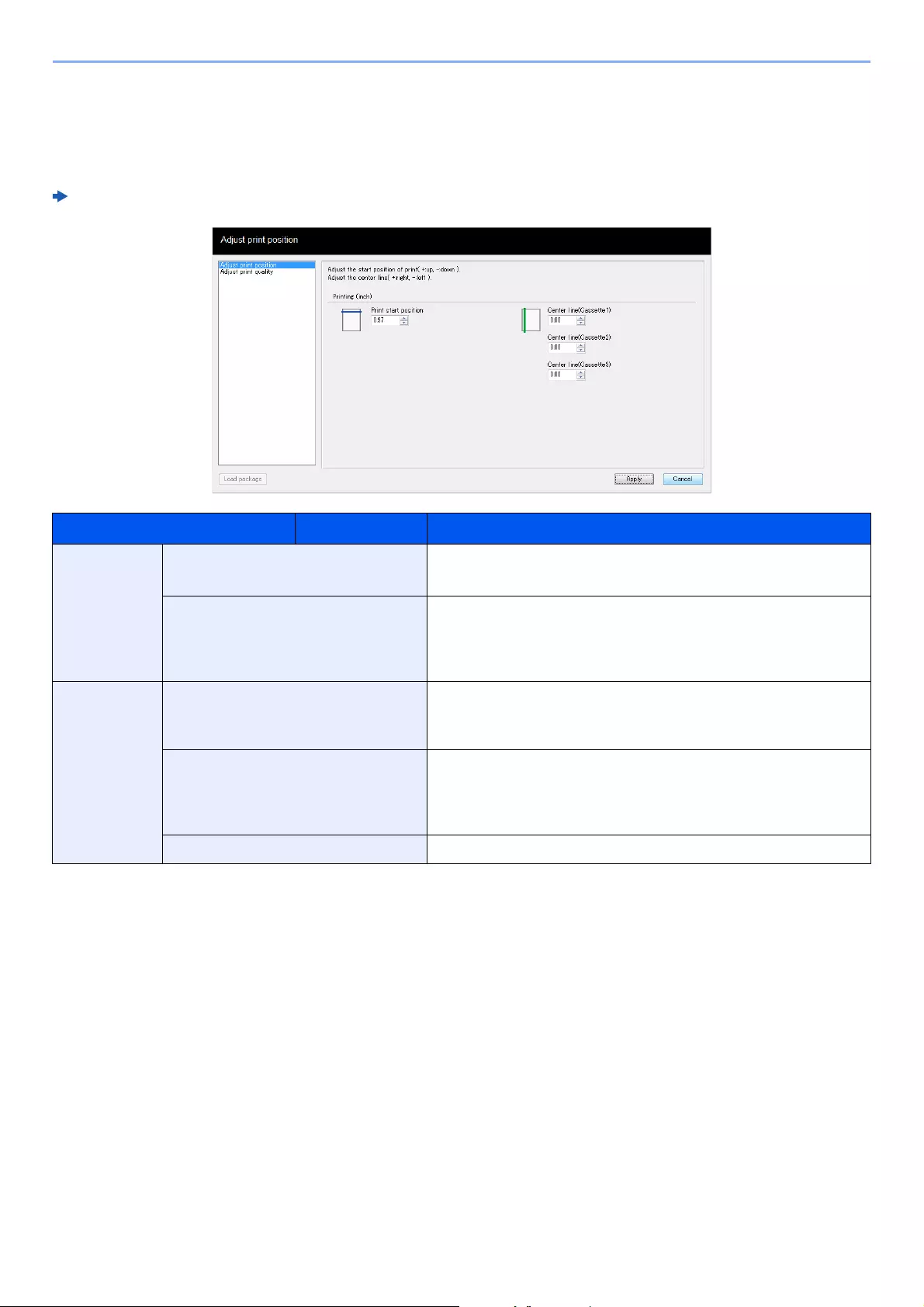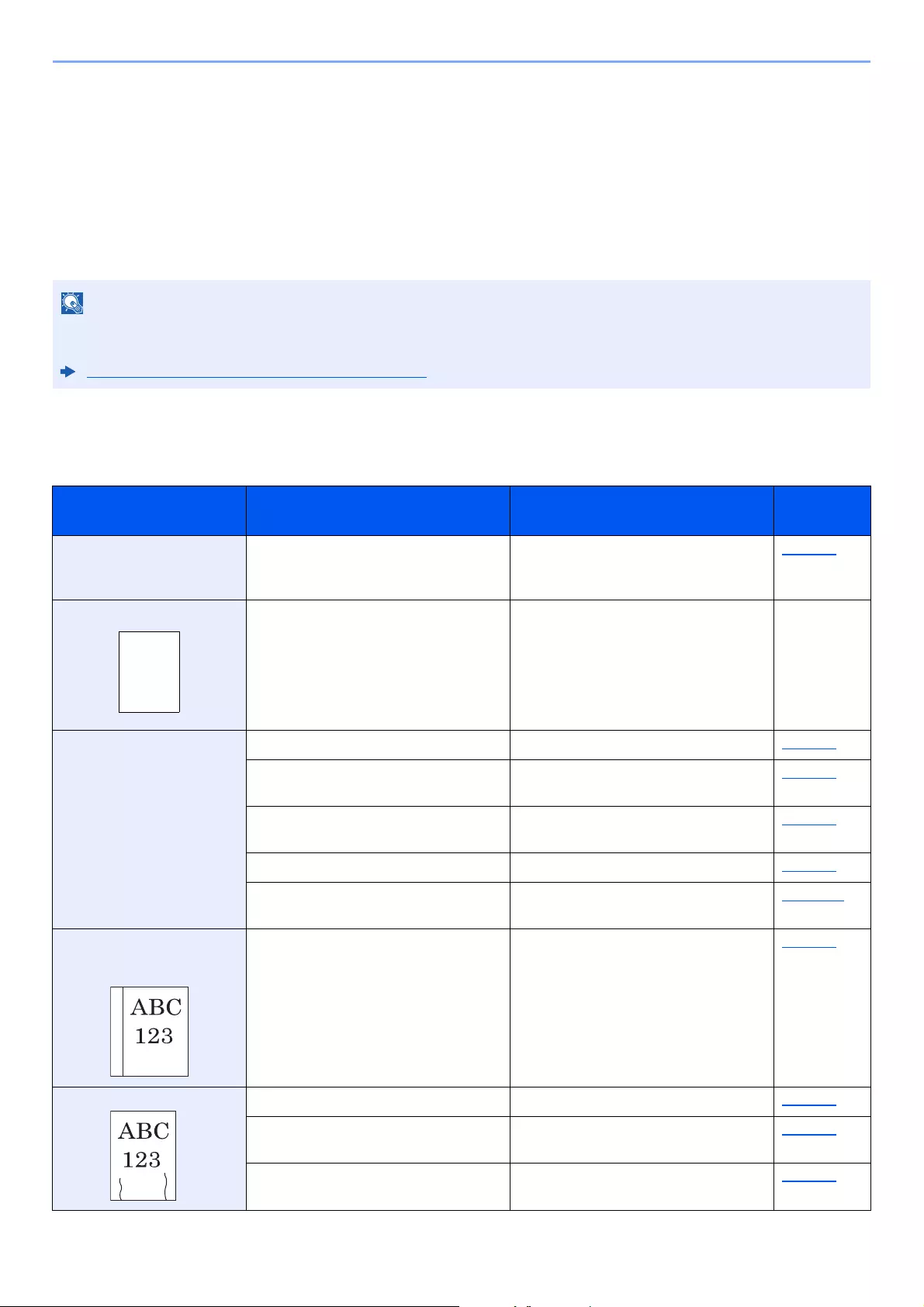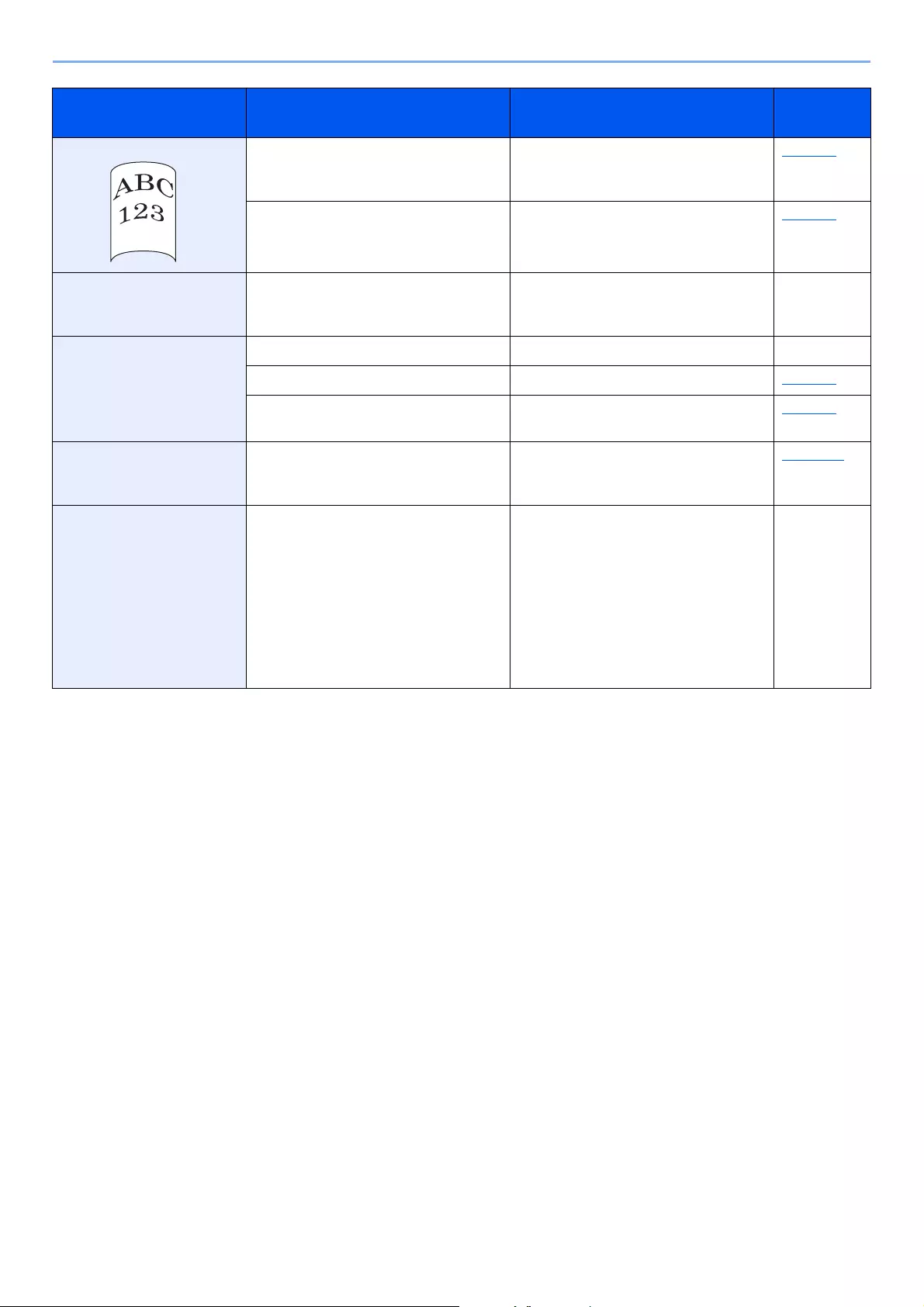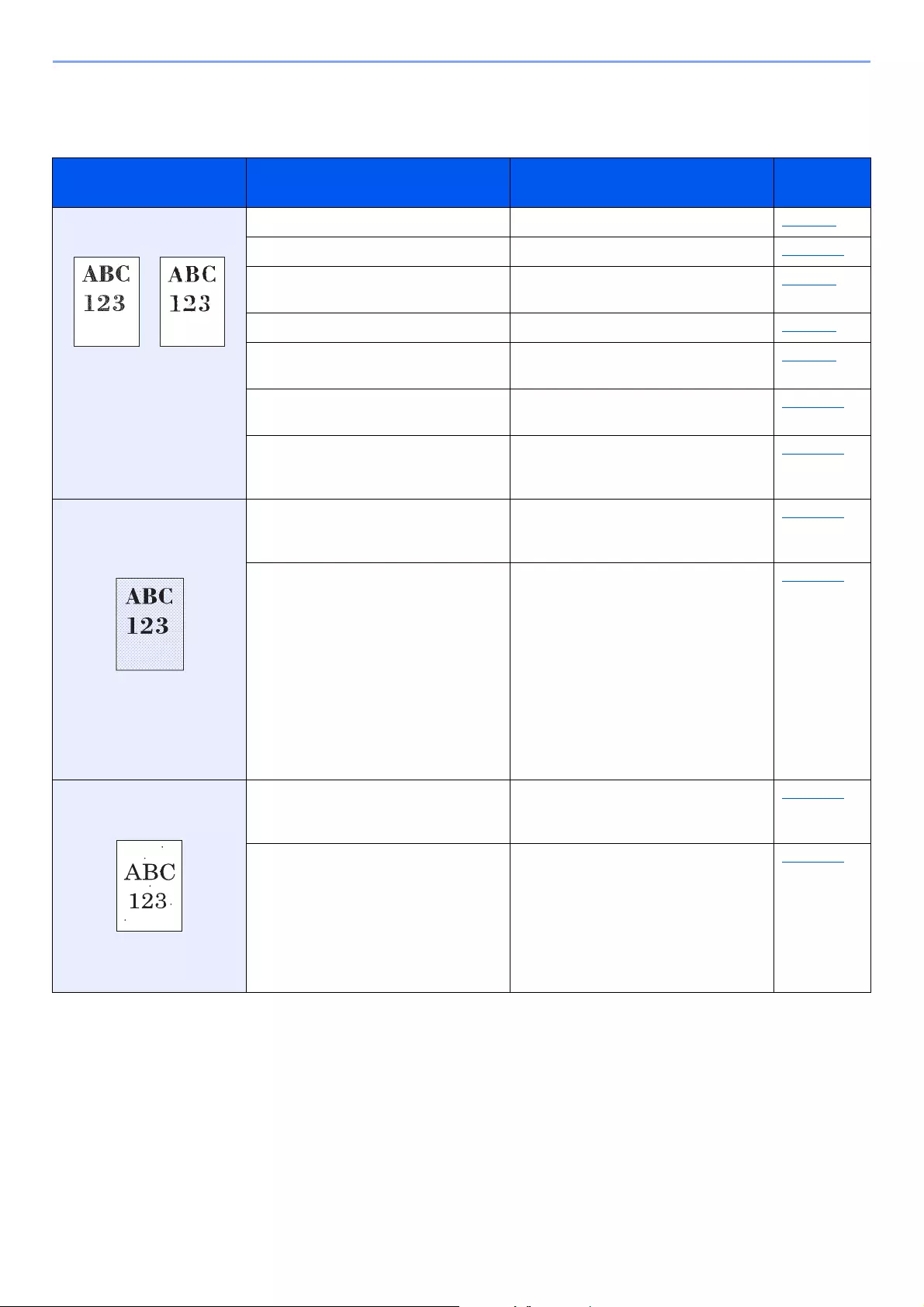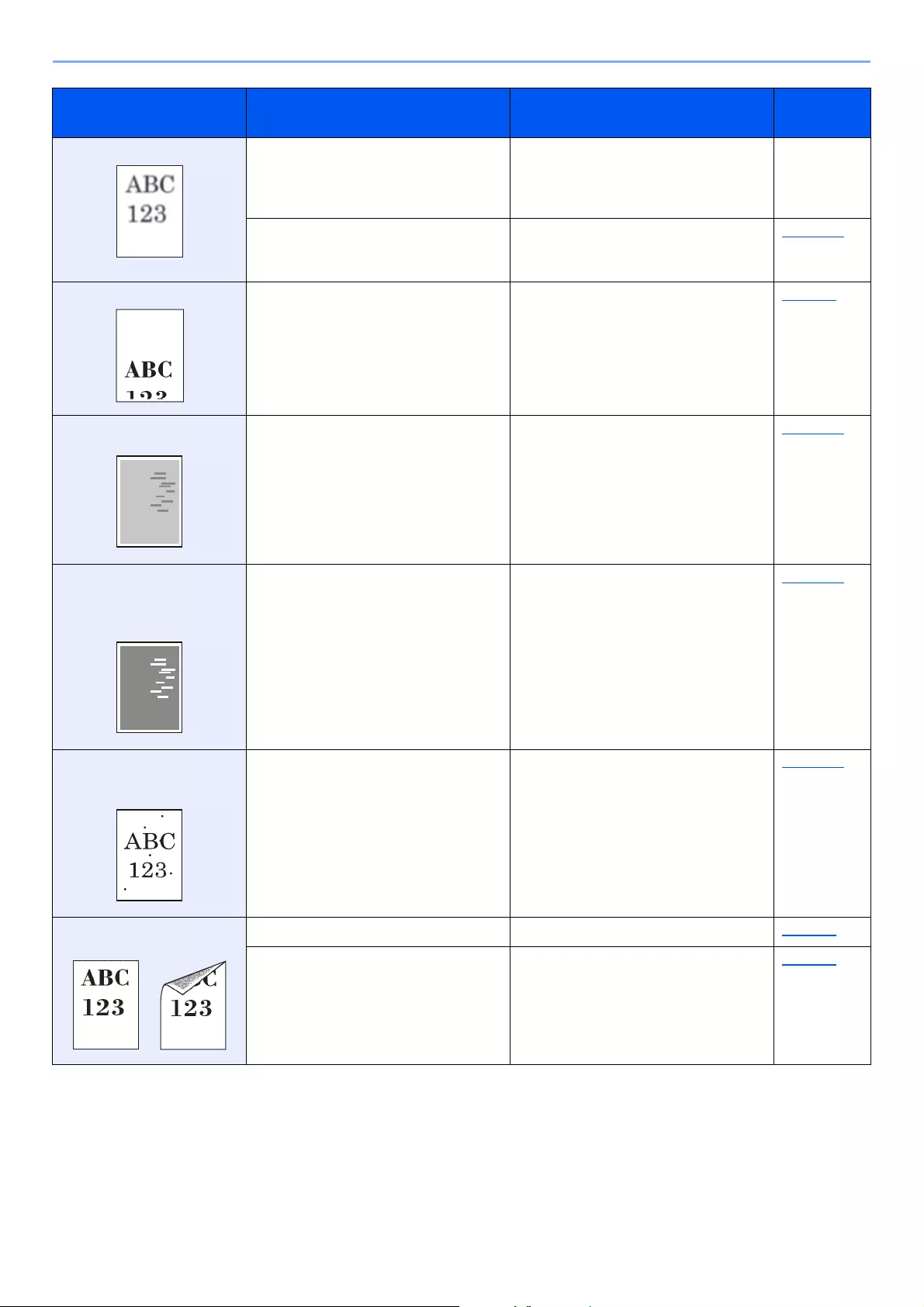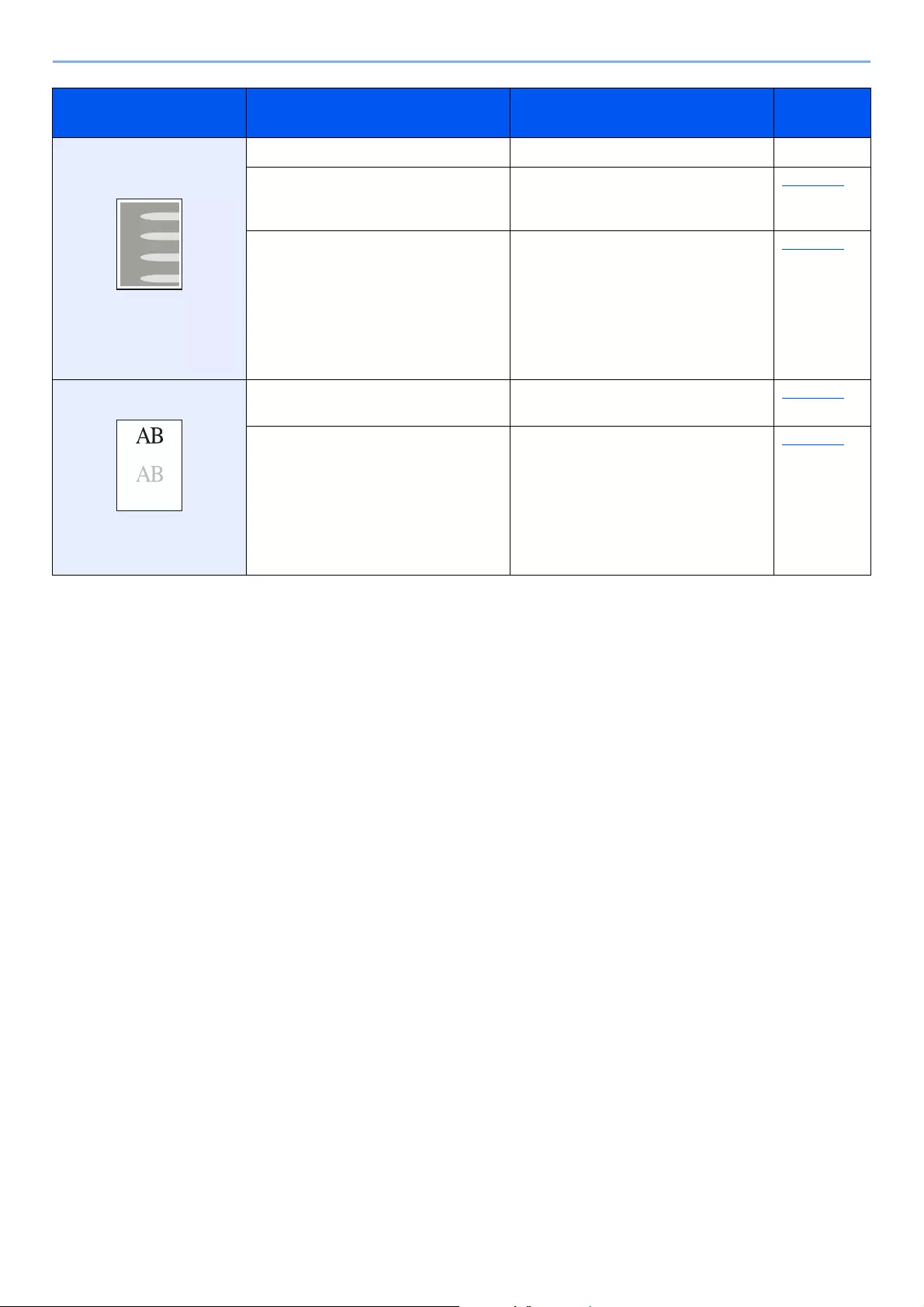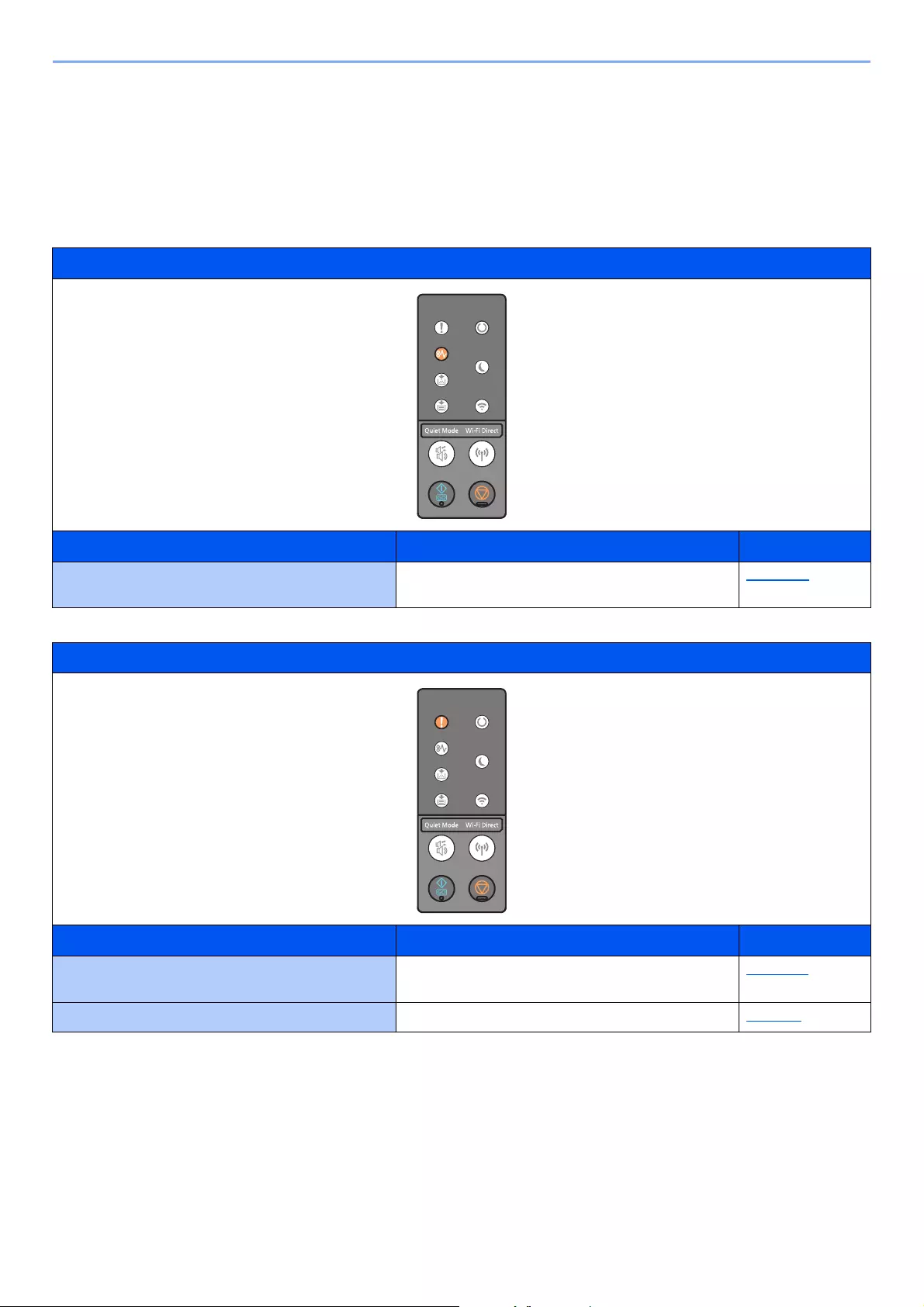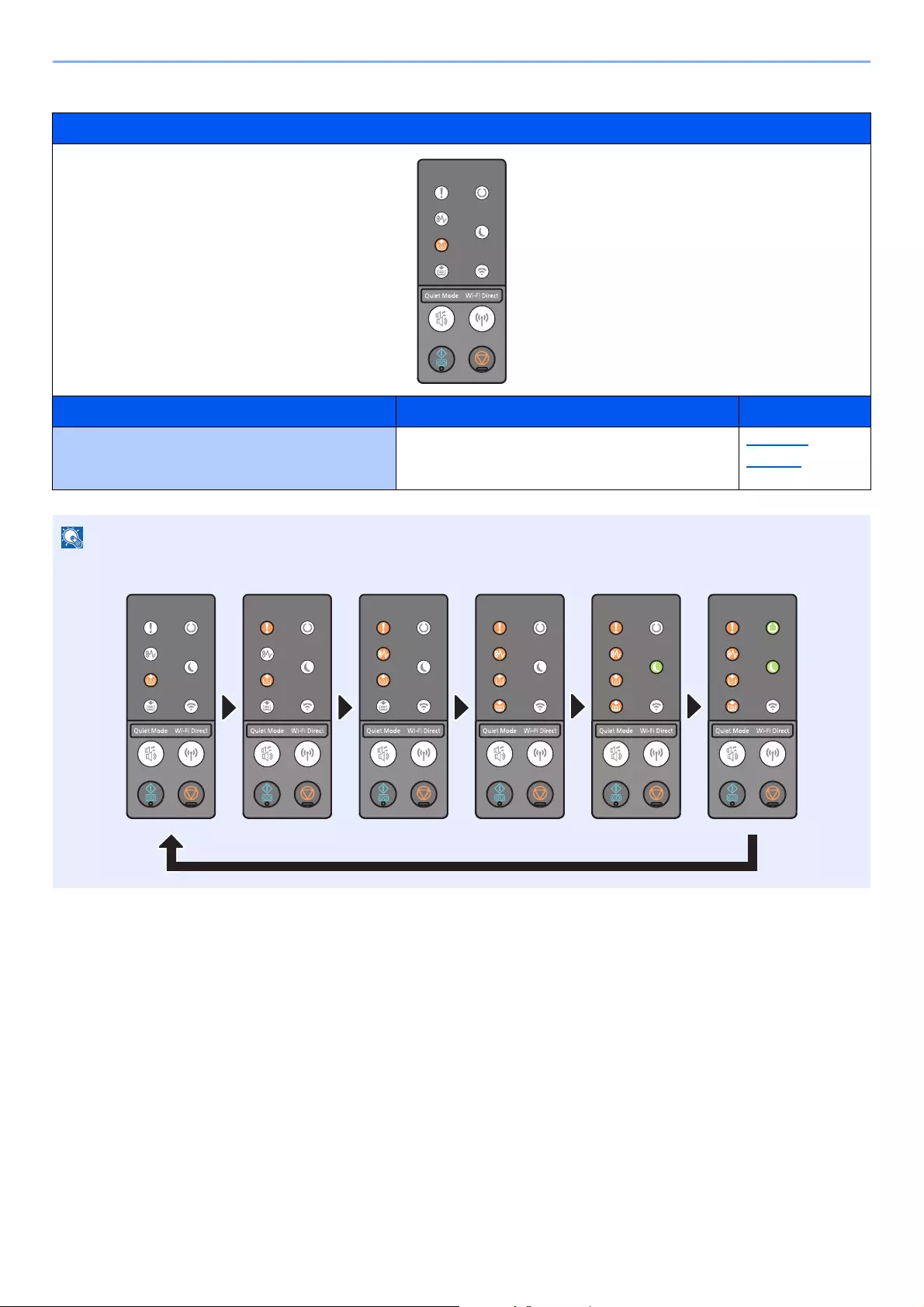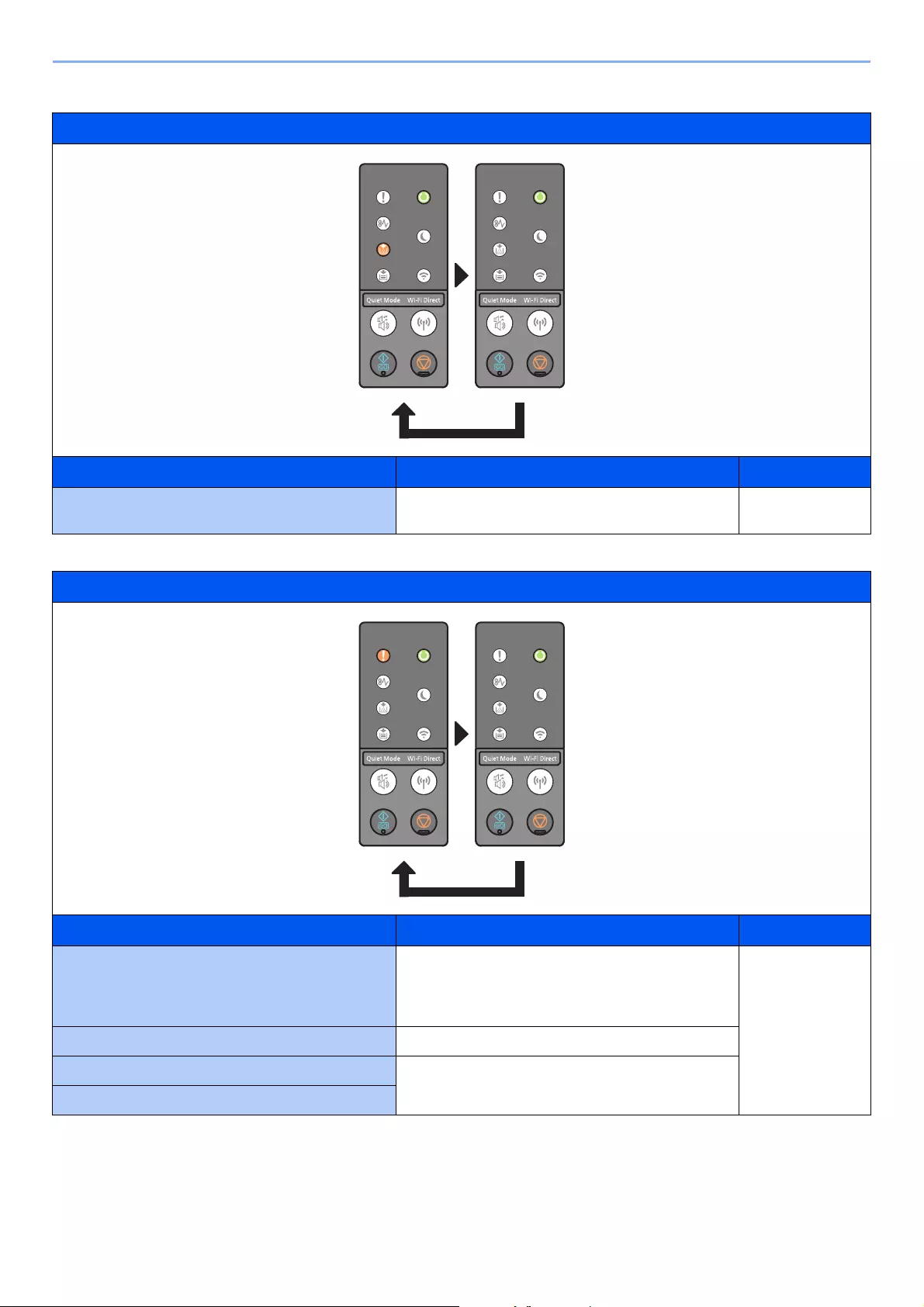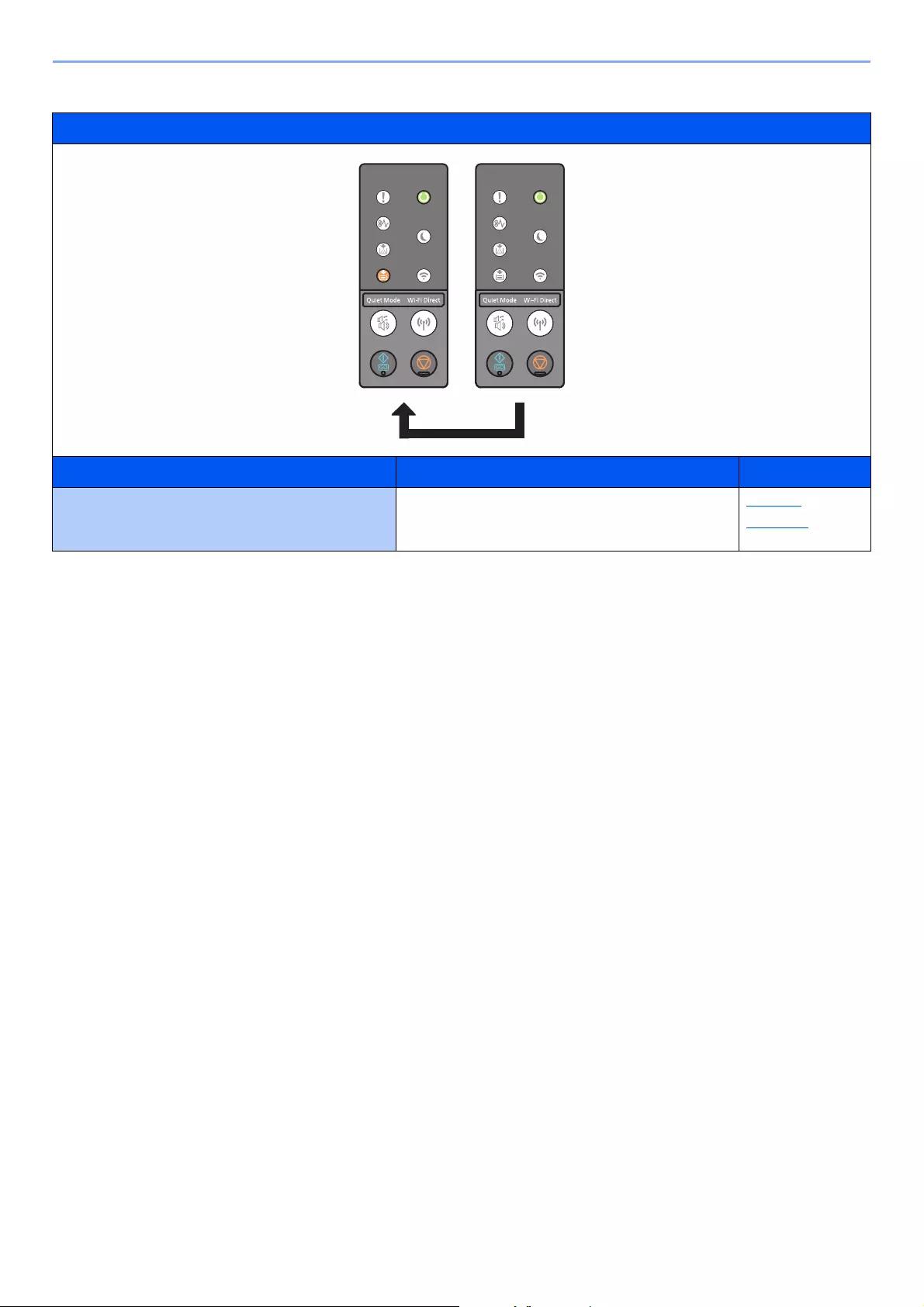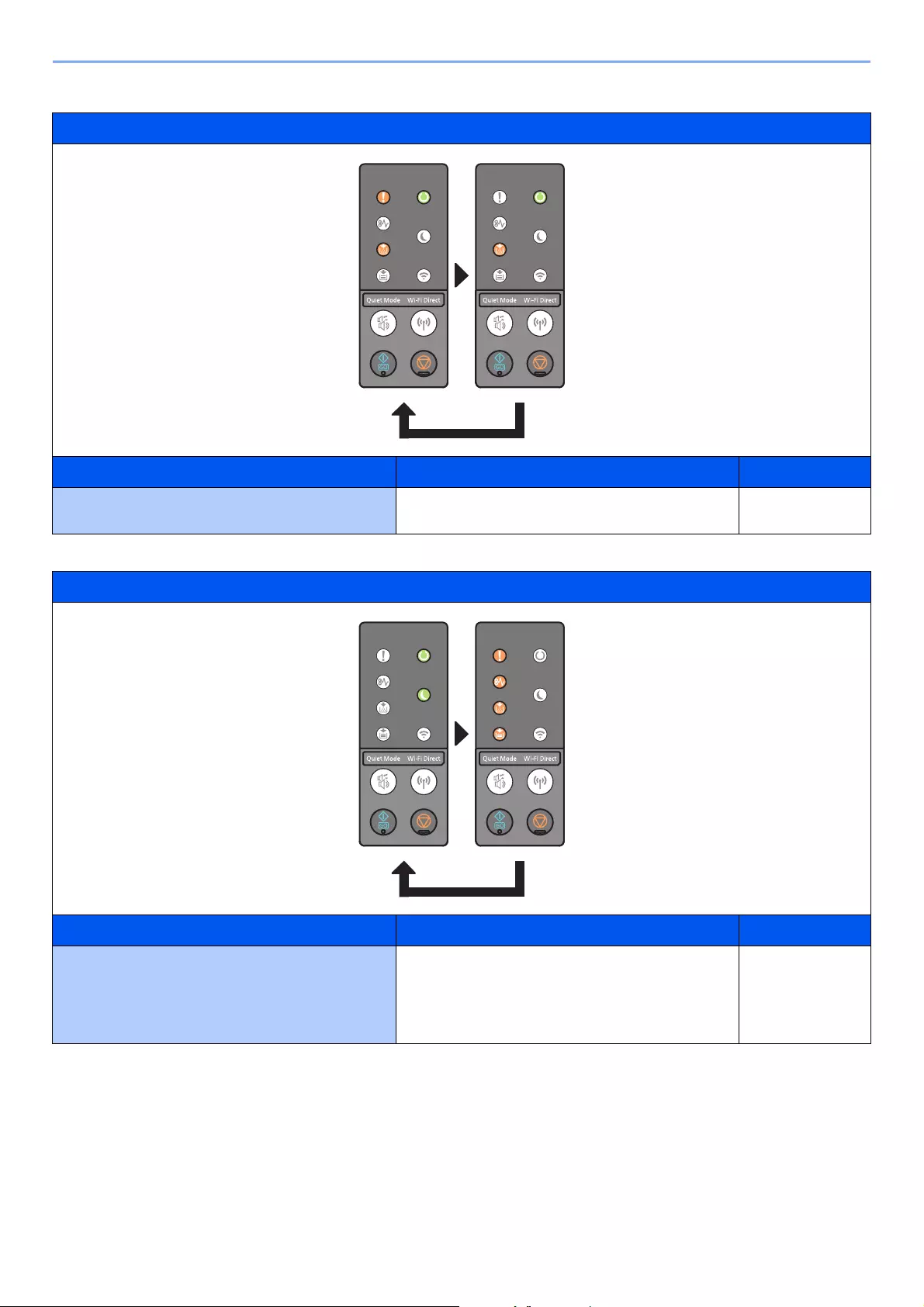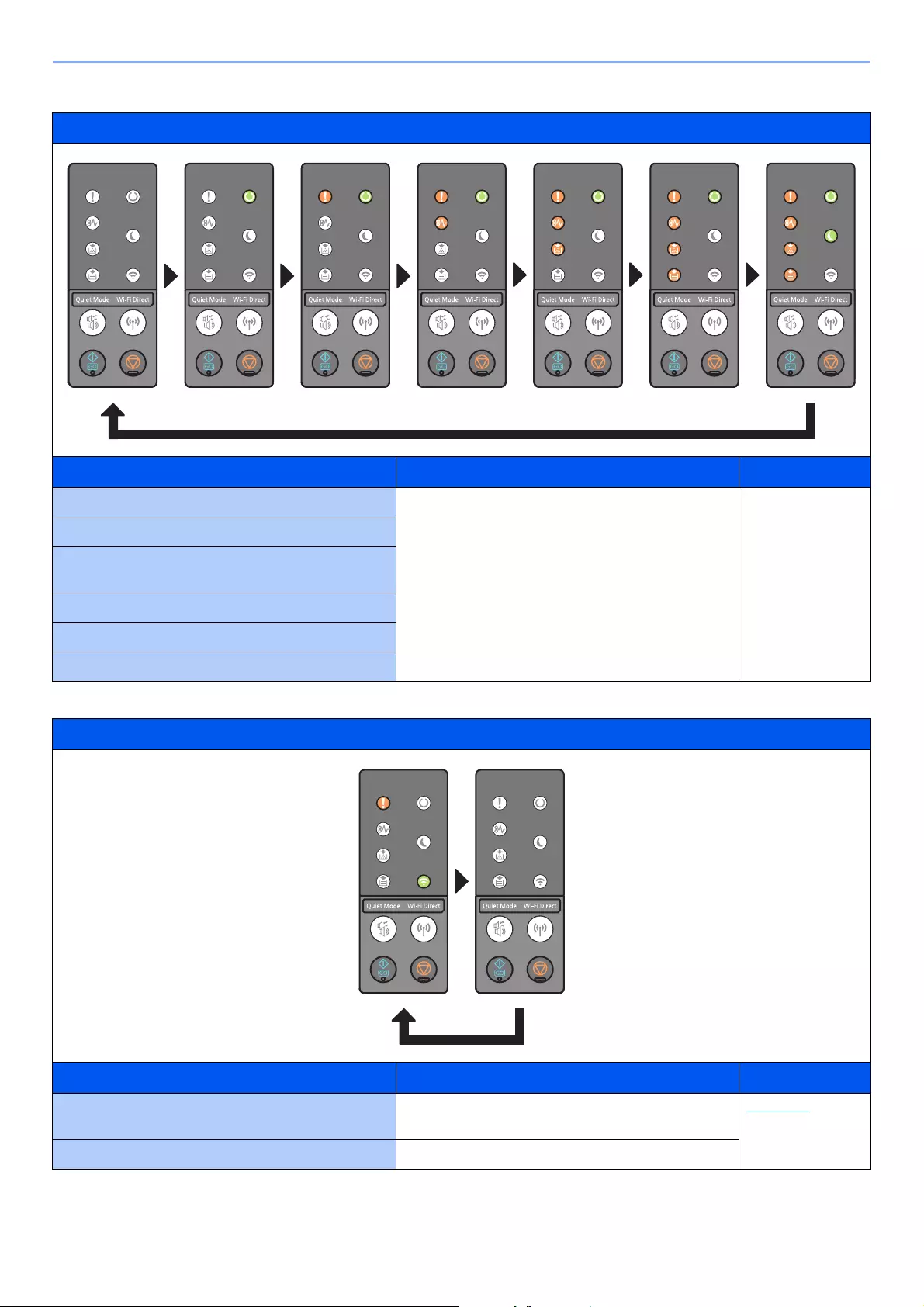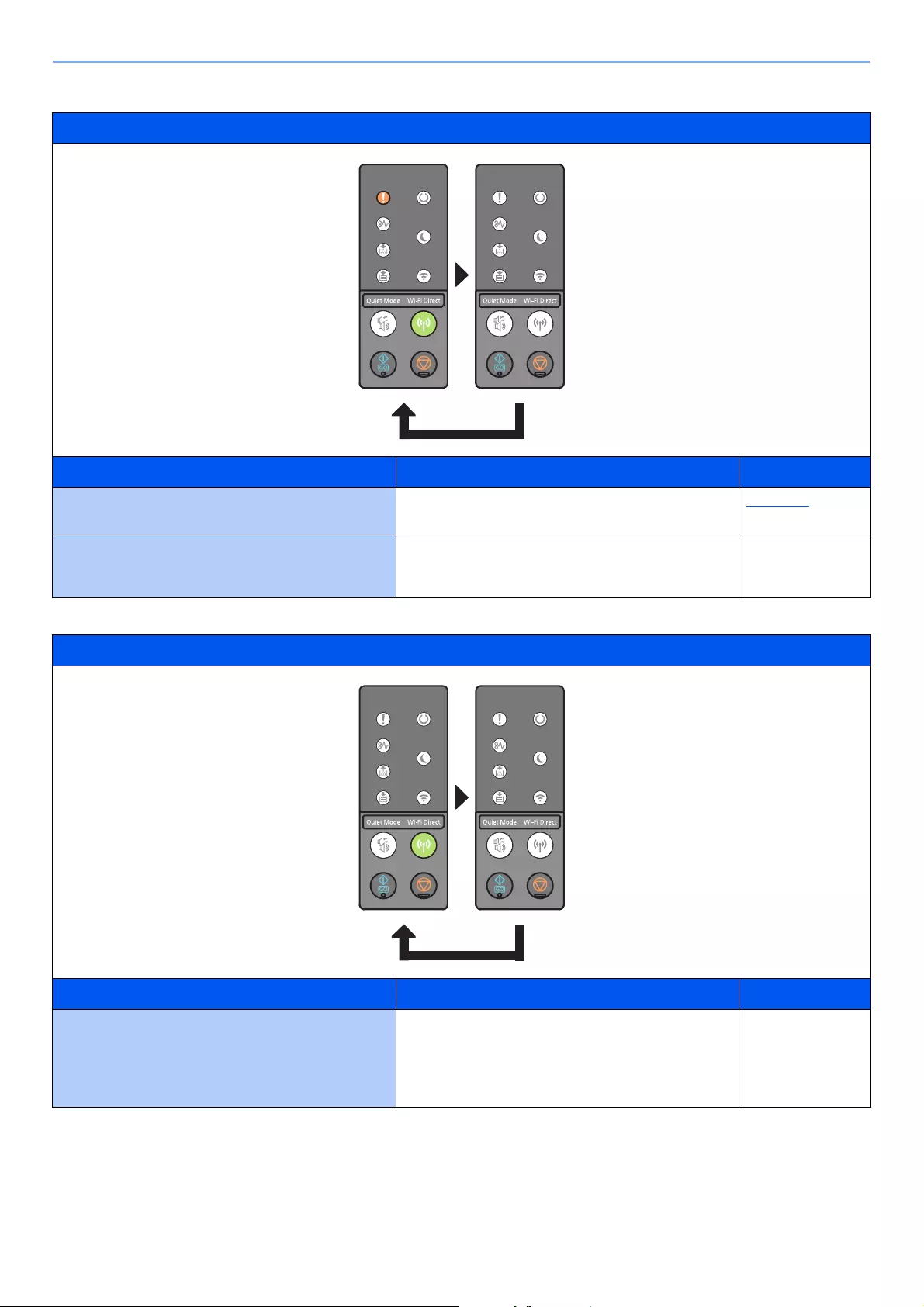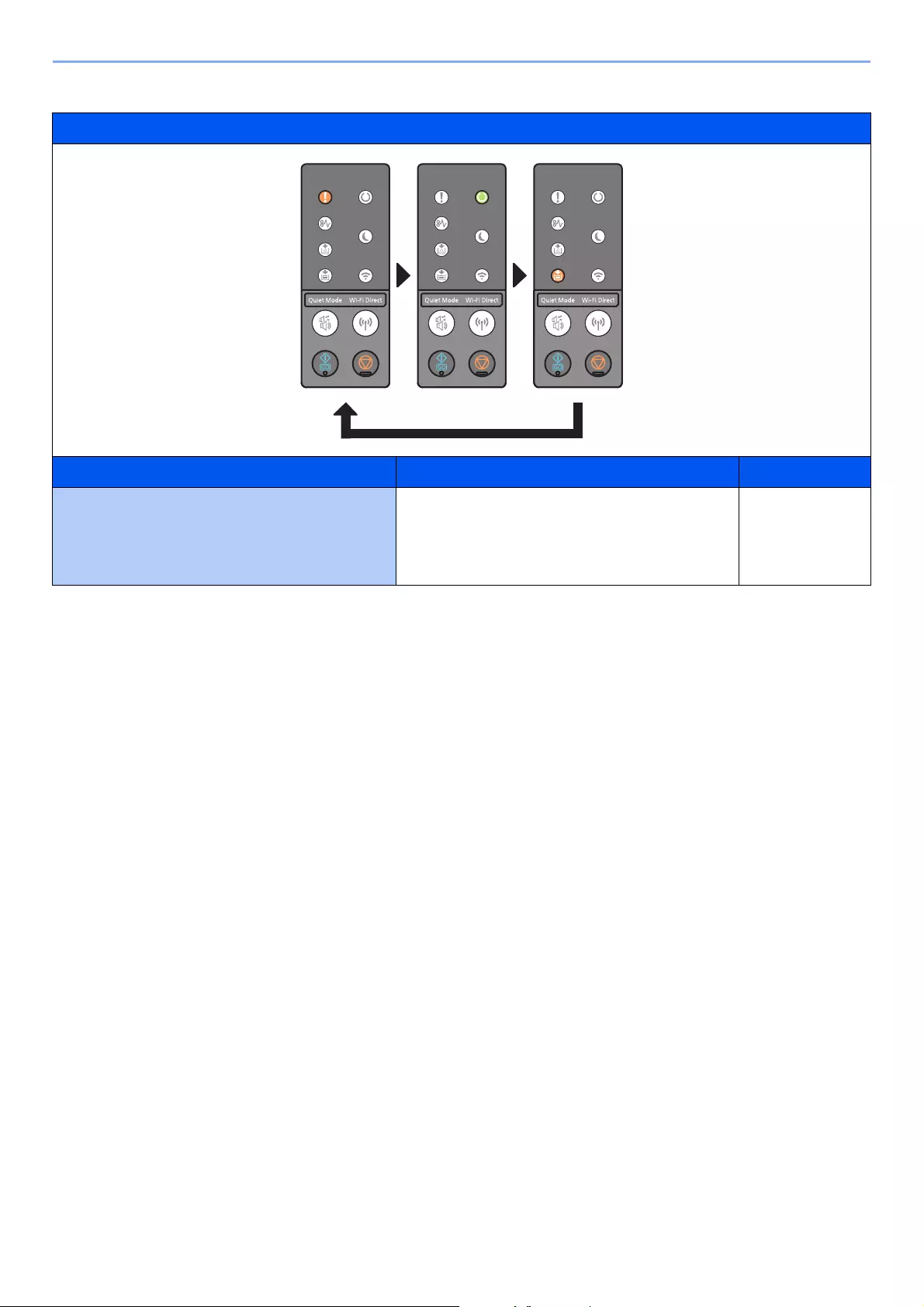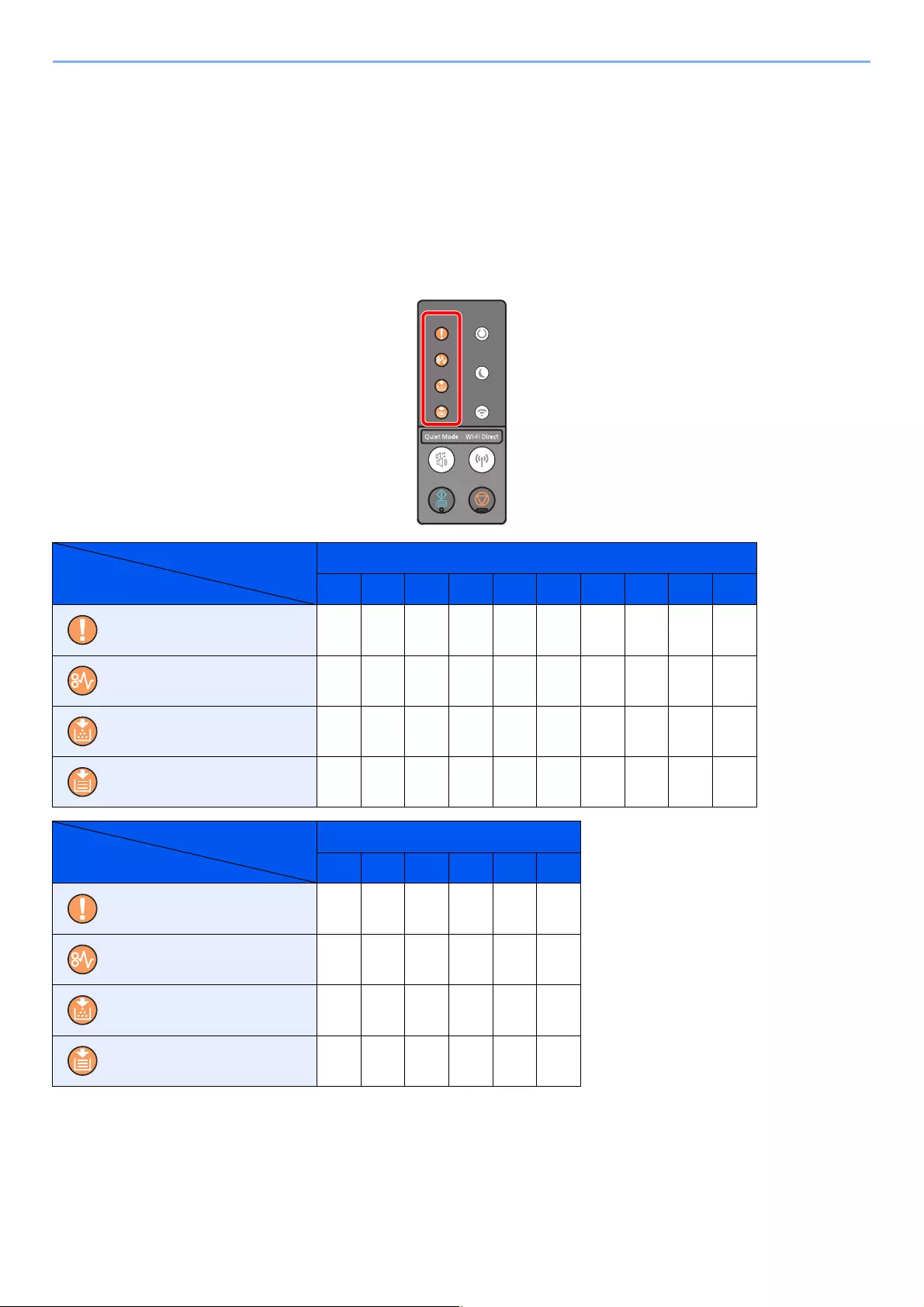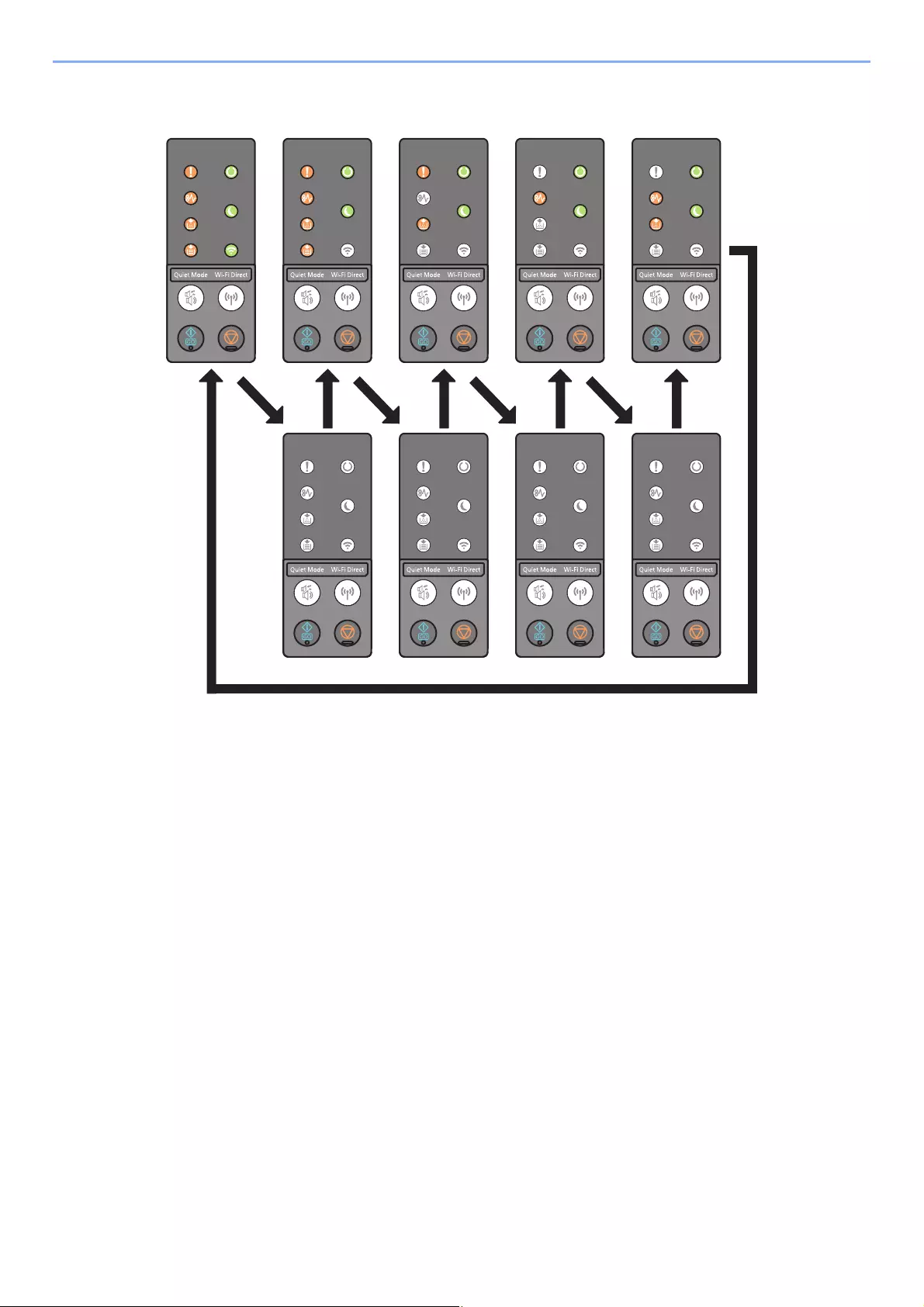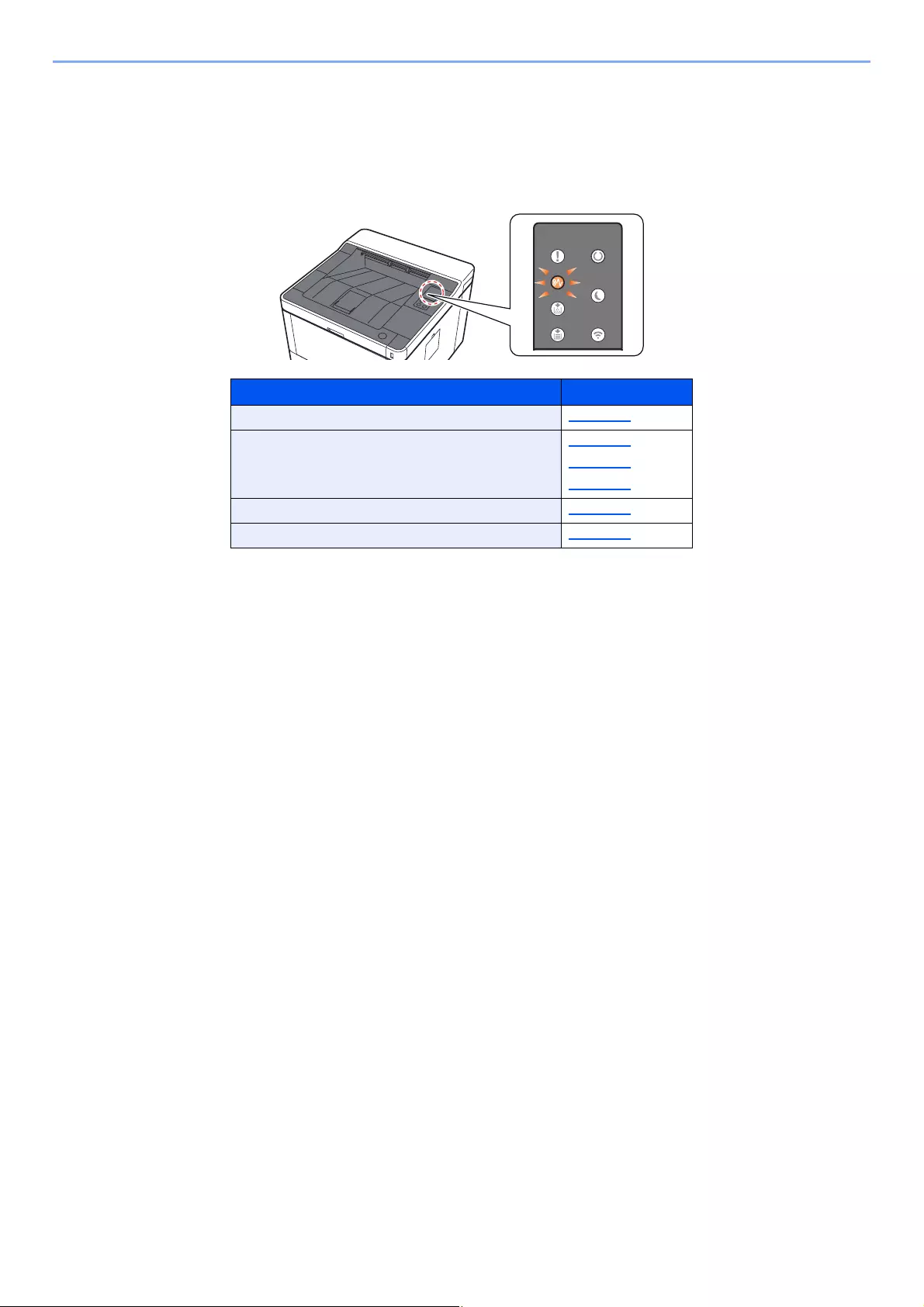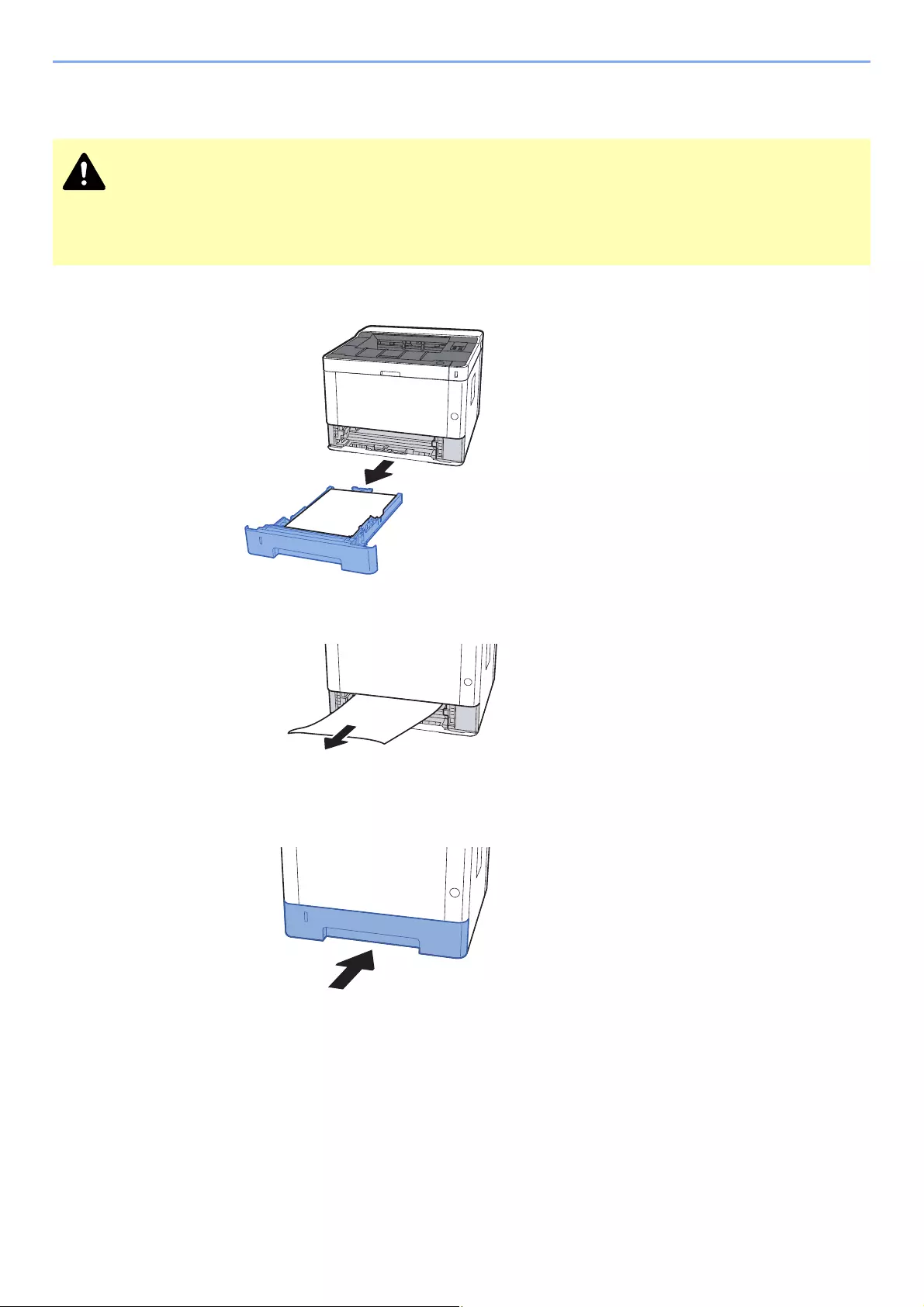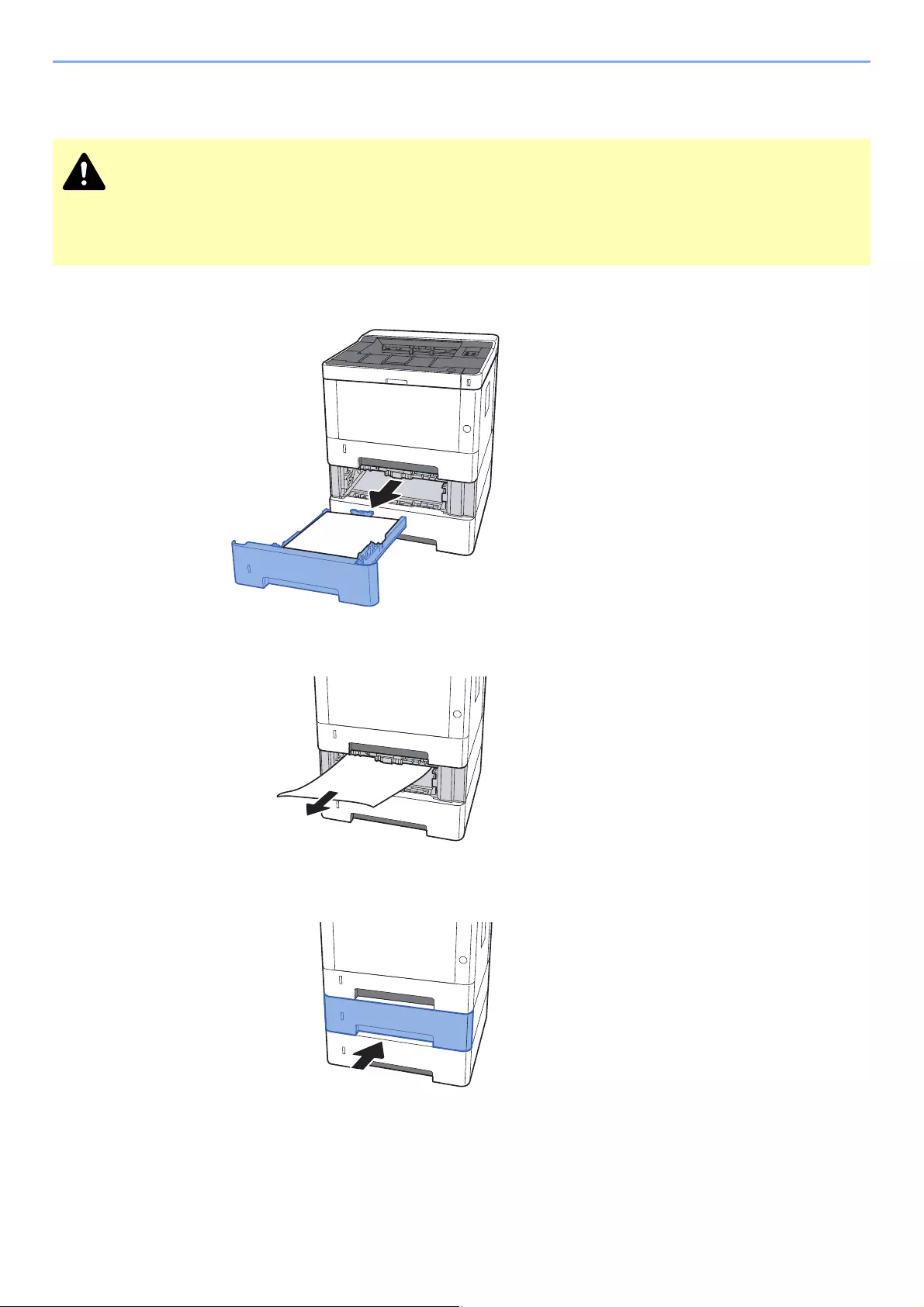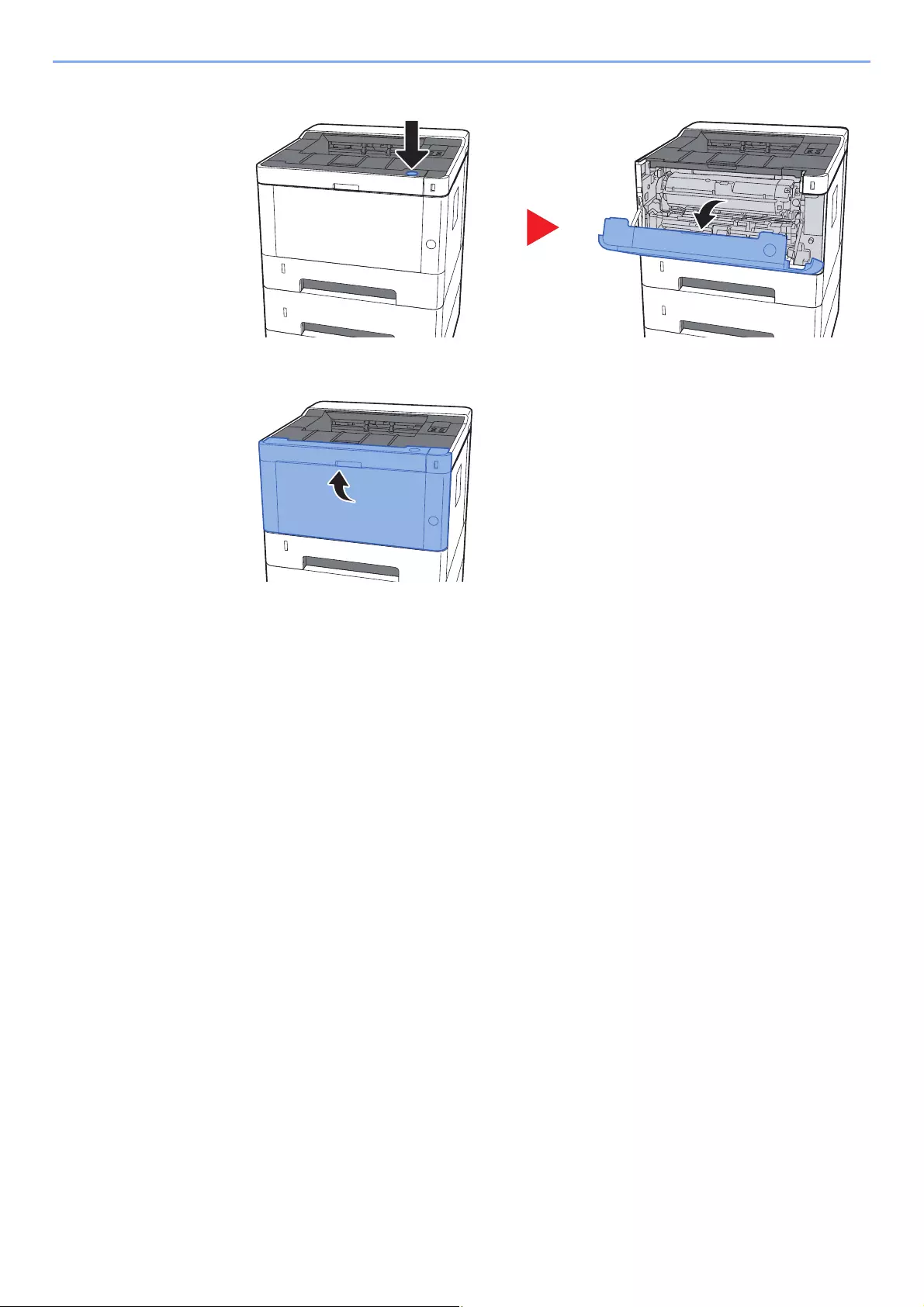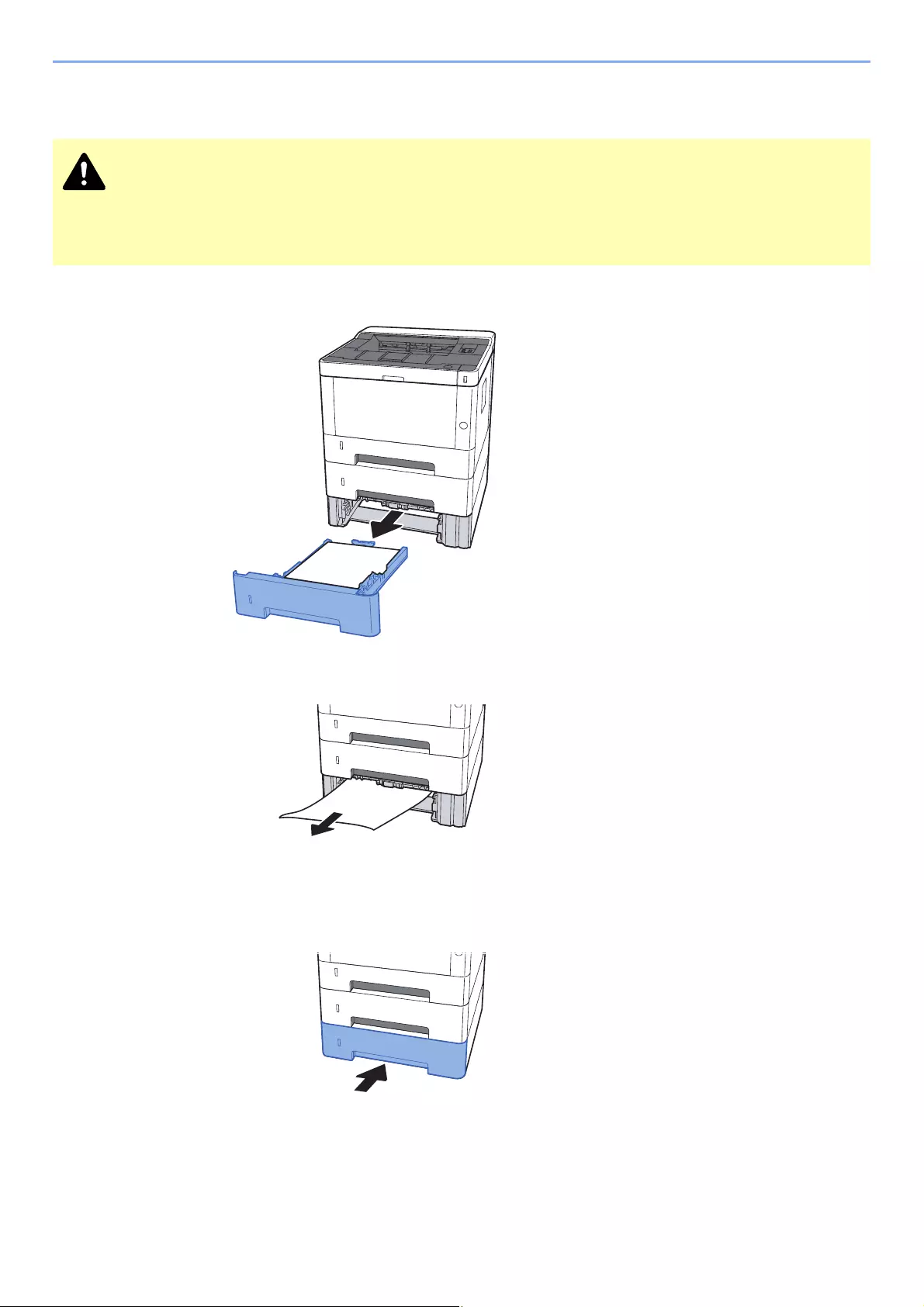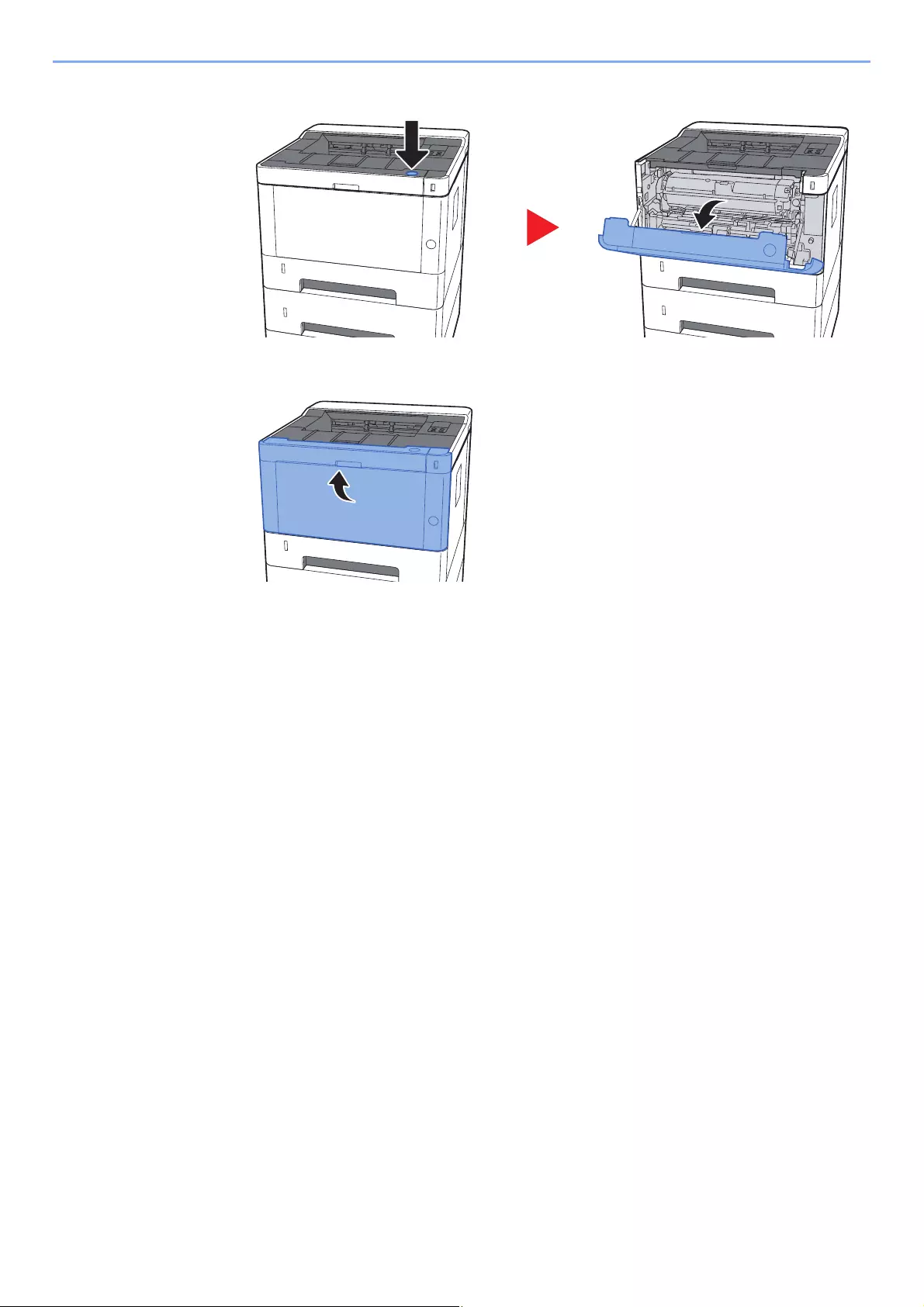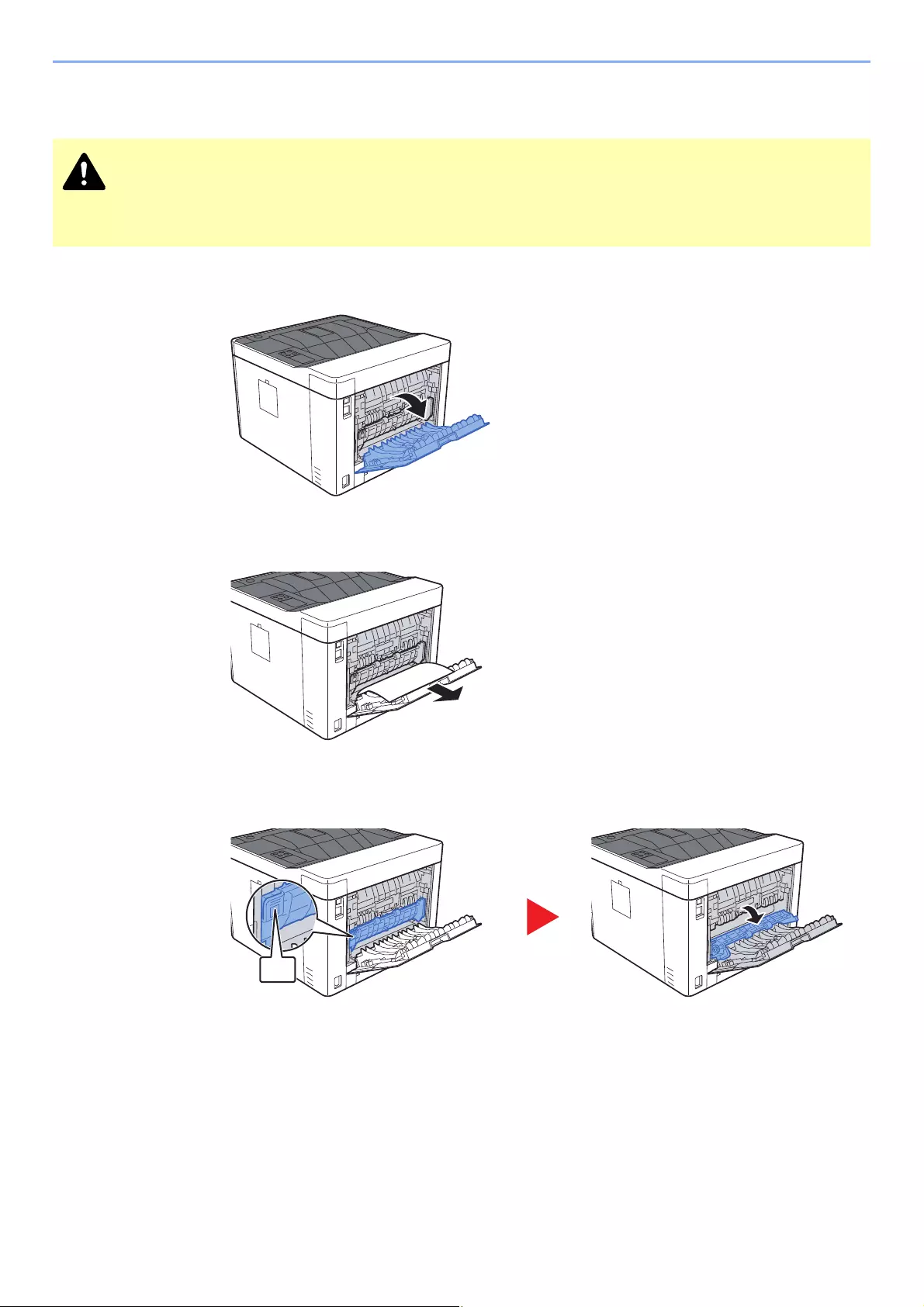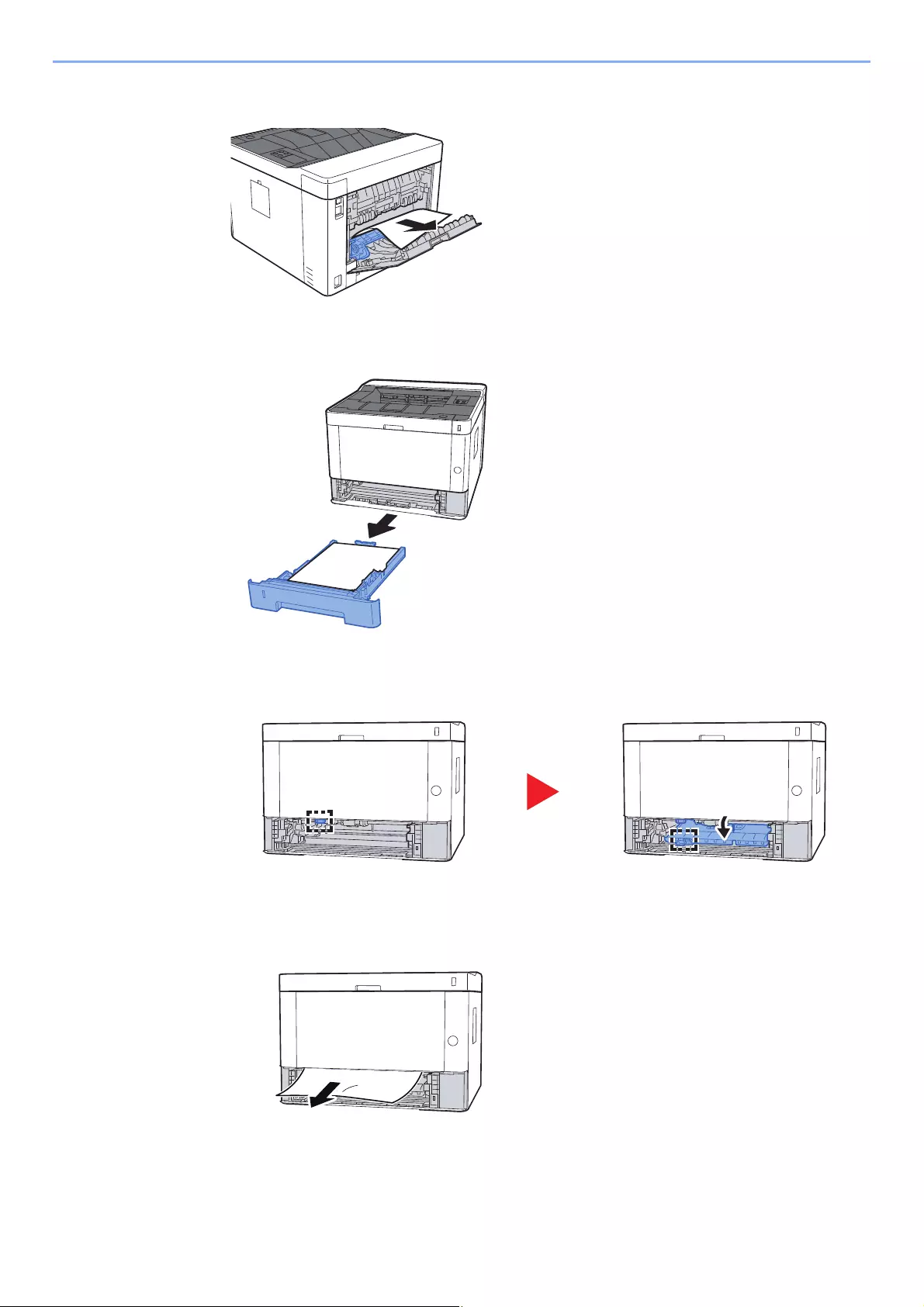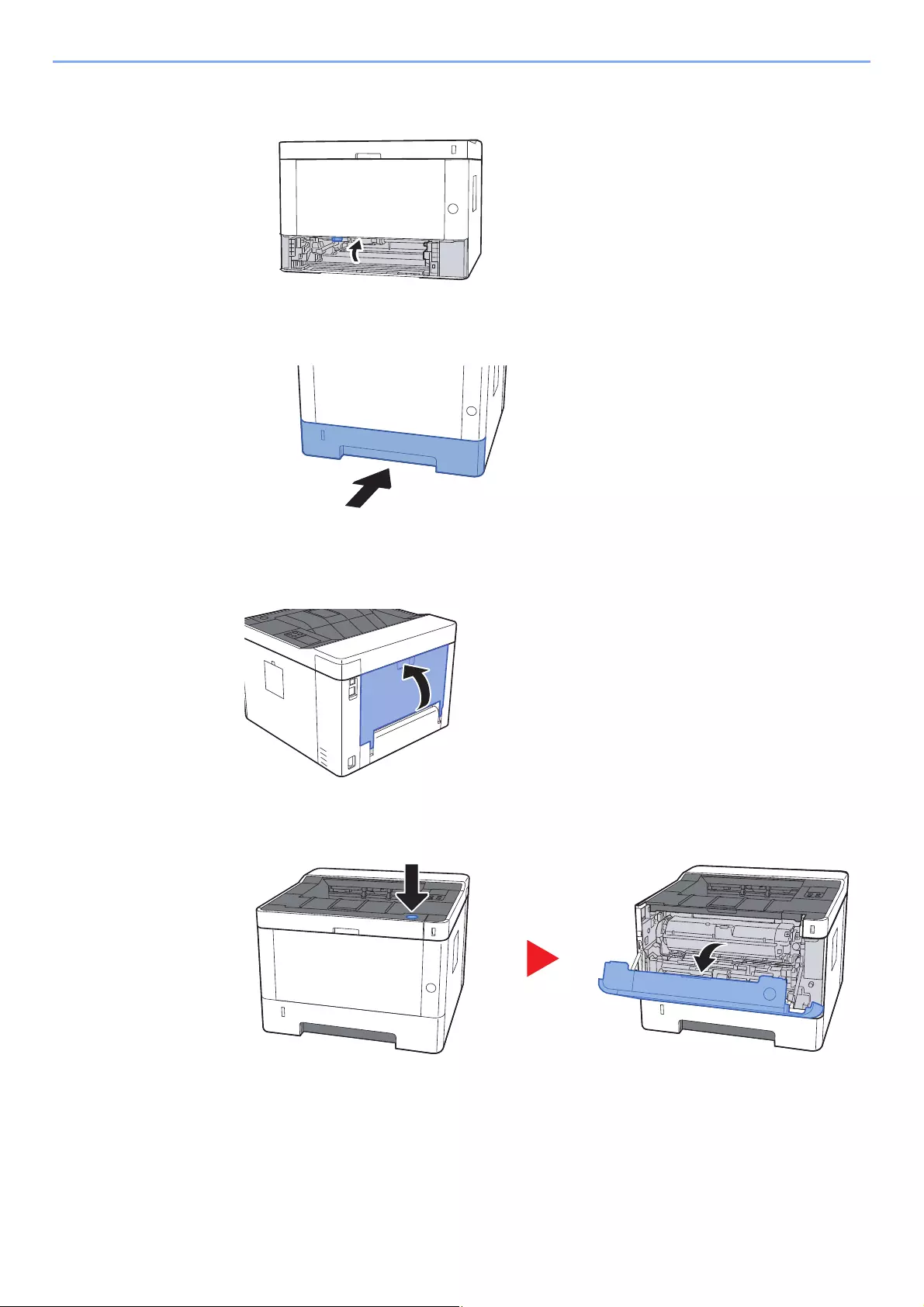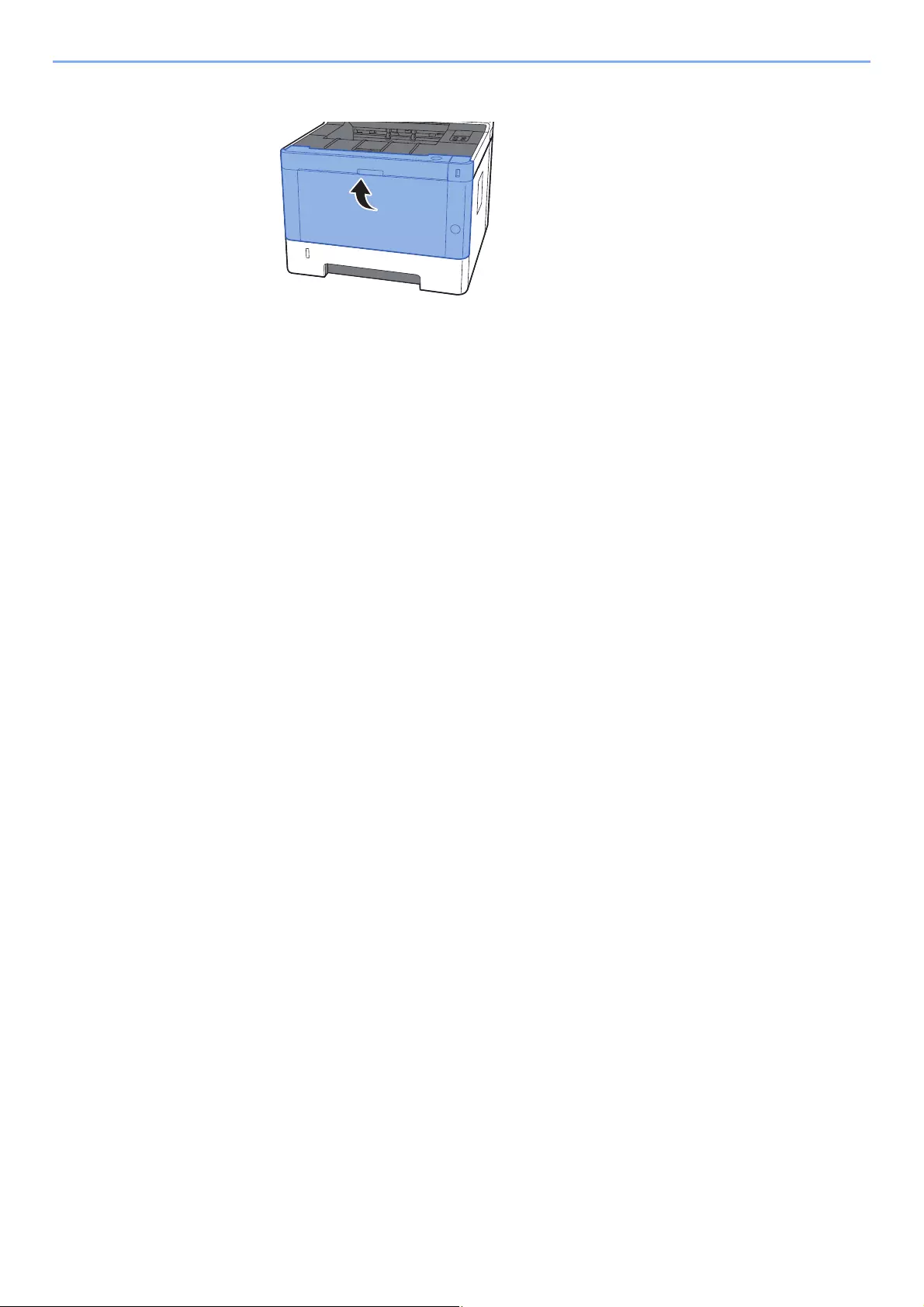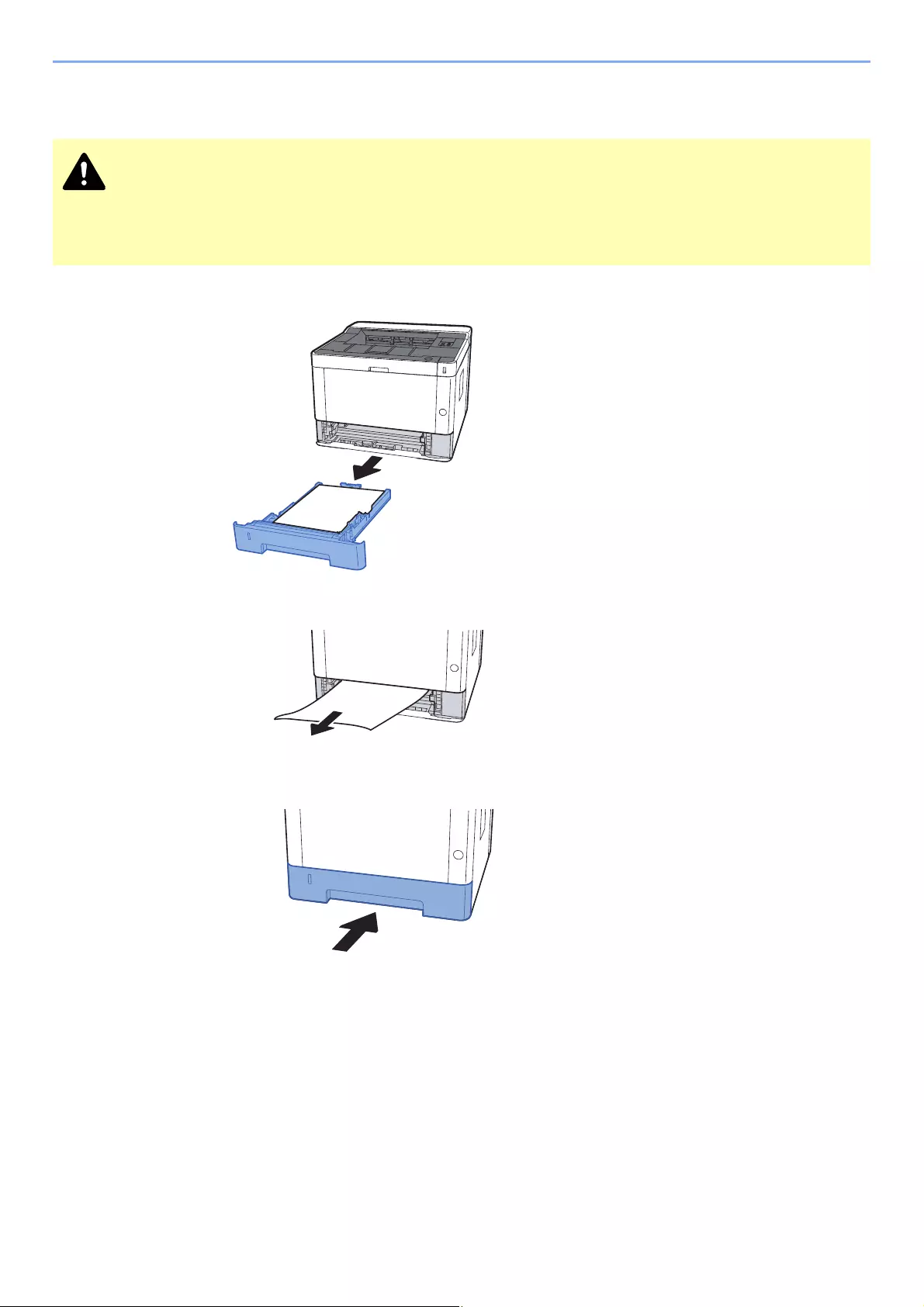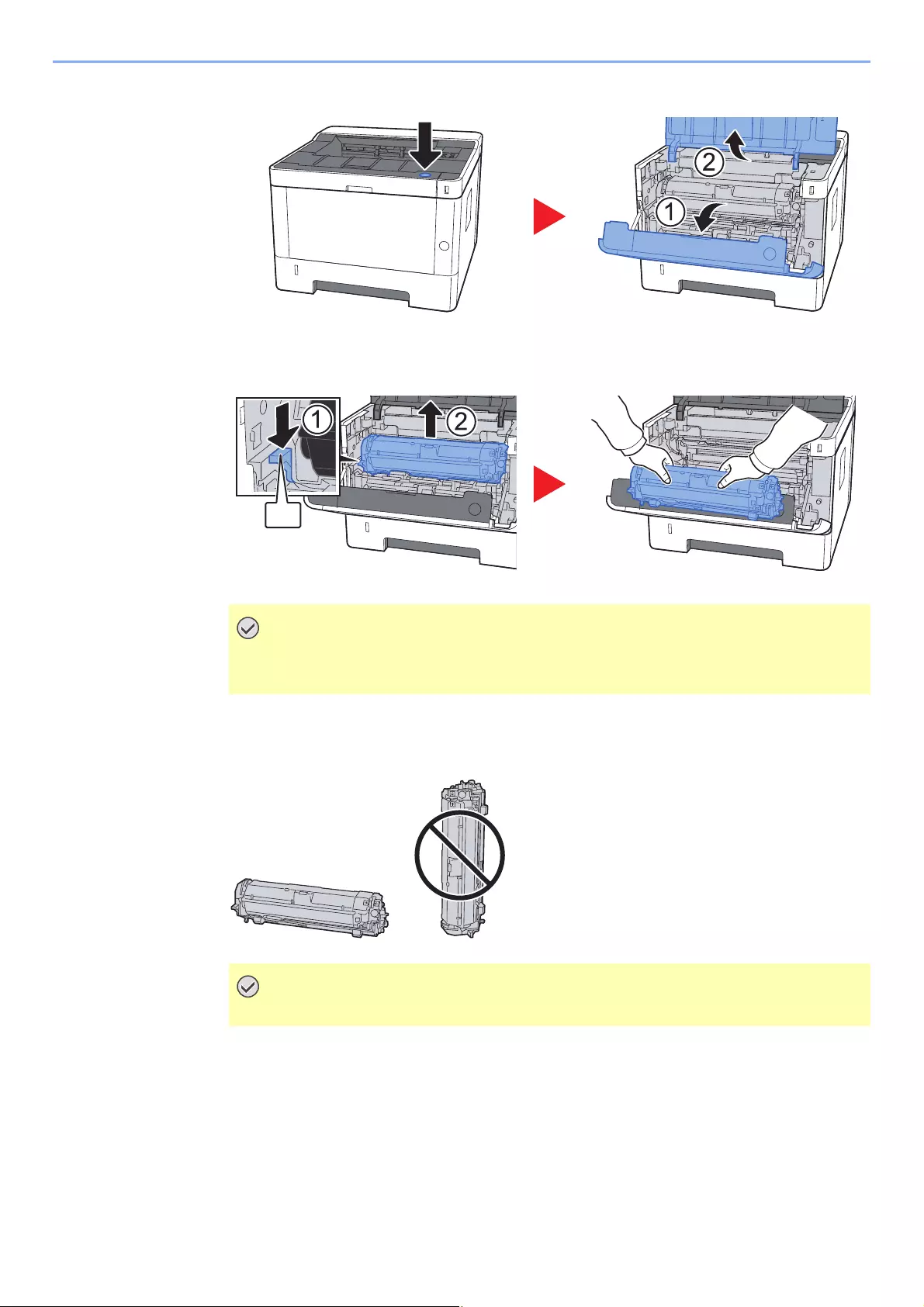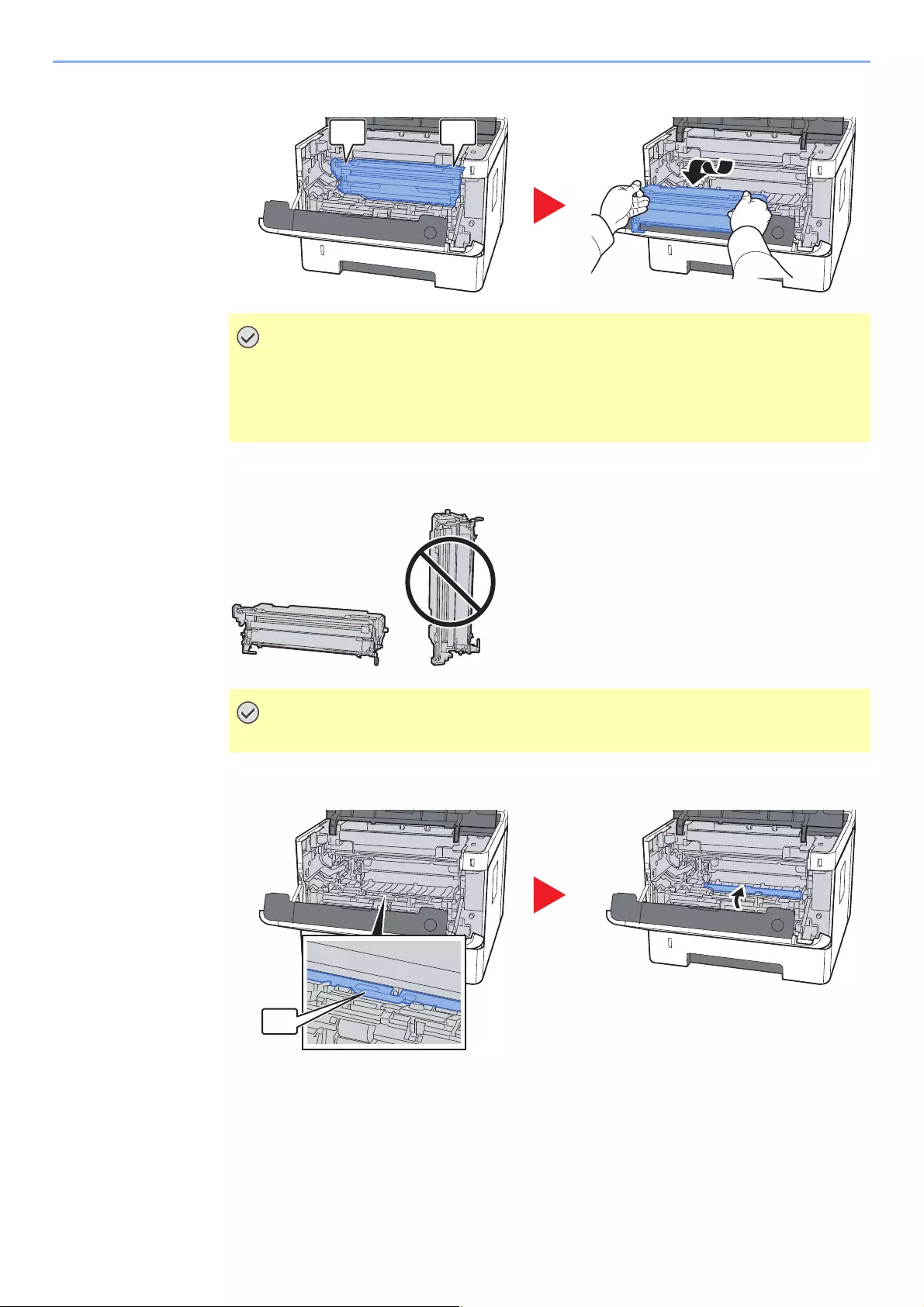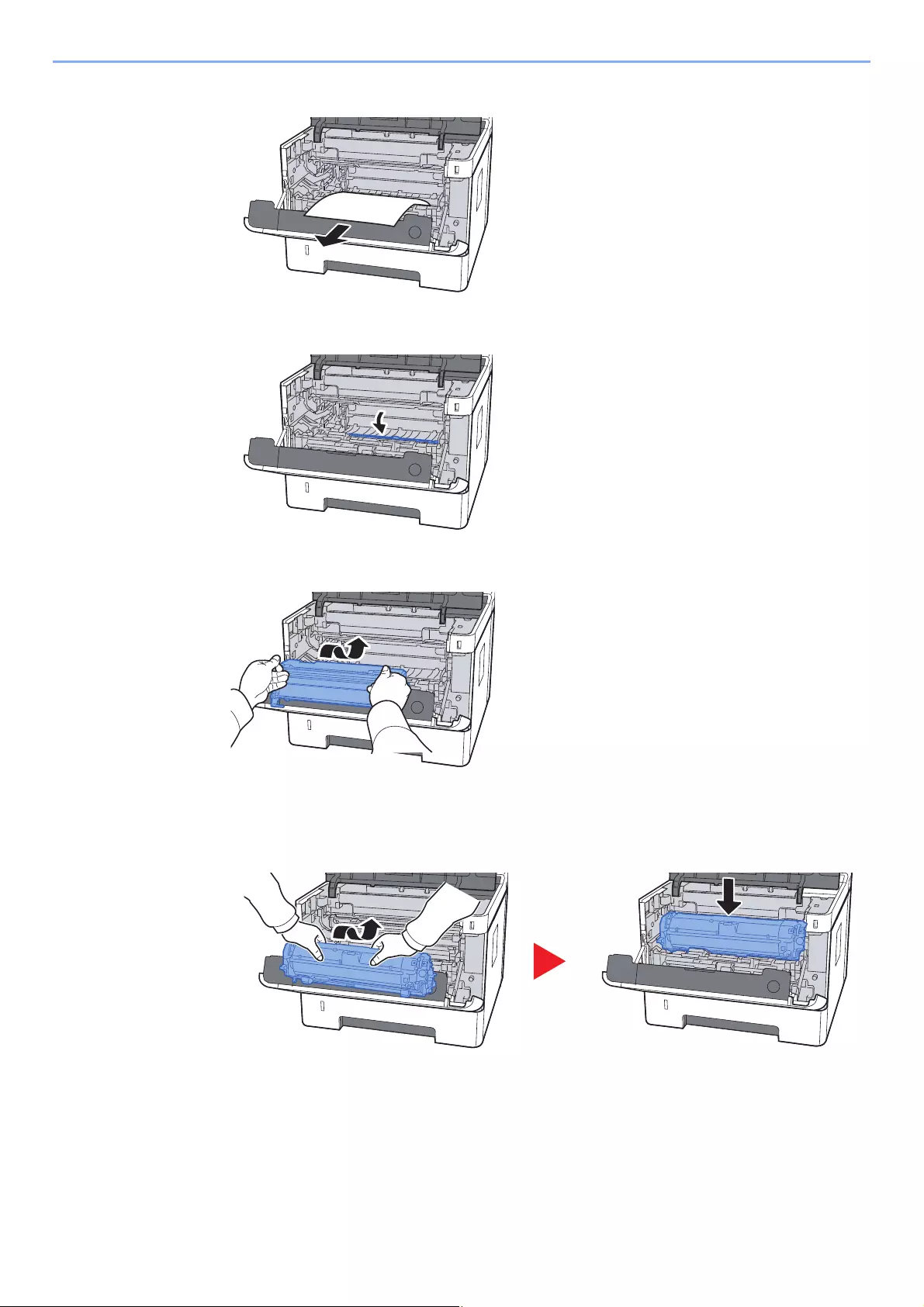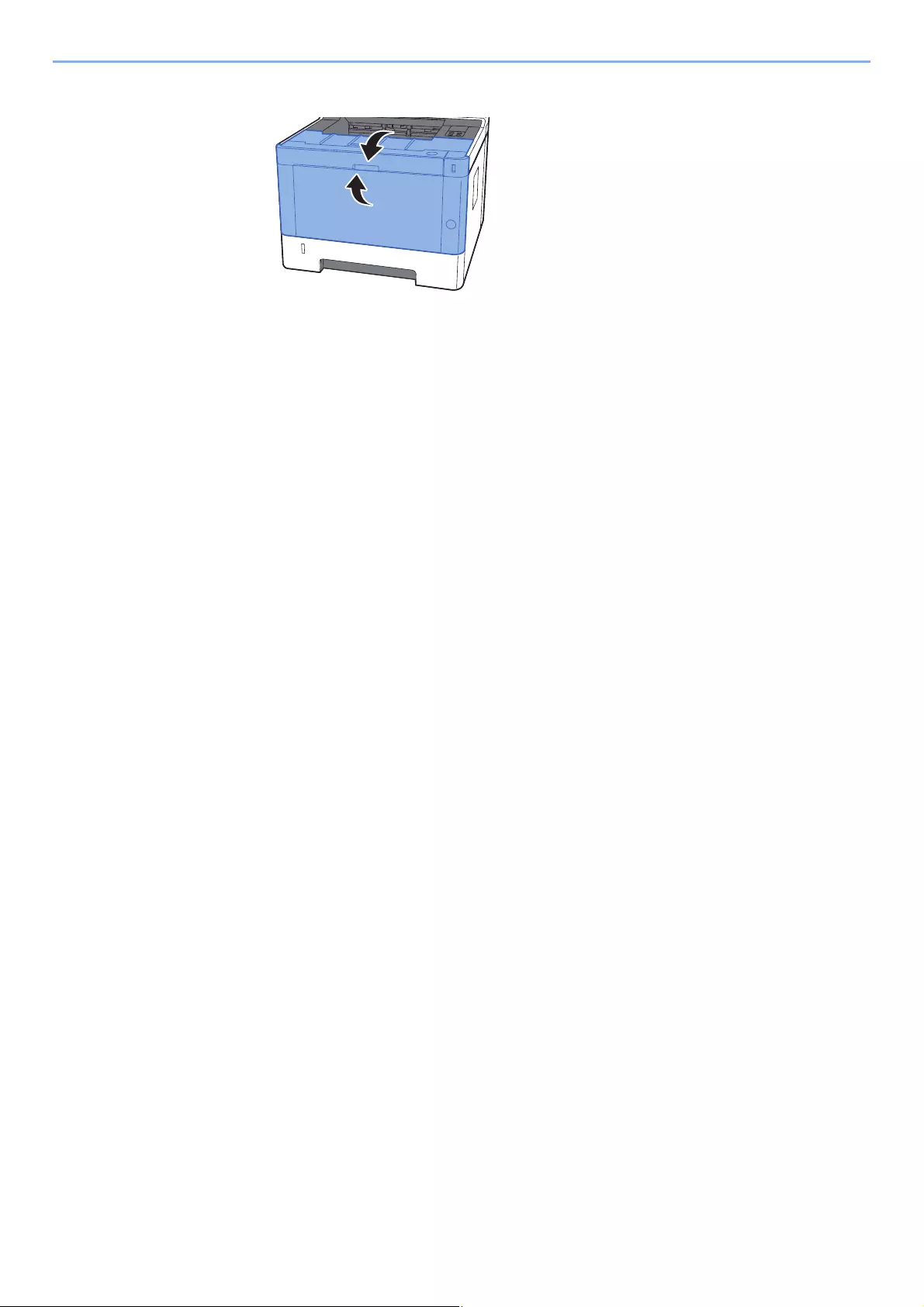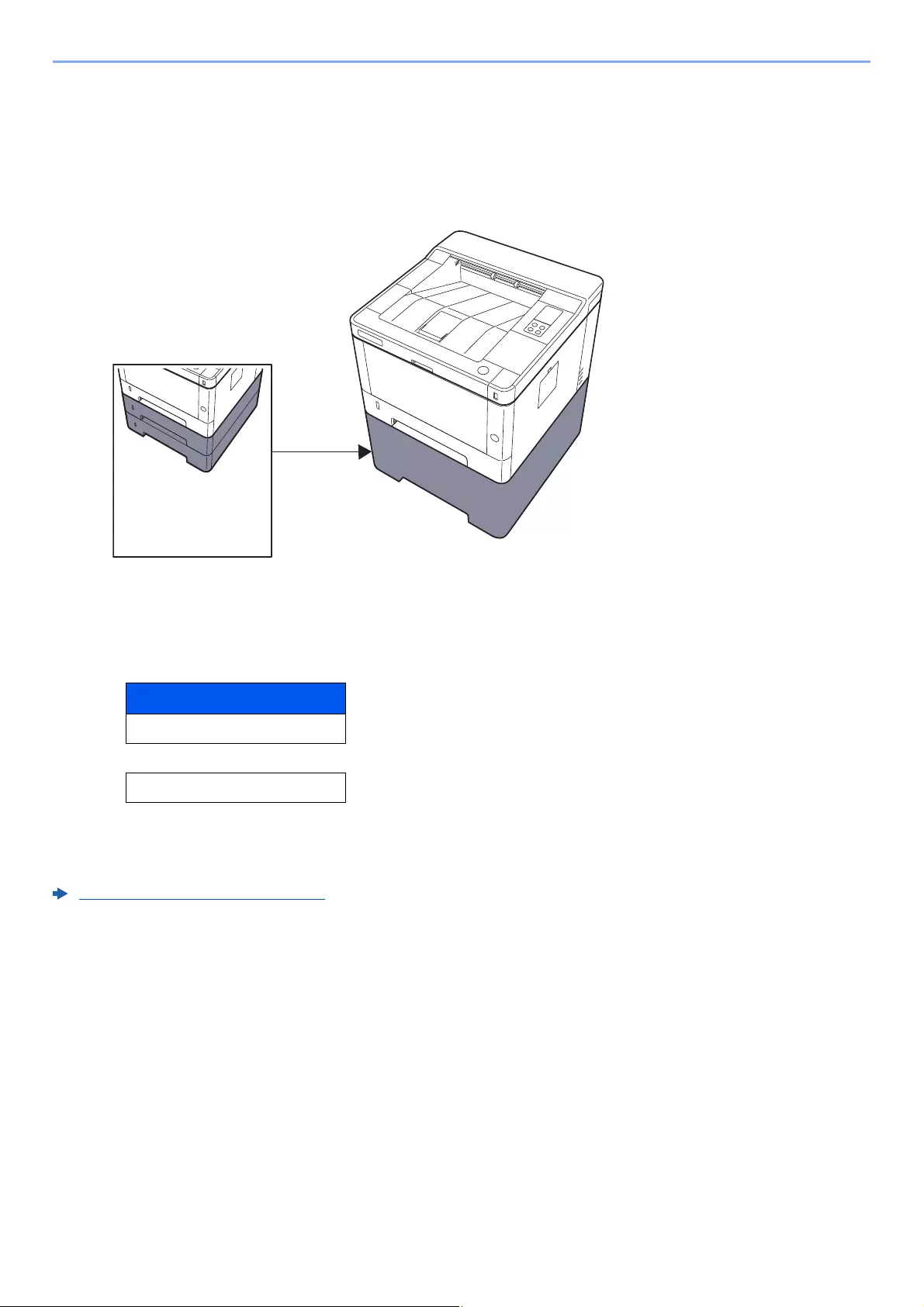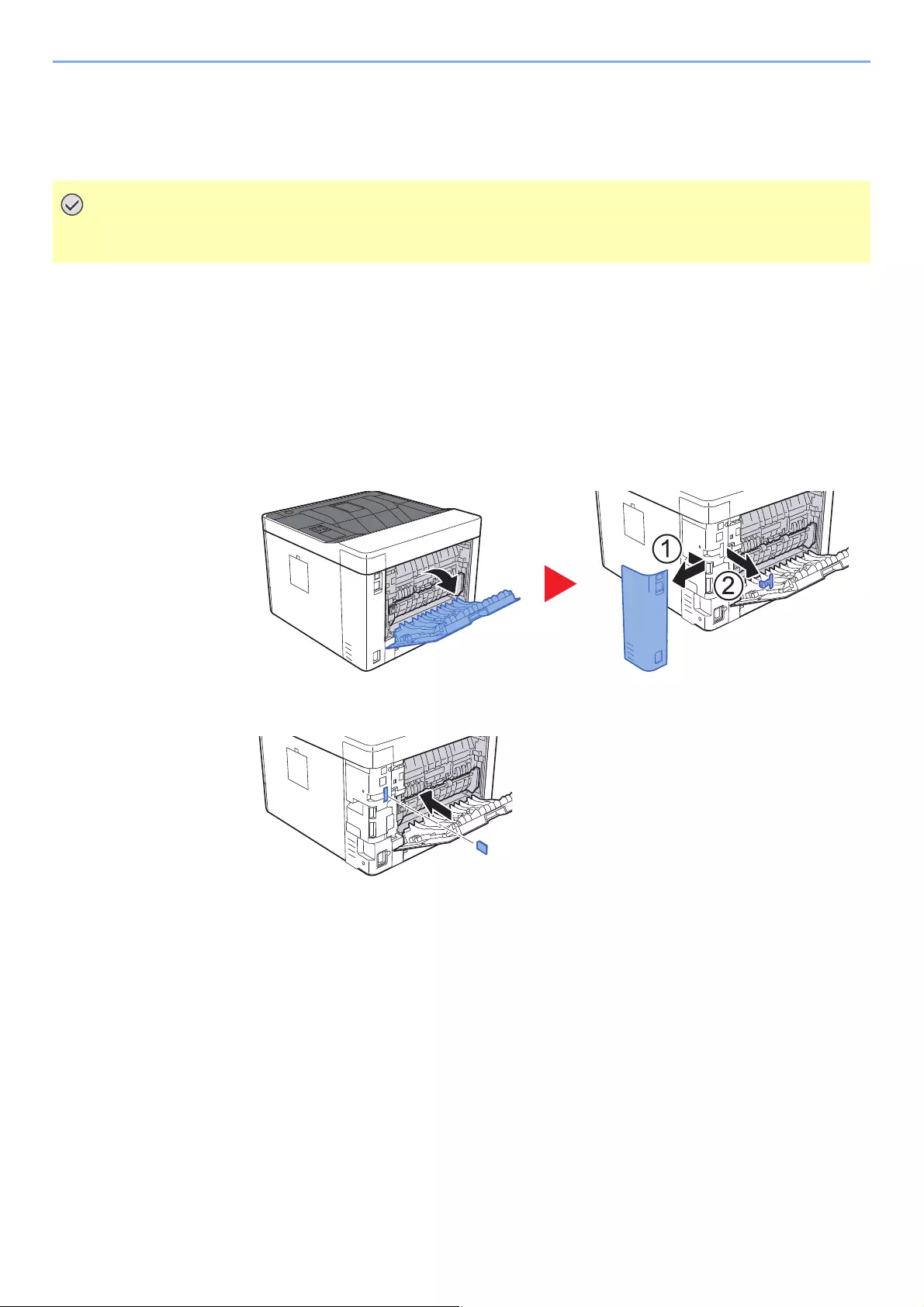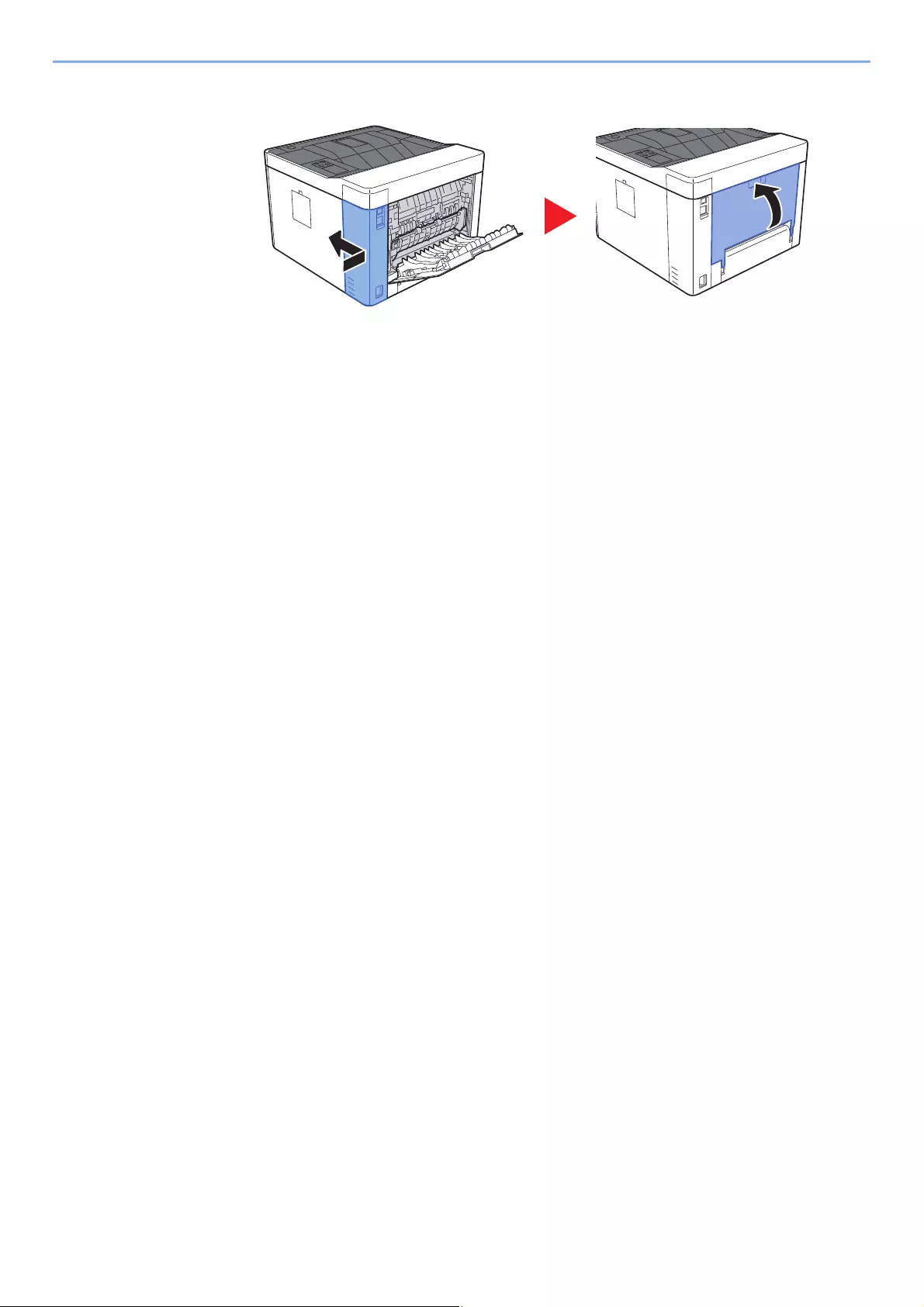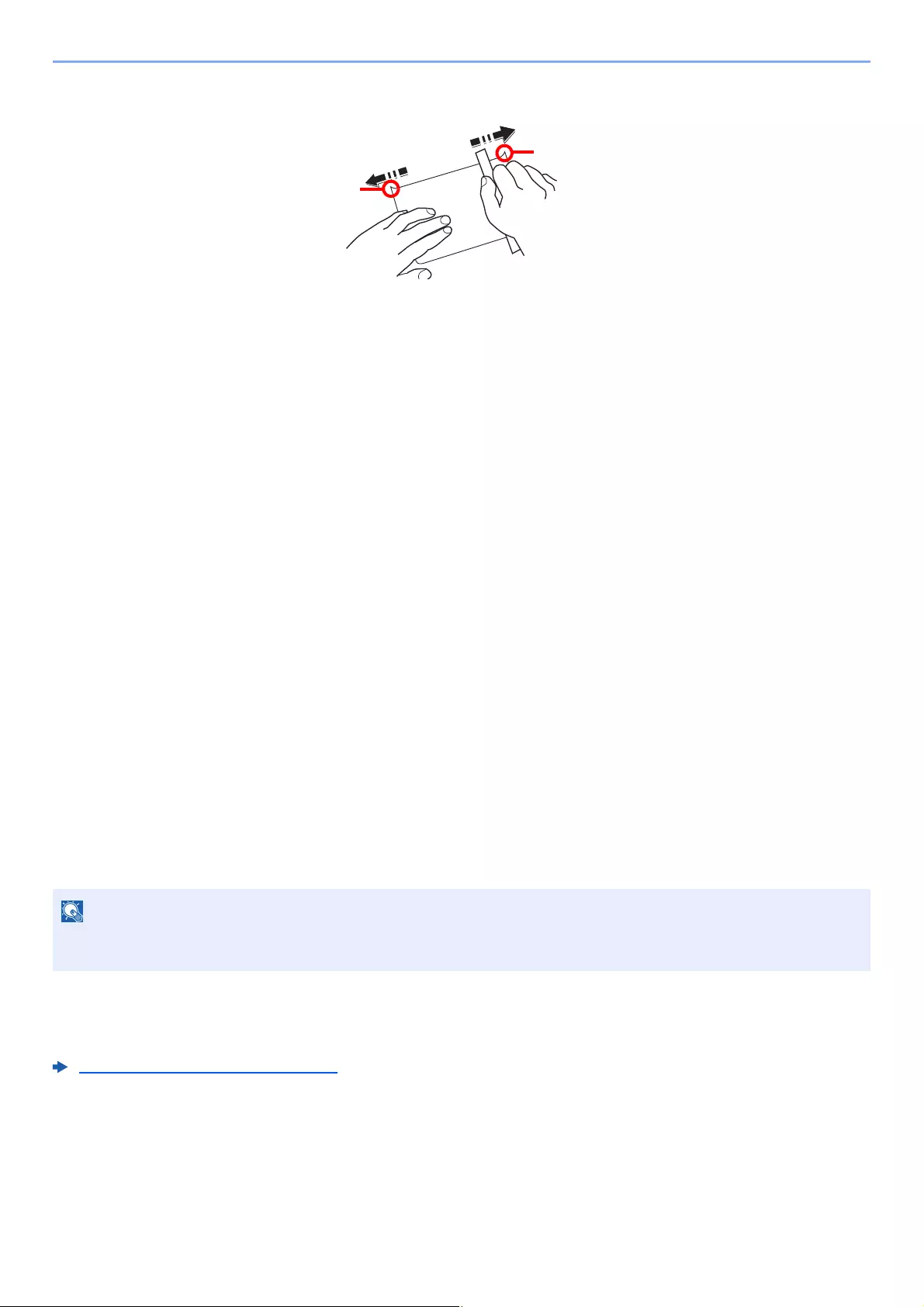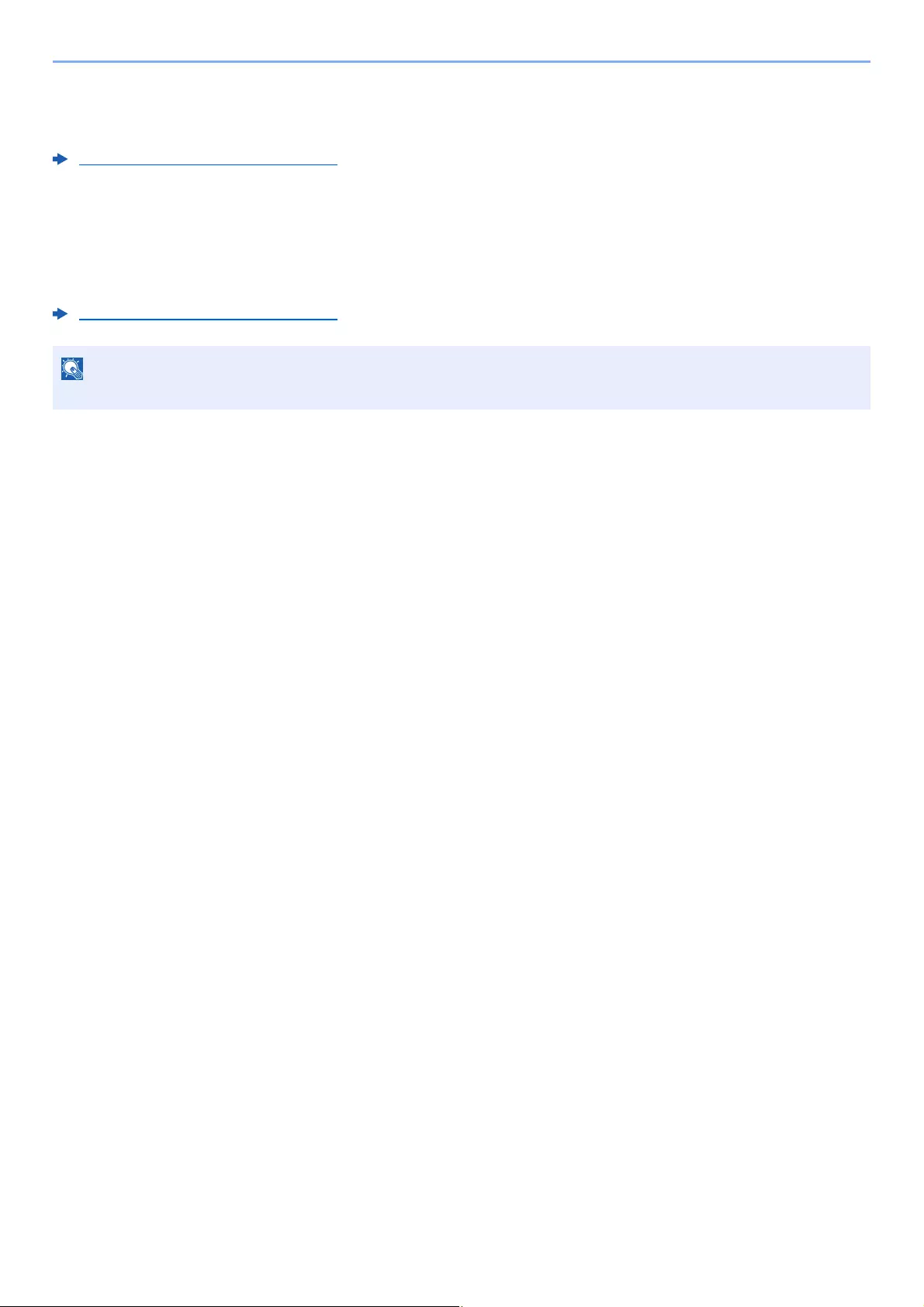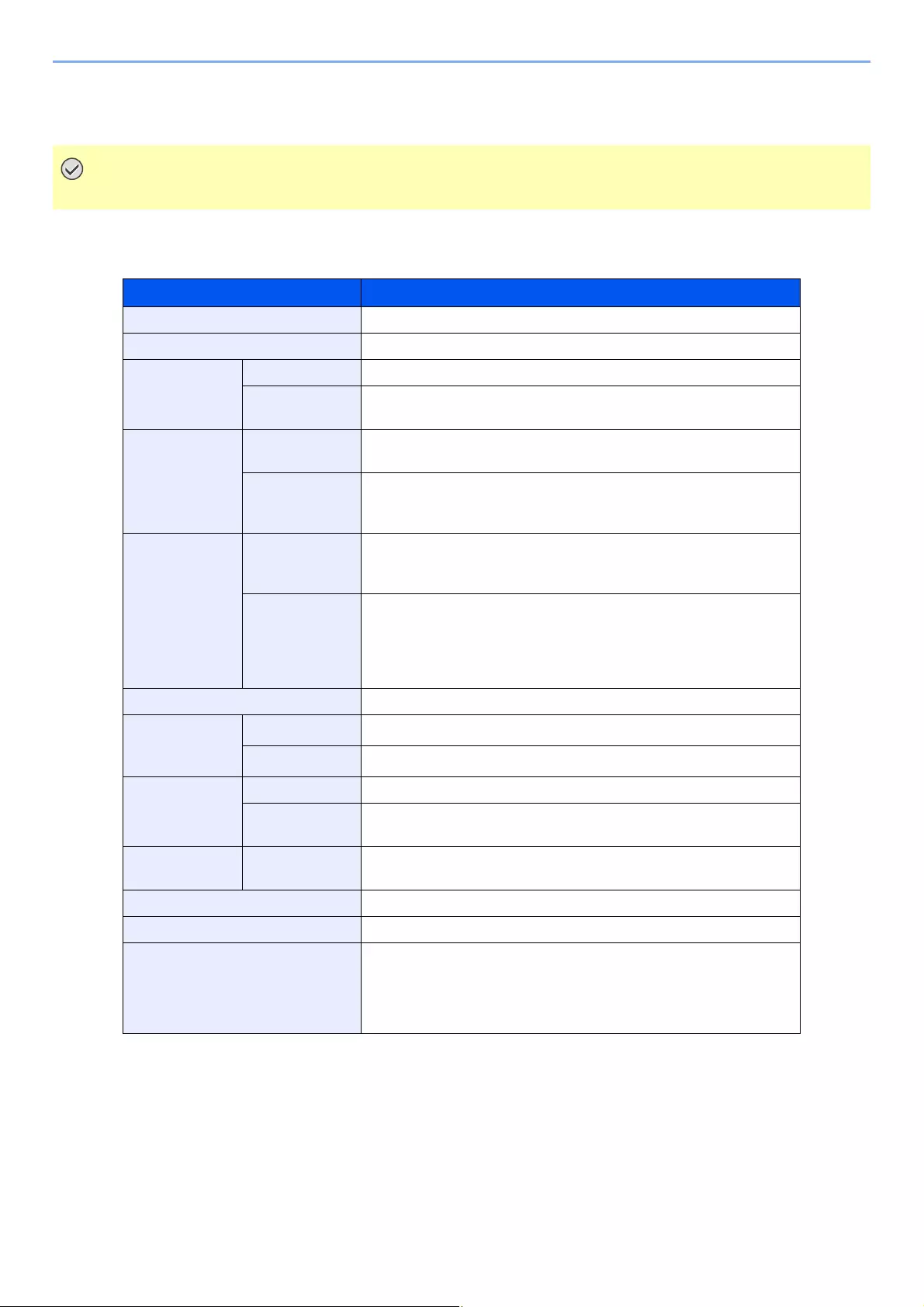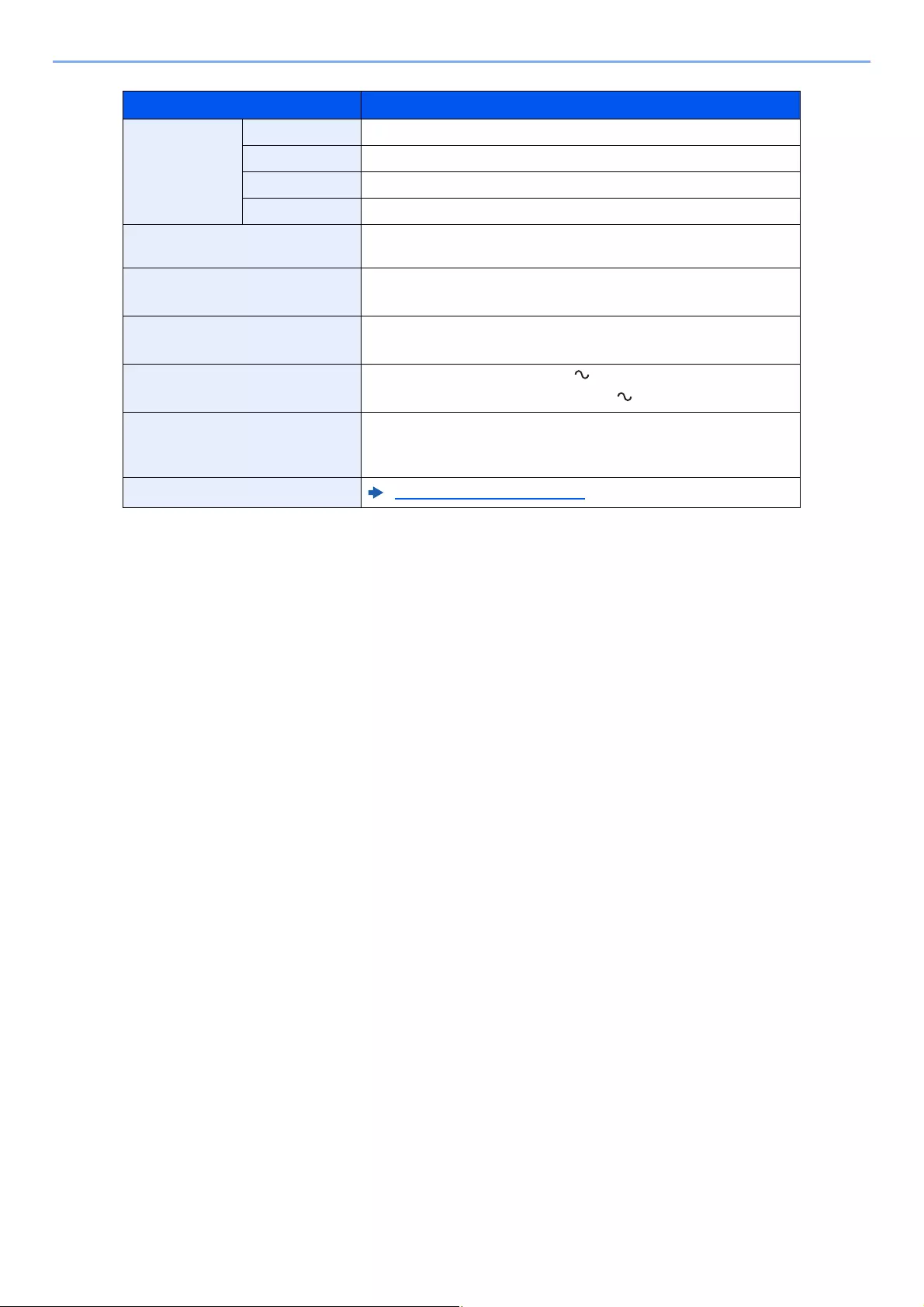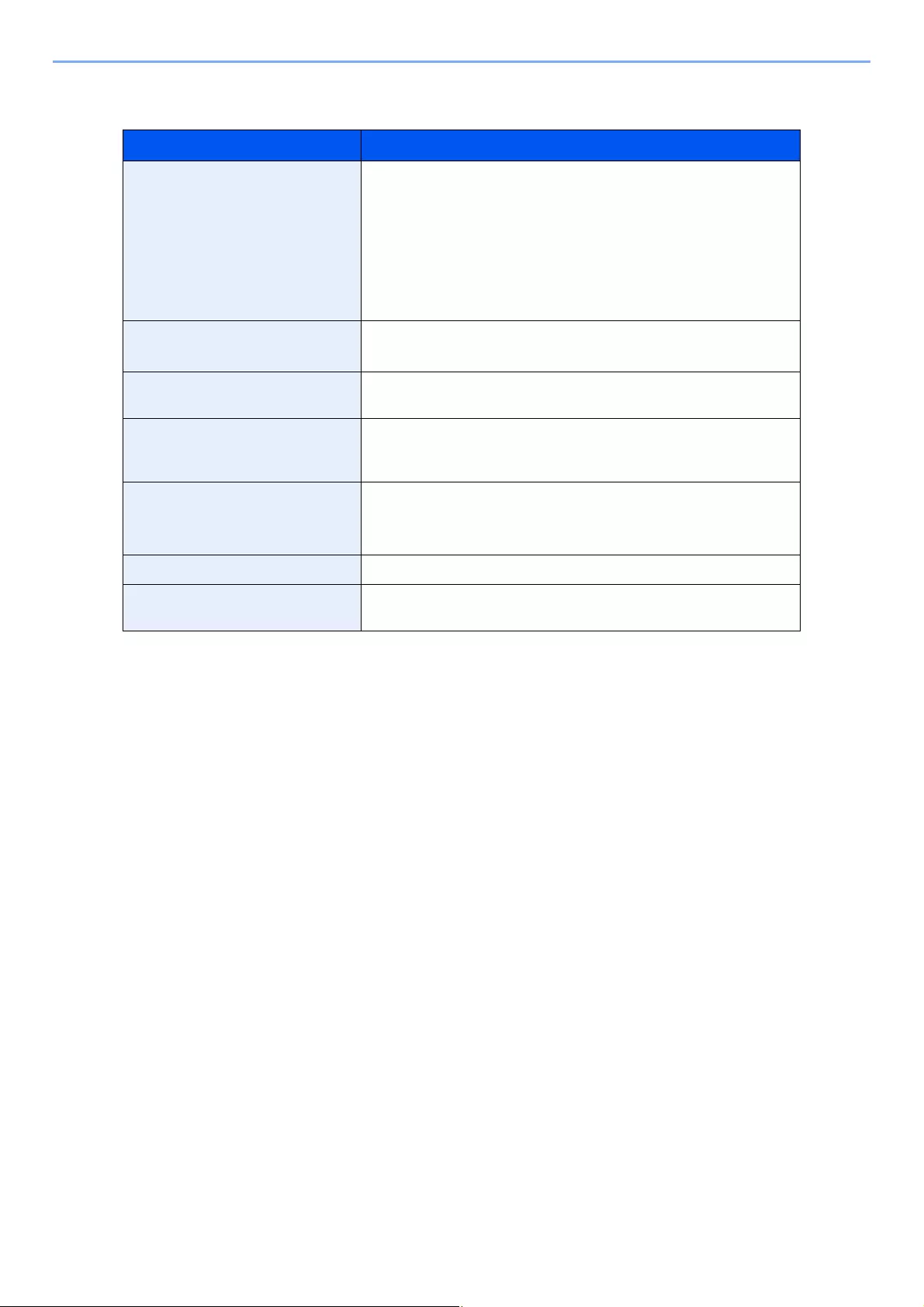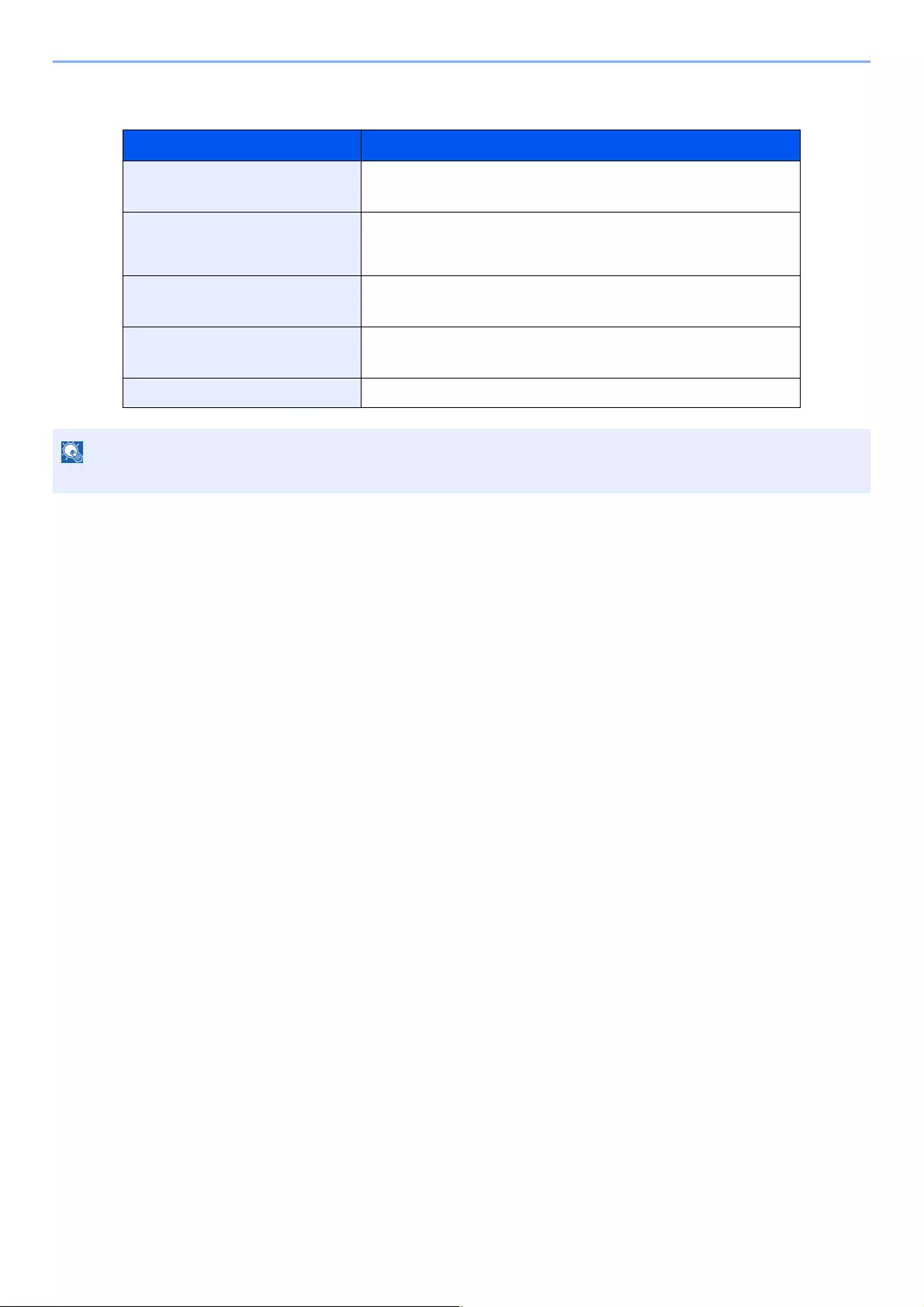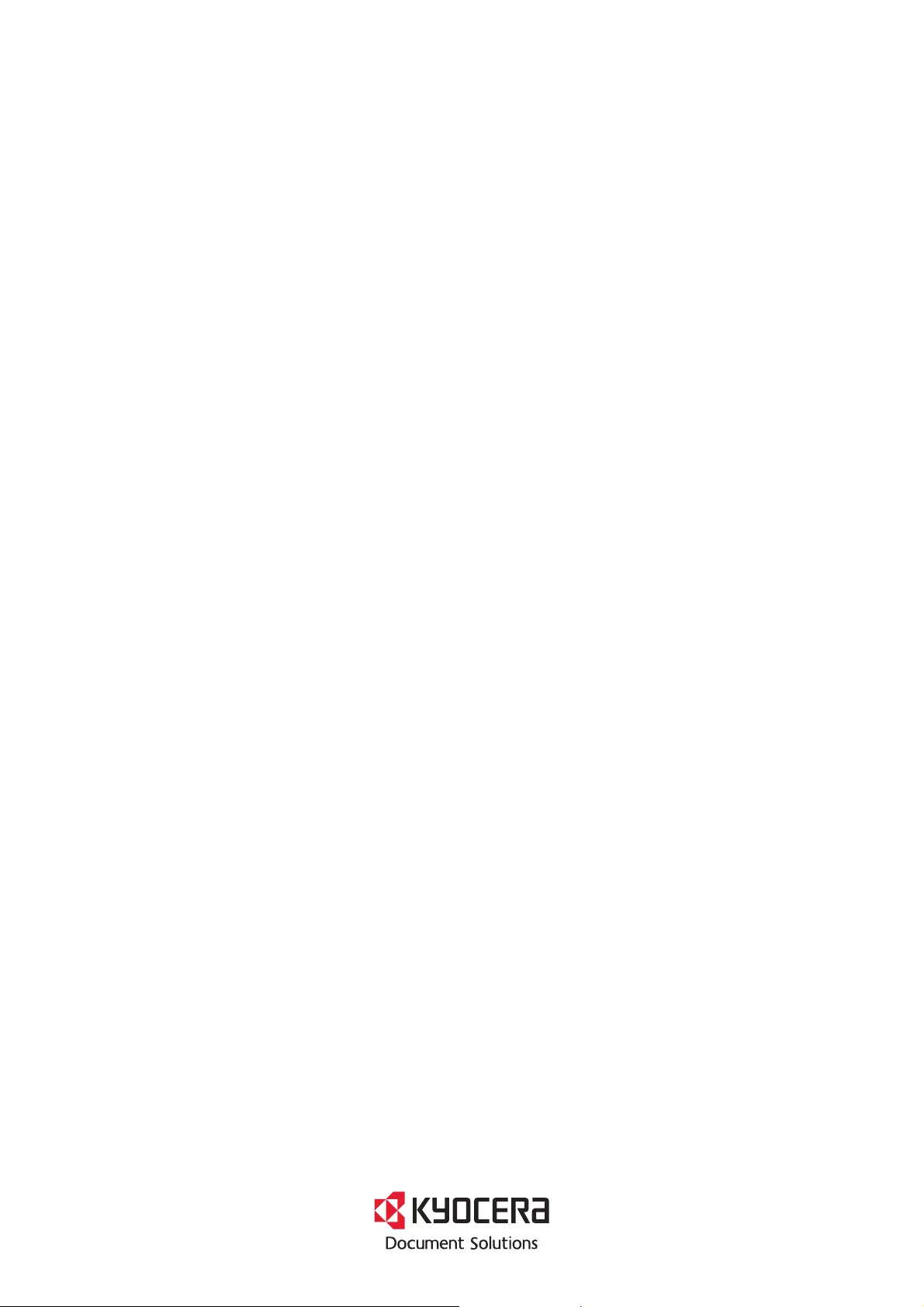
q PRINT
ECOSYS P2235dn
ECOSYS P2235dw
РУКОВОДСТВО ПО ЭКСПЛУАТАЦИИ
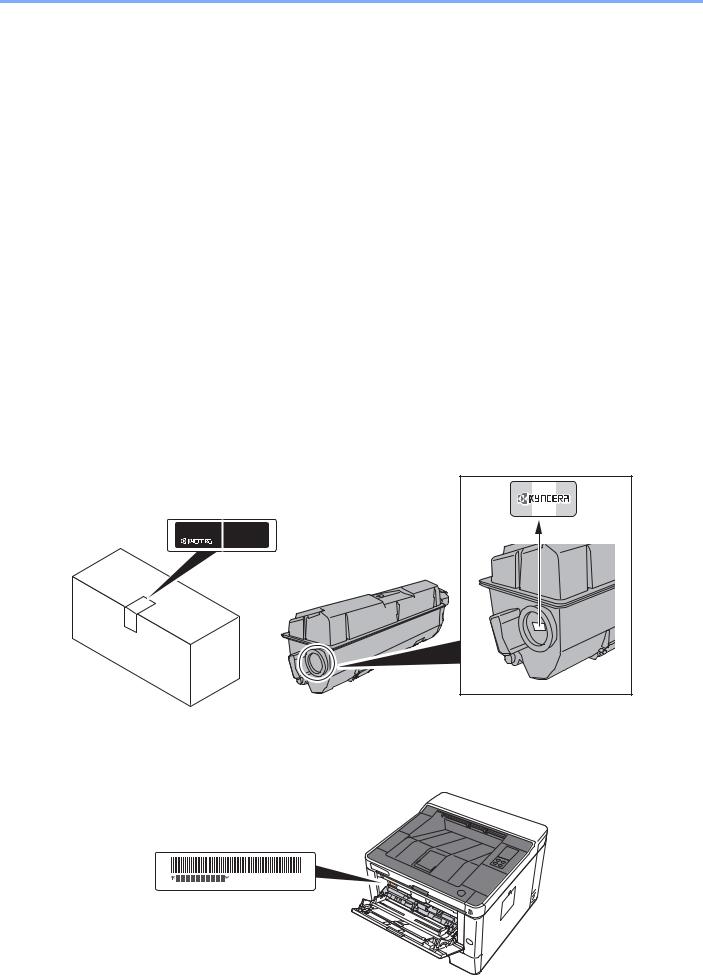
> Предисловие
Предисловие
Благодарим вас за приобретение этого аппарата.
Настоящее руководство содержит сведения по эксплуатации и плановому техническому обслуживанию аппарата, а также описание несложных действий по устранению возникающих неполадок и поддержанию аппарата в как можно лучшем состоянии.
Перед эксплуатацией аппарата ознакомьтесь с данным руководством по эксплуатации.
Для качественной печати рекомендуется применять оригинальные контейнеры с тонером Kyocera, которые обязательно проходят несколько проверок.
Пожалуйста, примите во внимание, что в случае если пользователь решит использовать неоригинальный (контрафактный или совместимый) тонер, то мы не гарантируем надлежащую работу устройства. Мы не проводили тестирования тонеров, изготовленных другими производителями, в связи с чем мы не можем достоверно утверждать, что тот или иной тонер, изготовленный другим производителем, совместим с нашей продукцией. Мы рекомендуем использовать оригинальный тонер, как указано в Руководстве пользователя, прилагаемом к устройству. Использование неоригинального (контрафактного или совместимого) тонера может привести к повреждению устройства. Подобное повреждение может повлиять на условия гарантии и повлечь дополнительные расходы для пользователя в связи со снятием таких устройств с гарантийного ремонта. Кроме того, использование контрафактного тонера – это поддержка незаконной деятельности недобросовестных производителей, действующих с нарушением законов Российской Федерации. Просим принять во внимание настоящую информацию о рисках, связанных с использованием неоригинального тонера.
На фирменных расходных материалах имеется наклейка, изображенная ниже.
Проверка серийного номера оборудования
Серийный номер оборудования напечатан в месте, показанном на рисунке.
Серийный номер оборудования необходим при обращении к представителю сервисной службы. Следует проверить серийный номер перед тем, как обращаться к представителю сервисной службы.
i

Cодержание
|
Предисловие …………………………………………………………………………………………………………. |
i |
|
|
Cодержание ………………………………………………………………………………………………………….. |
ii |
|
|
Функции аппарата ………………………………………………………………………………………………… |
v |
|
|
Руководства, поставляемые с аппаратом ………………………………………………………….. |
vii |
|
|
О руководстве по эксплуатации (данном документе) ……………………………………….. |
viii |
|
|
Структура документа …………………………………………………………………………………… |
viii |
|
|
Условные обозначения в данном руководстве ……………………………………………….. |
ix |
|
|
1 |
Правовая информация и правила техники безопасности ……….. |
1-1 |
|
Примечание ………………………………………………………………………………………………………. |
1-2 |
|
|
Условные обозначения по технике безопасности в данном руководстве ………. |
1-2 |
|
|
Окружающая среда ……………………………………………………………………………………. |
1-3 |
|
|
Меры предосторожности при эксплуатации …………………………………………………. |
1-4 |
|
|
Меры безопасности при работе с лазером в странах Европы ………………………. |
1-5 |
|
|
EN ISO 7779 ………………………………………………………………………………………………. |
1-6 |
|
|
EK1-ITB 2000 ……………………………………………………………………………………………… |
1-6 |
|
|
Меры по обеспечению безопасности при использовании беспроводной ЛВС |
1-6 |
|
|
(при наличии) …………………………………………………………………………………………….. |
||
|
Ограничение использования данного аппарата (при наличии) ……………………… |
1-7 |
|
|
Правовая информация ………………………………………………………………………………. |
1-8 |
|
|
Функция управления энергосбережением ………………………………………………….. |
1-12 |
|
|
Функция автоматической двусторонней печати …………………………………………. |
1-12 |
|
|
Экономия ресурсов — бумага …………………………………………………………………… |
1-12 |
|
|
Экологическая польза от функции «управления режимом питания» …………….. |
1-12 |
|
|
Программа Energy Star (ENERGY STAR®) …………………………………………………. |
1-12 |
|
|
2 |
Установка и настройка аппарата ………………………………………………. |
2-1 |
|
Наименования компонентов (внешняя сторона аппарата) ………………………………. |
2-2 |
|
|
Наименования компонентов (разъемы / внутренние компоненты) ………………….. |
2-3 |
|
|
Наименования компонентов |
||
|
(с установленным дополнительным оборудованием) …………………………………….. |
2-5 |
|
|
Подключение аппарата и других устройств ……………………………………………………… |
2-6 |
|
|
Подсоединение кабелей ……………………………………………………………………………………. |
2-7 |
|
|
Подсоединение кабеля LAN ……………………………………………………………………….. |
2-7 |
|
|
Подсоединение кабеля USB ……………………………………………………………………….. |
2-8 |
|
|
Подсоединение кабеля питания …………………………………………………………………. |
2-8 |
|
|
Включение/выключение питания ……………………………………………………………………… |
2-9 |
|
|
Включение питания ……………………………………………………………………………………. |
2-9 |
|
|
Выключение питания …………………………………………………………………………………. |
2-9 |
|
|
Использование панели управления ……………………………………………………………….. |
2-10 |
|
|
Панель управления ………………………………………………………………………………….. |
2-10 |
|
|
Индикаторы состояния ……………………………………………………………………………… |
2-11 |
|
|
Основные функции каждой клавиши …………………………………………………………. |
2-12 |
|
|
Настройка сети ………………………………………………………………………………………………… |
2-13 |
|
|
Настройка проводной сети ……………………………………………………………………….. |
2-13 |
|
|
Настройка беспроводной сети ………………………………………………………………….. |
2-15 |
|
|
Настройка Wi-Fi Direct ………………………………………………………………………………. |
2-20 |
|
|
Функция экономии энергии …………………………………………………………………………….. |
2-23 |
|
|
Автоматический переход в режим ожидания ……………………………………………… |
2-23 |
|
|
Правило выключения питания (модели для стран Европы) ………………………… |
2-23 |
|
|
Тихий режим ……………………………………………………………………………………………………. |
2-24 |
|
|
Установка программного обеспечения …………………………………………………………… |
2-25 |
|
|
Программное обеспечение на DVD (Windows) …………………………………………… |
2-25 |
|
|
Установка программного обеспечения в Windows ……………………………………… |
2-26 |
|
|
Удаление программного обеспечения ……………………………………………………….. |
2-32 |
|
|
Установка программного обеспечения на компьютер Mac ………………………….. |
2-33 |
|
|
Command Center RX ………………………………………………………………………………………… |
2-35 |
|
|
Доступ к Command Center RX ……………………………………………………………………. |
2-36 |
|
|
Изменение настроек безопасности ……………………………………………………………. |
2-37 |
ii

|
Изменение информации об устройстве …………………………………………………….. |
2-39 |
|
|
Настройки электронной почты ………………………………………………………………….. |
2-41 |
|
|
3 |
Подготовка к использованию …………………………………………………… |
3-1 |
|
Загрузка бумаги ………………………………………………………………………………………………… |
3-2 |
|
|
Меры предосторожности при загрузке бумаги ……………………………………………… |
3-2 |
|
|
Выбор блоков податчиков бумаги ……………………………………………………………….. |
3-3 |
|
|
Загрузка в кассеты …………………………………………………………………………………….. |
3-4 |
|
|
Меры предосторожности по выходу бумаги ……………………………………………………. |
3-8 |
|
|
Ограничитель бумаги …………………………………………………………………………………. |
3-8 |
|
|
4 |
Печать с ПК ……………………………………………………………………………….. |
4-1 |
|
Экран свойств драйвера принтера …………………………………………………………………… |
4-2 |
|
|
Отображение справки по драйверу принтера ………………………………………………. |
4-3 |
|
|
Изменение настроек драйвера принтера по умолчанию (Windows 8.1) …………. |
4-3 |
|
|
Печать с ПК ……………………………………………………………………………………………………….. |
4-4 |
|
|
Печать на бумаге стандартного формата ……………………………………………………. |
4-4 |
|
|
Печать на бумаге нестандартного формата ………………………………………………… |
4-6 |
|
|
Отмена печати с компьютера ……………………………………………………………………… |
4-9 |
|
|
Печать с портативного устройства …………………………………………………………………. |
4-10 |
|
|
Печать посредством сервиса Google Cloud Print ………………………………………… |
4-10 |
|
|
Печать с помощью Mopria …………………………………………………………………………. |
4-10 |
|
|
Печать с помощью Wi-Fi Direct ………………………………………………………………….. |
4-10 |
|
|
Контроль состояния принтера (Status Monitor) ………………………………………………. |
4-11 |
|
|
Доступ к Status Monitor ……………………………………………………………………………… |
4-11 |
|
|
Выход из Status Monitor …………………………………………………………………………….. |
4-11 |
|
|
Быстрый просмотр состояния …………………………………………………………………… |
4-11 |
|
|
Вкладка выполнения печати ……………………………………………………………………… |
4-12 |
|
|
Вкладка состояния лотка с бумагой …………………………………………………………… |
4-12 |
|
|
Вкладка состояния тонера ………………………………………………………………………… |
4-12 |
|
|
Вкладка уведомлений ………………………………………………………………………………. |
4-13 |
|
|
Контекстное меню в Status Monitor ……………………………………………………………. |
4-13 |
|
|
Настройки уведомлений Status Monitor ……………………………………………………… |
4-14 |
|
|
Configuration Tool ……………………………………………………………………………………………. |
4-15 |
|
|
Доступ к Configuration Tool ………………………………………………………………………… |
4-15 |
|
|
Выход из Configuration Tool ………………………………………………………………………. |
4-16 |
|
|
Экран настроек Configuration Tool ……………………………………………………………… |
4-17 |
|
|
5 |
Эксплуатация аппарата …………………………………………………………….. |
5-1 |
|
Загрузка бумаги в универсальный лоток …………………………………………………………. |
5-2 |
|
|
Приостановка и возобновление задания …………………………………………………………. |
5-5 |
|
|
Отмена заданий ………………………………………………………………………………………………… |
5-5 |
|
|
Печать отчета ……………………………………………………………………………………………………. |
5-6 |
|
|
6 |
Устранение неисправностей …………………………………………………….. |
6-1 |
|
Регулярное обслуживание ………………………………………………………………………………… |
6-2 |
|
|
Очистка ……………………………………………………………………………………………………… |
6-2 |
|
|
Очистка внутренних частей аппарата ………………………………………………………….. |
6-2 |
|
|
Замена контейнера с тонером …………………………………………………………………….. |
6-6 |
|
|
Загрузка бумаги …………………………………………………………………………………………. |
6-9 |
|
|
Использование Maintenance Menu ………………………………………………………………….. |
6-10 |
|
|
Устранение неисправностей …………………………………………………………………………… |
6-11 |
|
|
Устранение сбоев в работе ………………………………………………………………………. |
6-11 |
|
|
Проблема в работе аппарата ……………………………………………………………………. |
6-11 |
|
|
Проблема с распечатанным изображением ………………………………………………. |
6-13 |
|
|
Порядок индикации произошедших ошибок …………………………………………………… |
6-16 |
|
|
Индикация техобслуживания ……………………………………………………………………. |
6-16 |
|
|
Индикация ошибки …………………………………………………………………………………… |
6-26 |
|
|
Устранение замятия бумаги ……………………………………………………………………………. |
6-28 |
|
|
Извлечение замятой бумаги из универсального лотка ……………………………….. |
6-29 |
|
|
Извлечение замятой бумаги из кассеты 1 ………………………………………………….. |
6-30 |
iii

|
Извлечение замятой бумаги из кассеты 2 ………………………………………………….. |
6-32 |
|
|
Извлечение замятой бумаги из кассеты 3 ………………………………………………….. |
6-34 |
|
|
Извлечение замятой бумаги из-за задней крышки ……………………………………… |
6-36 |
|
|
Извлечение застрявшей бумаги из аппарата …………………………………………….. |
6-40 |
|
|
7 |
Приложение ………………………………………………………………………………. |
7-1 |
|
Дополнительное оборудование ……………………………………………………………………….. |
7-2 |
|
|
Общие сведения о дополнительном оборудовании ……………………………………… |
7-2 |
|
|
Бумага ……………………………………………………………………………………………………………… |
.. 7-5 |
|
|
Основные характеристики бумаги ………………………………………………………………. |
7-5 |
|
|
Выбор подходящей бумаги …………………………………………………………………………. |
7-6 |
|
|
Бумага специального назначения ……………………………………………………………….. |
7-9 |
|
|
Характеристики ……………………………………………………………………………………………….. |
7-13 |
|
|
Аппарат …………………………………………………………………………………………………… |
7-13 |
|
|
Функции принтера ……………………………………………………………………………………. |
7-15 |
|
|
Податчик бумаги ………………………………………………………………………………………. |
7-16 |
|
|
Глоссарий ……………………………………………………………………………………………………….. |
7-17 |
|
|
Алфавитный указатель …………………………………………………. |
Алфавитный указатель-1 |
iv
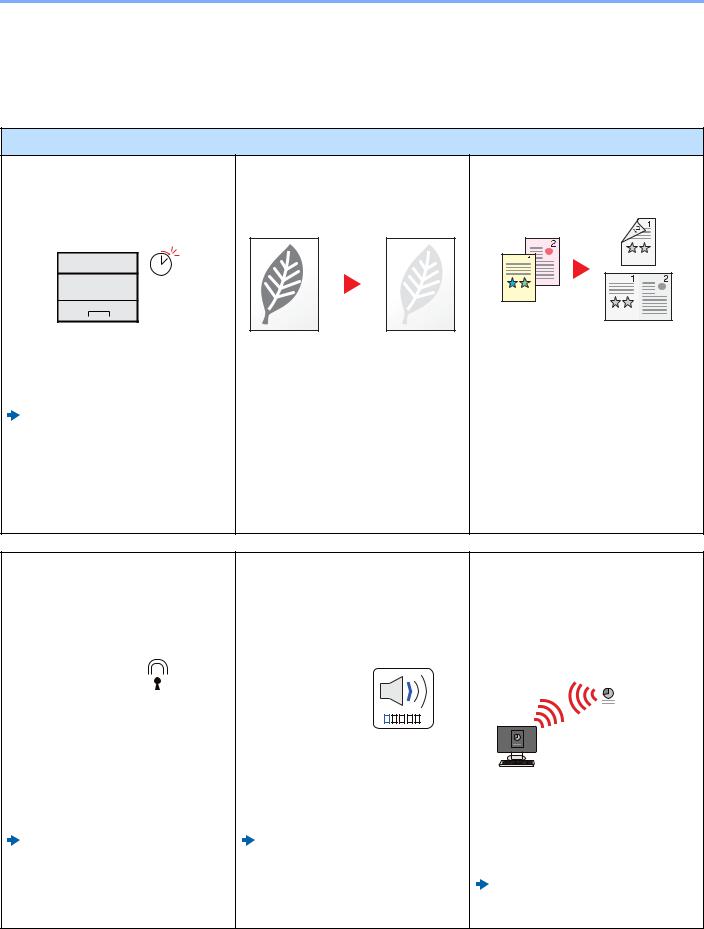
> Функции аппарата
Функции аппарата
Аппарат оснащен рядом полезных функций. Ниже приведены примеры некоторых из них.
Экономия энергии и расходов
|
Настраиваемые режимы экономии |
Печать с использованием меньшего |
|
энергии |
количества тонера |
|
(функция экономии энергии) |
(EcoPrint) |
Off
|
Аппарат оснащен функцией экономии |
Благодаря данной функции можно |
|
энергии, которая автоматически |
сократить расход тонера. |
|
включает режим ожидания. |
Используйте эту функцию, чтобы |
|
Функция экономии энергии (стр. 2- |
сэкономить тонер, если вам нужно |
|
23) |
всего лишь проверить содержимое |
|
печатного документа, например при |
|
|
пробной печати, или распечатать |
|
|
документ для внутреннего |
|
|
подтверждения. |
|
|
Используйте эту функцию, если не |
|
|
требуется высококачественная печать. |
Снижение расхода бумаги (печать с экономией бумаги)
Оригиналы можно печатать на обеих сторонах листа бумаги. Кроме того, несколько оригиналов можно напечатать на одном листе бумаги.
|
Усиление безопасности |
Более эффективное |
|||||||||||||||||||||||
|
использование функций |
||||||||||||||||||||||||
|
Усиление безопасности |
Бесшумная работа аппарата |
Установка аппарата без |
||||||||||||||||||||||
|
(Настройки для администратора) |
(тихий режим) |
использования сетевых кабелей |
||||||||||||||||||||||
|
(беспроводная сеть) |
||||||||||||||||||||||||
|
С целью усиления безопасности |
Можно снизить уровень шума при |
||
|
администраторы могут использовать |
работе аппарата. Возможно включение |
При наличии беспроводной ЛВС можно |
|
|
различные функции. |
или выключение одним нажатием. |
установить аппарат, не заботясь о |
|
|
Изменение настроек безопасности |
Тихий режим (стр. 2-24) |
сетевых кабелях. Кроме того, |
|
|
поддерживаютсяфункцииWi-Fi Direct и |
|||
|
(стр. 2-37) |
|||
|
т. д. |
|||
|
Настройка беспроводной сети (стр. |
|||
|
2-15) |
|||
|
Настройка Wi-Fi Direct (стр. 2-20) |
v
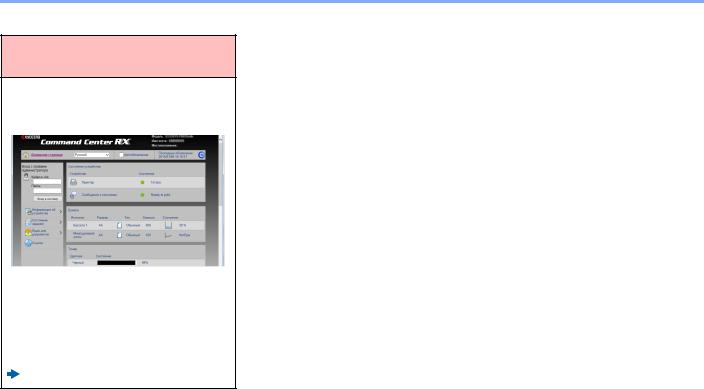
> Функции аппарата
Более эффективное использование функций
Дистанционное управление аппаратом
(Command Center RX)
Имеется возможность удаленного доступа к аппарату для выполнения печати, отправки или загрузки данных.
Администраторы могут задать настройкидляуправленияаппаратоми его использования.
Command Center RX (стр. 2-35)
vi

> Руководства, поставляемые с аппаратом
Руководства, поставляемые с аппаратом
В комплект поставки аппарата входят следующие руководства. При необходимости сверяйтесь с соответствующим руководством.
Содержание руководств может быть изменено без уведомления в целях улучшения технических характеристик аппарата.
Печатные руководства
Быстрое начало использования аппарата
Правила безопасного использования аппарата
Quick Guide
В данном руководстве содержится описание основных функций аппарата, принципов использования удобных функций, порядка проведения планового техобслуживания и действий при возникновении неполадок.
Safety Guide
Предоставляет информацию по безопасности и предостережения относительно места установки и эксплуатации аппарата. Обязательно прочитайте это руководство перед использованием данного аппарата.
Safety Guide (ECOSYS P2235dn/ECOSYS P2235dw)
В данном руководстве приведены указания относительно свободного пространства, необходимого для установки аппарата, описание предупредительных надписей и иные сведения о технике безопасности. Обязательно прочитайте это руководство перед использованием данного аппарата.
Руководства (PDF) на DVD-диске (Product Library)
Надлежащее
использование
аппарата
Легкая регистрация информации об аппарате и выполнение настроек
Руководство по эксплуатации (данный документ)
Содержит описание процедур загрузки бумаги, выполнения основных операций, а также содержит настройки по умолчанию и другую информацию.
Command Center RX User Guide
Содержит описание метода доступа к аппарату с компьютера через веб-браузер для проверки и изменения параметров.
|
Printer Driver User Guide |
||
|
Печать данных с |
||
|
Содержит описание порядка установки драйвера принтера и использования функций |
||
|
компьютера |
||
|
принтера. |
|
KYOCERA Net Direct Print Operation Guide |
||
|
Непосредственная |
||
|
Содержит описание порядка печати файлов PDF без запуска Adobe Acrobat или |
||
|
печать файла PDF |
||
|
Reader. |
|
KYOCERA Net Viewer User Guide |
||
|
Мониторингаппарата |
||
|
и других принтеров в |
Содержит описание порядка мониторинга сетевых систем печати (аппарата) с |
|
|
сети |
помощью KYOCERA Net Viewer. |
|
|
PRESCRIBE Commands Command Reference |
||
|
Печать без |
||
|
Описание собственного языка принтера (команды PRESCRIBE). |
||
|
использования |
PRESCRIBE Commands Technical Reference |
|
|
драйвера принтера |
||
|
Описание командных функций PRESCRIBE и управление каждым типом эмуляции. |
||
|
Maintenance Menu User Guide |
||
|
Регулировка |
||
|
положения печати |
Maintenance menu содержит описание способов настройки параметров печати. |
Для просмотра руководств, записанных на диске DVD, необходимо установить следующие версии приложения
Adobe Reader.
Версия 8.0 или последующие версии
vii

> О руководстве по эксплуатации (данном документе)
О руководстве по эксплуатации (данном документе)
Структура документа
В настоящем руководстве содержатся следующие разделы.
|
Раздел |
Содержание |
|
|
1 |
Правовая информация и |
Содержит описание мер предосторожности при использовании аппарата и |
|
правила техники |
информацию относительно торговых марок. |
|
|
безопасности |
||
|
2 |
Установка и настройка |
Содержит описание деталей аппарата, порядка подключения кабелей, установки |
|
аппарата |
программного обеспечения, входа в систему и выхода из нее, а также иных |
|
|
процедур, связанных с администрированием аппарата. |
||
|
3 |
Подготовка к использованию |
Содержит описание процедур подготовки и настройки, необходимых для начала |
|
эксплуатации аппарата, в том числе порядка загрузки бумаги. |
||
|
4 |
Печать с ПК |
Содержит описание основных операций печати. |
|
5 |
Эксплуатация аппарата |
Содержит описание основных процедур, связанных с эксплуатацией аппарата. |
|
6 |
Устранение неисправностей |
Содержит описания порядка действий в ситуациях, когда закончился тонер, |
|
отображается ошибка, возникло замятие бумаги или иная проблема. |
||
|
7 |
Приложение |
Содержит описание дополнительного оборудования для аппарата. Содержит |
|
сведения о типах носителя и форматах бумаги, а также глоссарий терминов. |
||
|
Приведены технические характеристики аппарата. |
||
viii
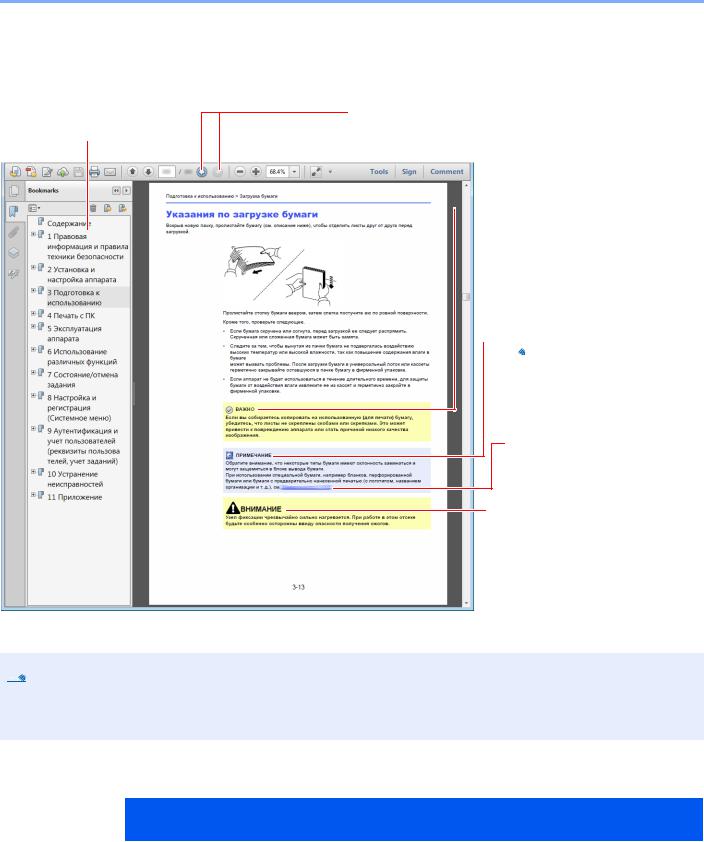
> О руководстве по эксплуатации (данном документе)
Условные обозначения в данном руководстве
В приведенных ниже объяснениях в качестве примера используется Adobe Reader XI.
Щелкните элемент оглавления для быстрого перехода к соответствующей странице.

Щелкните для перехода от текущей страницы к ранее отображавшейся странице. Данная функция удобна, если необходимо вернуться к странице, с которой был выполнен быстрый переход к текущей странице.

Указывает на требования по эксплуатации и ограничения, которые необходимо соблюдать для безопасной эксплуатации аппарата и недопущения повреждения самого аппарата или иной собственности.

Указывает на дополнительные объяснения и справочную информацию по эксплуатации аппарата.
См. раздел .
Щелкните подчеркнутый текст для перехода к соответствующей странице.

Предупреждает о возможности получения травмы или механического повреждения аппарата при недостаточном внимании или несоблюдении соответствующих правил.
Отображаемые в программе Adobe Reader элементы могут различаться в зависимости от порядка использования программы. Если оглавление или инструменты не отображаются, см. справку по программе
Adobe Reader.
К некоторым элементам в данном руководстве применяются следующие условные обозначения.
|
Условное |
Описание |
|
обозначение |
|
|
[Жирный шрифт] |
Указывает на аппаратные или экранные кнопки. |
|
«Обычный шрифт» |
Указывает на настройку. |
ix

|
> О руководстве по эксплуатации (данном документе) |
|||
|
Формат и ориентация бумаги |
|||
|
Такие форматы бумаги, как A5, можно использовать как в горизонтальной, так и в вертикальной ориентации. Для |
|||
|
различения этих ориентаций при использовании данных форматов к обозначениям форматов добавляется буква |
|||
|
R, указывающая на вертикальную ориентацию. |
|||
|
Ориентация |
Установка положения |
Формат, указанный в этом |
|
|
(X = длина, Y = ширина) |
руководстве*1 |
||
|
Вертикальная |
Кассета |
A5-R |
|
|
ориентация (-R) |
|||
|
Универсальный |
A5-R |
||
|
лоток |
|||
|
Горизонтальная |
Кассета |
A5 |
|
|
ориентация |
|||
|
Универсальный |
A5 |
||
|
лоток |
|||
|
*1 Форматы бумаги, которые можно использовать, зависят от функции и лотка для подачи бумаги. Для |
|||
|
получения подробной информации см. |
|||
|
Характеристики (стр. 7-13) |
x
1Правовая информация и правила техники безопасности
Перед использованием аппарата, пожалуйста, прочтите данную информацию. В этом разделе приводится информация по следующим темам.
|
Примечание …………………………………………………………………………………………………………………………………… |
1-2 |
|
Условные обозначения по технике безопасности в данном руководстве ………………………………….. |
1-2 |
|
Окружающая среда ……………………………………………………………………………………………………………….. |
1-3 |
|
Меры предосторожности при эксплуатации ……………………………………………………………………………. |
1-4 |
|
Меры безопасности при работе с лазером в странах Европы ………………………………………………….. |
1-5 |
|
EN ISO 7779 ………………………………………………………………………………………………………………………….. |
1-6 |
|
EK1-ITB 2000 ………………………………………………………………………………………………………………………… |
1-6 |
|
Меры по обеспечению безопасности при использовании беспроводной ЛВС (при наличии) ……… |
1-6 |
|
Ограничение использования данного аппарата (при наличии) …………………………………………………. |
1-7 |
|
Правовая информация ………………………………………………………………………………………………………….. |
1-8 |
|
Функция управления энергосбережением …………………………………………………………………………….. |
1-12 |
|
Функция автоматической двусторонней печати ……………………………………………………………………… |
1-12 |
|
Экономия ресурсов — бумага ………………………………………………………………………………………………. |
1-12 |
|
Экологическая польза от функции «управления режимом питания» ………………………………………… |
1-12 |
|
Программа Energy Star (ENERGY STAR®) …………………………………………………………………………….. |
1-12 |
1-1

Правовая информация и правила техники безопасности > Примечание
Примечание
Условные обозначения по технике безопасности в данном руководстве
Специальные предупреждающие символы в разделах настоящего руководства и на компонентах аппарата призваны обратить внимание пользователя на возможную опасность как для него самого, так и для других людей и окружающих объектов, связанную с эксплуатацией данного аппарата, а также помочь обеспечить правильную и безопасную его эксплуатацию. Символы и их описания приведены ниже.
ПРЕДУПРЕЖДЕНИЕ: Предупреждает о возможности получения тяжелой травмы или смерти при недостаточном внимании или несоблюдении соответствующих
правил.
ВНИМАНИЕ: Предупреждает о возможности получения травмы или механического повреждения аппарата при недостаточном внимании или несоблюдении соответствующих правил.
Символы
Символ указывает, что в соответствующем разделе содержатся предупреждения по технике безопасности. Знаки внутри символа призваны привлечь внимание пользователя.


Символ 


Символ указывает, что соответствующий раздел содержит информацию о действиях, которые должны быть выполнены. Внутри символа приводится условное обозначение обязательного действия.



Если предупреждения по технике безопасности в данном руководстве по эксплуатации напечатаны неразборчиво, а также в случае потери самого руководства обратитесь к представителю сервисной службы и закажите новое руководство (услуга платная).
1-2

Правовая информация и правила техники безопасности > Примечание
Окружающая среда
Аппарат предназначен для эксплуатации в следующих условиях окружающей среды:
|
Температура |
От 10 |
до 32,5° C |
|
Влажность |
От 10 |
до 80% |
Ктому же, при размещении аппарата избегайте его установки в следующих местах.
•Вблизи окна или в местах, где на него будут попадать прямые солнечные лучи.
•В местах, подверженных вибрации.
•В местах с резкими перепадами температуры.
•В местах, находящихся по действием прямых потоков горячего или холодного воздуха.
•Избегайте мест с плохой вентиляцией.
Непрочный материал пола при перемещении аппарата после установки может быть поврежден роликами.
При печати выделяется некоторое количество озона, но оно незначительно и не сказывается отрицательно на здоровье. Тем не менее при длительном использовании аппарата в помещении с плохой вентиляцией или при изготовлении очень большого количества отпечатков может ощущаться неприятный запах. Для обеспечения оптимальных условий при печати рекомендуется хорошо проветривать помещение.
1-3

Правовая информация и правила техники безопасности > Примечание
Меры предосторожности при эксплуатации
Меры предосторожности при обращении с расходными материалами

Не пытайтесь поджечь детали, содержащие тонер. Искры от пламени могут стать причиной ожогов. Храните детали, содержащие тонер, в недоступном для детей месте.
Если тонер просыплется из деталей, его содержащих, не вдыхайте его и не проглатывайте, а также избегайте попадания в глаза и на кожу.
•Если вы вдохнули тонер, выйдите на свежий воздух и тщательно прополощите горло большим количеством воды. При появлении кашля обратитесь к врачу.
•Если вы проглотили тонер, прополощите рот водой и выпейте 1-2 чашки воды, чтобы разбавить содержимое желудка. При необходимости обратитесь к врачу.
•При попадании тонера в глаза тщательно промойте их водой. При продолжительном дискомфорте в глазах обратитесь к врачу.
•При попадании тонера на кожу помойте ее водой с мылом.
Не пытайтесь силой открыть или разрушить детали, содержащие тонер.
Другие меры предосторожности
Верните израсходованный контейнер с тонером дилеру или представителю по обслуживанию. Переработка или утилизация использованных контейнеров с тонером производится в соответствии с установленными нормами.
Храните аппарат, избегая воздействия на него прямых солнечных лучей.
Храните аппарат при температуре ниже 40° C, избегая резких изменений температуры и влажности.
Если аппарат не будет использоваться в течение длительного периода, выньте бумагу из кассеты и универсального лотка, поместите ее обратно в оригинальную упаковку и запечатайте.
1-4
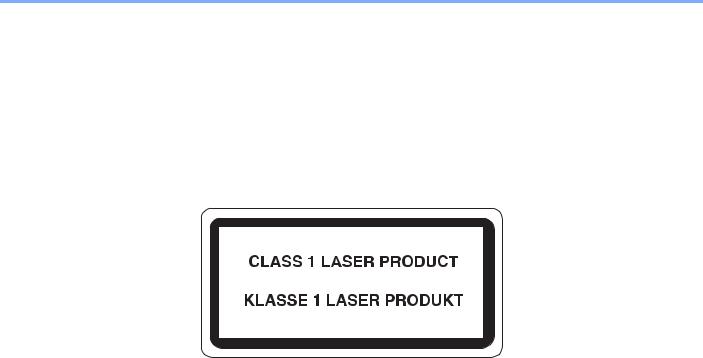
Правовая информация и правила техники безопасности > Примечание
Меры безопасности при работе с лазером в странах Европы
Лазерное излучение опасно для организма человека. Поэтому лазерное излучение, создаваемое внутри аппарата, герметично закрыто защитным кожухом и наружной крышкой. При правильной эксплуатации аппарата пользователем излучение не проникает за пределы его корпуса.
Настоящий аппарат классифицирован как лазерное оборудование Class 1 в соответствии со стандартом
IEC/EN 60825-1:2014.
Информация относительно лазерных изделий CLASS 1 указана в паспортной таблице.
1-5

Правовая информация и правила техники безопасности > Примечание
EN ISO 7779
Maschinenlärminformations-Verordnung 3. GPSGV, 06.01.2004: Der höchste Schalldruckpegel beträgt 70 dB (A) oder weniger gemäß EN ISO 7779.
EK1-ITB 2000
Das Gerät ist nicht für die Benutzung im unmittelbaren Gesichtsfeld am Bildschirmarbeitsplatz vorgesehen. Um störende Reflexionen am Bildschirmarbeitsplatz zu vermeiden, darf dieses Produkt nicht im unmittelbaren Gesichtsfeld platziert werden.
Меры по обеспечению безопасности при использовании беспроводной ЛВС (при наличии)
Беспроводная ЛВС обеспечивает обмен информацией между беспроводными точками доступа, которые используются вместо сетевого кабеля. Преимуществом такой функции является возможность беспрепятственного подключения к ЛВС в зоне действия радиоволн.
С другой стороны, если настройки безопасности не сконфигурированы, могут возникнуть следующие проблемы из-за того, что радиоволны могут проходить через препятствия (включая стены) и быть доступны для приема в радиусе действия передатчика.
Тайный просмотр содержимого сеанса связи
Злоумышленники могут преднамеренно осуществлять мониторинг радиосвязи и получать несанкционированный доступ к следующим данным радиообмена.
•Личная информация, включая идентификаторы, пароли и номера кредитных карт.
•Содержимое сообщений электронной почты.
Несанкционированное проникновение
Злоумышленники могут получить несанкционированный доступ к частным или корпоративным сетям для осуществления следующих незаконных действий.
•Получение личной и конфиденциальной информации (утечка информации).
•Вступление в контакт от имени другого конкретного человека и несанкционированное распространение информации (спуфинг).
•Изменение и повторная передача перехваченных сообщений (подлог).
•Передача компьютерных вирусов и уничтожение данных и систем (уничтожение).
Сетевые платы для работы с беспроводной ЛВС и беспроводные точки доступа содержат встроенные функции обеспечения безопасности для уменьшения риска описанных выше проблем и их решения. Для задействования таких функций при использовании аппарата нужно настроить параметры безопасности продуктов с беспроводной ЛВС.
Компания-изготовитель рекомендует, чтобы пользователи ответственно и на свое усмотрение выполнили настройки безопасности и полностью понимали последствия использования аппарата, на котором не заданы настройки безопасности.
1-6

Правовая информация и правила техники безопасности > Примечание
Ограничение использования данного аппарата (при наличии)
•Передаваемые данным аппаратом радиоволны могут создавать помехи для медицинского оборудования. При использовании данного аппарата в медицинском учреждении или вблизи медицинского оборудования его следует использовать в соответствии с инструкциями и мерами предосторожности, предоставленными администратором учреждения, или в соответствии с инструкциями, указанными на медицинском оборудовании.
•Передаваемые данным аппаратом радиоволны могут создавать помехи для систем автоматического управления, в том числе для систем автоматических дверей и средств пожарной сигнализации. При использовании данного аппарата вблизи систем автоматического управления соблюдайте инструкции и меры предосторожности, приведенные на оборудовании системы автоматического управления.
•Если данный аппарат используется в составе систем, непосредственно связанных с обслуживанием самолетов, поездов, кораблей, автомобилей и др., или в условиях, когда требуется высокая степень надежности и безопасности, или в высокоточных системах, например предназначенных для предотвращения бедствий или преступлений или иных угроз для безопасности, то использовать данный аппарат следует с учетом общих характеристик безопасности всей системы, функций по обеспечению ее безотказности и резервирования с тем, чтобы не допустить снижения надежности и безопасности всей системы. Данный аппарат не предназначен для использования в условиях, когда требуется высокая степень надежности и безопасности, в том числе в аэрокосмических приборах, системах междугородной связи, системах управления в ядерной энергетике и медицинском оборудовании. Поэтому решение об использовании аппарата в таких условиях следует принимать с учетом всех факторов и обстоятельств.
1-7

Правовая информация и правила техники безопасности > Примечание
Правовая информация
Копирование или какое-либо иное воспроизведение настоящего руководства полностью или частично без предварительного письменного разрешения корпорации KYOCERA Document Solutions Inc. запрещено.
В отношении торговых марок
•PRESCRIBE и ECOSYS являются зарегистрированными торговыми марками Kyocera Corporation.
•KPDL является торговой маркой Kyocera Corporation.
•Microsoft, Windows, Windows XP, Windows Server 2003, Windows Vista, Windows Server 2008, Windows 7, Windows Server 2012, Windows 8, Windows 8.1, Windows 10 и Internet Explorer являются зарегистрированными торговыми марками или торговыми марками Microsoft Corporation в США и (или) других странах.
•PCL является торговой маркой Hewlett-Packard Company.
•Adobe Acrobat, Adobe Reader и PostScript являются торговыми марками Adobe Systems, Incorporated.
•Ethernet является зарегистрированной торговой маркой Xerox Corporation.
•Novell и NetWare являются зарегистрированными торговыми марками Novell, Inc.
•IBM и IBM PC/AT являются торговыми марками International Business Machines Corporation.
•AppleTalk, Bonjour, Macintosh и Mac OS являются торговыми марками Apple Inc., зарегистрированными в США и других странах.
•Все шрифты европейских языков, инсталлированные в этом аппарате, используются согласно лицензионному соглашению с Monotype Imaging Inc.
•Helvetica, Palatino и Times являются зарегистрированными торговыми марками Linotype GmbH.
•ITC Avant Garde Gothic, ITC Bookman, ITC ZapfChancery и ITC ZapfDingbats являются зарегистрированными торговыми марками International Typeface Corporation.
•ThinPrint — товарный знак Cortado AG в Германии и других странах.
•В этом аппарате инсталлированы шрифты UFST™ MicroType® фирмы Monotype Imaging Inc.
•В программном обеспечении, используемом в аппарате, имеются модули, разработанные Independent JPEG Group.
•iPad, iPhone и iPod являются торговыми марками Apple Inc., зарегистрированными в США и других странах.
•iOS является торговой маркой или зарегистрированной торговой маркой Cisco в США и других странах и используется по лицензии Apple Inc.
•Google и Google Cloud Print™ являются торговыми марками или зарегистрированными торговыми марками
Google Inc.
•Mopria™ является зарегистрированной торговой маркой Mopria™ Alliance.
•Wi-Fi и Wi-Fi Direct являются торговыми марками и (или) зарегистрированными торговыми марками организации Wi-Fi Alliance.
Все остальные торговые марки и названия продуктов, упомянутые в настоящем руководстве, являются зарегистрированными торговыми марками или торговыми марками соответствующих компаний. Обозначения ™ и ® в данном руководстве по эксплуатации не используются.
1-8

Правовая информация и правила техники безопасности > Примечание
GPL/LGPL
Это изделие содержит программное обеспечение GPL (http://www.gnu.org/licenses/gpl.html) и/или LGPL (http://www.gnu.org/licenses/lgpl.html), входящее в прошивку. Можно получить исходный код, а также разрешается копировать, перераспределять и изменять его в соответствии с условиями GPL/LGPL. Для получения дополнительной информации, в том числе о доступности исходного кода, посетите веб-сайт http://www.kyoceradocumentsolutions.com/gpl/.
OpenSSL License
Copyright (c) 1998-2006 The OpenSSL Project. All rights reserved.
Redistribution and use in source and binary forms, with or without modification, are permitted provided that the following conditions are met:
1.Redistributions of source code must retain the above copyright notice, this list of conditions and the following disclaimer.
2.Redistributions in binary form must reproduce the above copyright notice, this list of conditions and the following disclaimer in the documentation and/or other materials provided with the distribution.
3.All advertising materials mentioning features or use of this software must display the following acknowledgment: «This product includes software developed by the OpenSSL Project for use in the OpenSSL Toolkit. (http://www.openssl.org/)»
4.The names «OpenSSL Toolkit» and «OpenSSL Project» must not be used to endorse or promote products derived from this software without prior written permission.
For written permission, please contact openssl-core@openssl.org.
5.Products derived from this software may not be called «OpenSSL» nor may «OpenSSL» appear in their names without prior written permission of the OpenSSL Project.
6.Redistributions of any form whatsoever must retain the following acknowledgment: «This product includes software developed by the OpenSSL Project for use in the OpenSSL Toolkit (http://www.openssl.org/)»
THIS SOFTWARE IS PROVIDED BY THE OpenSSL PROJECT «AS IS» AND ANY EXPRESSED OR IMPLIED WARRANTIES, INCLUDING, BUT NOT LIMITED TO, THE IMPLIED WARRANTIES OF MERCHANTABILITY AND FITNESS FOR A PARTICULAR PURPOSE ARE DISCLAIMED. IN NO EVENT SHALL THE OpenSSL PROJECT OR ITS CONTRIBUTORS BE LIABLE FOR ANY DIRECT, INDIRECT, INCIDENTAL, SPECIAL, EXEMPLARY, OR CONSEQUENTIAL DAMAGES (INCLUDING, BUT NOT LIMITED TO, PROCUREMENT OF SUBSTITUTE GOODS OR SERVICES; LOSS OF USE, DATA, OR PROFITS; OR BUSINESS INTERRUPTION) HOWEVER CAUSED AND ON ANY THEORY OF LIABILITY, WHETHER IN CONTRACT, STRICT LIABILITY, OR TORT (INCLUDING NEGLIGENCE OR OTHERWISE) ARISING IN ANY WAY OUT OF THE USE OF THIS SOFTWARE, EVEN IF ADVISED OF THE POSSIBILITY OF SUCH DAMAGE.
Original SSLeay License
Copyright (C) 1995-1998 Eric Young (eay@cryptsoft.com) All rights reserved.
This package is an SSL implementation written by Eric Young (eay@cryptsoft.com). The implementation was written so as to conform with Netscapes SSL.
This library is free for commercial and non-commercial use as long as the following conditions are adhered to. The following conditions apply to all code found in this distribution, be it the RC4, RSA, lhash, DES, etc., code; not just the SSL code. The SSL documentation included with this distribution is covered by the same copyright terms except that the holder is Tim Hudson (tjh@cryptsoft.com).
Copyright remains Eric Young’s, and as such any Copyright notices in the code are not to be removed.
If this package is used in a product, Eric Young should be given attribution as the author of the parts of the library used.
This can be in the form of a textual message at program startup or in documentation (online or textual) provided with the package.
Redistribution and use in source and binary forms, with or without modification, are permitted provided that the following conditions are met:
1-9

Правовая информация и правила техники безопасности > Примечание
1.Redistributions of source code must retain the copyright notice, this list of conditions and the following disclaimer.
2.Redistributions in binary form must reproduce the above copyright notice, this list of conditions and the following disclaimer in the documentation and/or other materials provided with the distribution.
3.All advertising materials mentioning features or use of this software must display the following acknowledgement: «This product includes cryptographic software written by Eric Young (eay@cryptsoft.com)»
The word ‘cryptographic’ can be left out if the routines from the library being used are not cryptographic related :-).
4.If you include any Windows specific code (or a derivative thereof) from the apps directory (application code) you must include an acknowledgement: «This product includes software written by Tim Hudson (tjh@cryptsoft.com)»
THIS SOFTWARE IS PROVIDED BY ERIC YOUNG «AS IS» AND ANY EXPRESS OR IMPLIED WARRANTIES, INCLUDING, BUT NOT LIMITED TO, THE IMPLIED WARRANTIES OF MERCHANTABILITY AND FITNESS FOR A PARTICULAR PURPOSE ARE DISCLAIMED. IN NO EVENT SHALL THE AUTHOR OR CONTRIBUTORS BE LIABLE FOR ANY DIRECT, INDIRECT, INCIDENTAL, SPECIAL, EXEMPLARY, OR CONSEQUENTIAL DAMAGES (INCLUDING, BUT NOT LIMITED TO, PROCUREMENT OF SUBSTITUTE GOODS OR SERVICES; LOSS OF USE, DATA, OR PROFITS; OR BUSINESS INTERRUPTION) HOWEVER CAUSED AND ON ANY THEORY OF LIABILITY, WHETHER IN CONTRACT, STRICT LIABILITY, OR TORT (INCLUDING NEGLIGENCE OR OTHERWISE) ARISING IN ANY WAY OUT OF THE USE OF THIS SOFTWARE, EVEN IF ADVISED OF THE POSSIBILITY OF SUCH DAMAGE.
The licence and distribution terms for any publically available version or derivative of this code cannot be changed. i.e. this code cannot simply be copied and put under another distribution licence [including the GNU Public Licence.]
Monotype Imaging License Agreement
1Software shall mean the digitally encoded, machine readable, scalable outline data as encoded in a special format as well as the UFST Software.
2You agree to accept a non-exclusive license to use the Software to reproduce and display weights, styles and versions of letters, numerals, characters and symbols (Typefaces) solely for your own customary business or personal purposes at the address stated on the registration card you return to Monotype Imaging. Under the terms of this License Agreement, you have the right to use the Fonts on up to three printers. If you need to have access to the fonts on more than three printers, you need to acquire a multiuser license agreement which can be obtained from Monotype Imaging. Monotype Imaging retains all rights, title and interest to the Software and Typefaces and no rights are granted to you other than a License to use the Software on the terms expressly set forth in this Agreement.
3To protect proprietary rights of Monotype Imaging, you agree to maintain the Software and other proprietary information concerning the Typefaces in strict confidence and to establish reasonable procedures regulating access to and use of the Software and Typefaces.
4You agree not to duplicate or copy the Software or Typefaces, except that you may make one backup copy. You agree that any such copy shall contain the same proprietary notices as those appearing on the original.
5This License shall continue until the last use of the Software and Typefaces, unless sooner terminated. This License may be terminated by Monotype Imaging if you fail to comply with the terms of this License and such failure is not remedied within thirty (30) days after notice from Monotype Imaging. When this License expires or is terminated, you shall either return to Monotype Imaging or destroy all copies of the Software and Typefaces and documentation as requested.
6You agree that you will not modify, alter, disassemble, decrypt, reverse engineer or decompile the Software.
7Monotype Imaging warrants that for ninety (90) days after delivery, the Software will perform in accordance with Monotype Imaging-published specifications, and the diskette will be free from defects in material and workmanship. Monotype Imaging does not warrant that the Software is free from all bugs, errors and omissions.
The parties agree that all other warranties, expressed or implied, including warranties of fitness for a particular purpose and merchantability, are excluded.
8Your exclusive remedy and the sole liability of Monotype Imaging in connection with the Software and Typefaces is repair or replacement of defective parts, upon their return to Monotype Imaging.
In no event will Monotype Imaging be liable for lost profits, lost data, or any other incidental or consequential damages, or any damages caused by abuse or misapplication of the Software and Typefaces.
9Massachusetts U.S.A. law governs this Agreement.
1-10

Правовая информация и правила техники безопасности > Примечание
10 You shall not sublicense, sell, lease, or otherwise transfer the Software and/or Typefaces without the prior written consent of Monotype Imaging.
11Use, duplication or disclosure by the Government is subject to restrictions as set forth in the Rights in Technical Data and Computer Software clause at FAR 252-227-7013, subdivision (b)(3)(ii) or subparagraph (c)(1)(ii), as appropriate. Further use, duplication or disclosure is subject to restrictions applicable to restricted rights software as set forth in FAR 52.227-19 (c)(2).
12You acknowledge that you have read this Agreement, understand it, and agree to be bound by its terms and conditions. Neither party shall be bound by any statement or representation not contained in this Agreement. No change in this Agreement is effective unless written and signed by properly authorized representatives of each party. By opening this diskette package, you agree to accept the terms and conditions of this Agreement.
1-11

Правовая информация и правила техники безопасности > Примечание
Функция управления энергосбережением
В данном аппарате предусмотрен режим ожидания, в котором функции принтера остаются в состоянии ожидания, но энергопотребление снижается до минимума по истечении определенного промежутка времени с момента последнего использования устройства. Если аппарат, находящийся в режиме ожидания, не используется, питание автоматически выключается.

Функция автоматической двусторонней печати
Для данного аппарата двусторонняя печать является стандартной функцией. Например, двусторонняя печать на один лист двух односторонних оригиналов позволяет сократить расход бумаги.
Печать в двустороннем режиме позволяет уменьшить расход бумаги и способствует сохранению лесных ресурсов. Использование режима двусторонней печати также приводит к уменьшению закупок бумаги и, следовательно, к снижению расходов. Рекомендуется в аппаратах, поддерживающих функцию двусторонней печати, использовать этот режим по умолчанию.
Экономия ресурсов — бумага
В целях сохранения и рационального использования лесных ресурсов рекомендуется использовать переработанную, а также первичную бумагу, сертифицированную в соответствии с программами рационального использования природных ресурсов или снабженную общепризнанной экологической маркировкой,
соответствующую стандарту EN 12281:2002* или эквивалентному стандарту качества.
Данный аппарат также поддерживает печать на бумаге плотностью 64 г/м2. Использование такой бумаги, на изготовление которой расходуется меньше сырья, вносит дополнительный вклад в сохранение лесных ресурсов.
* : EN12281:2002 «Бумага для печати и офиса — требования к бумаге для получения изображений с помощью сухого тонера»
Более подробную информацию по рекомендуемым типам бумаги можно получить у представителя сервисной службы или у торгового представителя.
Экологическая польза от функции «управления режимом питания»
Чтобы снизить энергопотребление в случае простоя, аппарат оснащен функцией управления режимом питания, которая автоматически активирует энергосберегающий режим, если аппарат не используется в течение определенного времени.
Хотя для возврата аппарата из энергосберегающего режима в режим READY потребуется незначительное время, это может существенно снизить энергопотребление. Рекомендуется для работы с аппаратом задать время активации энергосберегающего режима в качестве настройки по умолчанию.
Программа Energy Star (ENERGY STAR®)
Наша компания, будучи участником международной программы Energy Star, определила, что
данный продукт соответствует стандартам, утвержденным этой программой. ENERGY STAR® — добровольная программа эффективного энергопотребления, целью которой является разработка и популяризация изделий с высокими показателями энергосбережения, что способствует предотвращению глобального потепления. Приобретая изделия, отвечающие критериям
ENERGY STAR®, пользователи могут внести вклад в уменьшение выбросов парниковых газов при использовании изделия и сократить расходы на энергоресурсы.
1-12
|
2 |
Установка и |
|
|
настройка аппарата |
||
|
В данной главе содержится информация для администратора аппарата, в том числе наименования |
||
|
компонентов, порядок подключения кабелей и установки программного обеспечения. |
||
|
Наименования компонентов (внешняя сторона аппарата) ………………………………………………………………… |
2-2 |
|
|
Наименования компонентов (разъемы / внутренние компоненты) …………………………………………………….. |
2-3 |
|
|
Наименования компонентов (с установленным дополнительным оборудованием) …………………………….. |
2-5 |
|
|
Подключение аппарата и других устройств ……………………………………………………………………………………… |
2-6 |
|
|
Подсоединение кабелей …………………………………………………………………………………………………………………. |
2-7 |
|
|
Подсоединение кабеля LAN …………………………………………………………………………………………………… |
2-7 |
|
|
Подсоединение кабеля USB ………………………………………………………………………………………………….. |
2-8 |
|
|
Подсоединение кабеля питания …………………………………………………………………………………………….. |
2-8 |
|
|
Включение/выключение питания …………………………………………………………………………………………………….. |
2-9 |
|
|
Включение питания ……………………………………………………………………………………………………………….. |
2-9 |
|
|
Выключение питания …………………………………………………………………………………………………………….. |
2-9 |
|
|
Использование панели управления ……………………………………………………………………………………………….. |
2-10 |
|
|
Панель управления ……………………………………………………………………………………………………………… |
2-10 |
|
|
Индикаторы состояния …………………………………………………………………………………………………………. |
2-11 |
|
|
Основные функции каждой клавиши …………………………………………………………………………………….. |
2-12 |
|
|
Настройка сети …………………………………………………………………………………………………………………………….. |
2-13 |
|
|
Настройка проводной сети …………………………………………………………………………………………………… |
2-13 |
|
|
Настройка беспроводной сети ……………………………………………………………………………………………… |
2-15 |
|
|
Настройка Wi-Fi Direct …………………………………………………………………………………………………………. |
2-20 |
|
|
Функция экономии энергии ……………………………………………………………………………………………………………. |
2-23 |
|
|
Автоматический переход в режим ожидания …………………………………………………………………………. |
2-23 |
|
|
Правило выключения питания (модели для стран Европы) …………………………………………………………. |
2-23 |
|
|
Тихий режим ………………………………………………………………………………………………………………………………… |
2-24 |
|
|
Установка программного обеспечения …………………………………………………………………………………………… |
2-25 |
|
|
Программное обеспечение на DVD (Windows) ………………………………………………………………………. |
2-25 |
|
|
Установка программного обеспечения в Windows …………………………………………………………………. |
2-26 |
|
|
Удаление программного обеспечения …………………………………………………………………………………… |
2-32 |
|
|
Установка программного обеспечения на компьютер Mac ……………………………………………………… |
2-33 |
|
|
Command Center RX ……………………………………………………………………………………………………………………… |
2-35 |
|
|
Доступ к Command Center RX ………………………………………………………………………………………………. |
2-36 |
|
|
Изменение настроек безопасности ………………………………………………………………………………………. |
2-37 |
|
|
Изменение информации об устройстве ………………………………………………………………………………… |
2-39 |
|
|
Настройки электронной почты ……………………………………………………………………………………………… |
2-41 |
2-1
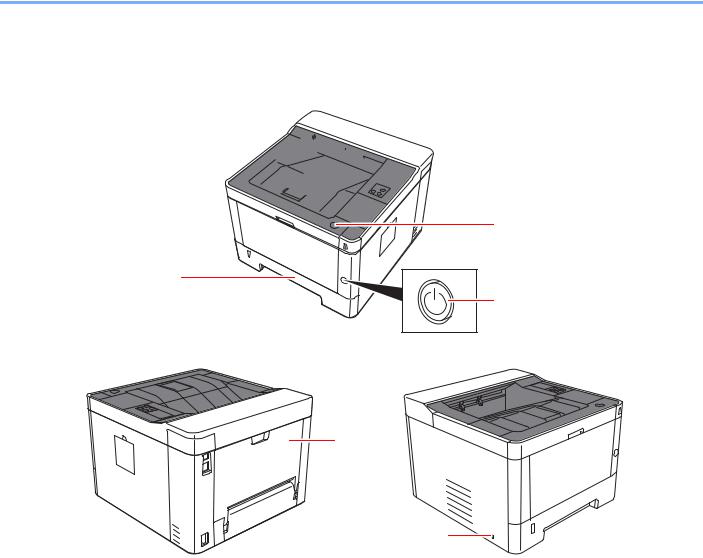
Установка и настройка аппарата > Наименования компонентов (внешняя сторона аппарата)
Наименования компонентов (внешняя сторона аппарата)
1 

5
3
4
7
|
8 |
|||
|
1 |
Верхний лоток |
5 |
Кнопка открытия передней крышки |
|
2 |
Ограничитель бумаги |
6 |
Панель управления |
|
3 |
Кассета 1 |
7 |
Задняя крышка |
|
4 |
Выключатель питания |
8 |
Паз замка для защиты от краж |
2-2
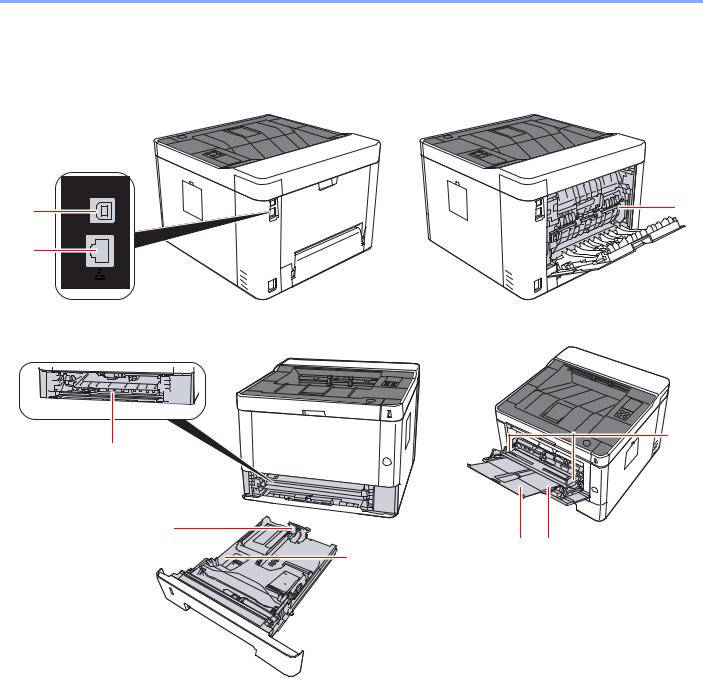
Установка и настройка аппарата > Наименования компонентов (разъемы / внутренние компоненты)
Наименования компонентов (разъемы / внутренние компоненты)
2
4


|
1 |
Разъем интерфейса USB |
6 |
Удлинитель лотка |
|
2 |
Разъем сетевого интерфейса |
7 |
Универсальный лоток |
|
3 |
Крышка податчика |
8 |
Направляющие ширины бумаги |
|
4 |
Направляющая длины бумаги |
9 |
Крышка блока термофиксатора |
|
5 |
Направляющие ширины бумаги |
2-3

Установка и настройка аппарата > Наименования компонентов (разъемы / внутренние компоненты)
11
10
10 Кнопка освобождения контейнера с тонером
11 Контейнер с тонером
2-4
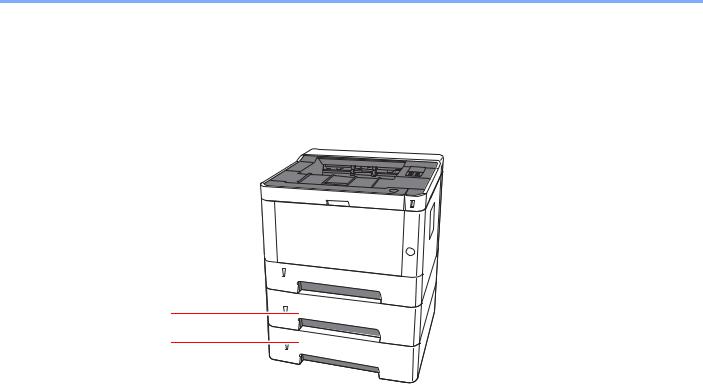
Установка и настройка аппарата > Наименования компонентов (с установленным дополнительным
Наименования компонентов (с установленным дополнительным оборудованием)
1
2
1Кассета 2
2Кассета 3

2-5

Установка и настройка аппарата > Подключение аппарата и других устройств
Подключение аппарата и других устройств
Подготовьте необходимые кабели в соответствии с условиями эксплуатации и целью использования аппарата.
Подключение аппарата к ПК через USB
USB
При подключении аппарата к ПК или планшету с помощью сетевого кабеля, Wi-Fi или Wi-Fi Direct
Подключение с помощью сетевого кабеля
Сеть
|
Подключение |
||||||||||||
|
Wi-Fi*1 |
||||||||||||
|
Точка доступа Wi-Fi |
||||||||||||
|
Планшет |
Подключение |
|||||||||||
|
Wi-Fi Direct*1 |
||||||||||||
|
Подключение Wi-Fi |
||||||||||||
|
*1 Только для моделей с Wi-Fi. |
||||||||||||
|
или Wi-Fi Direct |

Если вы пользуетесь беспроводной локальной сетью, см. приведенную ниже информацию. 
Кабели, которые можно использовать
|
Среда подключения |
Функция |
Необходимый кабель |
|
Подключите сетевой кабель к |
Принтер |
Сетевой кабель (10BASE-T, 100BASE-TX, |
|
аппарату. |
1000BASE-T) |
|
|
Подключите кабель USB к |
Принтер |
Кабель, совместимый с интерфейсом USB 2.0 |
|
аппарату. |
(высокоскоростной, совместимый с |
|
|
интерфейсом USB, макс. длина 5,0 м, |
||
|
экранированный) |
||

Использование кабеля, не совместимого с интерфейсом USB 2.0, может стать причиной сбоя в работе оборудования.
2-6
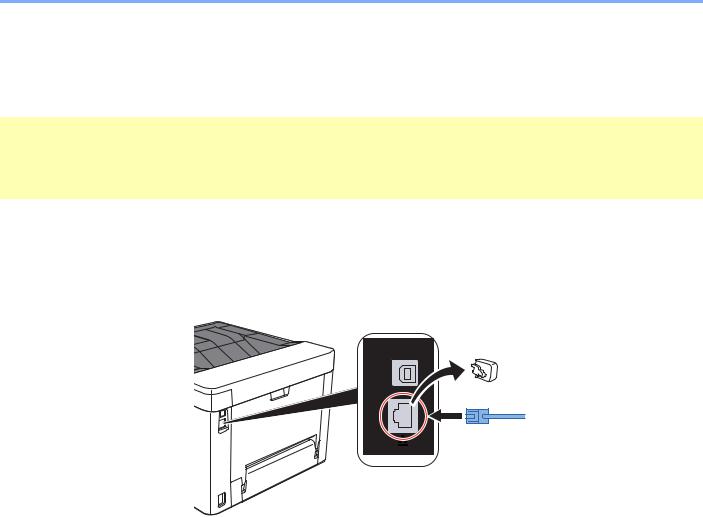
Установка и настройка аппарата > Подсоединение кабелей
Подсоединение кабелей
Подсоединение кабеля LAN


1 Подключите кабель к аппарату.
1 Подключите сетевой кабель к разъему сетевого интерфейса.
2 Подсоедините другой конец кабеля к концентратору или ПК.
2 Включите аппарат и выполните конфигурирование сети.

2-7

Установка и настройка аппарата > Подсоединение кабелей
Подсоединение кабеля USB


1 Подключите кабель к аппарату.
1 Подключите кабель USB к разъему интерфейса USB.
2 Подсоедините другой конец кабеля к ПК.
2 Включите электропитание аппарата.
Подсоединение кабеля питания
1 Подключите кабель к аппарату.
Подсоедините один конец прилагаемого кабеля питания к аппарату, а другой — к розетке.

2-8

Установка и настройка аппарата > Включение/выключение питания
Включение/выключение питания
Включение питания
1 Включите питание с помощью выключателя питания.
Выключение питания
1 Выключите питание с помощью выключателя питания.
Выключение питания занимает приблизительно 3 минуты.

Если аппарат длительное время (например, в течение ночи) использоваться не будет, выключите его с помощью сетевого выключателя питания. Если аппарат не будет использоваться значительно больший период времени (например, во время отпуска), вытяните вилку шнура питания из розетки в качестве меры предосторожности.

2-9

Установка и настройка аппарата > Использование панели управления
Использование панели управления
Панель управления
|
1 |
7 |
||
|
2 |
|||
|
3 |
6 |
||
|
4 |
5 |
||
|
8 |
11 |
||
|
9 |
10 |
||
|
1 |
Индикатор [Внимание] |
8 |
Клавиша [Бесшумный режим] |
|
2 |
Индикатор [ЗАСТРЕВАНИЕ] |
9 |
Клавиша [GO] |
|
3 |
Индикатор [Тонер] |
10 Клавиша [Отмена] |
|
|
4 |
Индикатор [Бумага] |
11 Клавиша [Wi-Fi Direct] *1 |
5Индикатор [Wi-Fi]*1
6Индикатор [Эконом. энергии]
7Индикатор [Обработка]
*1 Только для моделей с Wi-Fi.

Сведения о назначении индикаторов и функциях клавиш см. в следующих разделах:

Основные функции каждой клавиши (стр. 2-12)
2-10

Установка и настройка аппарата > Использование панели управления
Индикаторы состояния
Индикаторы используются для определения состояния принтера в любое время. Для определения состояния принтера проверьте индикаторы на принтере и затем обратитесь к таблице ниже, чтобы проверить состояние аппарата.
|
№ |
Имя |
Индикатор |
Состояние |
Описание |
Страницадля |
||
|
справки |
|||||||
|
1 |
Внимание |
Светится/ |
Произошла ошибка. |
стр. 6-16 |
|||
|
мигает |
|||||||
|
2 |
ЗАСТРЕВАНИЕ |
Светится |
Застряла бумага. |
стр. 6-16 |
|||
|
стр. 6-28 |
|||||||
|
3 |
Тонер |
Светится |
Закончился тонер. |
стр. 6-6 |
|||
|
стр. 6-17 |
|||||||
|
Мигает |
Тонер заканчивается. |
стр. 6-6 |
|||||
|
стр. 6-18 |
|||||||
|
4 |
Бумага |
Светится |
Во время печати закончилась бумага. |
стр. 3-4 |
|||
|
стр. 6-24 |
|||||||
|
Мигает |
В заданной кассете или податчике бумаги при |
стр. 3-4 |
|||||
|
состоянии Готов нет бумаги. |
стр. 6-19 |
||||||
|
5 |
Wi-Fi*1 |
Светится |
Аппарат подключен к сети Wi-Fi. |
— |
|||
|
6 |
Эконом. энергии |
Светится |
Принтер находится в режиме ожидания. |
стр. 2-23 |
|||
|
7 |
Обработка |
Светится |
Показывает онлайновое состояние (печать |
— |
|||
|
возможна). |
|||||||
|
Мигает |
Принтер принимает данные. |
— |
|||||
*1 Только для моделей с Wi-Fi.

Если индикатор начинает светиться случайным образом или постоянно мигает, свяжитесь с представителем сервисной службы.
2-11

Установка и настройка аппарата > Использование панели управления
Основные функции каждой клавиши
Сведения об основных функциях каждой клавиши см. в следующей таблице.
|
№ |
Имя |
Клавиша |
Описание |
Страница для |
||
|
справки |
||||||
|
8 |
Бесшумный |
снижение скорости печати для обеспечения бесшумной |
стр. 2-24 |
|||
|
режим |
работы. |
|||||
|
9 |
GO |
сброс конкретной ошибки и выход аппарата из режима |
стр. 2-23 |
|||
|
ожидания. |
стр. 6-20 |
|||||
|
стр. 6-21 |
||||||
|
стр. 6-23 |
||||||
|
стр. 6-25 |
||||||
|
10 |
Отмена |
Приостанавливает задание. |
стр. 5-5 |
|||
|
Для отмены задания нажмите и удерживайте в течение |
стр. 5-5 |
|||||
|
1 секунды. |
||||||
|
11 |
Wi-Fi Direct*1 |
Включает или выключает функцию Wi-Fi Direct. |
стр. 2-20 |
|||
*1 Только для моделей с Wi-Fi.
2-12

Установка и настройка аппарата > Настройка сети
Настройка сети
Настройка проводной сети
Аппарат оборудован сетевым интерфейсом, совместимым с такими сетевыми протоколами, как TCP/IP (IPv4), TCP/IP (IPv6), NetBEUI и IPSec. Он позволяет выполнять сетевую печать в Windows, Macintosh, UNIX и на других платформах.
Выберите протокол TCP/IP (IPv4) для подключения к сети Windows. До выполнения настроек обязательно подсоедините сетевой кабель. 
По поводу других сетевых настроек см.:
Command Center RX User Guide
Настройка IPv4
1 Откройте экран.
1Запустите Web-обозреватель.
2В строке адреса или расположения введите IP-адрес аппарата или имя хоста.
На странице состояния можно проверить IP-адрес или имя хоста аппарата. Для печати страницы состояния нажмите клавишу [GO] на панели управления и удерживайте ее нажатой в течение 3—9 секунд.
3Войдите в систему с полномочиями администратора.
Заводские настройки по умолчанию для пользователей по умолчанию с правами администратора приведены ниже. (Прописные и строчные буквы различаются (с учетом регистра).)
|
Имя пользователя для регистрации: |
Admin |
|
Пароль для регистрации: |
Admin |
4 В меню [Настройки сети] выберите [TCP/IP].
2-13

Установка и настройка аппарата > Настройка сети
2 Настройте параметры.
1В разделе «TCP/IP» — «Настройки IPv4 (Проводная сеть)», установите параметры
[DHCP/BOOTP] и [Auto-IP] на значение [Выкл].
2Настройте параметры [IP-адрес] и [Маска подсети].
3При необходимости настройте параметры [Шлюз по умолчанию], [DNS-сервер], [WINS-сервер] и [Имя хоста] в разделе «Настройки IPv4 (Общие)».
4Нажмите [Передать].

После изменения настроек необходимо перезапустить плату сетевого интерфейса. Выключите и затем включите аппарат.
Для перезапуска сети также можно нажать [Сброс] в меню [Настройки управления] программы Command Center RX и затем нажать [Перезапустить сеть] в области «Перезапуск».

Заблаговременно узнайте у администратора сети IP-адрес и используйте его при выполнении данной настройки.
Вследующих случаях задайте IP-адрес DNS-сервера в Command Center RX:
•при использовании имени хоста с параметром DHCP, установленным на «Выкл.»;
•при использовании DNS-сервера, IP-адрес которого не назначается автоматически посредством DHCP.
Порядок настройки IP-адреса DNS-сервера см. в следующем документе:
Command Center RX User Guide
Для возврата сетевых настроек к заводским значениям одновременно нажмите клавишу [Отмена] и клавишу [Бесшумный режим] и удерживайте их нажатыми в течение как минимум 15 секунд, после чего выключите, а затем снова включите электропитание.
2-14

Установка и настройка аппарата > Настройка сети
Настройка беспроводной сети
Если на аппарате доступна функция беспроводной сети и настроены параметры подключения, возможна печать в среде беспроводной сети (беспроводной ЛВС). Используются следующие методы конфигурации:
|
Метод конфигурации |
Описание |
Страница для справки |
|
Настройка соединения с |
Если ваша точка доступа оснащена нажимной кнопкой |
Настройка соединения с |
|
помощью нажимной кнопки |
WPS, настроить соединение можно, нажав нажимную |
помощью нажимной кнопки |
|
WPS на панели управления*1 |
кнопку WPS на обоих устройствах. |
WPS на панели управления |
|
(стр. 2-15) |
||
|
Настройка соединения с |
Данная утилита включена в состав программ на диске |
Настройка соединения с |
|
использованием утилиты |
Product Library. Конфигурацию соединения можно |
использованием утилиты для |
|
для настройки Wi-Fi*2 |
выполнить в соответствии с инструкциями, |
настройки Wi-Fi (стр. 2-17) |
|
отображаемыми мастером. |
||
|
Конфигурация соединений |
Соединение можно настроить из Command Center RX. |
Конфигурация соединений на |
|
на веб-странице*2 |
веб-странице (стр. 2-18) |
*1 Если точка доступа поддерживает функцию WPS, сконфигурировать настройки можно на панели управления.

*2 До начала настройки беспроводной сети с применением компьютера подключите аппарат с помощью сетевого кабеля или установите беспроводное соединение с использованием функции Wi-Fi Direct.


На модели с функцией Wi-Fi при переходе на сетевой интерфейс, отличный от проводного, измените соответствующим образом настройки в разделе «Осн. сеть (клиент)».
Command Center RX User Guide
Настройка соединения с помощью нажимной кнопки WPS на панели управления
Если ваша точка доступа оснащена нажимной кнопкой WPS, настроить соединение можно, нажав нажимную кнопку WPS на обоих устройствах.
1 Включите режим Wi-Fi.
На панели управления одновременно нажмите клавиши [GO] и [Wi-Fi Direct] и удерживайте их нажатыми в течение не менее 10 секунд.

Кроме того, включить режим Wi-Fi также можно в Command Center RX.

Выключите и затем включите аппарат.

Нажмите нажимную кнопку WPS на точке доступа.
На панели управления нажмите клавишу [Wi-Fi Direct] и удерживайте ее нажатой в течение 5 секунд.

Для выполнения этой операции необходимо нажать нажимную кнопку WPS.
Сетевое соединение между этим аппаратом и точкой доступа сконфигурировано.
2-15

Установка и настройка аппарата > Настройка сети
Подготовка к конфигурации беспроводной сети с применением компьютера
До начала конфигурации беспроводной сети с применением компьютера подключите аппарат с помощью следующих способов подключения.
Прямое проводное соединение с использованием сетевого кабеля
Включите аппарат и подключите его к компьютеру с помощью сетевого кабеля.
Включите компьютер.
Аппарату и компьютеру будет назначен адрес Auto-IP (адрес локальной связи). В данном аппарате настройки Auto-IP используются в качестве настроек по умолчанию.
3 Печатает страницу состояния.
Нажмите клавишу [GO] и удерживайте 3—9 секунд.
4 Запишите IP-адрес.
Соединение с беспроводной ЛВС посредством Wi-Fi Direct
1 Включите режим Wi-Fi Direct.
На панели управления одновременно нажмите клавиши [GO] и [Wi-Fi Direct] и удерживайте их нажатыми в течение 3 секунд.

Включить режим Wi-Fi Direct также можно в Command Center RX.
Command Center RX User Guide
Выключите и затем включите аппарат.

Подключите компьютер или портативное устройство к аппарату.
Настройка Wi-Fi Direct (стр. 2-20)
Печатает страницу состояния сетевого подключения.
Нажмите клавишу [GO] и удерживайте ее нажатой в течение 10 секунд или более.
Запишите имя сети (SSID), IP-адрес и пароль.
Данная информация также напечатана в разделе Wi-Fi Direct на странице состояния сети.

Проверить имя сети (SSID), IP-адрес и пароль также можно в программе Command Center RX.
Command Center RX User Guide
2-16

Установка и настройка аппарата > Настройка сети
Настройка соединения с использованием утилиты для настройки Wi-Fi
Для отправки настроек Wi-Fi, сконфигурированных с помощью утилиты для настройки Wi-Fi, на аппарат, выполните локальное подсоединение компьютера или портативного устройства к аппарату. Доступны следующие методы соединения: проводное соединение с использованием сетевого кабеля или беспроводное соединение (Wi-Fi Direct).
|
1 |
Подключите аппарат с помощью сетевого кабеля или |
|
функции Wi-Fi Direct. |
|
|
Прямое проводное соединение с использованием сетевого кабеля (стр. 2-16) |
|
|
Соединение с беспроводной ЛВС посредством Wi-Fi Direct (стр. 2-16) |
|
|
2 |
Вставьте диск DVD. |

•Для установки на компьютере с ОС Windows у пользователя должны быть полномочия администратора.
•Если отображается диалоговое окно «Мастер нового оборудования», выберите [Отмена].
•Если откроется экран автозапуска, нажмите [Запуск setup.exe].
•Если появится окно управления учетной записью, нажмите [Да] ([Разрешить]).
3 Откройте экран.
1 Нажмите [Просмотр
лицензионного соглашения] и
прочитайте лицензионное соглашение.
2 Нажмите [Принять].
Выберите [Обслуживание].
[Средство установки Wi-Fi] > [Выполнить]
2-17

Установка и настройка аппарата > Настройка сети
6 Настройте параметры.
1[Не использовать автоматическую конфигурацию] > [Далее] > [Далее]
2[Использовать сетевой кабель] > [Далее] > [Далее]
3[Легкая настройка] > [Далее]
Аппарат обнаружен.

•С помощью утилиты для настройки Wi-Fi можно выполнить поиск только одного аппарата. Для поиска аппарата требуется определенное время.
•Если аппарат не обнаружен, выберите [Расширенная установка] > [Далее]. Выберите [Экспресс] или [Пользоват.] в качестве метода обнаружения устройства и укажите IP-адрес или имя хоста для поиска аппарата.
4Выберите аппарат > [Далее]
5Выберите [Использовать настройки устройства.] на вкладке [Режим аутентификации] и введите имя пользователя и пароль для входа в систему. Имя пользователя для входа и пароль должны принадлежать учетной записи администратора.
6Настройте параметры связи > [Далее]
7При необходимости измените настройки точки доступа > [Далее] Сеть сконфигурирована.
Конфигурация соединений на веб-странице
Соединение можно настроить из Command Center RX.
1 Подключите аппарат с помощью сетевого кабеля или функции Wi-Fi Direct.

2 Откройте экран.
1Запустите Web-обозреватель.
2В строке адреса или расположения введите IP-адрес аппарата или имя хоста.
На странице состояния можно проверить IP-адрес или имя хоста аппарата. Для печати страницы состояния нажмите клавишу [GO] и удерживайте ее нажатой в течение 3—9 секунд.
3Войдите в систему с полномочиями администратора.
2-18

Установка и настройка аппарата > Настройка сети
Заводские настройки по умолчанию для пользователей по умолчанию с правами администратора приведены ниже. (Прописные и строчные буквы различаются (с учетом регистра).)
|
Имя пользователя для регистрации: |
Admin |
|
Пароль для регистрации: |
Admin |
4 [Настройки сети] > [Беспроводная ЛВС]
Настройте параметры.
Выберите пункт в разделе «Настройки беспроводной ЛВС».
Command Center RX User Guide
Нажмите [Передать].
Выполните перезапуск сети.
Нажмите [Сброс] в меню [Настройки управления] и затем нажмите [Перезапустить сеть] в области «Перезапуск».
2-19

Установка и настройка аппарата > Настройка сети
Настройка Wi-Fi Direct
Если в аппарате предусмотрена функция беспроводной сети, настройка Wi-Fi Direct дает возможность выполнять печать из среды Wi-Fi Direct. Используются следующие методы конфигурации:
|
Метод конфигурации |
Описание |
Страница для справки |
|
Использование режима Wi-Fi |
С использованием режима Wi-Fi Direct |
Использование режима Wi-Fi |
|
Direct на портативном |
сконфигурировать соединение можно на компьютере |
Direct на портативном |
|
устройстве*1 |
или портативном устройстве. |
устройстве (стр. 2-20) |
|
Использование режима Wi-Fi |
С компьютера или портативного устройства можно |
Использование режима Wi-Fi и |
|
и обнаружение аппарата с |
сконфигурировать подключение с применением |
обнаружение аппарата с |
|
портативного устройства |
режима Wi-Fi, выполнить обнаружение аппарата и |
портативного устройства (стр. |
|
установить с ним соединение в качестве точки доступа. |
2-21) |
|
|
Использование режима Wi-Fi |
С применением режима Wi-Fi можно сконфигурировать |
Использование режима Wi-Fi и |
|
и нажимной кнопки WPS на |
подключение с компьютера или портативного |
нажимной кнопки WPS на |
|
портативном устройстве |
устройства, используя нажимную кнопку WPS; для |
компьютере или портативном |
|
последующего подключения к сети следует нажать |
устройстве (стр. 2-22) |
|
|
нажимную кнопку WPS и на аппарате, и на компьютере |
||
|
или портативном устройстве. |
||
*1 При использовании режима Wi-Fi Direct, когда компьютер или портативное устройство уже подключены к другой сети с применением режима Wi-Fi, выполнить задание печати невозможно, поскольку приложение не может найти аппарат.
Использование режима Wi-Fi Direct на портативном устройстве
Ниже приводятся процедуры для подключения к портативным устройствам, работающим под управлением Android 4.4 или последующих версий.
1 Включите режим Wi-Fi Direct.
На панели управления одновременно нажмите клавиши [GO] и [Wi-Fi Direct] и удерживайте их нажатыми в течение 3 секунд.

Включить режим Wi-Fi Direct также можно в Command Center RX.
Command Center RX User Guide
Выключите и затем включите аппарат.

В меню Wi-Fi Direct портативного устройства выберите имя хоста (KMxxxxxx).
На панели управления нажмите клавишу [Wi-Fi Direct] и удерживайте ее нажатой в течение 1 секунды, пока клавиша [Wi-Fi Direct] не начнет мигать.

Для выполнения данной операции необходимо сначала подтвердить установление соединения Wi-Fi Direct на портативном устройстве.
Сетевое соединение между этим аппаратом и портативным устройством сконфигурировано.
2-20

Установка и настройка аппарата > Настройка сети
Использование режима Wi-Fi и обнаружение аппарата с портативного устройства
Ниже приводятся процедуры для подключения к портативным устройствам, работающим под управлением iOS. Аналогичную процедуру можно использовать для подключения к портативным устройствам или компьютерам, работающим под управлением ОС Android.
1 Включите режим Wi-Fi Direct.
На панели управления одновременно нажмите клавиши [GO] и [Wi-Fi Direct] и удерживайте их нажатыми в течение 3 секунд.

Включить режим Wi-Fi Direct также можно в Command Center RX.
Command Center RX User Guide
Выключите и затем включите аппарат.

Печатает сервисную страницу состояния.
Нажмите клавишу [GO] и удерживайте ее нажатой в течение 10 секунд или более.
Запишите имя сети (SSID), IP-адрес и пароль.
Данная информация также напечатана в разделе Wi-Fi Direct на странице состояния сети.

Проверить имя сети (SSID), IP-адрес и пароль также можно в программе Command Center RX.
Command Center RX User Guide
|
5 |
Выполните конфигурацию портативного устройства или |
|
|
компьютера. |
||
|
Процедура конфигурации портативного устройства |
||
|
1 |
[Параметры] > [Wi-Fi] |
|
|
2 |
Выберите из списка имя сети (SSID), которое отображается на шаге 4 данной |
|
|
процедуры. |
||
|
3 |
Введите пароль, который был указан на шаге 4 > [Подключ.] |
|
|
Сетевое соединение между этим аппаратом и портативным устройством |
||
|
сконфигурировано. |
||
|
Процедура конфигурации на компьютере |
||
|
1 |
Для отображения списка сетей щелкните значок сети в области уведомлений. |
|
|
2 |
Выберите из списка имя сети (SSID), которое отображается на шаге 4 данной |
|
|
процедуры > [Подключ.]. |
||
|
3 |
Введите пароль, который был указан на шаге 4 > [Далее] > [Да]. |
|
|
Сетевое соединение между этим аппаратом и компьютером сконфигурировано. |
2-21

Установка и настройка аппарата > Настройка сети
Использование режима Wi-Fi и нажимной кнопки WPS на компьютере или портативном устройстве
Если компьютер или портативное устройство поддерживают функцию нажимной кнопки WPS в режиме Wi-Fi, сконфигурировать соединение можно, нажав кнопку WPS и на аппарате, и на компьютере или портативном устройстве.
1 Включите режим Wi-Fi Direct.
На панели управления одновременно нажмите клавиши [GO] и [Wi-Fi Direct] и удерживайте их нажатыми в течение 3 секунд.

Включить режим Wi-Fi Direct также можно в Command Center RX.
Command Center RX User Guide
Выключите и затем включите аппарат.

На панели управления нажмите клавишу [Wi-Fi Direct] и удерживайте ее нажатой в течение 5 секунд.

Для выполнения этой операции необходимо нажать нажимную кнопку WPS.
|
4 |
Коснитесь нажимной кнопки [WPS] на компьютере или |
|
портативном устройстве. |
Сетевое соединение между этим аппаратом и компьютером или портативным устройством сконфигурировано.

С помощью настройки Wi-Fi Direct можно одновременно подключить не более трех портативных устройств. Если устройства, поддерживающие функцию Wi-Fi Direct, уже подключены, то для подключения другого устройства отключите от сети ранее подключенные устройства. Для отключения используются следующие методы:
•отключение от сети компьютера или портативного устройства;
•отключение от сети всех устройств на панели управления;
На панели управления одновременно нажмите клавиши [Отмена] и [Wi-Fi Direct] и удерживайте их нажатыми в течение 3 секунд.
•настройка времени автоотключения из Command Center RX. 
2-22

Установка и настройка аппарата > Функция экономии энергии
Функция экономии энергии
Если с момента последнего использования прошло еще некоторое время, аппарат автоматически переходит в режим ожидания, при котором энергопотребление сводится к минимуму. Если аппарат, находящийся в режиме ожидания, не используется, питание автоматически выключается.
Автоматический переход в режим ожидания
При задействовании данной функции аппарат автоматически переходит в режим ожидания, если не используется в течение установленного интервала времени.
Время до перехода в режим ожидания.
•1 минута (параметр по умолчанию).
Если в режиме ожидания будут получены данные печати, аппарат автоматически выйдет из этого режима и начнет печать.
Для возобновления работы выполните описанные ниже действия.
•Нажмите клавишу [GO].
Время выхода из режима ожидания.
•Не более 10 секунд
Имейте в виду, что условия окружающей среды, такие как вентиляция, могут вызвать замедленную реакцию аппарата.
Чтобы ознакомиться с более подробной информацией о настройках автоматического режима ожидания, см. следующий раздел:

Правило выключения питания (модели для стран Европы)
Правило выключения используется для автоматического отключения питания. Установленный по умолчанию интервал времени равен 3 дням.
Чтобы ознакомиться с более подробной информацией о настройках правила выключения питания, см. следующий раздел:

2-23

Установка и настройка аппарата > Тихий режим
Тихий режим
Снижение скорости печати для обеспечения бесшумной работы. Выбирайте этот режим, если шум во время работы причиняет дискомфорт.
Если нажать клавишу [Бесшумный режим], будет мигать клавиша [Бесшумный режим] и аппарат перейдет в тихий режим.
Клавиша [Бесшумный режим]

В тихом режиме скорость обработки данных снижается по сравнению с обычным режимом работы.
2-24

Установка и настройка аппарата > Установка программного обеспечения
Установка программного обеспечения
Для использования функций принтера аппарата с компьютера установите на свой компьютер соответствующее программное обеспечение с прилагаемого DVD (Product Library).
Программное обеспечение на DVD (Windows)
В качестве метода установки можно выбрать либо вариант [Экспресс-установка], либо вариант
[Пользовательская установка]. Стандартным методом установки является [Экспресс-установка]. Если компоненты не удается установить с помощью [Экспресс-установка], воспользуйтесь [Пользовательская установка].
Для получения подробной информации о пользовательской установке см.: 
|
Программное |
Описание |
Экспресс- |
|
|
обеспечение |
установка |
||
|
KX DRIVER |
Данный драйвер позволяет печатать на аппарате файлы с компьютера. |
||
|
Один драйвер поддерживает несколько языков описания страниц (PCL |
|||
|
XL, KPDL и др.). Данный драйвер принтера позволяет использовать |
|||
|
функциональные возможности аппарата с максимальной |
|||
|
эффективностью. |
|||
|
Рекомендуется использовать этот драйвер для создания файлов PDF. |
|||
|
KX XPS DRIVER |
Данный драйвер принтера поддерживает формат XPS (XML Paper |
— |
|
|
Specification), разработанный корпорацией Microsoft. |
|||
|
KPDL mini-driver/PCL |
Это Microsoft MiniDriver с поддержкой PCL и KPDL. Имеются некоторые |
— |
|
|
mini-driver |
ограничения на функциональные возможности аппарата и |
||
|
дополнительные функции, которые могут использоваться с данным |
|||
|
драйвером. |
|||
|
KYOCERA Net Viewer |
Утилита, позволяющая осуществлять контроль аппарата в сети. |
— |
|
|
Status Monitor |
Служебная программа, контролирующая состояние принтера и |
||
|
обеспечивающая функцию непрерывного формирования отчетов. |
|||
|
KYOCERA Net Direct Print |
Позволяет печатать файл PDF без запуска программы Adobe Acrobat/ |
— |
|
|
Reader. |
|||
|
FONTS |
Экранные шрифты, позволяющие использовать встроенные шрифты |
||
|
аппарата в программном приложении. |
|||

•Для установки на компьютере с ОС Windows у пользователя должны быть полномочия администратора.
•KX XPS DRIVER нельзя установить в Windows XP.
2-25

Установка и настройка аппарата > Установка программного обеспечения
Установка программного обеспечения в Windows
Экспресс-установка
Ниже приведен пример процедуры по установке программного обеспечения в Windows 8.1 с помощью варианта
[Экспресс-установка].
Для получения подробной информации о пользовательской установке см.: 
1 Вставьте DVD.

•Для установки на компьютере с ОС Windows у пользователя должны быть полномочия администратора.
•Если отображается диалоговое окно «Мастер нового оборудования«, выберите
[Отмена].
•Если откроется экран автозапуска, нажмите [Запуск setup.exe].
•Если появится окно управления учетной записью, нажмите [Да] ([Разрешить]).
2 Откройте экран.
1 Нажмите [Просмотр
лицензионного соглашения] и
прочитайте лицензионное соглашение.
2 Нажмите [Принять].
3 Выберите [Экспресс-установка].
2-26

Установка и настройка аппарата > Установка программного обеспечения
4 Установите программное обеспечение.
1
2
3
Также можно выбрать параметр [Использовать имя узла в качестве имени порта] и
задать его для использования имени хоста стандартного порта TCP/IP. (Нельзя использовать USB-подключение.)

Если включена функция Wi-Fi или Wi-Fi Direct, обязательно укажите IP-адрес для имени порта. При указании имени хоста процесс установки может завершиться неудачно.

•Невозможно обнаружить выключенный аппарат. Если компьютеру не удается обнаружить аппарат, убедитесь, что аппарат включен и подключен к компьютеру через сетевой кабель или кабель USB, а затем щелкните 
•Если появится окно безопасности Windows, выберите [Все равно установить этот драйвер].
•Если компьютер работает под управлением Windows версии ниже 8, то для установки Status Monitor необходимо наличие на компьютере установленной платформы Microsoft .NET Framework 4.0.
2-27

OPERATION GUIDE
ECOSYS P2235dn
ECOSYS P2235dw
> Preface
i
Preface
Thank you for purchasing this machine.
This Operation Guide is intended to help you operate the machine correctly, perform routine maintenance, and take
simple troubleshooting measures as needed so that the machine can always be used in the optimum condition.
Please read this Operation Guide before using the machine.
To maintain quality, we recommend using genuine Kyocera toner containers, which must
pass numerous quality inspections.
The use of non-genuine toner containers may cause failure.
We will not be liable for any damages caused by the use of third party supplies in this machine.
A label is affixed to our genuine supplies, as shown below.
Checking the Equipment’s Serial Number
The equipment’s serial number is printed in the location shown in the figure.
You’ll need the equipment’s serial number when contacting your Service Representative. Please check the number
before contacting your Service Representative.
ii
Contents
Preface ………………..………………….………………..………………….………………..……………………….. i
Contents…………………………….…………………..………………….………………..………………..……….. ii
Machine Features …………….……………….…………………..………………….………………..………..…. v
Guides Provided with the Machine……….…………………..……………….…………………..………. vii
About the Operation Guide (this Guide) …..……………….…………………..……………….……… viii
Structure of the guide…………………………………..…………………….……………………..…… viii
Conventions Used in This Guide….………….……………………..………………….……………… ix
1 Legal and Safety Information …………………..…………………………….………. 1-1
Notice …………..………………..………………….…………………..……………….………………….……… 1-2
Safety Conventions in This Guide …………..…….……………….………………….…………… 1-2
Environment …………………………….…………………..………………….………………..……….. 1-3
Precautions for Use ……….…………………..………………….………………..…………………... 1-4
Laser Safety (Europe) ……………….……………………..……………………..…………………… 1-5
SAFETY OF LASER BEAM (USA) ..……………..…………….………….……………………… 1-6
Safety Instructions Regarding the Disconnection of Power ………..………………….….. 1-7
Compliance and Conformity ……………..……………….…………………..……………….…….. 1-7
Other precautions (for users in California, the United States) …………..………………... 1-7
EN ISO 7779 ……………..…………………..……………….…………………..……………….…….. 1-7
EK1-ITB 2000 ……………………..……………….…………………..……………….………………… 1-8
Wireless Connection (Mexico only) ………………………….……………………..……………… 1-8
Security Precautions when Using Wireless LAN (If equipped) …………………………... 1-8
Limited Use of This Product (If equipped) ..……….……………….…………………..……….. 1-9
Legal Information …………………..……………….…………………..………………….…………. 1-10
Energy Saving Control Function ………………………..……………………..…………………. 1-14
Automatic 2-Sided Print Function ..………….……….………………….………………..……… 1-14
Resource Saving — Paper ………..…………….…….………………….……………….…………. 1-14
Environmental benefits of «Power Management» ……………………………………………. 1-14
Energy Star (ENERGY STAR®) Program …..……………………..……………………..…… 1-14
2 Installing and Setting up the Machine …………………………………………….. 2-1
Part Names (Machine Exterior) …………………….………….…………………..……………….…….. 2-2
Part Names (Connectors/Interior) ……..………….…….………………….…………………..……….. 2-3
Part Names (With Optional Equipments Attached) ……………….……………………..……….. 2-5
Connecting the Machine and Other Devices ……….………………….……………….…………… 2-6
Connecting Cables …………….……………….…………………..……………….…………………..…….. 2-7
Connecting LAN Cable …..…………………..……………….…………………..……………….….. 2-7
Connecting USB Cable ………………………………………….…………………..………………… 2-8
Connecting the Power Cable ……..……………………..……………………..…………………… 2-8
Power On/Off ………………………………..……………….…………………..……………….……………… 2-9
Power On …………………………..………………….………………..………………….……………… 2-9
Power Off …………………………..………………….………………..………………….……………… 2-9
Using the Operation Panel ……………….…………………..……………….…………………..……… 2-10
Operation Panel ………………………………..………………….…………………..………………. 2-10
Indicator States ……….……………….…………………..………………….………………..……… 2-11
Basic Functions of Each Key ……..……………………..……………………..…………………. 2-12
Network Setup ……….…………………..………………….………………..………………….……………. 2-13
Configuring the Wired Network ……………………………….……………………..……………. 2-13
Configuring the Wireless Network ……..…………………….……………………..……………. 2-15
Setting Wi-Fi Direct ….………………….…………………..……………….…………………..…… 2-20
Energy Saver function ………………..……………………..…………………….……………………..… 2-23
Auto Sleep ……..…………………..………………….………………..………………….……………. 2-23
Power Off Rule (models for Europe) ………….………………..……………….………………. 2-23
Quiet Mode …………………..……………….…………………..……………….………………….……….… 2-24
Installing Software ………….………………….………………..………………….…………………..…… 2-25
Software on DVD (Windows) …..……………….…………………..………………….…………. 2-25
iii
Installing Software in Windows ……..……….…….………………….……………….…………. 2-26
Uninstalling the Software ……..……………………..………………….……………………..…… 2-32
Installing Software in Mac Computer ………………….…………………..……………….…… 2-33
Command Center RX ………………………….…………………..……………….…………………..…… 2-35
Accessing Command Center RX …..……………………..……………………..………………. 2-36
Changing Security Settings ……..…………….…….……………….………………….…………. 2-37
Changing Device Information …..…………….…….……………….………………….…………. 2-39
E-mail Settings ………..………………….………………..………………….………………..……… 2-41
3 Preparation before Use ………….…………………………….………………………… 3-1
Loading Paper ……………………..………………..………………….…………………..……………….….. 3-2
Precaution for Loading Paper ……………..……………………..………………….……………… 3-2
Selecting the Paper Feeder Units ….……………………..……………………..………………… 3-3
Loading in the Cassettes ………………………….………………..………………….……………… 3-4
Precautions for Outputting Paper …………………………….…………………..………………….….. 3-8
Paper Stopper ……………………………………..……………….…………………..………………... 3-8
4 Printing from PC ………………………………………………….………………………… 4-1
Printer Driver Properties Screen ….………………….…………………..……………….……………… 4-2
Displaying the Printer Driver Help ….……….……….……………….…………………..……….. 4-3
Changing the Default Printer Driver Settings (Windows 8.1) ……………………………… 4-3
Printing from PC ….……………….…………………..………………….………………..…………………... 4-4
Printing on Standard Sized Paper ……..……………….…………………..……………….…….. 4-4
Printing on Non-standard Sized Paper ….………………….…………………..………………... 4-6
Canceling Printing from a Computer ………….….……………….………………….…………… 4-9
Printing from the Handheld Device ……..……………………..…………………..…………………. 4-10
Printing by Google Cloud Print ………….…………………….……………………..……………. 4-10
Printing by Mopria …………………………………..……………………..……………………..…… 4-10
Printing with Wi-Fi Direct …..…………………..……………………..……………………..……… 4-10
Monitoring the Printer Status (Status Monitor) ………………………….……………………..… 4-11
Accessing the Status Monitor ………..………………..………………….………………..……… 4-11
Exiting the Status Monitor …….……………………..…………………….……………………..… 4-11
Quick View State .………………..………………….…………………..……………….……………. 4-11
Printing Progress Tab ……………….……………………..…………………..……………………. 4-12
Paper Tray Status Tab …..………………..………………….…………………..……………….… 4-12
Toner Status Tab …….………………….…………………..……………….…………………..…… 4-12
Alert Tab ………..…………………..………………….………………..………………….……………. 4-13
Status Monitor Context Menu ………..……………………..……………………..………………. 4-13
Status Monitor Notification Settings …………………………………….……………………..… 4-14
Configuration Tool …………….……………………..…………….…………………..………………….… 4-15
Accessing the Configuration Tool .……………………..……………………..…………………. 4-15
Exiting the Configuration Tool …….……………………..……………………..…………………. 4-16
Configuration Tool Settings Screen ……..……………………..…………………….…………. 4-17
5 Operation on the Machine .…………………………….………………………………. 5-1
Loading Paper in the Multipurpose Tray ………….………………..………………….……………… 5-2
Pausing and Resuming a Job ……..……………………..…………………….……………………..….. 5-5
Canceling Jobs …………….……………….…………………..……………….………………….…………... 5-5
Print Report ..………………..………………….………………..………………….…………………..…..…… 5-6
6 Troubleshooting ……………………………………………………………………………. 6-1
Regular Maintenance ……………………….…………………..………………….………………..……….. 6-2
Cleaning …………..………………..………………….…………………..……………….……………… 6-2
Cleaning the inside of the Machine ………………………………..……………….……………… 6-2
Toner Container Replacement …………….……….……………………………..………………... 6-6
Loading Paper ………………………………..………………….………………..………………….….. 6-9
iv
Using the Maintenance Menu ……………………………………..……………………..………………. 6-10
Troubleshooting ……….…………………..……………….…………………..……………….……………. 6-11
Solving Malfunctions ……..…………………..………………….………………..…………………. 6-11
Machine Operation Trouble .……………………..……………………..…………………..……… 6-11
Printed Image Trouble ………….……………………..…………………….……………………..… 6-13
Indicator pattern when an error occurs .…………………..…………………..……………….…… 6-16
Maintenance Indication ………..……………………..…………………….……………………..… 6-16
Error Indication ………..……………….…………………..………………….………………..……… 6-26
Clearing Paper Jams …………….………………..………………….………………..………………….… 6-28
Remove any jammed paper in the Multipurpose Tray ……………………………..……… 6-29
Remove any jammed paper in Cassette 1 ….……………………..……………………..…… 6-30
Remove any jammed paper in Cassette 2 ….……………………..……………………..…… 6-32
Remove any jammed paper in Cassette 3 ….……………………..……………………..…… 6-34
Remove any jammed paper in Rear Cover ……….……………………..……………………. 6-36
Remove any jammed paper inside of the Machine ….……………………..………………. 6-40
7 Appendix ………………….…………………………….…………………………….………. 7-1
Optional Equipment ……..………………….…………………..……………….…………………..……….. 7-2
Overview of Optional Equipment ………………………..……………………..…………………... 7-2
Paper ……………………………..………………….…………………..……………….………………….……... 7-5
Basic Paper Specifications ……………………………..………………….………………..……….. 7-5
Choosing the Appropriate Paper …………………..……………….………………….…………… 7-6
Special Paper ……………….………………..………………….………………..………………….….. 7-9
Specifications ……..……………….…………………..………………….………………..……………….... 7-13
Machine ………………………….…………………..…………………..……………….………………. 7-13
Printer Functions .……………………..……………………..……………………..…………………. 7-15
Paper Feeder …………….…………………..………………….………………..………………….… 7-16
Glossary …………..……………….…………………..………………….………………..………………..….. 7-17
Index …………….………………..………………….…………………..……………….…………………… Index-1
v
> Machine Features
Machine Features
The machine is equipped with many useful functions.
Here are some examples.
Save energy and cost
Save energy as needed
(Energy Saver function)
The machine is equipped with Energy
Saver function that automatically
switched into Sleep Mode.
Energy Saver function (page 2-23)
Use less toner for printing
(EcoPrint)
You can save toner consumption with this
function.
When you only need to check the printed
content, such as a trial print run or
documents for internal confirmation, use
this function to save toner.
Use this function when a high-quality print
is not required.
Reduce paper use
(Paper Saving Printing)
You can print originals on both sides of
the paper. You can also print multiple
originals onto one sheet.
Strengthen security Use functions more efficiently
Strengthen security
(Settings for Administrator)
Various functions are available for
administrators to strengthen security.
Changing Security Settings (page 2-
37)
Make the machine quiet
(Quiet Mode)
You can make the machine quiet by
reducing its running noise. ON/OFF
switching by one-touch is possible.
Quiet Mode (page 2-24)
Install the machine without concerning
the network cables (Wireless Network)
If there is a wireless LAN environment, it
is possible to install the unit without
worrying about the network wiring. In
addition, Wi-Fi Direct, etc. are supported.
Configuring the Wireless Network
(page 2-15)
Setting Wi-Fi Direct (page 2-20)
vi
> Machine Features
Use functions more efficiently
Perform remote operation
(Command Center RX)
You can access to the machine remotely
to print, send or download data.
Administrators can configure the machine
behavior or management settings.
Command Center RX (page 2-35)
vii
> Guides Provided with the Machine
Guides Provided with the Machine
The following guides are provided with the machine. Refer to each guide as needed.
The contents of the guides are subject to change without notice for the purpose of improvement of machine
performance.
Printed guides
Guides (PDF) on the DVD (Product Library)
Install the following versions of Adobe Reader to view the manuals on the DVD.
Version 8.0 or later
Start using the
machine quickly
Quick Guide
Explains how to use basic functions of the machine, how to use convenient features, how
to perform routine maintenance, and what to do when problems occur.
For safe use of the
machine
Safety Guide
Provides safety and cautionary information for installation environment and use of the
machine. Be sure to read this guide before using the machine.
Safety Guide (ECOSYS P2235dn/ECOSYS P2235dw)
Indicates the space required for machine installation, and describes the cautionary labels
and other safety information. Be sure to read this guide before using the machine.
Use the machine
thoughtfully
Operation Guide (This Guide)
Explains how to load paper and perform basic operations, and indicates default settings
and other information.
Easily register
machine information
and configure settings
Command Center RX User Guide
Explains how to access the machine from a Web browser on your computer to check and
change settings.
Print data from a
computer
Printer Driver User Guide
Explains how to install the printer driver and use the printer function.
Directly print a PDF file KYOCERA Net Direct Print Operation Guide
Explains how to print PDF files without launching Adobe Acrobat or Reader.
Monitor the machine
and printers on the
network
KYOCERA Net Viewer User Guide
Explains how to monitor your network printing system (the machine) with KYOCERA Net
Viewer.
Print without using the
printer driver
PRESCRIBE Commands Command Reference
Describes the native printer language (PRESCRIBE commands).
PRESCRIBE Commands Technical Reference
Describes the PRESCRIBE command functions and control for each type of emulation.
Adjust the print
position
Maintenance Menu User Guide
Maintenance Menu provides the explanation on how to configure the print settings.
viii
> About the Operation Guide (this Guide)
About the Operation Guide (this Guide)
Structure of the guide
The Operation Guide contains the following chapters.
Chapter Contents
1Legal and Safety Information Provides precautions regarding use of the machine and trademark information.
2Installing and Setting up the
Machine
Explains part names, cable connections, installation of the software, login, logout, and
other matters related to administration of the machine.
3Preparation before Use Explains preparations and settings that are required in order to use the machine, such
as how to load paper.
4Printing from PC Explains the basic steps for printing.
5Operation on the Machine This explains basic procedures for operating the machine.
6Troubleshooting Explains what to do when toner runs out, an error is displayed, or a paper jam or other
problem occurs.
7Appendix Describes convenient options that are available for the machine. Provides information
on media types and paper sizes, and gives a glossary of terms. Explains lists the
specifications of the machine.
ix
> About the Operation Guide (this Guide)
Conventions Used in This Guide
Adobe Reader XI is used as an example in the explanations below.
Certain items are indicated in this guide by the conventions described below.
The items that appear in Adobe Reader vary depending on how it is used. If the Table of Contents or tools do not
appear, refer to Adobe Reader Help.
Convention Description
[Bold] Indicates keys and buttons.
«Regular» Indicates a setting.
Click to move from the current page to the previously
displayed page. This is convenient when you want to return
to the page from which you jumped to the current page.
Click an item in the Table of
Contents to jump to the
corresponding page.
Indicates that personal injury or
mechanical damage may result
from insufficient attention to or
incorrect compliance with the
related points.
Indicates supplemental
explanations and reference
information for operations.
Indicates operational requirements
and restrictions to operate the
machine correctly, and avoid
damage to the machine or property.
Refer to
Click the underlined text to jump to
the corresponding page.
x
> About the Operation Guide (this Guide)
Size and Orientation of Paper
Paper sizes such as A5 can be used in both the horizontal and vertical orientations. To distinguish the orientations when
these sizes are used, «R» is added to sizes used in the vertical orientation.
Orientation Setting Position
(X=Length, Y=Width)
Indicated size in this Guide*1
*1 Paper sizes that can be used vary depending on the function and source tray. For details, refer to the following.
Specifications (page 7-13)
Vertical orientation (-R) Cassette A5-R
Multipurpose Tray A5-R
Horizontal orientation Cassette A5
Multipurpose Tray A5
1-1
1 Legal and Safety
Information
Please read this information before using your machine. This chapter provides information on the following topics.
Notice ………..……………….…………………..………………….………………..………………….…….………………….…………… 1-2
Safety Conventions in This Guide …………………………….……………………..……………………..……..……….... 1-2
Environment ….………………….…………………..……………….…………………..……………….…..…………………….. 1-3
Precautions for Use ………………………………….………………..………………….………………….....………………... 1-4
Laser Safety (Europe) …..…………………..………………….………………..………………….……………………..…….. 1-5
SAFETY OF LASER BEAM (USA) ….…………….……………..…………………………………………………………… 1-6
Safety Instructions Regarding the Disconnection of Power ……………….……………………..…………………… 1-7
Compliance and Conformity ……..………………….………………..………………….………………..…………………… 1-7
Other precautions (for users in California, the United States) ……………….………………..………………….….. 1-7
EN ISO 7779 …………………….………………..………………….………………..………………….……………….………… 1-7
EK1-ITB 2000 ……….…………………..…………………..……………….…………………..…………….…………………… 1-8
Wireless Connection (Mexico only) …….…………………….…………………..……………………..……………….….. 1-8
Security Precautions when Using Wireless LAN (If equipped) …………..…………………..……………………... 1-8
Limited Use of This Product (If equipped) ………………………..……………………..…………………….…..………. 1-9
Legal Information ……………………………..………………….…………………..……………….……….…………………. 1-10
Energy Saving Control Function …..……………….…………………..…………………..……………….…….………… 1-14
Automatic 2-Sided Print Function ………………….……………………..……………………..………………..………… 1-14
Resource Saving — Paper ………………………..……………………..………………….………………..…………………. 1-14
Environmental benefits of «Power Management» ……………….……………………..…………………….…………. 1-14
Energy Star (ENERGY STAR®) Program ….……………………..……………………..…………………….……….... 1-14
1-2
Legal and Safety Information > Notice
Notice
Safety Conventions in This Guide
The sections of this guide and parts of the machine marked with symbols are safety warnings meant to protect the user,
other individuals and surrounding objects, and ensure correct and safe usage of the machine. The symbols and their
meanings are indicated below.
WARNING: Indicates that serious injury or even death may result from insufficient
attention to or incorrect compliance with the related points.
CAUTION: Indicates that personal injury or mechanical damage may result from
insufficient attention to or incorrect compliance with the related points.
Symbols
The symbol indicates that the related section includes safety warnings. Specific points of attention are indicated
inside the symbol.
… [General warning]
… [Warning of high temperature]
The symbol indicates that the related section includes information on prohibited actions. Specifics of the prohibited
action are indicated inside the symbol.
… [Warning of prohibited action]
… [Disassembly prohibited]
The symbol indicates that the related section includes information on actions which must be performed. Specifics of
the required action are indicated inside the symbol.
… [Alert of required action]
… [Remove the power plug from the outlet]
… [Always connect the machine to an outlet with a ground connection]
Please contact your service representative to order a replacement if the safety warnings in this Operation Guide are
illegible or if the guide itself is missing (fee required).
1-3
Legal and Safety Information > Notice
Environment
The service environmental conditions are as follows:
Avoid the following locations when selecting a site for the machine.
• Avoid locations near a window or with exposure to direct sunlight.
• Avoid locations with vibrations.
• Avoid locations with drastic temperature fluctuations.
• Avoid locations with direct exposure to hot or cold air.
• Avoid poorly ventilated locations.
If the floor is delicate against casters, when this machine is moved after installation, the floor material may be damaged.
During printing, some ozone is released, but the amount does not cause any ill effect to one’s health. If, however, the
machine is used over a long period of time in a poorly ventilated room or when making an extremely large number of
prints, the smell may become unpleasant. To maintain the appropriate environment for print work, it is suggested that the
room be properly ventilated.
Temperature 50 to 90.5°F (10 to 32.5°C)
Humidity 10 to 80%
1-4
Legal and Safety Information > Notice
Precautions for Use
Cautions when handling consumables
CAUTION
Do not attempt to incinerate parts which contain toner. Dangerous sparks may cause burns.
Keep parts which contain toner out of the reach of children.
If toner happens to spill from parts which contain toner, avoid inhalation and ingestion, as well as contact with your eyes
and skin.
• If you do happen to inhale toner, move to a place with fresh air and gargle thoroughly with a large amount of water. If
coughing develops, contact a physician.
• If you do happen to ingest toner, rinse your mouth with water and drink 1 or 2 cups of water to dilute the contents of
your stomach. If necessary, contact a physician.
• If you do happen to get toner in your eyes, flush them thoroughly with water. If there is any remaining tenderness,
contact a physician.
• If toner does happen to get on your skin, wash with soap and water.
Do not attempt to force open or destroy parts which contain toner.
Other precautions
Return the exhausted toner container to your dealer or service representative. The collected toner container will be
recycled or disposed in accordance with the relevant regulations.
Store the machine while avoiding exposure to direct sunlight.
Store the machine in a place where the temperature stays below 40°C while avoiding sharp changes of temperature and
humidity.
If the machine will not be used for an extended period of time, remove the paper from the cassette and the Multipurpose
(MP) Tray, return it to its original package and reseal it.
1-5
Legal and Safety Information > Notice
Laser Safety (Europe)
Laser radiation could be hazardous to the human body. For this reason, laser radiation emitted inside this machine is
hermetically sealed within the protective housing and external cover. In the normal operation of the product by user, no
radiation can leak from the machine.
This machine is classified as Class 1 laser product under IEC/EN 60825-1:2014.
Regarding CLASS 1 laser products, information is provided on the rating label.
1-6
Legal and Safety Information > Notice
SAFETY OF LASER BEAM (USA)
1. Safety of laser beam
This machine has been certified by the manufacturer to Class 1 level under the radiation performance standards
established by the U.S.DHHS (Department of Health and Human Services) in 1968. This indicates that the product is
safe to use during normal operation and maintenance. The laser optical system, enclosed in a protective housing and
sealed within the external covers, never permits the laser beam to escape.
2. The CDRH Act
A laser-product-related act was implemented on Aug. 2, 1976, by the Center for Devices and Radiological Health
(CDRH) of the U.S. Food and Drug Administration (FDA). This act prohibits the sale of laser products in the U.S. without
certification, and applies to laser products manufactured after Aug. 1, 1976. The label shown below indicates
compliance with the CDRH regulations and must be attached to laser products marketed in the United States. The
position of the rating label is show below.
3. Maintenance
For safety of the service personnel, follow the maintenance instructions in the other section of this manual.
4. Safety switch
The power to the laser unit is cut off when the front cover is opened.
1-7
Legal and Safety Information > Notice
Safety Instructions Regarding the Disconnection of
Power
Caution: The power plug is the main isolation device! Other switches on the equipment are only functional switches and
are not suitable for isolating the equipment from the power source.
Attention: Le débranchement de la fiche secteur est le seul moyen de mettre l’appareil hors tension. Les interrupteurs
sur l’appareil ne sont que des interrupteurs de fonctionnement: ils ne mettent pas l’appareil hors tension.
Compliance and Conformity
This equipment has been tested and found to comply with the limits for a Class B digital device, pursuant to Part 15 of
the FCC Rules.
These limits are designed to provide reasonable protection against harmful interference in a residential installation. This
equipment generates, uses and can radiate radio frequency energy and, if not installed and used in accordance with the
instructions, may cause harmful interference to radio communications. However, there is no guarantee that interference
will not occur in a particular installation. If this equipment does cause harmful interference to radio or television
reception, which can be determined by turning the equipment off and on, the user is encouraged to try to correct the
interference by one or more of the following measures:
• Reorient or relocate the receiving antenna.
• Increase the separation between the equipment and receiver.
• Connect the equipment into an outlet on a circuit different from that to which the receiver is connected.
• Consult the dealer or an experienced radio/TV technician for help.
• The use of a non-shielded interface cable with the referenced device is prohibited.
CAUTION — The changes or modifications not expressly approved by the party responsible for compliance could void
the user’s authority to operate the equipment.
This device complies with Part 15 of FCC Rules.
Operation is subject to the following two conditions; (1) this device may not cause harmful interference, and (2) this
device must accept any interference received, including interference that may cause undesired operation.
This device complies with Industry Canada licence-exempt RSS standard(s). Operation is subject to the following two
conditions: (1) this device may not cause interference, and (2) this device must accept any interference, including
interference that may cause undesired operation of the device.
The antenna(s) used for this transmitter must be installed to provide a separation distance of at least 20 cm from all
persons and must not be co-located or operating in conjunction with any other transmitter.
* The above statements are valid only in the United States of America and Canada.
NOTE — Use shielded interface cables.
Other precautions
(for users in California, the United States)
Perchlorate Material — special handling may apply. See www.dtsc.ca.gov/hazardouswaste/perchlorate.
EN ISO 7779
Maschinenlärminformations-Verordnung 3. GPSGV, 06.01.2004: Der höchste Schalldruckpegel beträgt 70 dB (A) oder
weniger gemäß EN ISO 7779.
1-8
Legal and Safety Information > Notice
EK1-ITB 2000
Das Gerät ist nicht für die Benutzung im unmittelbaren Gesichtsfeld am Bildschirmarbeitsplatz vorgesehen. Um
störende Reflexionen am Bildschirmarbeitsplatz zu vermeiden, darf dieses Produkt nicht im unmittelbaren Gesichtsfeld
platziert werden.
Wireless Connection (Mexico only)
The operation of this equipment is subject to the following two conditions:
(1) it is possible that this equipment or device may not cause harmful interference, and (2) this equipment or device must
accept any interference, including interference that may cause undesired operation.
La operación de este equipo está sujeta a las siguientes dos condiciones:
(1) es posible que este equipo o dispositivo no cause interferencia perjudicial y (2) este equipo o dispositivo debe
aceptar cualquier interferencia, incluyendo la que pueda causar su operación no deseada.
Security Precautions when Using Wireless LAN
(If equipped)
Wireless LAN allows information to be exchanged between wireless access points instead of using a network cable,
which offers the advantage that a LAN connection can be established freely within an area in which radio waves can be
transmitted.
On the other hand, the following problems may occur if security settings are not configured, because radio waves can
pass through obstacles (including walls) and reach everywhere within a certain area.
Secretly Viewing Communication Contents
A third person with malicious objectives may intentionally monitor radio waves and gain unauthorized access to the
following communication contents.
• Personal information including ID, passwords, and credit card numbers
• Contents of email messages
1-9
Legal and Safety Information > Notice
Illegal Intrusion
A third party with malicious intent may gain unauthorized access to personal or company networks and conduct the
following illegal actions.
• Extracting personal and confidential information (information leak)
• Entering into communication while impersonating a specific person and distributing unauthorized information
(spoofing)
• Modifying and retransmitting intercepted communications (falsification)
• Transmitting computer viruses and destroying data and systems (destruction)
Wireless LAN cards and wireless access points contain built-in security mechanisms to address these problems and to
reduce the possibility of these problems occurring by configuring the security settings of wireless LAN products when
the product is used.
We recommend that customers take responsibility and use their judgment when configuring the security settings and
that they ensure that they fully understand the problems that can occur when the product is used without configuring the
security settings.
Limited Use of This Product (If equipped)
• Radio waves transmitted from this product may affect medical equipment. When using this product in a medical
institution or in the vicinity of medical instruments, either use this product according to the instructions and
precautions provided by the administrator of the institution or those provided on the medical instruments.
• Radio waves transmitted from this product may affect automatic control equipment including automatic doors and fire
alarms. When using this product in the vicinity of the automatic control equipment, use this product according to the
instructions and precautions provided on the automatic control equipment.
• If this product is used in devices that are directly related to service including airplanes, trains, ships, and automobiles
or this product is used in applications requiring high reliability and safety to function and in devices requiring accuracy
including those used in disaster prevention and crime prevention and those used for various safety purposes, please
use this product after considering the safety design of the entire system including adoption of a failsafe design and
redundancy design for reliability and safety maintenance of the entire system. This product is not intended for use in
applications requiring high reliability and safety including aerospace instruments, trunk communication equipment,
nuclear power control equipment, and medical equipment; hence, the decision as to whether to use this product in
these applications needs to be fully considered and determined.
1-10
Legal and Safety Information > Notice
Legal Information
Copying or other reproduction of all or part of this guide without the prior written consent of KYOCERA Document
Solutions Inc. is prohibited.
Regarding Trade Names
• PRESCRIBE and ECOSYS are registered trademark of Kyocera Corporation.
• KPDL is a trademark of Kyocera Corporation.
• Microsoft, Windows, Windows XP, Windows Server 2003, Windows Vista, Windows Server 2008, Windows 7,
Windows Server 2012, Windows 8, Windows 8.1, Windows 10 and Internet Explorer are registered trademarks or
trademarks of Microsoft Corporation in the U.S.A. and/or other countries.
• PCL is a trademark of Hewlett-Packard Company.
• Adobe Acrobat, Adobe Reader and PostScript are trademarks of Adobe Systems Incorporated.
• Ethernet is a registered trademark of Xerox Corporation.
• Novell and NetWare are registered trademarks of Novell, Inc.
• IBM and IBM PC/AT are trademarks of International Business Machines Corporation.
• AppleTalk, Bonjour, Macintosh, and Mac OS are trademarks of Apple Inc., registered in the U.S. and other countries.
• All European language fonts installed in this machine are used under licensing agreement with Monotype Imaging
Inc.
• Helvetica, Palatino and Times are registered trademarks of Linotype GmbH.
• ITC Avant Garde Gothic, ITC Bookman, ITC ZapfChancery and ITC ZapfDingbats are registered trademarks of
International Typeface Corporation.
• ThinPrint is a trademark of Cortado AG in Germany and other countries.
• UFST™ MicroType® fonts by Monotype Imaging Inc. are installed in this machine.
• This machine contains the software having modules developed by Independent JPEG Group.
• iPad, iPhone and iPod touch are trademarks of Apple Inc., registered in the U.S. and other countries.
• iOS is a trademark or registered trademark of Cisco in the U.S. and other countries and is used under license by
Apple Inc.
• Google and Google Cloud Print™ are trademarks and/or registered trademarks of Google Inc.
• Mopria™ is registered trademarks of Mopria™ Alliance.
• Wi-Fi and Wi-Fi Direct are trademarks and/or registered trademarks of Wi-Fi Alliance.
All other brands and product names are registered trademarks or trademarks of their respective companies. The
designations ™ and ® will not be used in this Operation Guide.
1-11
Legal and Safety Information > Notice
GPL/LGPL
This product contains GPL (http://www.gnu.org/licenses/gpl.html) and/or LGPL (http://www.gnu.org/licenses/lgpl.html)
software as part of its firmware. You can get the source code, and you are permitted to copy, redistribute and modify it
under the terms of GPL/LGPL. For further information including availability of the source code, visit
http://www.kyoceradocumentsolutions.com/gpl/.
OpenSSL License
Copyright (c) 1998-2006 The OpenSSL Project. All rights reserved.
Redistribution and use in source and binary forms, with or without modification, are permitted provided that the following
conditions are met:
1. Redistributions of source code must retain the above copyright notice, this list of conditions and the following
disclaimer.
2. Redistributions in binary form must reproduce the above copyright notice, this list of conditions and the following
disclaimer in the documentation and/or other materials provided with the distribution.
3. All advertising materials mentioning features or use of this software must display the following acknowledgment:
«This product includes software developed by the OpenSSL Project for use in the OpenSSL Toolkit.
(http://www.openssl.org/)»
4. The names «OpenSSL Toolkit» and «OpenSSL Project» must not be used to endorse or promote products derived
from this software without prior written permission.
For written permission, please contact openssl-core@openssl.org.
5. Products derived from this software may not be called «OpenSSL» nor may «OpenSSL» appear in their names without
prior written permission of the OpenSSL Project.
6. Redistributions of any form whatsoever must retain the following acknowledgment: «This product includes software
developed by the OpenSSL Project for use in the OpenSSL Toolkit (http://www.openssl.org/)»
THIS SOFTWARE IS PROVIDED BY THE OpenSSL PROJECT «AS IS» AND ANY EXPRESSED OR IMPLIED
WARRANTIES, INCLUDING, BUT NOT LIMITED TO, THE IMPLIED WARRANTIES OF MERCHANTABILITY AND
FITNESS FOR A PARTICULAR PURPOSE ARE DISCLAIMED. IN NO EVENT SHALL THE OpenSSL PROJECT OR
ITS CONTRIBUTORS BE LIABLE FOR ANY DIRECT, INDIRECT, INCIDENTAL, SPECIAL, EXEMPLARY, OR
CONSEQUENTIAL DAMAGES (INCLUDING, BUT NOT LIMITED TO, PROCUREMENT OF SUBSTITUTE GOODS OR
SERVICES; LOSS OF USE, DATA, OR PROFITS; OR BUSINESS INTERRUPTION) HOWEVER CAUSED AND ON
ANY THEORY OF LIABILITY, WHETHER IN CONTRACT, STRICT LIABILITY, OR TORT (INCLUDING NEGLIGENCE
OR OTHERWISE) ARISING IN ANY WAY OUT OF THE USE OF THIS SOFTWARE, EVEN IF ADVISED OF THE
POSSIBILITY OF SUCH DAMAGE.
Original SSLeay License
Copyright (C) 1995-1998 Eric Young (eay@cryptsoft.com) All rights reserved.
This package is an SSL implementation written by Eric Young (eay@cryptsoft.com). The implementation was written so
as to conform with Netscapes SSL.
This library is free for commercial and non-commercial use as long as the following conditions are adhered to. The
following conditions apply to all code found in this distribution, be it the RC4, RSA, lhash, DES, etc., code; not just the
SSL code. The SSL documentation included with this distribution is covered by the same copyright terms except that the
holder is Tim Hudson (tjh@cryptsoft.com).
Copyright remains Eric Young’s, and as such any Copyright notices in the code are not to be removed.
If this package is used in a product, Eric Young should be given attribution as the author of the parts of the library used.
This can be in the form of a textual message at program startup or in documentation (online or textual) provided with the
package.
Redistribution and use in source and binary forms, with or without modification, are permitted provided that the following
conditions are met:
1-12
Legal and Safety Information > Notice
1. Redistributions of source code must retain the copyright notice, this list of conditions and the following disclaimer.
2. Redistributions in binary form must reproduce the above copyright notice, this list of conditions and the following
disclaimer in the documentation and/or other materials provided with the distribution.
3. All advertising materials mentioning features or use of this software must display the following acknowledgement:
«This product includes cryptographic software written by Eric Young (eay@cryptsoft.com)»
The word ‘cryptographic’ can be left out if the routines from the library being used are not cryptographic related :-).
4. If you include any Windows specific code (or a derivative thereof) from the apps directory (application code) you must
include an acknowledgement: «This product includes software written by Tim Hudson (tjh@cryptsoft.com)»
THIS SOFTWARE IS PROVIDED BY ERIC YOUNG «AS IS» AND ANY EXPRESS OR IMPLIED WARRANTIES,
INCLUDING, BUT NOT LIMITED TO, THE IMPLIED WARRANTIES OF MERCHANTABILITY AND FITNESS FOR A
PARTICULAR PURPOSE ARE DISCLAIMED. IN NO EVENT SHALL THE AUTHOR OR CONTRIBUTORS BE LIABLE
FOR ANY DIRECT, INDIRECT, INCIDENTAL, SPECIAL, EXEMPLARY, OR CONSEQUENTIAL DAMAGES
(INCLUDING, BUT NOT LIMITED TO, PROCUREMENT OF SUBSTITUTE GOODS OR SERVICES; LOSS OF USE,
DATA, OR PROFITS; OR BUSINESS INTERRUPTION) HOWEVER CAUSED AND ON ANY THEORY OF LIABILITY,
WHETHER IN CONTRACT, STRICT LIABILITY, OR TORT (INCLUDING NEGLIGENCE OR OTHERWISE) ARISING IN
ANY WAY OUT OF THE USE OF THIS SOFTWARE, EVEN IF ADVISED OF THE POSSIBILITY OF SUCH DAMAGE.
The licence and distribution terms for any publically available version or derivative of this code cannot be changed. i.e.
this code cannot simply be copied and put under another distribution licence [including the GNU Public Licence.]
Monotype Imaging License Agreement
1Software shall mean the digitally encoded, machine readable, scalable outline data as encoded in a special format as
well as the UFST Software.
2 You agree to accept a non-exclusive license to use the Software to reproduce and display weights, styles and
versions of letters, numerals, characters and symbols (Typefaces) solely for your own customary business or
personal purposes at the address stated on the registration card you return to Monotype Imaging. Under the terms of
this License Agreement, you have the right to use the Fonts on up to three printers. If you need to have access to the
fonts on more than three printers, you need to acquire a multiuser license agreement which can be obtained from
Monotype Imaging. Monotype Imaging retains all rights, title and interest to the Software and Typefaces and no rights
are granted to you other than a License to use the Software on the terms expressly set forth in this Agreement.
3 To protect proprietary rights of Monotype Imaging, you agree to maintain the Software and other proprietary
information concerning the Typefaces in strict confidence and to establish reasonable procedures regulating access
to and use of the Software and Typefaces.
4 You agree not to duplicate or copy the Software or Typefaces, except that you may make one backup copy. You
agree that any such copy shall contain the same proprietary notices as those appearing on the original.
5 This License shall continue until the last use of the Software and Typefaces, unless sooner terminated. This License
may be terminated by Monotype Imaging if you fail to comply with the terms of this License and such failure is not
remedied within thirty (30) days after notice from Monotype Imaging. When this License expires or is terminated, you
shall either return to Monotype Imaging or destroy all copies of the Software and Typefaces and documentation as
requested.
6 You agree that you will not modify, alter, disassemble, decrypt, reverse engineer or decompile the Software.
7 Monotype Imaging warrants that for ninety (90) days after delivery, the Software will perform in accordance with
Monotype Imaging-published specifications, and the diskette will be free from defects in material and workmanship.
Monotype Imaging does not warrant that the Software is free from all bugs, errors and omissions.
The parties agree that all other warranties, expressed or implied, including warranties of fitness for a particular
purpose and merchantability, are excluded.
8 Your exclusive remedy and the sole liability of Monotype Imaging in connection with the Software and Typefaces is
repair or replacement of defective parts, upon their return to Monotype Imaging.
In no event will Monotype Imaging be liable for lost profits, lost data, or any other incidental or consequential
damages, or any damages caused by abuse or misapplication of the Software and Typefaces.
9Massachusetts U.S.A. law governs this Agreement.
1-13
Legal and Safety Information > Notice
10 You shall not sublicense, sell, lease, or otherwise transfer the Software and/or Typefaces without the prior written
consent of Monotype Imaging.
11 Use, duplication or disclosure by the Government is subject to restrictions as set forth in the Rights in Technical Data
and Computer Software clause at FAR 252-227-7013, subdivision (b)(3)(ii) or subparagraph (c)(1)(ii), as appropriate.
Further use, duplication or disclosure is subject to restrictions applicable to restricted rights software as set forth in
FAR 52.227-19 (c)(2).
12 You acknowledge that you have read this Agreement, understand it, and agree to be bound by its terms and
conditions. Neither party shall be bound by any statement or representation not contained in this Agreement. No
change in this Agreement is effective unless written and signed by properly authorized representatives of each party.
By opening this diskette package, you agree to accept the terms and conditions of this Agreement.
1-14
Legal and Safety Information > Notice
Energy Saving Control Function
The device comes equipped with a Sleep where printer functions remain in a waiting state but power consumption is
reduced to a minimum after a certain amount of time elapses since the device was last used. If the machine is not used
while in sleep mode, the power automatically turns off.
Auto Sleep (page 2-23)
Power off timer (models for Europe) (page 4-17)
Automatic 2-Sided Print Function
This device includes 2-sided printing as a standard function. For example, by printing two 1-sided originals onto a single
sheet of paper as a 2-sided print, it is possible to lower the amount of paper used.
Printing in duplex mode reduces paper consumption and contributes to the conservation of forest resources. Duplex
mode also reduces the amount of paper that must be purchased, and thereby reduces cost. It is recommended that
machines capable of duplex printing be set to use duplex mode by default.
Resource Saving — Paper
For the preservation and sustainable use of forest resources, it is recommended that recycled as well as virgin paper
certified under environmental stewardship initiatives or carrying recognised ecolabels, which meet EN 12281:2002* or
an equivalent quality standard, be used.
This machine also supports printing on 64 g/m2 paper. Using such paper containing less raw materials can lead to
further saving of forest resources.
* : EN12281:2002 «Printing and business paper — Requirements for copy paper for dry toner imaging processes»
Your sales or service representative can provide information about recommended paper types.
Environmental benefits of «Power Management»
To reduce power consumption when idle, this machine is equipped with a power management function that
automatically activates energy-saving mode when the machine is idle for a certain period of time.
Although it takes the machine a slight amount of time to return to READY mode when in energy-saving mode, a
significant reduction in energy consumption is possible. It is recommended that the machine be used with the activation
time for energy-saving mode set to the default setting.
Energy Star (ENERGY STAR®) Program
We have determined as a participating company in the International Energy Star Program that this
product is compliant with the standards laid out in the International Energy Star Program.
ENERGY STAR® is a voluntary energy efficiency program with the goal of developing and promoting the
use of products with high energy efficiency in order to help prevent global warming. By purchasing
ENERGY STAR® qualified products, customers can help reduce emissions of greenhouse gases during
product use and cut energy-related costs.
2-1
2 Installing and Setting
up the Machine
This chapter provides information for the administrator of this machine, such as part names, cable connection, and
software installation.
Part Names (Machine Exterior) ………..……………….…………………..………………….……………….....……………….….. 2-2
Part Names (Connectors/Interior) …………….………………..………………….………………..…………….…………….…….. 2-3
Part Names (With Optional Equipments Attached) ……………….……………………..……………………..………….…….. 2-5
Connecting the Machine and Other Devices ………………………………..……………………..………………….….……….. 2-6
Connecting Cables …….…………………..……………….…………………..………………….………………………..……………… 2-7
Connecting LAN Cable ………….………………….………………..………………….…………………..…………………… 2-7
Connecting USB Cable …………….……………….…………………..……………….…………………..…………………… 2-8
Connecting the Power Cable ….…………………….………………..………………….………………..…………………… 2-8
Power On/Off ………………………………..………………….………………..………………….………………………..……………… 2-9
Power On ……..……………….…………………..………………….………………..………………….….……………………... 2-9
Power Off ……..……………….…………………..……………….…………………..………………….…….…………………... 2-9
Using the Operation Panel ………..……………………..……………………..……………………..………………….……………. 2-10
Operation Panel …….…………………..…………………..……………….…………………..…………….…………………. 2-10
Indicator States …………………………….…………………..……………….…………………..………..……………………. 2-11
Basic Functions of Each Key ….……………….…………………..……………….…………………..………..………….. 2-12
Network Setup ……………….………………..………………….………………..………………….………………………..…………. 2-13
Configuring the Wired Network .………………………..………………….………………..………………….……………. 2-13
Configuring the Wireless Network ..…………………..……………….…………………..……………….……..……….. 2-15
Setting Wi-Fi Direct ..………………..………………….………………..………………….………………..………….……… 2-20
Energy Saver function ……..……………………..…………….…………………..…………………..…………………….…………. 2-23
Auto Sleep ……………….……………….…………………..……………….…………………..………….……………….…… 2-23
Power Off Rule (models for Europe) ………………………………………………………………………………..……………. 2-23
Quiet Mode ………………………………………..……………….…………………..……………….……..…………………….……… 2-24
Installing Software …………..…………………..……………….…………………..…………………..…..…………………………… 2-25
Software on DVD (Windows) ….…………………….………………..……………….…………………..……….………… 2-25
Installing Software in Windows …………………..………………..………………….…………………..……..………….. 2-26
Uninstalling the Software ……….……………….…………………..………………….………………..…….……………… 2-32
Installing Software in Mac Computer …………..…………………..……………….…………………..…………………. 2-33
Command Center RX ………….………………….…………………..……………….…………………..………………………..…… 2-35
Accessing Command Center RX ….…………………..……………………..……………….………………….…..…….. 2-36
Changing Security Settings ……………………………..……………….…………………..…………………..…………… 2-37
Changing Device Information ……………….……………………..………………….……………………..………………. 2-39
E-mail Settings ………………………..………………….………………..………………….…………………………………… 2-41
2-2
Installing and Setting up the Machine > Part Names (Machine Exterior)
Part Names (Machine Exterior)
1Top Tray
2 Paper Stopper
3 Cassette 1
4 Power Switch
5 Front Cover Open Button
6 Operation Panel
7Rear Cover
8 Anti-theft Lock Slot
2-3
Installing and Setting up the Machine > Part Names (Connectors/Interior)
Part Names (Connectors/Interior)
1 USB Interface Connector
2 Network Interface Connector
3 Feed Cover
4 Paper Length Guide
5 Paper Width Guides
6 Tray Extension
7 Multipurpose Tray
8 Paper Width Guides
9 Fuser Cover
2-4
Installing and Setting up the Machine > Part Names (Connectors/Interior)
10 Toner Container Release Button
11 Toner Container
2-5
Installing and Setting up the Machine > Part Names (With Optional Equipments Attached)
Part Names (With Optional Equipments
Attached)
1 Cassette 2
2 Cassette 3
Optional Equipment (page 7-2)
2-6
Installing and Setting up the Machine > Connecting the Machine and Other Devices
Connecting the Machine and Other Devices
Prepare the cables necessary to suit the environment and purpose of the machine use.
When Connecting the Machine to the PC via USB
When Connecting the Machine to the PC or Tablet by network cable, Wi-Fi, or Wi-Fi direct
Cables that Can Be Used
If you are using wireless LAN, refer to the following.
Configuring the Wireless Network (page 2-15)
Connection Environment Function Necessary Cable
Connect a LAN cable to the
machine.
Printer LAN cable (10BASE-T, 100BASE-TX,
1000BASE-T)
Connect a USB cable to the
machine.
Printer USB 2.0 compatible cable (Hi-Speed USB
compliant, max. 5.0 m, shielded)
Using a cable other than a USB 2.0 compatible cable may cause failure.
Ta b l e t
Network
Network cable
connection
Wi-Fi
connection*1
Wi-Fi Direct
connection*1
Wi-Fi access point
*1 Only for models with Wi-Fi.
Wi-Fi connection or
Wi-Fi Direct connection
2-7
Installing and Setting up the Machine > Connecting Cables
Connecting Cables
Connecting LAN Cable
1Connect the cable to the machine.
1Connect the LAN cable to the network interface connector.
2Connect the other end of the cable to the hub or the PC.
2Power on the machine and configure the network.
Make sure that the power to the machine is turned off.
Power Off (page 2-9)
Connecting LAN Cable (page 2-7)
2-8
Installing and Setting up the Machine > Connecting Cables
Connecting USB Cable
1Connect the cable to the machine.
1Connect the USB cable to the USB interface connector.
2Connect the other end of the cable to the PC.
2Power on the machine.
Connecting the Power Cable
1Connect the cable to the machine.
Connect one end of the supplied power cable to the machine and the other end to a power
outlet.
Make sure that the power to the machine is turned off.
Power Off (page 2-9)
Only use the power cable that comes with the machine.
2-9
Installing and Setting up the Machine > Power On/Off
Power On/Off
Power On
1Turn the power switch on.
Power Off
1Turn the power switch off.
It takes about 3 minutes for power off.
If this machine will be left unused for an extended period (e.g. overnight), turn it off at the power switch. If the
machine will not be used for an even longer period of time (e.g. vacation), remove the power plug from the
outlet as a safety precaution.
Remove paper from the cassettes and seal it in the paper storage bag to protect it from humidity.
2-10
Installing and Setting up the Machine > Using the Operation Panel
Using the Operation Panel
Operation Panel
1[Attention] indicator
2[JAM] indicator
3[Toner] indicator
4[Paper] indicator
5[Wi-Fi] indicator*1
6[Energy Saver] indicator
7[Processing] indicator
*1 Only for models with Wi-Fi.
8[Quiet Mode] key
9[GO] key
10 [Cancel] key
11 [Wi-Fi Direct] key*1
For the meanings of the indicators and functions of the keys, refer to the following:
Indicator States (page 2-11)
Basic Functions of Each Key (page 2-12)
2-11
Installing and Setting up the Machine > Using the Operation Panel
Indicator States
The indicators are used to identify the status of the printer at any time. To identify the printer status, check the indicators
on the printer and then refer to the table below to check the status of the machine.
No. Name Indicator Status Meaning Reference page
1 Attention Lit/Flashing An error has occurred. page 6-16
2 JAM Lit A paper jam has occurred. page 6-16
page 6-28
3 Toner Lit Toner is empty. page 6-6
page 6-17
Flashing The toner is running low. page 6-6
page 6-18
4 Paper Lit The paper has run out when printing. page 3-4
page 6-24
Flashing The specified cassette or paper feeder has no
paper at Ready status.
page 3-4
page 6-19
5Wi—Fi
*1
*1 Only for models with Wi-Fi.
Lit The machine is connected to Wi-Fi. ―
6 Energy Saver Lit The printer is in sleep mode. page 2-23
7 Processing Lit Indicates online status (printing is possible). ―
Flashing The printer is receiving data. ―
If an indicator lights irregularly or blinks repeatedly, contact your service representative.
2-12
Installing and Setting up the Machine > Using the Operation Panel
Basic Functions of Each Key
Refer to the following table for description of the basic functions of each key.
No. Name Key Meaning Reference page
8 Quiet Mode Lower print speed for quiet processing. page 2-24
9 GO Clears a specific error, and wakes the machine from the sleep
state.
page 2-23
page 6-20
page 6-21
page 6-23
page 6-25
10 Cancel Pauses a job. page 5-5
Press for 1 second to cancel a job. page 5-5
11 Wi-Fi Direct*1
*1 Only for models with Wi-Fi.
Turns Wi-Fi Direct ON or OFF. page 2-20
2-13
Installing and Setting up the Machine > Network Setup
Network Setup
Configuring the Wired Network
The machine is equipped with network interface, which is compatible with network protocols such as TCP/IP (IPv4),
TCP/IP (IPv6), NetBEUI, and IPSec. It enables network printing on the Windows, Macintosh, UNIX and other platforms.
Set up TCP/IP (IPv4) to connect to the Windows network.
Be sure to connect the network cable before configuring the settings.
Connecting LAN Cable (page 2-7)
For other network settings, refer to the following:
Command Center RX User Guide
IPv4 setting
1Display the screen.
1Launch your Web browser.
2In the address or location bar, enter the machine’s IP address or the host name.
You can check the IP address or host name of the machine on the status page. To print the status
page, press the [GO] key on the operation panel for 3 to 9 seconds.
3Log in with administrator privileges.
The factory default setting for the default user with administrator privileges is shown below. (Upper
case and lower case letters are distinguished (case sensitive).)
Login User Name: Admin
Login Password: Admin
4From the [Network Settings] menu, click [TCP/IP].
2-14
Installing and Setting up the Machine > Network Setup
2Configure the settings.
1In «TCP/IP» — «IPv4 Settings (Wired Network)», set [DHCP/BOOTP] and [Auto-IP] to [Off].
2Configure the [IP Address] and [Subnet Mask].
3If needed, configure the [Default Gateway], [DNS Server], [WINS Server], and [Host
Name] in «IPv4 Settings (Common)».
4Click [Submit].
After changing settings, you must restart the network interface card. Turn the
machine OFF and then ON.
You can also restart the network by selecting [Reset] in the [Management Settings]
menu of the Command Center RX, and then clicking the [Restart Network] in
«Restart».
Ask your network administrator for the IP address in advance, and have it ready when you
configure this setting.
In the following cases, set the IP address of DNS server on the Command Center RX.
• When using the host name with «DHCP» setting set to «Off»
• When using the DNS server with IP address that is not assigned by DHCP automatically.
Setting the IP Address of the DNS Server, refer to the following:
Command Center RX User Guide
To return the network settings to the factory settings, simultaneously press the [Cancel] key
and [Quiet Mode] key for at least 15 seconds, and then turn the power OFF and ON.
2-15
Installing and Setting up the Machine > Network Setup
Configuring the Wireless Network
Configuring the Connection by Using WPS Push Button on the Operation Panel
When your access point supports WPS push button, you can configure the connection directly by pressing WPS push
button on both side.
1Enable Wi-Fi mode.
Simultaneously press the [Go] key and [Wi-Fi Direct] key on the operation panel for 10
seconds or more.
2Turn the machine OFF and then ON.
3Press the WPS push button on the access point.
4Press the [Wi-Fi Direct] key on the operation panel for 5
seconds.
The network between this machine and the access point configured.
When the wireless network function is available on the machine and the connection settings are configured, it is possible
to print in a wireless network (wireless LAN) environment. The configuration methods are as follows:
Configuration Method Description Reference Page
Configuring the connection by
using WPS push button on the
operation panel*1
*1 Configure the settings on the operation panel if your access point supports WPS.
Command Center RX User Guide
When your access point supports WPS push button, you
can configure the connection directly by pressing WPS
push button on both side.
Configuring the Connection by
Using WPS Push Button on the
Operation Panel (page 2-15)
Setting the connection by
using the Wi-Fi Setup Tool*2
*2 Before configuring the wireless network by using computer, connect the machine directly by using LAN cable or the wireless
connection by using Wi-Fi Direct.
Preparation before configuring the Wireless Network by Using Computer (page 2-16)
This is the tool included in the Product Library. You can
configure the connection according to the instructions
provided by the wizard.
Setting the Connection by Using
the Wi-Fi Setup Tool (page 2-17)
Configuring connections on
the Web Page*2
The connection can be set from the Command Center RX. Configuring Connections on the
Web Page (page 2-18)
On a model with a Wi-Fi function, change the settings in «Primary Network (Client)» appropriately if you switch to other
than a wired network interface.
Command Center RX User Guide
You can also enable Wi-Fi from Command Center RX.
Configuring Connections on the Web Page (page 2-18)
Power On/Off (page 2-9)
This operation means pressing a WPS push button.
2-16
Installing and Setting up the Machine > Network Setup
Preparation before configuring the Wireless Network by Using Computer
Before configuring the wireless network by using computer, connect the machine with the following methods.
Wired Connection directly by Using LAN Cable
1Connect the machine with a computer via LAN cable when the
machine is powered on.
2Turn on the computer.
The Auto-IP (Link-local) address will be assigned to the machine and the computer. This
machine applies Auto-IP as the default settings.
3Prints the status page.
Press the [Go] key for 3 to 9 seconds.
4Note the IP address.
Wireless LAN Connection by Using Wi-Fi Direct
1Enable Wi-Fi Direct mode.
Simultaneously press the [Go] key and [Wi-Fi Direct] key on the operation panel for 3
seconds.
2Turn the machine OFF and then ON.
3Connect a computer or a handheld device with the machine.
4Prints the network status page.
Press the [Go] key for 10 seconds or more.
5Note the network name (SSID), IP address, and password.
This is printed in Wi-Fi Direct on the Network Status Page.
You can also enable Wi-Fi Direct from Command Center RX.
Command Center RX User Guide
Power On/Off (page 2-9)
Setting Wi-Fi Direct (page 2-20)
You can also check the network name (SSID), IP address, and password from Command
Center RX.
Command Center RX User Guide
2-17
Installing and Setting up the Machine > Network Setup
Setting the Connection by Using the Wi-Fi Setup Tool
To send the Wi-Fi settings configured in the Wi-Fi Setup Tool to the machine, connect the computer or handheld device
with the machine locally. The connection methods are wired connection via LAN cable or wireless LAN connection
(Wi-Fi Direct).
1Connect the machine by using a LAN cable or Wi-Fi Direct.
2Insert the DVD.
3Display the screen.
4Select [Maintenance].
5[Wi-Fi Setup Tool] > [OK]
Wired Connection directly by Using LAN Cable (page 2-16)
Wireless LAN Connection by Using Wi-Fi Direct (page 2-16)
• Installation on Windows must be done by a user logged on with administrator privileges.
• If the «Welcome to the Found New Hardware Wizard» dialog box displays, select [Cancel].
• If the autorun screen is displayed, click [Run setup.exe].
• If the user account management window appears, click [Yes] ([Allow]).
1Click [View License Agreement]
and read the License Agreement.
2Click [Accept].
12
2-18
Installing and Setting up the Machine > Network Setup
6Configure the settings.
1[Do not use automatic configuration] > [Next] > [Next]
2[Use LAN cable] > [Next] > [Next]
3[Easy setup] > [Next]
The machine is detected.
4Select the machine > [Next]
5Select [Use the device settings.] on [Authentication mode], and enter the login user
name and password. Login user name and Password are both Admin.
6Configure the communication settings > [Next]
7Change the settings of access point as necessary > [Next]
The network is configured.
Configuring Connections on the Web Page
The connection can be set from the Command Center RX.
1Connect the machine by using a LAN cable or Wi-Fi Direct.
2Display the screen.
1Launch your Web browser.
2In the address or location bar, enter the machine’s IP address or the host name.
You can check the IP address or host name of the machine on the status page. To print the status
page, press the [GO] key 3 to 9 seconds.
3Log in with administrator privileges.
The factory default setting for the default user with administrator privileges is shown below. (Upper
case and lower case letters are distinguished (case sensitive).)
Login User Name: Admin
Login Password: Admin
4[Network Settings] > [Wireless LAN]
• Only one machine can be searched using Wi-Fi Setup Tool. It may take times to search
the machine.
• If the machine is not detected, select [Advanced setup] > [Next]. Select [Express] or
[Custom] as device discovery method and specify the IP address or host name to
search the machine.
Wired Connection directly by Using LAN Cable (page 2-16)
Wireless LAN Connection by Using Wi-Fi Direct (page 2-16)
2-19
Installing and Setting up the Machine > Network Setup
3Configure the settings.
Set the item in «Wireless LAN Settings».
4Click [Submit].
5Restart the network.
Click [Reset] in the [Management Settings] menu, and then click [Restart Network] in
«Restart».
Command Center RX User Guide
2-20
Installing and Setting up the Machine > Network Setup
Setting Wi-Fi Direct
Using the Wi-Fi Direct Mode from the Handheld Device
Here, we’ll explain the procedures for connecting to Android 4.4 or more handheld devices.
1Enable Wi-Fi Direct mode.
Simultaneously press the [Go] key and [Wi-Fi Direct] key on the operation panel for 3
seconds.
2Turn the machine OFF and then ON.
3Select the host name (KMxxxxxx) on the Wi-Fi Direct menu of
the handheld device.
4Press the [Wi-Fi Direct] key on the operation panel for 1
second, when the [Wi-Fi Direct] key is blinking.
The network between this machine and the handheld device is configured.
When the wireless network function is available on the machine, setting Wi-Fi Direct enables you to print from the Wi-Fi
Direct environment. The configuration methods are as follows:
Configuration Method Description Reference Page
Using the Wi-Fi Direct mode
from the handheld device*1
*1 When using Wi-Fi Direct mode, if the computer or handheld device is already connected to another network using the Wi-Fi
mode, you cannot execute the job because the machine is not detected from the application.
You can configure the connection using the Wi-Fi Direct
mode from the computer or handheld device.
Using the Wi-Fi Direct Mode from
the Handheld Device (page 2-20)
Using the Wi-Fi mode and
detecting the machine from
the handheld device
You can configure the connection using the Wi-Fi mode
from the computer or handheld device, detect and connect
the machine as an access point.
Using the Wi-Fi Mode and
Detecting the Machine from the
Handheld Device (page 2-21)
Using the Wi-Fi mode and
WPS push button on the
handheld device
You can configure the connection using the Wi-Fi mode
from the computer or handheld device with WPS push
button, and then connect the network by pressing WPS
push button on both the machine and the computer or
handheld device.
Using the Wi-Fi mode and WPS
Push Button on both the
Computer or Handheld Device
(page 2-22)
You can also enable Wi-Fi Direct from Command Center RX.
Command Center RX User Guide
Power On/Off (page 2-9)
This operation means it needs the first confirmation for the Wi-Fi Direct connection from the
handheld device.
2-21
Installing and Setting up the Machine > Network Setup
Using the Wi-Fi Mode and Detecting the Machine from the Handheld Device
Here, we’ll explain the procedures for connecting to iOS handheld devices. You can connect to Android handheld
devices or computers using the similar procedure.
1Enable Wi-Fi Direct mode.
Simultaneously press the [Go] key and [Wi-Fi Direct] key on the operation panel for 3
seconds.
2Turn the machine OFF and then ON.
3Prints the service status page.
Press the [Go] key for 10 seconds or more.
4Note the network name (SSID), IP address, and password.
This is printed in Wi-Fi Direct on the Network Status Page.
5Configure the handheld device or the computer.
For configure the handheld device
1[Settings] > [Wi-Fi]
2Select the network name (SSID) appeared in step 4 from the list.
3Enter the password that was provided in step 4 > [Connect]
The network between this machine and the handheld device is configured.
For configure the computer
1Click the «Network» icon on the task tray to show a list of the networks.
2Select the network name (SSID) appeared in step 4 from the list > [Connect]
3Enter the password that was provided in step 4 > [Next] > [Yes]
The network between this machine and the computer is configured.
You can also enable Wi-Fi Direct from Command Center RX.
Command Center RX User Guide
Power On/Off (page 2-9)
You can also check the network name (SSID), IP address, and password from Command
Center RX.
Command Center RX User Guide
2-22
Installing and Setting up the Machine > Network Setup
Using the Wi-Fi mode and WPS Push Button on both the Computer or Handheld Device
When your computer or handheld device supports WPS push button on the Wi-Fi mode, you can configure the
connection by pressing WPS push button on both the machine and the computer or handheld device side.
1Enable Wi-Fi Direct mode.
Simultaneously press the [Go] key and [Wi-Fi Direct] key on the operation panel for 3
seconds.
2Turn the machine OFF and then ON.
3Press the [Wi-Fi Direct] key on the operation panel for 5
seconds.
4Tap the [WPS Push Button] on the computer or handheld
device.
The network between this machine and the computer or handheld device is configured.
You can also enable Wi-Fi Direct from Command Center RX.
Command Center RX User Guide
Power On/Off (page 2-9)
This operation means pressing a WPS push button.
You can connect up to three handheld devices at the same time using Wi-Fi Direct setting. When the devices
that support Wi-Fi Direct are connected, if you want to connect other device, disconnect the
already-connected devices from the network. The disconnection methods are as follows:
• Disconnect the network from the computer or handheld computer
• Disconnecting all devices from the network on the operation panel
Simultaneously press the [Cancel] key and [Wi-Fi Direct] key on the operation panel for 3 seconds.
• Configuring auto disconnecting time from the Command Center RX
Command Center RX User Guide
2-23
Installing and Setting up the Machine > Energy Saver function
Energy Saver function
If a certain period of time elapses after the machine is last used, the machine automatically enters sleep mode, which
minimizes power consumption. If the machine is not used while in sleep mode, the power automatically turns off.
Auto Sleep
Auto Sleep automatically switches the machine into Sleep if left idle for a preset time.
The amount of time before entering Sleep is as follows.
• 1 minute (default setting)
If print data is received during Sleep, the machine automatically wakes up and starts printing.
To resume, perform the following actions.
• Select the [Go] key.
Recovery time from Sleep Mode is as follows.
Note that ambient environmental conditions, such as ventilation, may cause the machine to respond more slowly.
For more information on Auto Sleep, refer to the following:
Power Off Rule (models for Europe)
The Power Off Rule is used to stop the power from automatically turning off.
The default preset time is 3 days.
For more information on Power Off Rule settings, refer to the following:
Power off timer (models for Europe) (page 4-17)
• Within 10 seconds
Auto sleep (page 4-17)
2-24
Installing and Setting up the Machine > Quiet Mode
Quiet Mode
Lower print speed for quiet processing. Select this mode when the running noise is uncomfortable.
When the [Quiet Mode] key is selected, the [Quiet Mode] key blinks and Quiet Mode is enabled.
The processing speed will be slower than normal when in Quiet Mode.
2-25
Installing and Setting up the Machine > Installing Software
Installing Software
Install appropriate software on your PC from the included DVD (Product Library) if you want to use the printer function of
this machine from your PC.
Software on DVD (Windows)
You can use either [
Express Install
] or [
Custom Install
] can be selected for the installation method. [
Express Install
] is
the standard installation method. To install components that cannot be installed by [
Express Install
], use [
Custom Install
].
For details on Custom Installation, refer to the following:
Custom Install (page 2-28)
Software Description Express
Install
KX DRIVER This driver enables files on a computer to be printed by the machine.
Multiple page description languages (PCL XL, KPDL, etc.) are supported by
a single driver. This printer driver allows you to take full advantage of the
features of the machine.
Use this driver to create PDF files.
KX XPS DRIVER This printer driver supports the XPS (XML Paper Specification) format
developed by Microsoft Corporation.
—
KPDL mini-driver/PCL
mini-driver
This is a Microsoft MiniDriver that supports PCL and KPDL. There are some
restrictions on the machine features and option features that can be used
with this driver.
—
KYOCERA Net Viewer This is a utility that enables monitoring of the machine on the network. —
Status Monitor This is a utility that monitors the printer status and provides an ongoing
reporting function.
KYOCERA Net Direct Print This makes it possible to print a PDF file without starting Adobe Acrobat/
Reader.
—
FONTS These are display fonts that enable the machine’s built-in fonts to be used in
a software application.
• Installation on Windows must be done by a user logged on with administrator privileges.
• KX XPS DRIVER cannot be installed on Windows XP.
2-26
Installing and Setting up the Machine > Installing Software
Installing Software in Windows
Express Install
The following procedure is an example for installing the software in Windows 8.1 using [Express Install].
For details on Custom Installation, refer to the following:
Custom Install (page 2-28)
1Insert the DVD.
2Display the screen.
3Select [Express Install].
• Installation on Windows must be done by a user logged on with administrator privileges.
• If the «Welcome to the Found New Hardware Wizard» dialog box displays, select
[Cancel].
• If the autorun screen is displayed, click [Run setup.exe].
• If the user account management window appears, click [Yes] ([Allow]).
1Click [View License Agreement]
and read the License Agreement.
2Click [Accept].
12
2-27
Installing and Setting up the Machine > Installing Software
4Install the software.
You can also select [Use host name for port name] and set to use the host name of the
standard TCP/IP port. (A USB connection cannot be used.)
If Wi-Fi or Wi-Fi Direct is enabled, be sure to specify the IP address for the port name.
Installation may fail if the host name is specified.
• The machine cannot be detected unless it is on. If the computer fails to detect the
machine, verify that it is connected to the computer via a network or USB cable and that it
is turned on and click (Reload).
• If the Windows security window appears, click [Install this driver software anyway].
• To install Status Monitor on Windows versions preceding Windows 8, it is necessary to
install Microsoft .NET Framework 4.0 beforehand.
2-28
Installing and Setting up the Machine > Installing Software
5Finish the installation.
When «Your software is ready to use» appears, you can use the software. To print a test
page, click the «Print a test page» checkbox and select the machine.
Click [Finish] to exit the wizard.
If a system restart message appears, restart the computer by following the screen prompts.
This completes the printer driver installation procedure.
Custom Install
The following procedure is an example for installing the software in Windows 8.1 using [Custom Install].
1Insert the DVD.
When you have selected [Device settings] in Windows XP, the dialog box for device setting
will appear after [Finish] is clicked. Configure the settings for options installed on the
machine. Device settings can be configured after the installation is completed.
Printer Driver User Guide
• Installation on Windows must be done by a user logged on with administrator privileges.
• If the «Welcome to the Found New Hardware Wizard» dialog box displays, select
[Cancel].
• If the autorun screen is displayed, click [Run setup.exe].
• If the user account management window appears, click [Yes] ([Allow]).
2-29
Installing and Setting up the Machine > Installing Software
2Display the screen.
3Select [Custom Install].
4Install the software.
1Select the device to be installed.
If Wi-Fi or Wi-Fi Direct is enabled, be sure to specify the IP address for the port
name. Installation may fail if the host name is specified.
• The machine cannot be detected unless it is on. If the computer fails to detect the
machine, verify that it is connected to the computer via a network or USB cable and
that it is turned on and click (Reload).
• If the desired device does not appear, select [Add custom device] to directly select
the device.
1 Click [View License Agreement]
and read the License Agreement.
2 Click [Accept].
12
2-30
Installing and Setting up the Machine > Installing Software
2Select the driver to be installed.
3Click [Utility] tab and select the utility to be installed.
4Click [Install].
2-31
Installing and Setting up the Machine > Installing Software
5Finish the installation.
When «Your software is ready to use» appears, you can use the software. To print a test
page, click the «Print a test page» checkbox and select the machine.
Click [Finish] to exit the wizard.
If a system restart message appears, restart the computer by following the screen prompts.
This completes the printer driver installation procedure.
To install Status Monitor on Windows versions preceding Windows 8, it is necessary to
install Microsoft .NET Framework 4.0 beforehand.
When you have selected [Device settings] in Windows XP, the dialog box for device setting
will appear after [Finish] is clicked. Configure the settings for options installed on the
machine. Device settings can be configured after the installation is completed.
Printer Driver User Guide
2-32
Installing and Setting up the Machine > Installing Software
Uninstalling the Software
Perform the following procedure to delete the Software from your computer.
1Display the screen.
Click [Search] in charms, and enter «Uninstall Kyocera Product Library» in the search box.
Select [Uninstall Kyocera Product Library] in the search list.
2Uninstall the software.
Place a check in the check box of the software to be deleted.
3Finish uninstalling.
If a system restart message appears, restart the computer by following the screen prompts.
This completes the software uninstallation procedure.
Uninstallation on Windows must be done by a user logged on with administrator privileges.
In Windows 7, click [Start] button on the Windows and then select [All Programs],
[Kyocera], and [Uninstall Kyocera Product Library] to display the Uninstall Wizard.
• The software can also be uninstalled using the Product Library.
• In the Product Library screen, click [Uninstall], and follow the on-screen instructions to
uninstall the software.
2-33
Installing and Setting up the Machine > Installing Software
Installing Software in Mac Computer
The machine’s printer functionality can be used by a Mac computer.
1Insert the DVD.
Double-click the [Kyocera] icon.
2Display the screen.
Double-click [Kyocera OS X x.x] depending on your Mac OS version.
3Install the Printer Driver.
Install the printer driver as directed by the instructions in the installation software.
This completes the printer driver installation.
If a USB connection is used, the machine is automatically recognized and connected.
If an IP connection is used, the settings below are required.
• Installation on Mac OS must be done by a user logged on with administrator privileges.
• When printing from a Macintosh computer, set the machine’s emulation to [KPDL] or [KPDL(Auto)].
Default emulation (page 4-17)
• In the Authenticate screen, enter the name and password used to log in to the operating system.
2-34
Installing and Setting up the Machine > Installing Software
4Configure the printer.
1Open System Preferences and add the printer.
2
Select [
Default
] and then select the driver after clicking on the item that appears in «Name.»
3Select the options available for the machine.
4The selected machine is added.
When using
an IP
connection,
click the IP icon for an IP connection and then enter the
host name or IP address.
The number entered in «Address» will automatically appear in
«Name». Change if needed.
2-35
Installing and Setting up the Machine > Command Center RX
Command Center RX
If the machine is connected to the network, you can configure various settings using Command Center RX.
This section explains how to access Command Center RX, and how to change security settings and the host name.
Command Center RX User Guide
Settings that the administrator and general users can configure in Command Center RX are as follows.
To fully access the features of the Command Center RX pages, enter the User Name and Password and click [Login].
Entering the predefined administrator password allows the user to access all pages. The factory default setting for the
default user with administrator privileges is shown below. (Upper case and lower case letters are distinguished (case
sensitive).)
Login User Name: Admin
Login Password: Admin
Setting Description Administ-
rator
General
User
Device
Information
The machine’s structure can be checked.
Job Status Displays all device information, including print jobs, and job log history.
Document Box Configures settings related to the Job Box. —
Device Settings Configure the advanced settings of the machine. —
Function Settings Configure the advanced function settings. —
Network Settings Configure the network advanced settings. —
Security Settings Configure the security advanced settings. —
Management
Settings
Configure the advanced management settings. —
2-36
Installing and Setting up the Machine > Command Center RX
Accessing Command Center RX
1Display the screen.
1Launch your Web browser.
2In the address or location bar, enter the machine’s IP address or the host name.
You can check the IP address or host name of the machine on the status page. To print the status
page, press the [GO] key on the operation panel for 3 to 9 seconds.
Examples: https://192.168.48.21/ (for IP address)
https://MFP001 (if the host name is «MFP001»)
The web page displays basic information about the machine and Command Center RX as well
as their current status.
2Configure the function.
Select a category from the navigation bar on the left of the screen.
If the screen «There is a problem with this website’s security certificate.» is displayed,
configure the certificate.
Command Center RX User Guide
You can also continue the operation without configuring the certificate.
To fully access the features of the Command Center RX pages, enter the User Name and
Password and click [Login]. Entering the predefined administrator password allows the user
to access all pages, including Document Box. The factory default setting for the default user
with administrator privileges is shown below. (Upper case and lower case letters are
distinguished (case sensitive).)
Login User Name: Admin
Login Password: Admin
2-37
Installing and Setting up the Machine > Command Center RX
Changing Security Settings
1Display the screen.
1Launch your Web browser.
2In the address or location bar, enter the machine’s IP address or the host name.
You can check the IP address or host name of the machine on the status page. To print the status
page, press the [GO] key on the operation panel for 3 to 9 seconds.
3Log in with administrator privileges.
The factory default setting for the default user with administrator privileges is shown below. (Upper
case and lower case letters are distinguished (case sensitive).)
Login User Name: Admin
Login Password: Admin
4Click [Security Settings].
2-38
Installing and Setting up the Machine > Command Center RX
2Configure the Security Settings.
From the [Security Settings] menu, select the setting you want to configure.
For details on settings related to certificates, refer to the following:
Command Center RX User Guide
2-39
Installing and Setting up the Machine > Command Center RX
Changing Device Information
1Display the screen.
1Launch your Web browser.
2In the address or location bar, enter the machine’s IP address or the host name.
You can check the IP address or host name of the machine on the status page. To print the status
page, press the [GO] key on the operation panel for 3 to 9 seconds.
3Log in with administrator privileges.
The factory default setting for the default user with administrator privileges is shown below. (Upper
case and lower case letters are distinguished (case sensitive).)
Login User Name: Admin
Login Password: Admin
4From the [Device Settings] menu, click [System].
2-40
Installing and Setting up the Machine > Command Center RX
2Specify the host name.
Enter the device information, and then click [Submit].
After changing the setting, restart the network or turn the machine OFF and then ON.
To restart the network, click [Reset] in the [Management Settings] menu, and then
click [Restart Network] in «Restart».
2-41
Installing and Setting up the Machine > Command Center RX
E-mail Settings
By configuring the SMTP settings, it is possible to send E-mail notices when jobs have been completed.
To use this function, this machine must be connected to a mail server using the SMTP protocol.
In addition, configure the following.
•SMTP settings
Item: «SMTP Protocol» and «SMTP Server Name» in «SMTP»
• The sender address when the machine sends E-mails
Item: «Sender Address» in «E-mail Send Settings»
• The setting to limit the size of E-mails
Item: «E-mail Size Limit» in «E-mail Send Settings»
The procedure for specifying the SMTP settings is explained below.
1Display the screen.
Display the SMTP Protocol screen.
1Launch your Web browser.
2In the address or location bar, enter the machine’s IP address or the host name.
You can check the IP address or host name of the machine on the status page. To print the status
page, press the [GO] key on the operation panel for 3 to 9 seconds.
3Log in with administrator privileges.
The factory default setting for the default user with administrator privileges is shown below. (Upper
case and lower case letters are distinguished (case sensitive).)
Login User Name: Admin
Login Password: Admin
2-42
Installing and Setting up the Machine > Command Center RX
4From the [Network Settings] menu, click [Protocol].
2Configure the settings.
Set «SMTP (E-mail TX)» to [On] in the «Send Protocols».
2-43
Installing and Setting up the Machine > Command Center RX
3Display the screen.
Display the E-mail Settings screen.
From the [Function Settings] menu, click [E-mail].
4Configure the settings.
Enter «SMTP» and «E-mail Send Settings» items.
Setting Description
SMTP Set to send e-mail from the machine.
SMTP Protocol Displays the SMTP protocol settings. Check that «SMTP
Protocol» is set to [On]. If [Off] is set, click [Protocol] and set
the SMTP protocol to [On].
SMTP Server Name*1 Enter the host name or IP address of the SMTP server.
SMTP Port Number Specify the port number to be used for SMTP. The default port
number is 25.
SMTP Server Timeout Set the amount of time to wait before time-out in seconds.
Authentication
Protocol
To use SMTP authentication, enter the user information for
authentication.
SMTP Security Set SMTP security.
Turn on «SMTP Security» in «SMTP (E-mail TX)» on the
[Protocol Settings] page.
Connection Test Tests to confirm that the E-mail function is operating under the
settings without sending a mail.
Domain Restriction To restrict the domains, click the [Domain List] and enter the
domain names of addresses to be allowed or rejected.
Restriction can also be specified by e-mail address.
2-44
Installing and Setting up the Machine > Command Center RX
5Click [Submit].
Setting Description
POP3 POP3 Protocol You don’t need to set the following items when you only
enable the function of sending e-mail from the machine. Set
the following items if you want to enable the function of
receiving e-mail on the machine.
Command Center RX User Guide
Check Interval
Run once now
Domain Restriction
POP3 User Settings
Send
Settings
E-mail Size Limit Enter the maximum size of E-mail that can be sent in
kilobytes. When E-mail size is greater than this value, an error
message appears and E-mail sending is cancelled. Use this
setting if you have set E-mail Size Limit for SMTP server. If
not, enter a value of 0 (zero) to enable E-mail sending
regardless of the size limit.
Sender Address*1
*1 Be sure to enter the items.
Specify the sender address for when the machine sends
E-mails, such as the machine administrator, so that a reply or
non-delivery report will go to a person rather than to the
machine. The sender address must be entered correctly for
SMTP authentication. The maximum length of the sender
address is 128 characters.
Signature Enter the signature. The signature is free form text that will
appear at the end of the E-mail body. It is often used for
further identification of the machine. The maximum length of
the signature is 512 characters.
Function Defaults Change the function default settings in [Common/Job
Default Settings] page.
3-1
3
Preparation before Use
This chapter explains the following operations.
Loading Paper ………..………………….…………………..……………….…………………..……………………………..…………… 3-2
Precaution for Loading Paper ………………………………..……………………..……………………..……..………….... 3-2
Selecting the Paper Feeder Units …………………………..……………………..……………………..……….………….. 3-3
Loading in the Cassettes ……….………………….…………………..……………….…………………..…………………… 3-4
Precautions for Outputting Paper ………..………………….………………..………………….……………….……….…………… 3-8
Paper Stopper ……….…………………..……………….…………………..……………….……………….………………..….. 3-8
3-2
Preparation before Use > Loading Paper
Loading Paper
Load paper in the cassettes.
Precaution for Loading Paper
When you open a new package of paper, fan the sheets to separate them slightly prior to loading in the following steps.
Fan the paper, then tap it on a level surface.
In addition, note the following points.
• If the paper is curled or folded, straighten it before loading. Paper that is curled or folded
may cause a jam.
• Avoid exposing opened paper to high humidity as dampness can be a cause of problems.
Seal any remaining paper after loading in the multipurpose tray or cassettes back in the
paper storage bag.
• If the machine will not be used for a prolonged period, protect all paper from humidity by
removing it from the cassettes and sealing it in the paper storage bag.
If you print onto used paper (paper already used for printing), do not use paper that is
stapled or clipped together. This may damage the machine or cause poor image
quality.
If you use special paper such as letterhead, paper with holes or paper with pre-prints like
logo or company name, refer to the following:
Paper (page 7-5)
3-3
Preparation before Use > Loading Paper
Selecting the Paper Feeder Units
Select the paper feeder units according to the size and type of paper.
No. Name Paper Size Paper Type Capacity Page
1Cassette 1
A4, B5, A5-R, A5, A6, Legal,
Oficio II, Letter, Executive,
Statement, Folio, 16K,
216×340mm, B5(ISO), Custom
Plain, Preprinted, Bond, Recycled,
Vellum, Rough, Letterhead, Color,
Prepunched, Thick, High Quality,
Custom 1 to 8
250 sheets
(80 g/m2)
page 3-4
2Cassette 2
3Cassette 3
• The number of sheets that can be held varies depending on your environment and paper type.
• You should not use inkjet printer paper or any paper with a special surface coating. (Such paper may cause paper
jams or other faults.)
3-4
Preparation before Use > Loading Paper
Loading in the Cassettes
Load paper in the cassettes. The procedures here represent the cassette 1.
1Pull the Cassette completely out of the machine.
If the bottom plate is up, press the bottom plate down until it locks.
3-5
Preparation before Use > Loading Paper
2Adjust the paper length guide to the paper size required.
When using Folio, Oficio II or Legal
3
Adjust the position of the paper width guides located on the left
and right sides of the
Cassette
.
3-6
Preparation before Use > Loading Paper
4Load paper.
• Load the paper with the print side facing down.
• After removing new paper from its packaging, fan the paper before loading it in the
multipurpose tray.
Precaution for Loading Paper (page 3-2)
• Before loading the paper, be sure that it is not curled or folded. Paper that is curled
or folded may cause paper jams.
• Ensure that the loaded paper does not exceed the level indicator (see illustration
above).
• If paper is loaded without adjusting the paper length guide and paper width guide,
the paper may skew or become jammed.
3-7
Preparation before Use > Loading Paper
5Gently push the Cassette back in.
6Configure the function.
Use the Configuration Tool to set the size and type of paper used in the paper cassette.
Push all cassettes all the way in. Paper jams may result if a cassette is not pushed all
the way in.
There is a paper gauge on the left side of the front of the cassette to indicate the remaining
paper supply.
Paper size (page 4-18)
Media type (page 4-18)
3-8
Preparation before Use > Precautions for Outputting Paper
Precautions for Outputting Paper
Paper Stopper
When using paper A4/letter or larger, open the paper stopper shown in the figure.
4-1
4 Printing from PC
This chapter explains the following topics:
Printer Driver Properties Screen …………………………….……………………..……………………..……..………..…………… 4-2
Displaying the Printer Driver Help …………….……………………..……………………..…………………………………. 4-3
Changing the Default Printer Driver Settings (Windows 8.1) .……………….…………………..…………………... 4-3
Printing from PC .…………………..……………….…………………..…………………..………………....……………………..…….. 4-4
Printing on Standard Sized Paper ………………………..……………………..……………………..………….………….. 4-4
Printing on Non-standard Sized Paper …..……………………..…………………….……………………..……..………. 4-6
Canceling Printing from a Computer ………………….………………….………………..………………….……………… 4-9
Printing from the Handheld Device ……..………………….…………………..……………….…………………………………… 4-10
Printing by Google Cloud Print .………………….…………………..……………….…………………..……..………….. 4-10
Printing by Mopria ……………..………………..………………….………………..………………….…….…………………. 4-10
Printing with Wi-Fi Direct ……….……………….…………………..………………….………………..……………………. 4-10
Monitoring the Printer Status (Status Monitor) .…………………………..……………….…………………..…..……………… 4-11
Accessing the Status Monitor …………….…………………….……………………..……………………..…..…………… 4-11
Exiting the Status Monitor ..…………………..………………….………………..………………….………..………………. 4-11
Quick View State ………….…………………..……………….…………………..……………….………….………………….. 4-11
Printing Progress Tab ……..…………………..………………….………………..………………….……….…………….… 4-12
Paper Tray Status Tab …………..……………….…………………..……………….…………………..…….……………… 4-12
Toner Status Tab ………………………..……………….…………………..…………………..…………….…………………. 4-12
Alert Tab ……….………………….………………..………………….………………..…………………..………………….…… 4-13
Status Monitor Context Menu …………………….………………..………………….…………………..…………………. 4-13
Status Monitor Notification Settings …….………………….…………………..……………….……………….…………. 4-14
Configuration Tool ..………………….………………..………………….…………………..……………………..……………………. 4-15
Accessing the Configuration Tool ……….…………………….……………………..……………………..…….………… 4-15
Exiting the Configuration Tool ……………………………..……………….…………………..……………….…….……… 4-16
Configuration Tool Settings Screen ……………………..…………………..……………….…………………...……….. 4-17
4-2
Printing from PC > Printer Driver Properties Screen
Printer Driver Properties Screen
The printer driver properties screen allows you to configure a variety of print-related settings.
Printer Driver User Guide
No. Description
1 [Quick Print] tab
Provides icons that can be used to easily configure frequently used functions. Each time you click an icon, it
changes to an image resembling the print results and applies the settings.
[Basic] tab
This tab groups basic functions that are frequently used. You can use it to configure the paper size and duplex
printing.
[Layout] tab
This tab lets you configure settings for printing various layouts, including booklet printing, combine mode,
poster printing, and scaling.
[Imaging] tab
This tab lets you configure settings related to the quality of the print results.
[Publishing] tab
This tab lets you create covers and inserts for print jobs and put inserts between sheets of OHP film.
[Advanced] tab
This tab lets you configure settings for adding text pages or watermarks to print data.
2 [Profiles]
Printer driver settings can be saved as a profile. Saved profiles can be recalled at any time, so it’s a
convenient practice to save frequently used settings.
3[Reset]
Click to revert settings to their initial values.
4-3
Printing from PC > Printer Driver Properties Screen
Displaying the Printer Driver Help
The printer driver includes Help. To learn about print settings, open the printer driver print settings screen and display
Help as explained below.
Changing the Default Printer Driver Settings
(Windows 8.1)
The default printer driver settings can be changed. By selecting frequently used settings, you can omit steps when
printing. For the settings, refer to the following:
Printer Driver User Guide
1In charms on Desktop, click [Settings], [Control Panel], and
then [Devices and Printers].
2Right-click the printer driver icon of the machine, and click the
[Printer properties] menu of the printer driver.
3Click the [Basic] button on the [General] tab.
4Select the default settings and click the [OK] button.
The Help appears, even when you click the item you want to know about and press the [F1] key on your keyboard.
1
2
1 Click the [?] button in the upper right corner of
the screen.
2 Click the item you want to know about.
4-4
Printing from PC > Printing from PC
Printing from PC
This section provides the printing method using the KX DRIVER.
Printing on Standard Sized Paper
If you loaded a paper size that is included in the print sizes of the machine, select the paper size in the [Basic] tab of the
print settings screen of the printer driver.
1Display the screen.
Click [File] and select [Print] in the application.
2Configure the settings.
1Select the machine from the «Printer» menu and click the [Properties] button.
• To print the document from applications, install the printer driver on your computer from the supplied DVD
(Product Library).
• In some environments, the current settings are displayed at the bottom of the printer driver.
• When printing the cardstock or envelopes, load the cardstock or envelopes in the multipurpose tray before
performing the following procedure.
Loading Paper in the Multipurpose Tray (page 5-2)
4-5
Printing from PC > Printing from PC
2Select the [Basic] tab.
3Click «Print size» menu and select the paper size to use for printing.
To load the paper of size that is not included in print sizes of the machine such as cardstock or
envelopes, the paper size needs to be registered.
To print on the special paper such as thick paper or transparency, click «Media type» menu and select
the media type.
4Click [OK] button to return to the Print dialog box.
3Start printing.
Click the [OK] button.
Printing on Non-standard Sized Paper (page 4-6)
4-6
Printing from PC > Printing from PC
Printing on Non-standard Sized Paper
If you loaded a paper size that is not included in the print sizes of the machine, register the paper size in the [Basic] tab
of the print settings screen of the printer driver.
The registered size can be selected from the «Print size» menu.
1Display the screen.
1In charms on Desktop, click [Settings], [Control Panel], and then [Devices and Printers].
2Right-click the printer driver icon of the machine, and click the [Printer properties] menu of
the printer driver.
3Click the [Basic] button on the [General] tab.
2Register the paper size.
1Click the [Basic] tab.
2Click the [Page Size…] button.
3Click the [New] button.
4Enter the paper size.
5Enter the name of the paper.
6Click the [Save] button.
In Windows 7, click [Start] button on the Windows, and then click [Devices and
Printers].
4-7
Printing from PC > Printing from PC
7Click the [OK] button.
8Click the [OK] button.
3Display the print settings screen.
Click [File] and select [Print] in the application.
4Select the paper size and type of non-standard size paper.
1Select the machine from the «Printer» menu and click the [Properties] button.
2Select the [Basic] tab.
4-8
Printing from PC > Printing from PC
3Click «Print size» menu and select the paper size registered in step 2.
To print on the special paper such as thick paper or transparency, click «Media type» menu and select
the media type.
4Select the paper source in the «Source» menu.
5Click [OK] button to return to the Print dialog box.
5Start printing.
Click the [OK] button.
If you loaded a postcard or envelope, select [Cardstock] or [Envelope] in the «Media
type» menu.
4-9
Printing from PC > Printing from PC
Canceling Printing from a Computer
To cancel a print job executed using the printer driver before the printer begins printing, do the following:
1Double-click the printer icon ( ) displayed on the taskbar at
the bottom right of the Windows desktop to display a dialog
box for the printer.
2Click the file for which you wish to cancel printing and select
[Cancel] from the «Document» menu.
When canceling printing from this machine, refer to the following:
Pausing and Resuming a Job (page 5-5)
4-10
Printing from PC > Printing from the Handheld Device
Printing from the Handheld Device
This machine supports the Google Cloud Print, Mopria and Wi-Fi Direct.
According to the supported OS and application, you can print the job from any handheld device or computer without
installing a printer driver.
Printing by Google Cloud Print
Google Cloud Print is a printing service provided by Google. This service enables a user with a Google account to print
from a machine connected to the Internet.
The machine can be configured in the Command Center RX.
Command Center RX User Guide
Printing by Mopria
Mopria is a standard on printing function included in Android 4.4 or later products. Mopria Print Service needs to be
installed and enabled in advance.
For details on how to use, refer to a Web site of Mopria Alliance.
Printing with Wi-Fi Direct
Wi-Fi Direct is a wireless LAN standard that Wi-Fi Alliance has been established. This is one of the functions of the
wireless LAN, without a wireless LAN access point or wireless LAN router, between devices can communicate directly
on a peer to peer basis.
The printing procedure by the Wi-Fi Direct is the same as that from the normal handheld devices.
When you use a printer name or Bonjour name on the port settings of the printer property, you can print the job by
specifying the name at Wi-Fi Direct connection.
When you use an IP address for the port, specify the IP address of this machine.
A Google account is necessary to use Google Cloud Print. Obtain a Google account if you do not have one.
It is also necessary to register the machine with the Google Cloud Print service in advance. The machine can be
registered from a PC connected to the same network.
This function can only be used on models with the wireless network function.
This function can only be used on models with the wireless network function.
4-11
Printing from PC > Monitoring the Printer Status (Status Monitor)
Monitoring the Printer Status (Status
Monitor)
The Status Monitor monitors the machine status and provides an ongoing reporting function.
Accessing the Status Monitor
The Status Monitor also starts up when printing is started.
Exiting the Status Monitor
Use either of the methods listed below to exit the Status Monitor.
• Exit manually:
Click the settings icon and select Exit in the menu to exit the Status Monitor.
• Exit automatically:
The Status Monitor automatically shuts down after 7 minutes if it is not being used.
Quick View State
The status of the machine is displayed using icons. Detailed information is displayed when the Expand button is clicked.
Detailed information is displayed by clicking on each icon tab.
When you activate Status Monitor, check the status below.
• KX DRIVER is installed.
1 Printing progress tab
2 Paper tray status tab
3 Toner status tab
4Alert tab
5 Expand button
6 Settings icon
4-12
Printing from PC > Monitoring the Printer Status (Status Monitor)
Printing Progress Tab
The status of the print jobs is displayed.
Select a job on the job list and it can be canceled using the menu displayed with a right-click.
Paper Tray Status Tab
Information is displayed about the paper in the printer and about the amount of paper remaining.
Toner Status Tab
The amount of toner remaining is displayed.
1Status icon
2 Job list
v
v
4-13
Printing from PC > Monitoring the Printer Status (Status Monitor)
Alert Tab
If an error occurs, a notice is displayed using a 3D image and a message.
Status Monitor Context Menu
The following menu is displayed when the settings icon is clicked.
• Command Center RX
If the printer is connected to a TCP/IP network and has its own IP address, use a web browser to access the
Command Center RX to modify or confirm the network settings. This menu is not displayed when using USB
connection.
Command Center RX User Guide
• Notification…
This sets the display of the Status Monitor.
Status Monitor Notification Settings (page 4-14)
• www.kyoceradocumentsolutions.com
Open our website.
•Exit
Exits the Status Monitor.
v
4-14
Printing from PC > Monitoring the Printer Status (Status Monitor)
Status Monitor Notification Settings
Click the setting icon to display valid events in the status monitor notification screen.
Select whether notification is performed when an error in the event list occurs.
1Select Enable event notification.
If this setting is set to Off, then the Status Monitor will not start up even when printing is
executed.
2Select an event to use with the text to speech function in
Available events.
3Click Sound file / Text to Speech column.
Click the browse (…) button to notify the event by sound file.
When customizing the message texts to read on the screen aloud, enter the texts in the text box.
The available file format is WAV.
4-15
Printing from PC > Configuration Tool
Configuration Tool
You can use the Configuration Tool to check and change settings on the machine.
Accessing the Configuration Tool
1Insert the DVD.
2Display the screen.
3Select [Maintenance].
4[Configuration Tool] > [OK]
5Select the driver of the machine. > [OK]
The Configuration Tool window appears.
• Installation on Windows must be done by a user logged on with administrator privileges.
• If the «Welcome to the Found New Hardware Wizard» dialog box displays, select [Cancel].
• If the autorun screen is displayed, click [Run setup.exe].
• If the user account management window appears, click [Yes] ([Allow]).
1Click [View License Agreement]
and read the License Agreement.
2Click [Accept].
12
4-16
Printing from PC > Configuration Tool
Exiting the Configuration Tool
Use either of the methods listed below to exit the Configuration Tool.
• Exit using the Close button:
Click in the top-right corner of the Configuration Tool window.
• Exit using the OK or Cancel button:
Clicking OK exits the Configuration Tool after applying the modified printer settings. Clicking Cancel exits the
Configuration Tool without applying the modified printer settings.s
4-17
Printing from PC > Configuration Tool
Configuration Tool Settings Screen
Device Defaults Settings
Configure printer driver default settings and the energy save function of the machine.
Item Description
Print density Adjust print density.
Value: Light, Medium light, Normal, Medium dark, Dark
MP tray priority If paper is set in the multipurpose tray then it is possible for priority to be given to that
multipurpose tray in the paper feed.
Values
Off: The printer driver settings are followed.
Auto Feed: If Auto is selected in the printer driver and there is paper in the multipurpose
tray then the paper feed will be from the multipurpose tray.
Always: If there is paper in the multipurpose tray then the paper feed will be from the
multipurpose tray regardless of what is set in the printer driver.
Default emulation Select the emulation for operating this machine by commands oriented to other types of
printers.
Values: Line Printer, IBM Proprinter, EPSON LQ-850, PCL 6, KPDL, KPDL(Auto)
Power off timer
(models for Europe)
Select whether to turn off the power automatically after a period of inactivity.
Value: 1 hour, 2 hours, 3 hours, 4 hours, 5 hours, 6 hours, 9 hours, 12 hours, 1 day,
2 days, 3 days, 4 days, 5 days, 6 days, 1 week
Auto error clear If an error occurs during processing, processing stops to wait for the next step to be taken by
the user. In the Auto Error Clear mode, automatically clear the error after a set amount of time
elapses.
Value: Off, On (5 to 495 seconds (in 5 second increments))
Auto sleep Set amount of time before entering Sleep.
Value
For Europe
1 to 60 minutes (1 minute increments)
Except for Europe
1 to 240 minutes (1 minute increments)
4-18
Printing from PC > Configuration Tool
Form feed timeout Receiving print data from the computer, the machine may sometimes wait if there is no
information signaling that the last page does not have any more data to be printed. When the
preset timeout passes, the machine automatically prints paper. The options are between 5 and
495 seconds.
Value: 5 to 495 seconds (in 5 second increments)
Paper source Select the default paper source.
Values: Bypass Tray, Cassette 1 (to 3)
[Cassette 2] to [Cassette 3] are shown when the optional paper feeder is installed.
Paper size Select the paper size to be used.
Values:
Cassette 1 (to3): Letter, Legal, Statement, Executive, A4, A5, A5-R, A6, Folio, B5 (JIS),
B5 (ISO), Oficio II, 216 × 340 mm, 16K, Custom
Bypass Tray: Letter, Legal, Statement, Executive, A4, A5, A5-R, A6, B6, Folio, B5 (JIS),
B5 (ISO), Envelope #10, Envelope #9, Envelope #6, Envelope Monarch,
Envelope C5, Envelope DL, Oficio II, 216 × 340 mm, 16K,
Hagaki (Cardstock), OufukuHagaki (Return postcard), Youkei 2, Youkei 4,
Custom
Paper capacity Show the maximum number of sheets that can be loaded in the selected paper source.
Media type Select the media type of paper to be used.
Values: Plain, Transparency, Preprinted, Labels, Bond, Recycled, Vellum, Rough,
Letterhead, Color, Prepunched, Envelope, Cardstock, Thick, High quality, Custom 1 to 8
You can select [Custom 1] to [Custom 8] to change the paper type name and duplex printing
settings.
Custom name When [Custom 1] to [Custom 8] is selected in «Media Type», you can assign a name to the set
paper type. Names should be not more than 16 characters.
Duplex When [Custom 1] to [Custom 8] is selected in «Media Type», you can select duplex printing
settings.
Value: Off, On
Paper weight Set the paper weight (thickness) of the paper type selected in «Media type».
Value: Light, Normal 1 to 3, Heavy 1 to 3, Extra Heavy
Item Description
4-19
Printing from PC > Configuration Tool
Device Overview
Display machine information.
Item Description
Model name Displays the machine’s model name.
System firmware Displays the version of the machine’s system firmware.
Engine firmware Displays the version of the machine’s engine firmware.
Serial number Displays the machine’s serial number.
Total memory Displays the machine’s memory capacity in bytes.
Total printed pages Displays the total number of pages printed on the machine.
5-1
5
Operation on the Machine
This chapter explains the following topics:
Loading Paper in the Multipurpose Tray ……….……………….……………….…………………..……………..……………….. 5-2
Pausing and Resuming a Job ………………………..………………….………………..………………….…….…………………… 5-5
Canceling Jobs ………………….……………….…………………..………………….………………..……………………………..….. 5-5
Print Report ……………………………….…………………..……………….…………………..…………………………..……………… 5-6
5-2
Operation on the Machine > Loading Paper in the Multipurpose Tray
Loading Paper in the Multipurpose Tray
For details of the supported paper sizes, refer to the following:
Choosing the Appropriate Paper (page 7-6)
For the paper type setting, refer to the following:
Media type (page 4-18)
Be sure to use the multipurpose tray when you print on any special paper.
The capacity of the multipurpose tray is as follows.
• Plain paper (80 g/m2), recycled paper or color paper: 100 sheets
• Thick paper (209 g/m2): 5 sheets
• Thick paper (157 g/m2): 5 sheets
• Thick paper (104.7 g/m2): 70 sheets
• Hagaki (Cardstock): 15 sheets
• Envelope DL, Envelope C5, Envelope #10, Envelope #9, Envelope #6 3/4, Envelope Monarch, Youkei 4, Youkei 2:
5 sheets
• OHP film: 1 sheet
• Coated: 30 sheets
1Open the multipurpose tray.
• If you are using a paper weight of 106 g/m2 or more, set the media type to Thick and set the weight of the
paper you are using.
• Remove each transparency from the top tray as it is printed. Leaving transparencies in the top tray may
cause a paper jam.
• When you load custom size paper, enter the paper size by referring to the following:
Configuration Tool Settings Screen (page 4-17)
• When you use special paper such as transparencies or thick paper, select the media type by referring to the
following:
Media type (page 4-18)
5-3
Operation on the Machine > Loading Paper in the Multipurpose Tray
2Adjust the multipurpose tray size.
Paper sizes are marked on the multipurpose tray.
3Load paper.
Insert the paper along the paper width guides into the tray until it stops.
After removing new paper from its packaging, fan the paper before loading it in the
multipurpose tray.
4Specify the type of paper loaded in the multipurpose tray using
Configuration Tool.
Precaution for Loading Paper (page 3-2)
• When loading the paper, keep the print side facing up.
• Curled paper must be uncurled before use.
• When loading paper into the multipurpose tray, check that there is no paper left
over in the tray from a previous job before loading the paper. If there is just a small
amount of paper left over in the multipurpose tray and you want to add more, first
remove the left-over paper from the tray and include it with the new paper before
loading the paper back into the tray.
• If there is a gap between the paper and the paper width guides, readjust the guides
to fit the paper in order to prevent skewed feeding and paper jams.
• Ensure that the loaded paper does not exceed the load limits.
Media type (page 4-18)
5-4
Operation on the Machine > Loading Paper in the Multipurpose Tray
When you load envelopes or cardstock in the multipurpose tray
Load the paper with the print side facing up. For the procedure for printing, refer to the following:
Printer Driver User Guide
Example: When printing the address.
1 Oufuku hagaki (Return
postcard)
2 Hagaki (Cardstocks)
3 Portrait form envelopes
4 Landscape form envelopes
• Use unfolded Oufuku hagaki (Return postcard).
• How to load envelopes (orientation and facing) will differ depending on the type of envelope. Be sure to
load it in correctly, otherwise printing may be done in the wrong direction or on the wrong face.
When you load envelopes in the multipurpose tray, select the envelope type by referring to the following:
Media type (page 4-18)
5-5
Operation on the Machine > Pausing and Resuming a Job
Pausing and Resuming a Job
To pause a job that is in progress, select the [Cancel] key. While the job is paused, the indicator blinks as follows.
To resume the job, select the [Cancel] key again.
Canceling Jobs
To cancel a job that is in progress, press the [Cancel] key for one second. When the job is canceled, the indicator blinks
as follows.
5-6
Operation on the Machine > Print Report
Print Report
Print reports to check the machine settings, status.
Print Status Page
Prints the status page, allowing you to check the information including current settings, memory capacity, and optional
equipment installed.
To print a status page, press the [Go] key for 3 to 9 seconds.
When the machine is ready to print the report, the indicator blinks as follows.
5-7
Operation on the Machine > Print Report
Prints Service Status Page
This provides more detailed information than the status page. Normally your service technician prints this page when
performing maintenance.
To print the service status page, press the [Go] key for 10 seconds or more.
When the machine is ready to print the report, the indicator blinks in the same way as for the status page.
The network status page shows the firmware version of the network interface, the network address, network protocol,
and other information.
6-1
6 Troubleshooting
This chapter explains the following topics:
Regular Maintenance ………….………………….………………..………………….…………………..…….………………………… 6-2
Cleaning …………….………………..………………….…………………..……………….…………………..……………….….. 6-2
Cleaning the inside of the Machine …………..…………………..……………….…………………..………….………….. 6-2
Toner Container Replacement ..………………….………………..………………….…………………..……….………….. 6-6
Loading Paper ……………………..……………….…………………..………………….………………..……………………... 6-9
Using the Maintenance Menu …………….……………………..………………….……………………..……….……………….… 6-10
Troubleshooting .…………………..……………….…………………..……………….…………………..…………………………..…. 6-11
Solving Malfunctions ……….………………..………………….………………..………………….…………………………… 6-11
Machine Operation Trouble …………………….…………………..………………….………………..………..…………… 6-11
Printed Image Trouble ………………..…………………..……………….…………………..………………..……………… 6-13
Indicator pattern when an error occurs ……………………………….…………………..…………………..…..……………….. 6-16
Maintenance Indication …………….……………….…………………..………………….………………..….……………… 6-16
Error Indication ………………………………..………………….…………………..……………….……..…………………… 6-26
Clearing Paper Jams ……………………..………………….………………..………………….……………..………………………. 6-28
Remove any jammed paper in the Multipurpose Tray …………………………………….……………….…………. 6-29
Remove any jammed paper in Cassette 1 ………………………..……………….…………………..…………………. 6-30
Remove any jammed paper in Cassette 2 ………………………..……………….…………………..…………………. 6-32
Remove any jammed paper in Cassette 3 ………………………..……………….…………………..…………………. 6-34
Remove any jammed paper in Rear Cover ..…………………..………………….………………..………………….… 6-36
Remove any jammed paper inside of the Machine ………….………………….………………..………………….… 6-40
6-2
Troubleshooting > Regular Maintenance
Regular Maintenance
Cleaning
Clean the machine regularly to ensure optimum printing quality.
Cleaning the inside of the Machine
To avoid print quality problems, the interior of the machine must be cleaned with every toner container replacement.
1Open the front cover.
2Lift the developer unit together with the toner container out of
the machine.
For safety, always unplug the power cord before cleaning the machine.
Do not touch the developer roller or subject the developer roller to shock. Print
quality will be degraded.
6-3
Troubleshooting > Regular Maintenance
3Place the developer unit together with the toner container flat
on a clean, level surface.
4Remove the drum unit from the machine.
5Place the drum unit flat on a clean, level surface.
Do not place the developer unit together with the toner container on end.
Do not touch the drum or subject the drum to shock. Print quality will be degraded if
the drum is exposed to direct sunlight or intense light.
Do not place the drum unit on end.
6-4
Troubleshooting > Regular Maintenance
6Use a clean, lint free cloth to clean dust and dirt away from the
metal registration roller.
7On the drum unit, slide the main charger cleaner back and forth
2 or 3 times to clean the charger wire.
8When cleaning is complete, return the drum unit to the original
position.
• Before using the charger cleaner for the first time, remove the tape that holds the
charger cleaner knob.
• After cleaning, make sure you restore the main charger cleaner to its home position
(CLEANER HOME POSITION).
6-5
Troubleshooting > Regular Maintenance
9Return the developer unit together with the toner container to
its position, aligning the guides at both ends with the slots in
the machine.
10 Close the front cover.
6-6
Troubleshooting > Regular Maintenance
Toner Container Replacement
When toner is empty, the [Toner] indicator lights.
When toner runs low, the [Toner] indicator blinks. Make sure you have a new toner container available for replacement.
Frequency of Toner Container Replacement
The life of the toner containers depends on the amount of toner required to accomplish your printing jobs. According to
ISO/IEC 19752 and EcoPrint switched off the toner container can print as follows (A4/Letter paper is assumed):
Life of the Toner Container (Printable pages)
3,000 images
• The average number of images that can be printed with the toner containers provided with the machine is 1,000
images.
• To maintain quality, we recommend using genuine Kyocera toner containers, which must pass numerous quality
inspections.
Do not attempt to incinerate parts which contain toner. Dangerous sparks may cause burns.
6-7
Troubleshooting > Regular Maintenance
Replacing the Toner Container
1Open the front cover.
2Unlock the toner container.
3Remove the toner container.
4Put used toner containers into the plastic waste bag.
6-8
Troubleshooting > Regular Maintenance
5Remove the new toner container from the box.
6Shake the toner container.
7Install the toner container.
Do not touch the points shown below.
5~6
6-9
Troubleshooting > Regular Maintenance
8Close the front cover.
Loading Paper
When Cassette # runs out of paper, the [Paper] indicator blinks.
Loading in the Cassettes (page 3-4)
Loading Paper in the Multipurpose Tray (page 5-2)
• If the front cover does not close, check that the new toner container is installed correctly.
• Return the exhausted toner container to your dealer or service representative. The collected toner container will be
recycled or disposed in accordance with the relevant regulations.
6-10
Troubleshooting > Using the Maintenance Menu
Using the Maintenance Menu
You can use the [Maintenance Menu] to adjust the print position, and maximize the print quality for the elevation of your
location.
Maintenance Menu User Guide
Item Description
Adjust print
position
Printing start position Enter or select the top margin start position for printing.
Value: 0 to 300 mm (in 5 mm increments)
Center Line Enter or select the left margin start position for printing for each
available paper source. This setting is available for each cassette
when optional paper feeders are installed.
Value: -25 to 25 mm (in 5 mm increments)
Adjust print
quality
Drum charge setting When print quality has deteriorated, the output of the main charger
can be changed to restore print quality.
Value: 1 to 7
Altitude setting If you are using the machine at an altitude of 1,000 m or higher and
print quality has deteriorated, the Altitude setting can be used to
restore print quality.
Value: Normal, 1001 — 2000m, 2001 — 3000m, 3001 — 3500m
Drum refresh Perform Drum refresh when images show streaking with white lines.
6-11
Troubleshooting > Troubleshooting
Troubleshooting
Solving Malfunctions
The table below provides general guidelines for problem solving.
If a problem occurs with your machine, look into the checkpoints and perform procedures indicated on the following
pages. If the problem persists, contact your Service Representative.
Machine Operation Trouble
When the following machine operation troubles occur, implement appropriate procedures.
When contacting us, the serial number will be necessary.
To check the serial number, refer to the following:
Checking the Equipment’s Serial Number (page i)
Symptom Checkpoints Corrective Actions Reference
Page
The screen does not
respond when the power
switch is turned on.
Check the power cord. Connect both ends of the power cord
securely.
page 2-8
Blank sheets are ejected. — Check that the settings of the
application software.
—
Paper often jams. Is the paper loaded correctly? Load the paper correctly. page 3-4
— Turn the orientation 180 degrees around
in which the paper is positioned.
page 3-4
Is the paper of the supported type? Is it
in good condition?
Remove the paper, turn it over, and
reload it.
page 3-4
Is the paper curled, folded or wrinkled? Replace the paper with new paper. page 3-4
Are there any loose scraps or jammed
paper in the machine?
Remove any jammed paper. page 6-28
2 or more sheets are
overlaps when ejected.
(multi feed)
— Load the paper correctly. page 3-2
Printouts are wrinkled. Is the paper loaded correctly? Load the paper correctly. page 3-4
— Turn the orientation 180 degrees around
in which the paper is positioned.
page 3-4
Is the paper damp? Replace the paper with new paper. page 3-4
6-12
Troubleshooting > Troubleshooting
Printouts are curled. — Turn the paper over in the cassette, or
turn the orientation 180 degrees around
in which the paper is positioned.
page 3-2
Is the paper damp? Replace the paper with new paper. page 3-4
I can’t install the printer
driver.
Are you trying to install the driver using
a host name with Wi-Fi or Wi-Fi Direct
enabled?
Specify an IP address instead of a host
name.
—
Cannot print. Is the machine plugged in? Plug the power cord into an AC outlet. —
Is the machine powered on? Turn on the power switch. page 2-9
Are the USB cable and network cable
connected?
Connect the correct USB cable and
network cable securely.
page 2-7
While «Auto-IP» is set to
[On], the IP address is not
assigned automatically.
Is a value other than «0.0.0.0» entered
for the IP address of TCP/IP(v4)?
Enter «0.0.0.0» for the IP address of
TCP/IP(v4).
page 2-13
The machine is emitting
steam in the area around the
paper ejection slot.
Check the room temperature to see if it
is low, or if damp paper was used.
Depending on the printing environment
and the paper’s condition, the heat
generated during printing will cause the
moisture in the paper to evaporate, and
the steam emitted may look like smoke.
This is not a problem, and you can
continue printing. If the steam concerns
you, raise the room temperature, or
replace the paper with a newer, dryer
paper.
—
Symptom Checkpoints Corrective Actions Reference
Page
6-13
Troubleshooting > Troubleshooting
Printed Image Trouble
When the following printed image trouble occurs, implement appropriate procedures.
Symptom Checkpoints Corrective Actions Reference
Page
Printed images are totally
too light.
Is the paper damp? Replace the paper with new paper. page 3-2
Have you changed the density? Select appropriate density level. page 4-17
Is the toner distributed evenly within the
toner container?
Shake the toner container from side to
side several times.
page 6-6
Is EcoPrint mode enabled? Disable [EcoPrint] mode. page 4-2
Are the drum unit and developer unit
installed correctly?
Correctly install the drum unit and
developer unit.
page 6-2
— Make sure the paper type setting is
correct for the paper being used.
page 4-17
— Select [Adjust print quality] in the
Maintenance menu, and select
[Refresh] in [Drum refresh].
page 6-10
Printed images are too dark
even though the background
of the scanned original is
white.
— Select [Adjust print quality] in the
Maintenance menu, and select
[Refresh] in [Drum refresh].
page 6-10
—
Select [
Adjust print quality
] in the
Maintenance menu and set a higher value for
«Drum charge setting». Increase the
adjustment value 1 level at a time from the
current value. If there is no improvement after
the value is increased by 1 level, increase by
1 level again. If there is no improvement,
lower in increments of 1 level from the original
setting. If there is no improvement after the
value is decreased by 1 level, decrease by 1
level again. If there is still no improvement,
return the setting to the original value.
page 6-10
Black dots appear on the
white background when
white original is scanned.
— Select [Adjust print quality] in the
Maintenance menu, and select
[Refresh] in [Drum refresh].
page 6-10
—
Select [
Adjust print quality
] in the
Maintenance menu and set a higher value for
«Drum charge setting». Increase the
adjustment value 1 level at a time from the
current value. If there is no improvement after
the value is increased by 1 level, increase by
1 level again. If there is still no improvement,
return the setting to the original value.
page 6-10
6-14
Troubleshooting > Troubleshooting
Printed images are fuzzy. Is the device used in an environment
with high humidity or where the
temperature or humidity changes
suddenly?
Use in an environment that has suitable
humidity.
—
— Select [Adjust print quality] in the
Maintenance menu, and select
[Refresh] in [Drum refresh].
page 6-10
Printed images are skewed. Is the paper loaded correctly? Check the position of the paper width
guides.
page 3-4
Irregular horizontal lines
appear in the image.
—
Select [
Adjust print quality
] in the
Maintenance menu and set a higher value for
«Drum charge setting». Increase the
adjustment value 1 level at a time from the
current value. If there is no improvement after
the value is increased by 1 level, increase by
1 level again. If there is still no improvement,
return the setting to the original value.
page 6-10
The altitude is 1000 m or
higher and irregular
horizontal white lines appear
in the image.
— Select [Adjust print quality] in the
Maintenance menu, and set «Altitude
adjustment» to one altitude level higher
than the current setting.
page 6-10
The altitude is 1000 m or
higher and dots appear in
the image.
— Select [Adjust print quality] in the
Maintenance menu, and set «Altitude
adjustment» to one altitude level higher
than the current setting.
page 6-10
Dirt on the top edge or back
of the paper.
Is the interior of the machine dirty? Clean the interior of the machine. page 6-2
— Clean the charger inside of the machine. page 6-2
Symptom Checkpoints Corrective Actions Reference
Page
6-15
Troubleshooting > Troubleshooting
Part of the image is
periodically faint or shows
white lines.
— Open and then close the front cover. —
— Select [Adjust print quality] in the
Maintenance menu, and select
[Refresh] in [Drum refresh].
page 6-10
—
Select [
Adjust print quality
] in the
Maintenance menu and set a lower value for
«Drum charge setting».
Decrease the
adjustment value 1 level at a time from the
current value. If there is no improvement after
the value is decreased by 1 level, decrease by
1 level again. If there is still no improvement,
return the setting to the original value.
page 6-10
The previous image remains
and lightly printed.
— Make sure the paper type setting is
correct for the paper being used.
page 4-17
—
Select [
Adjust print quality
] in the
Maintenance menu and set a higher value for
«Drum charge setting». Increase the
adjustment value 1 level at a time from the
current value. If there is no improvement after
the value is increased by 1 level, increase by
1 level again. If there is still no improvement,
return the setting to the original value.
page 6-10
Symptom Checkpoints Corrective Actions Reference
Page
6-16
Troubleshooting > Indicator pattern when an error occurs
Indicator pattern when an error occurs
When a problem occurs on the machine, the indicator on the operation panel lights in a specific pattern. Problems that
can be resolved by the user are described below. If the problem persists, contact your Service Representative.
Maintenance Indication
Indicator
Meaning Corrective Actions Reference Page
Paper jam. If a paper jam occurs, the machine will stop. Remove
the jammed paper.
page 6-28
Indicator
Meaning Corrective Actions Reference Page
Front cover is open. Close the front cover. For details, you can also check
the error in the status monitor on your computer.
page 4-11
The developer unit or toner container is not installed. Install the developer unit or toner container. page 6-2
6-17
Troubleshooting > Indicator pattern when an error occurs
Indicator
Meaning Corrective Actions Reference Page
Toner is empty. Replace the toner container. For details, you can
also check the error in the status monitor on your
computer.
page 4-11
page 6-6
The indicator lights as follows when toner is being replenished.
6-18
Troubleshooting > Indicator pattern when an error occurs
Indicator
Meaning Corrective Actions Reference Page
The toner is running low. It is almost time to replace the toner container. Obtain
a new toner container.
―
Indicator
Meaning Corrective Actions Reference Page
Replace Maintenance Kit. Replacement of the maintenance kit is necessary at
every 100,000 images of printing and requires
professional servicing. Contact your Service
Representative.
―
Formatting SD Card. Please wait.
High temperature. Adjust the temperature and the humidity of your
room.
Low temperature.
6-19
Troubleshooting > Indicator pattern when an error occurs
Indicator
Meaning Corrective Actions Reference Page
Out of paper. Add paper to the cassette or multipurpose tray. For
details, you can also check the error in the status
monitor on your computer.
page 3-2
page 4-11
6-20
Troubleshooting > Indicator pattern when an error occurs
Indicator
Meaning Corrective Actions Reference Page
Memory is full. Unable to continue the job as the memory is used up.
Select [GO] key to print the scanned pages. The print
job cannot be processed completely.
To cancel a job, press and hold the [Cancel] key.
―
KPDL error. PostScript error has occurred. The job is canceled.
Select [GO] key.
SD card error. An error has occurred on the SD card. Job is
canceled. Select [GO] key.
USB memory error. An error occurred in the removable memory. The job
stopped. Select [GO] key.
Cannot duplex print on this paper. Cannot duplex print on this paper. The job stopped.
Select [GO] key.
Multiple copies cannot be printed. Insufficient printer memory. Multiple copies cannot be
printed. Select the [GO] key. Only one copy is
available.
To print, remove the checkmarks from [RAM Disk]
and [SD Card] on the «Device Settings» tab of the
printer properties, or insert an SD card and turn off
the machine’s RAM Disk Mode.
Print overrun. The job has been paused because print processing is
taking a long time. To resume printing, select the
[GO] key. To cancel the job, press and hold the
[Cancel] key.
6-21
Troubleshooting > Indicator pattern when an error occurs
Indicator
Meaning Corrective Actions Reference Page
Waste toner near full. The waste toner container will soon be full. Contact
your service representative.
―
Indicator
Meaning Corrective Actions Reference Page
Toner other than genuine toner has been installed. We cannot bear any responsibility for failures that
occur due to the use of non-genuine supplies (non-
specified toner). To continue using the installed toner
container, simultaneously press the [GO] key and
[Cancel] key for 3 seconds or longer.
―
6-22
Troubleshooting > Indicator pattern when an error occurs
Indicator
Meaning Corrective Actions Reference Page
Restarting. Please wait. ―
Cooling…
The machine is under the adjustment to maintain its
quality.
Starting the update.
Performing Drum Refresh…
Downloading the firmware from the network.
Indicator
Meaning Corrective Actions Reference Page
Failed to establish the Wi-Fi connection. Check the settings and wireless communication
conditions.
page 2-15
Access point was not detected. Check if the access point has been set correctly.
6-23
Troubleshooting > Indicator pattern when an error occurs
Indicator
Meaning Corrective Actions Reference Page
Failed to establish the Wi-Fi Direct connection. Check the settings and wireless communication
conditions.
page 2-20
Connection limit exceeded. Cancel a connection to a portable device that is not
being used, or set the machine’s auto disconnect
time to break portable device connections.
―
Indicator
Meaning Corrective Actions Reference Page
Register in Wi-Fi Direct? This appears when the machine receives a Wi-Fi
Direct device registration request. Select the [GO]
key or [Wi-Fi Direct] key to register the machine as a
Wi-Fi Direct device. To cancel device registration,
select the [Cancel] key.
―
6-24
Troubleshooting > Indicator pattern when an error occurs
Indicator
Meaning Corrective Actions Reference Page
The regional specification of toner container does not
match that of the machine.
Install the specified toner container. ―
Indicator
Meaning Corrective Actions Reference Page
The machine ran out of paper during printing. Add paper to the cassette or multipurpose tray. For
details, you can also check the error in the status
monitor on your computer.
page 3-4
page 4-11
6-25
Troubleshooting > Indicator pattern when an error occurs
Indicator
Meaning Corrective Actions Reference Page
Register with Google Cloud Print? The message is displayed when the printer receives
the register request for Google Cloud Print. Press
and hold the [GO] key to register the printer as a
Google Cloud Print device. Press and hold the
[Cancel] key to cancel the registration.
―
6-26
Troubleshooting > Indicator pattern when an error occurs
Error Indication
If the indicator pattern is not one of the patterns in the table above, an error that requires repair may have occurred. Turn
off the power, unplug the power cord, and then plug the power cord back in and turn on the power. This may clear the
error. If the error is not cleared, contact your service technician.
Error Code
The error code is displayed as follows. Check the error code as described below and provide the error code when
contacting us.
Number Indicator pattern
Indicator 0 1 2 3 4 5 6 7 8 9
●●●●●
●● ●●
●●●●
●●
Alphabet Indicator pattern
Indicator A B C D E F
●●●
●● ●●
●●●●
●●●●●●
6-27
Troubleshooting > Indicator pattern when an error occurs
Example:
6-28
Troubleshooting > Clearing Paper Jams
Clearing Paper Jams
If a paper jam occurs, the [JAM] indicator lights and the machine will stop.
Refer to these procedures to remove the jammed paper.
Paper Jam Location Reference Page
Multipurpose Tray page 6-29
Cassettes 1 (to 3) page 6-30
page 6-32
page 6-34
Rear Cover page 6-36
Inside of the Machine page 6-40
6-29
Troubleshooting > Clearing Paper Jams
Remove any jammed paper in the Multipurpose Tray
1Remove any jammed paper.
2Remove all the paper.
3Reload the paper.
• Do not reuse jammed papers.
• If the paper tears during removal, be sure to remove any loose scraps of paper from inside the machine.
Scraps of paper left in the machine could cause subsequent jamming.
6-30
Troubleshooting > Clearing Paper Jams
Remove any jammed paper in Cassette 1
1Pull Cassette 1 out toward you until it stops.
2Remove any jammed paper.
3Push Cassette 1 back in.
• Do not reuse jammed papers.
• If the paper tears during removal, be sure to remove any loose scraps of paper from inside the machine.
Scraps of paper left in the machine could cause subsequent jamming.
6-31
Troubleshooting > Clearing Paper Jams
4Open the front cover.
5Close the front cover.
6-32
Troubleshooting > Clearing Paper Jams
Remove any jammed paper in Cassette 2
1Pull Cassette 2 out toward you until it stops.
2Remove any jammed paper.
3Push Cassette 2 back in.
s
• Do not reuse jammed papers.
• If the paper tears during removal, be sure to remove any loose scraps of paper from inside the machine.
Scraps of paper left in the machine could cause subsequent jamming.
6-33
Troubleshooting > Clearing Paper Jams
4Open the front cover.
5Close the front cover.
6-34
Troubleshooting > Clearing Paper Jams
Remove any jammed paper in Cassette 3
1Pull Cassette 3 out toward you until it stops.
2Remove any jammed paper.
3Push Cassette 3 back in.
• Do not reuse jammed papers.
• If the paper tears during removal, be sure to remove any loose scraps of paper from inside the machine.
Scraps of paper left in the machine could cause subsequent jamming.
6-35
Troubleshooting > Clearing Paper Jams
4Open the front cover.
5Close the front cover.
6-36
Troubleshooting > Clearing Paper Jams
Remove any jammed paper in Rear Cover
1Open Rear Cover.
2Remove any jammed paper.
3Open the feed cover (D).
The fixing unit is extremely hot. Take sufficient care when working in this area, as there is a danger of getting
burned.
6-37
Troubleshooting > Clearing Paper Jams
4Remove any jammed paper.
5Pull Cassette 1 out toward you until it stops.
6Open Feed Cover.
7Remove any jammed paper.
6-38
Troubleshooting > Clearing Paper Jams
8Push Feed Cover back in.
9Push Cassette 1 back in.
10 Push Rear Cover.
11 Open the front cover.
6-39
Troubleshooting > Clearing Paper Jams
12 Close the front cover.
6-40
Troubleshooting > Clearing Paper Jams
Remove any jammed paper inside of the Machine
1Pull Cassette 1 out toward you until it stops.
2Remove any jammed paper.
3Push Cassette 1 back in.
• Do not reuse jammed papers.
• If the paper tears during removal, be sure to remove any loose scraps of paper from inside the machine.
Scraps of paper left in the machine could cause subsequent jamming.
6-41
Troubleshooting > Clearing Paper Jams
4Open the front cover.
5Lift the developer unit together with the toner container out of
the machine.
6Place the developer unit together with the toner container flat
on a clean, level surface.
Do not touch the developer roller or subject the developer roller to shock. Print
quality will be degraded.
Do not place the developer unit together with the toner container on end.
6-42
Troubleshooting > Clearing Paper Jams
7Remove the drum unit from the machine.
8Place the drum unit flat on a clean, level surface.
9Open Feed Cover (C).
• The fuser unit inside the machine is hot. Do not touch it, as it may result in burn
injury.
• Do not touch the drum or subject the drum to shock. Print quality will be degraded
if the drum is exposed to direct sunlight or intense light.
Do not place the drum unit on end.
6-43
Troubleshooting > Clearing Paper Jams
10 Remove any jammed paper.
11 Push Feed Cover back in.
12 Return the drum unit to the original position.
13 Return the developer unit together with the toner container to
its position, aligning the guides at both ends with the slots in
the machine.
6-44
Troubleshooting > Clearing Paper Jams
14 Close the front cover.
7-1
7 Appendix
This chapter explains the following topics:
Optional Equipment ………..………………..………………….…………………..……………….………….………….……………… 7-2
Overview of Optional Equipment ………………..………….…………………..………………….……………………….... 7-2
Paper …………..……………….…………………..…………………..……………….…………………..……………….………………… 7-5
Basic Paper Specifications ……………………..…………………..……………….…………………..……………………… 7-5
Choosing the Appropriate Paper …………..………………….………………..………………….…………………………. 7-6
Special Paper ……..…………………..……………….…………………..………………….…………………………………….. 7-9
Specifications ………………………….………………..………………….…………………..…………….………….……………….… 7-13
Machine …………….………………..………………….…………………..……………….……………….………….…………. 7-13
Printer Functions ……….………………….…………………..……………….…………………..…………………………..… 7-15
Paper Feeder …………………………….…………………..……………….…………………..……………………………….. 7-16
Glossary …….………………….…………………..……………….…………………..……………….…..……….……………………… 7-17
7-2
Appendix > Optional Equipment
Optional Equipment
Overview of Optional Equipment
The following optional equipment is available for the machine.
(1) PF-1100 «Paper Feeder»
The paper feeder can be installed in the machine.
Loading in the Cassettes (page 3-4)
(2) UG-33 «ThinPrint Option»
This application allows print data to be printed directly without a print driver.
Software option
(2) UG-33
(3) SD/SDHC Memory Card
(1) PF-1100
7-3
Appendix > Optional Equipment
(3) «SD/SDHC Memory Card»
An SD/SDHC memory card is useful for storing fonts, macros, and overlays. The machine is equipped with a slot for an
SDHC memory card with a maximum size of 32 GB, and an SD memory card with a maximum size of 2 GB.
Reading the SD/SDHC Memory Card
Once inserted in the machine’s slot, the contents of the SD/SDHC memory card can be read from the operation panel or
automatically when you power on or reset the machine.
Installing and Formatting the SD/SDHC Memory Card
To use an unused SD/SDHC memory card, you must first use the machine to format the SD/SDHC memory card.
1Power off the machine and unplug the power cord.
2Remove the cover.
3Insert the SD/SDHC memory card into the SD/SDHC memory card slot.
Unencrypted data is saved on the SD/SDHC memory card.
Exercise caution when saving sensitive documents.
7-4
Appendix > Optional Equipment
4Replace the covers.
7-5
Appendix > Paper
Paper
This section explains the paper sizes and types that can be used in the paper source.
For details on the sizes, types, and number of sheets of paper that can be loaded in each paper tray, refer to the
following:
Specifications (page 7-13)
Basic Paper Specifications
This machine is designed to print on standard copy paper as used in regular (‘dry’) copiers and page printers such as
laser printers. It also supports a variety of other types of paper that conform to the specifications given in this appendix.
Be careful when choosing paper. Paper unsuitable for the machine may cause jams or may be wrinkled.
Supported Paper
Use standard copy paper for regular copiers or laser printers. The printing quality will be affected by the quality of paper.
Poor quality paper may result in unsatisfactory output.
Basic Paper Specifications that can be Used with This Machine
The following table lists the specifications of paper that is supported with this machine. Refer to the subsequent sections
for further details.
We are not responsible for the problems occurred from the use of paper that does not conform to our specifications.
Criteria Specifications
Weight Cassettes: 60 to 163 g/m2
Multipurpose Tray: 60 to 220 g/m2, 209 g/m2 (Cardstock)
Dimensional accuracy ±0.7 mm
Squareness of corners 90° ±0.2°
Moisture content 4 to 6%
Pulp content 80% or more
Some recycled paper does not meet requirements for use with this machine as listed in the Basic Paper Specifications
shown below, such as moisture or pulp content. For this reason, we recommend purchasing a small amount of
recycled paper as a sample for testing prior to use. Choose recycled paper that gives the best printing results and
contains low levels of paper dust.
7-6
Appendix > Paper
Choosing the Appropriate Paper
This section describes guidelines for choosing paper.
Condition
Avoid using paper with bent corners or that is curled, dirty, or torn. Do not use paper that has a rough surface or paper
fiber lint, or that is especially delicate. Use of paper in any of these conditions will not only deliver poor copies but may
also cause jams and shorten the useful life of the machine. Choose paper with a smooth and even surface; however,
avoid coated paper or paper with a treated surface as it may damage the drum or fusing unit.
Ingredients
Do not use paper such as paper that has been coated or surface-treated or paper that contains plastic or carbon. Those
types of paper may produce harmful fumes from the heat of printing and may damage the drum.
Be sure to use the standard paper that contains at least 80% pulp, i.e., not more than 20% of the total paper content
consists of cotton or other fibers.
Smoothness
The paper surface should be smooth, but it must be uncoated. With paper that is too smooth and slippery, several
sheets may accidentally be supplied at once, causing jams.
Basis Weight
In countries that use the metric system, basis weight is the weight in grams of one sheet of paper one square meter in
area. In the United States, basis weight is the weight in pounds of one ream (500 sheets) of paper cut to the standard
size (or trade size) for a specific grade of paper. Paper that is too heavy or too light may be supplied incorrectly or cause
paper jams, which may cause excessive wear of the machine. Mixed paper weight (i.e., thickness) may cause several
sheets to be supplied at once accidentally and may also cause blurring or other printing problems if the toner fails to
adhere correctly.
Moisture Content
Paper moisture content is the ratio of moisture to dryness expressed as a percentage. Moisture affects how the paper is
supplied, the electrostatic chargeability of the paper, and how the toner adheres.
Paper moisture content varies depending on the relative humidity in the room. High relative humidity causes paper to
become damp, making the edges expand so it appears wavy. Low relative humidity causes paper to lose moisture,
making the edges tighten and weakening print contrast.
Wavy or tight edges may cause the paper to slip when it is supplied. Try to keep the moisture content between 4 to 6%.
To maintain the right level of moisture content, bear in mind the following considerations.
• Store paper in a cool, well-ventilated place.
• Store paper flat and unopened in the package. Once the package is opened, reseal it if the paper is not to be used for
a while.
• Store paper sealed in the original package and box. Put a pallet under the carton to keep it raised above the floor.
Especially during rainy seasons keep the paper a sufficient distance away from wooden or concrete floors.
• Before using paper that has been stored, keep it at the proper moisture level for at least 48 hours.
• Do not store paper where it is exposed to heat, sunlight, or dampness.
7-7
Appendix > Paper
Other Paper Specifications
Porosity: The density of the paper fibers.
Stiffness: Paper must be stiff enough or it may buckle in the machine, causing jams.
Curl: Most paper naturally tends to curl after the package is opened. When paper passes through the fixing unit, it curls
upward slightly. To deliver flat printouts, load the paper so that the curl faces towards the bottom of the paper tray.
Static electricity: During printing, paper is electrostatically charged so that the toner adheres. Choose paper that can be
discharged quickly so that copies do not cling together.
Whiteness: Paper whiteness affects print contrast. Use whiter paper for sharper, brighter copies.
Quality: Machine problems may occur if sheet sizes are not uniform or if corners are not square, edges are rough,
sheets are uncut, or edges or corners are crushed. In order to prevent these problems, be especially careful when you
cut the paper yourself.
Packaging: Choose paper that is properly packaged and stacked in boxes. Ideally, the packaging itself should have
been treated with a coating to inhibit moisture.
Specially treated paper: We do not recommend printing onto the following types of paper, even if it conforms to the
basic specifications. When you use these kinds of paper, purchase a small amount first as a sample to test.
• Glossy paper
• Watermarked paper
• Paper with an uneven surface
• Perforated paper
7-8
Appendix > Paper
Paper Sizes that can be Used with This Machine
Paper of the following sizes is supported by the machine.
Measurements in the table take into account a ±0.7 mm dimensional accuracy for length and width. Corner angles must
be 90° ± 0.2°.
Multipurpose Tray
• B6 (182 × 128 mm)
• Hagaki (Cardstock) (100 × 148 mm)
• Oufuku hagaki (Return postcard) (148 × 200 mm)
• Envelope Monarch (3-7/8 × 7-1/2″)
• Envelope #10 (4-1/8 × 9-1/2″)
• Envelope DL (110 × 220 mm)
• Envelope C5 (162 × 229 mm)
• Envelope #9 (3-7/8 × 8-7/8″)
• Envelope #6 3/4 (3-5/8 × 6-1/2″)
• Youkei 4 (105 × 235 mm)
• Youkei 2 (114 × 162 mm)
• Custom (70 × 148 to 216 × 356 mm)
Cassettes or Multipurpose Tray
• Executive (7-1/4 × 10-1/2″)
•Letter
• Legal
• A4 (297 × 210 mm)
• B5 (257 × 182 mm)
• A5-R (148 × 210 mm)
• A5 (210 × 148 mm)
• A6 (148 × 105 mm)
• B5(ISO) (176 × 250 mm)
• Oficio II
• 216 × 340 mm
• 16K (273 × 197 mm)
• Statement
• Folio (210 × 330 mm)
• Custom (Cassette: 105 × 148 to 216 × 356 mm, Multipurpose Tray: 70 × 148 to 216 × 356 mm)
7-9
Appendix > Paper
Special Paper
This section describes printing onto special paper and print media.
Special Paper that can be Used with This Machine
• Transparencies
• Preprinted paper
• Bond paper
• Recycled paper
• Vellum
• Thin paper
• Letterhead
• Colored paper
• Prepunched paper
• Envelopes
• Hagaki (Cardstock)
• Thick paper
• Labels
• High-quality paper
When using these paper and media, choose those that are designed specifically for copiers or page printers (such as
laser printers). Use the multipurpose tray for transparencies, vellum, thin paper, envelopes, cardstocks and label paper.
Choosing Special Paper
Although special paper that meets the following requirements can be used with the machine, print quality will vary
considerably due to differences in the construction and quality of special paper. Thus, special paper is more likely than
regular paper to cause printing problems. Before purchasing special paper in volume, try testing a sample to ensure the
print quality is satisfactory. General precautions when printing onto special paper are given below. Note that we are not
responsible for any harm to the user or damage to the machine caused by moisture or specifications of special paper.
Select a cassette or multipurpose tray for special paper.
Transparencies
Transparencies must be able to withstand the heat of printing. Transparencies must meet the following conditions.
To avoid problems, use the multipurpose tray for transparencies and load transparencies with the long side facing the
machine.
If transparencies jam frequently at output, try pulling the leading edge of sheets gently as they are ejected.
Heat resistance Must withstand at least 190°C
Thickness 0.100 to 0.110 mm
Material Polyester
Dimensional accuracy ±0.7 mm
Squareness of corners 90° ±0.2°
7-10
Appendix > Paper
Label
Be sure to feed labels from the multipurpose tray.
For selecting labels, use extreme care so that the adhesive may not come in direct contact with any part of the machine
and that the labels are not easily peeled from the carrier sheet. Adhesives that stick to the drum or rollers and peeled
labels remaining in the machine may cause a failure.
When printing onto labels, you must be liable for the print quality and possible trouble.
Labels consist of three layers as shown in the illustration. The adhesive layer contains materials that are easily affected
by the force applied in the machine. The carrier sheet bears the top sheet until the label is used. This composition of
labels may cause more problems.
The label surface must be covered completely with the top sheet. Gaps between labels may cause peeling of labels,
resulting in a serious failure.
Some label paper has large margins on the top sheet. When using such paper, do not peel these margins from the
carrier sheet before completing output.
Use label paper that conforms to the following specifications.
Top sheet weight 44 to 74 g/m²
Basis weight
(overall paper weight)
104 to 151 g/m²
Top sheet thickness 0.086 to 0.107 mm
Overall paper thickness 0.115 to 0.145 mm
Moisture content 4 to 6 % (composite)
Top sheet
Adhesive layer
Carrier sheet
Not allowedAllowed
Top sheet
Carrier sheet
7-11
Appendix > Paper
Hagaki (Cardstock)
Before loading Hagaki (Cardstock) into the multipurpose tray, fan them and align the edges. If the Hagaki (Cardstock)
paper is curled, straighten it before loading. Printing onto curled Hagaki (Cardstock) may cause jams.
Use unfolded Oufuku hagaki (Return postcard) (available at post offices). Some Hagaki (Cardstock) may still have rough
edges developed by a paper cutter on the back side. Remove any such rough edges by placing the Hagaki (Cardstock)
on a flat surface and rubbing the edges gently a few times with a ruler.
Envelopes
Use the multipurpose tray for envelopes.
Due to the structure of envelopes, printing evenly over the entire surface may not be possible in some cases. Thin
envelopes in particular may be wrinkled by the machine in some cases as they pass through. Before purchasing
envelopes in volume, try testing a sample to ensure the print quality.
Storing envelopes for a long period may cause them to become wrinkled. Thus, keep the package sealed until you are
ready to use them.
Keep the following points in mind.
• Do not use envelopes with exposed adhesive. In addition, do not use the type of envelope in which the adhesive is
exposed after the top layer is peeled off. Serious damage may be caused if the paper covering the adhesive comes
off in the machine.
• Do not use envelopes with certain special features. For example, do not use envelopes with a grommet for winding a
string to close the flap or envelopes with an open or film-covered window.
• If paper jams occur, load fewer envelopes at once.
Thick Paper
Before loading thick paper, fan it and align the edges. Some thick paper may still have rough edges developed by a
paper cutter on the back side. Remove any such rough edges just as with Hagaki (Cardstock) by placing the paper on a
flat surface and rubbing the edges gently a few times with a ruler. Printing onto paper with rough edges may cause jams.
Colored Paper
Colored paper must conform to the specifications.
Basic Paper Specifications (page 7-5)
In addition, the pigments in the paper must be able to withstand the heat of printing (up to 200°C or 392°F).
If the paper is not supplied correctly even after it is smoothed, load the paper with the leading edge raised a few
millimeters.
7-12
Appendix > Paper
Preprinted Paper
Preprinted paper must conform to the specifications.
Basic Paper Specifications (page 7-5)
The colored ink must be able to withstand the heat of printing. It must be resistant to silicone oil as well. Do not use
paper with a treated surface such as glossy paper used for calendars.
Recycled Paper
Recycled paper must conform to the specifications; however, its whiteness may be considered separately.
Basic Paper Specifications (page 7-5)
Before purchasing recycled paper in volume, try testing a sample to ensure satisfactory print quality.
7-13
Appendix > Specifications
Specifications
Machine
Specifications are subject to change without notice.
Item Description
Type Desktop
Printing Method Electrophotography by semiconductor laser
Paper Weight Cassette 60 to 163 g/m2
Multipurpose
Tray
60 to 220 g/m2, 209 g/m2 (Cardstock)
Paper Type Cassette
Plain, Rough, Recycled,
Vellum,
Preprinted, Bond, Color, Prepunched,
Letterhead, Thick, High Quality, Custom
(Duplex: Same as Simplex)
Multipurpose
Tray
Plain, Transparency (OHP film), Rough, Vellum, Labels, Recycled,
Preprinted, Bond, Cardstock, Color, Prepunched, Letterhead,
Envelope, Thick, High Quality, Custom 1 to 8
Paper Size Cassette A4, A5-R, A5, A6, B5, Letter, Legal, Statement, Executive, Oficio II,
Folio, 216 × 340 mm, 16K, B5(ISO),
Custom (105 × 148 mm to 216 × 356 mm)
Multipurpose
Tray
A4, A5-R, A5, A6, B5, B6, Folio, 216 × 340 mm, Letter, Legal,
Statement, Executive, Oficio II, 16K, B5(ISO), Envelope #10,
Envelope #9, Envelope #6 3/4, Envelope Monarch, Envelope DL,
Envelope C5, Hagaki (Cardstock), Oufuku Hagaki (Return postcard),
Youkei 4, Youkei 2, Custom (70 × 148 mm to 216 × 356 mm)
Printable Area Print margin for top, bottom and both sides is 4.2 mm
Warm-up Time
(23°C/73.4°F,
60%)
Power on 15 seconds or less
Sleep 10 seconds or less
Paper Capacity Cassette 250 sheets (80 g/m2)*1
*1 Up to upper limit height line in the cassette.
Multipurpose
Tray
100 sheets (A4/Letter or smaller) (80 g/m2)
Output Tray
Capacity
Top tray 250 sheets (80 g/m2)
Image Write System Semiconductor laser and electrophotography
Memory 256 MB
Interface USB Interface Connector: 1 (Hi-Speed USB)
Network interface: 1 (10 BASE-T/100 BASE-TX/1000 BASE-T)
USB Port: 1 (Hi-Speed USB)
Wireless LAN support*2
*2 Only ECOSYS P2235dw
7-14
Appendix > Specifications
Item Description
Operating
Environment
Temperature 10 to 32.5°C/50 to 90.5°F
Humidity 10 to 80 %
Altitude 3,500 m/11,482 ft maximum
Brightness 1,500 lux maximum
Dimension (W × D × H) 14.77″ × 15.48″ × 10.71«
375 × 393 × 272 mm
Weight
(without toner container)
Approx. 30.9 lb/Approx. 14 kg
Space Required (W × D)
(Using multipurpose tray)
14.77″ × 28.47«
375 × 723 mm
Power Source 120 V Specification Model: 120 V 60 Hz 8.1 A
230 V Specification Model: 220 to 240 V 50 Hz 4.2 A
The power consumption of the
product in networked standby (If
all network ports are connected.)
The information is available at the website below.
http://www.kyoceradocumentsolutions.eu/index/environment/
green_products/low_power_consumption.html
Options Optional Equipment (page 7-2)
7-15
Appendix > Specifications
Printer Functions
Item Description
Printing Speed A4/A5 35 sheets/min
Letter 37 sheets/min
Legal 30 sheets/min
B5 24 sheets/min
A5-R 17 sheets/min
A6 17 sheets/min
16K 20 sheets/min
First Print Time
(A4, feed from Cassette)
6.8 seconds or less
Resolution 300 dpi x 300 dpi, 600 dpi x 600dpi,
1200 equivalent × 1200 dpi equivalent, 1800 dpi equivalent x 600 dpi
Operating System
Windows XP, Windows Server 2003, Windows Vista, Windows 7,
Windows 8, Windows 8.1, Windows 10, Windows Server 2008/R2,
Windows Server 2012/R2, Mac OS 10.5 or later
Interface USB Interface Connector: 1 (Hi-Speed USB)
Network interface: 1 (10 BASE-T/100 BASE-TX/1000 BASE-T)
Wireless LAN support*1
*1 Only ECOSYS P2235dw
Page Description Language PRESCRIBE
Emulations PCL6 (PCL-XL, PCL5c), KPDL3 (PostScript3 compatible), PDF,
XPS, OpenXPS
7-16
Appendix > Specifications
Paper Feeder
Item Description
Paper Supply Method Friction roller feeder
(No. Sheets: 250, 80 g/m2, 1 cassette)
Paper Size A4, B5, A5-R, A5, A6, Letter, Legal, Folio, 216 × 340 mm, Statement,
Executive, Oficio II, 16K, B5 (ISO),
Custom (105 × 148 to 216 × 356 mm)
Supported Paper Paper weight: 60 to 163 g/m2
Media types: Plain, Recycled, Special Paper
Dimensions
(W) × (D) × (H)
14.77″ × 15.48″ × 3.94″
375 × 393 × 100 mm
Weight Approx. 6.4 lb/Approx. 2.9 kg
Consult your dealer or service representative for recommended paper types.
7-17
Appendix > Glossary
Glossary
Accessibility
The machine is designed featuring good accessibility even for the elderly and those who are physically challenged or
visually impaired.
Apple Talk
AppleTalk offers file sharing and printer sharing and it also enables you to utilize application software that is on another
computer on the same AppleTalk network.
Auto Form Feed Timeout
During data transmission, the machine may sometimes have to wait until receiving the next data. This is the auto form
feed timeout. When the preset timeout passes, the machine automatically prints output. However, no output is
performed if the last page has no data to be printed.
Auto-IP
Auto-IP is a module that enables dynamic IPv4 addresses to be assigned to a device on startup. However, DHCP
requires a DHCP server. Auto-IP is a server-less method of choosing an IP address. IP addresses between 169.254.0.0
to 169.254.255.255 are reserved for Auto-IP and assigned automatically.
Auto Paper Selection
A function to automatically select paper in the same size as originals when printing.
Auto Sleep
A mode designed for electrical power saving, activated when the machine is left unused or there is no data transfer for a
specific period. In Sleep mode, power consumption is kept to a minimum.
Bonjour
Bonjour, also known as zero-configuration networking, is a service that automatically detects computers, devices and
services on an IP network. Bonjour, because an industry-standard IP protocol is used, allows devices to automatically
recognize each other without an IP address being specified or DNS server being set. Bonjour also sends and receives
network packets by UDP port 5353. If a firewall is enabled, the user must check that UDP port 5353 is left open so that
Bonjour will run correctly. Some firewalls are set up so as to reject only certain Bonjour packets. If Bonjour does not run
stably, check the firewall settings and ensure that Bonjour is registered on the exceptions list and that Bonjour packets
are accepted. If you install Bonjour on Windows XP Service Pack 2 or later, the Windows firewall will be set up correctly
for Bonjour.
Default Gateway
This indicates the device, such as a computer or router, that serves as the entrance/exit (gateway) for accessing
computers outside the network that you are on. When no specific gateway is designated for a destination IP address,
data is sent to the host designated as the Default Gateway.
DHCP (Dynamic Host Configuration Protocol)
Dynamic Host Configuration Protocol (DHCP) that automatically resolves IP addresses, subnet masks, and gateway
addresses on a TCP/IP network. DHCP minimizes the load of network management employing a large number of client
computers because it relieves individual clients including printers from the IP address being assigned.
7-18
Appendix > Glossary
DHCP (IPv6)
DHCP (IPv6) is the next-generation of the Internet’s Dynamic Host Configuration Protocol and supports IPv6. It extends
the BOOTP startup protocol that defines the protocols used for transferring configuration information to hosts on the
network. DHCP (IPv6) permits the DHCP server to use its expanded functionality to send configuration parameters to an
IPv6 node. Because the network addresses that can be used are allocated automatically, the IPv6 node management
workload is reduced in systems where the administrator has to exercise close control over IP address allocation.
dpi (dots per inch)
A unit for resolution, representing the number of dots printed per inch (25.4 mm).
EcoPrint Mode
A printing mode that helps save toner. Copies made in this mode are thus lighter than normal.
Emulation
The function to interpret and execute other printers‘ page description languages. The machine emulates operation of
PCL6, KPDL3 (PostScript 3 compatible).
Enhanced WSD
Proprietary web services.
FTP (File Transfer Protocol)
A protocol to transfer files on the TCP/IP network, whether the Internet or an intranet. Along with HTTP and SMTP/POP,
FTP is now frequently used on the Internet.
Grayscale
A computer color expression. Displayed images of this sort are typically composed of shades of gray, varying from black
at the weakest intensity to white at the strongest, without any other colors. Gray levels are displayed in numerical levels:
that is, white and black only for 1 bit; 256 gray levels (including white and black) for 8 bits; and 65,536 gray levels for 16
bits.
IP Address
An Internet protocol address is a unique number that represents a specific computer or related device on the network.
The format of an IP address is four sets of numbers separated by dots, e.g. 192.168.110.171. Each number should be
between 0 and 255.
IPP
IPP (Internet Printing Protocol) is a standard that uses TCP/IP networks such as the Internet to enable print jobs to be
sent between remote computers and printers. IPP is an extension of the HTTP protocol used to view websites and
enables printing to be carried out via routers on printers in remote locations. It also supports the HTTP authentication
mechanisms along with SSL server and client authentication as well as encryption.
Job Box
The Job Box function stores print data on the printer and allows users to print single or multiple copies of the stored data
later using the printer‘s operation panel.
KPDL (Kyocera Page Description Language)
Kyocera’s PostScript page description language compatible with Adobe PostScript Level 3.
7-19
Appendix > Glossary
Multipurpose (MP) Tray
The paper supply tray on the front side of the machine. Use this tray instead of the cassettes when printing onto
envelopes, Hagaki (Cardstock), transparencies, or labels.
NetBEUI (NetBIOS Extended User Interface)
An interface, developed by IBM in 1985, as an update from NetBIOS. It enables more advanced functions on smaller
networks than other protocols such as TCP/IP, etc. It is not suitable for larger networks due to lack of routing capabilities
to choose the most appropriate routes. NetBEUI has been adopted by IBM for its OS/2 and Microsoft for its Windows as
a standard protocol for file sharing and printing services.
Outline font
With outline fonts, character outlines are represented with numerical expressions and fonts can be enlarged or reduced
in different ways by changing the numeric values of those expressions. Printing remains clear even if you enlarge fonts,
since the characters are defined with outlines represented with numerical expressions. You can specify the font size in
steps of 0.25 points up to 999.75 points.
PDF/A
This is «ISO 19005-1. Document management — Electronic document file format for long-term preservation — Part 1: Use
of PDF (PDF/A)», and is a file format based on PDF 1.4. It has been standardized as ISO 19005-1, and is a
specialization of PDF, which has been mainly used for printing, for long-term storage. A new part, ISO 19005-2 (PDF/A-
2), is currently being prepared.
POP3 (Post Office Protocol 3)
A standard protocol to receive E-mail from the server in which the mail is stored on the Internet or an intranet.
PostScript
A page description language developed by Adobe Systems. It enables flexible font functions and highly-functional
graphics, allowing higher quality printing. The first version called Level 1 was launched in 1985, followed by Level 2 that
enabled color printing and two-byte languages (e.g. Japanese) in 1990. In 1996, Level 3 was released as an update for
the Internet access and PDF format as well as gradual improvements in implementation technologies.
PPM (prints per minute)
This indicates the number of A4 size printouts made in one minute.
Printer Driver
The software to enable you to print data created on any application software. The printer driver for the machine is
contained in the DVD enclosed in the package. Install the printer driver on the computer connected to the machine.
RA(Stateless)
The IPv6 router communicates (transmits) information such as the global address prefix using ICMPv6. This information
is the Router Advertisement (RA).
ICMPv6 stands for Internet Control Message Protocol, and is a IPv6 standard defined in the RFC 2463 «Internet Control
Message Protocol (ICMPv6) for the Internet Protocol Version 6 (IPv6) Specification».
RAM Disk
Using part of the printer’s memory as a virtual disk, you can set any amount of memory from overall printer memory as a
RAM disk in order to use features such as electronic sorting (shortening print time).
7-20
Appendix > Glossary
SMTP (Simple Mail Transfer Protocol)
A protocol for E-mail transmission over the Internet or an intranet. It is used for transferring mail between mail servers as
well as for sending mail from clients to their servers.
Status Page
The page lists machine conditions.
Subnet Mask
The subnet mask is a way of augmenting the network address section of an IP address.
A subnet mask represents all network address sections as 1 and all host address sections as 0. The number of bits in
the prefix indicates the length of the network address. The term «prefix» refers to something added to the beginning and,
in this context, indicates the first section of the IP address. When an IP address is written, the length of the network
address is indicated by the prefix length after a forward slash (/). For example, «24″ in the address «133.210.2.0/24». In
this way, «133.210.2.0/24» denotes the IP address «133.210.2.0″ with a 24-bit prefix (network section). This new network
address section (originally part of the host address) made possible by the subnet mask is referred to as the subnet
address. When you enter the subnet mask, be sure to set the «DHCP» setting to «Off».
TCP/IP (Transmission Control Protocol/Internet Protocol)
TCP/IP is a suite of protocols designed to define the way computers and other devices communicate with each other
over a network.
TCP/IP (IPv6)
TCP/IP (IPv6) is based on the current Internet protocol, TCP/IP (IPv4). IPv6 is the next-generation Internet protocol and
expands the available address space, which resolves the problem of the lack of addresses under IPv4, while also
introducing other improvements such as additional security functionality and the capacity to prioritize data transmission.
USB (Universal Serial Bus) 2.0
A USB interface standard for Hi-Speed USB 2.0. The maximum transfer rate is 480 Mbps. This machine is equipped with
USB 2.0 for high-speed data transfer.
WPS (Wi-Fi Protected Setup)
WPS is a network security standard created by Wi-Fi Alliance, to make it easy to connect with the wireless devices and
set up the Wi-Fi Protected Access. The WPS-supported services can connect to the wireless access points by pushing
a button or entering passphrases.
Index-1
Index
A
Accessibility 7-17
Anti-theft Lock Slot 2-2
AppleTalk 7-17
Auto Form Feed Timeout 7-17
Auto Paper Selection 7-17
Auto Sleep 7-17
Auto-IP 7-17
Automatic 2-Sided Print Function 1-14
B
Bonjour 7-17
C
Cables 2-6
Cassette 1 2-2
Cassette 2 2-5
Cleaning 6-2
Inside of the Machine 6-2
Command Center RX 2-35
Configuration Tool 4-15
Accessing 4-15
Exiting 4-16
Settings 4-17
Connecting
LAN Cable 2-7
Power Cable 2-8
USB cable 2-8
Connection Method 2-6
Conventions Used in This Guide ix
D
Default Gateway 7-17
DHCP 7-17
DHCP (IPv6) 7-18
Document Processor
Part Names 2-2
dpi 7-18
E
EcoPrint 7-18
E-mail Settings 2-41
Emulation 7-18
Energy Saving Control Function 1-14
Energy Star (ENERGY STAR?) Program 1-14
Enhanced_WSD 7-18
Environment 1-3
F
Feed Cover 2-3
First Print Time 7-15
Front Cover Open Button 2-2
FTP 7-18
Fuser Cover 2-3
G
Glossary 7-17
Google Cloud Print 4-10
GPL/LGPL 1-11
Grayscale 7-18
Guides Provided with the Machine vii
I
Install
Macintosh 2-33
Software 2-25
Uninstalling 2-32
Windows 2-26
IP Address 7-18
IPP 7-18
J
Job Box 7-18
K
KPDL 7-18
L
Label 7-10
LAN Cable 2-6
Connecting 2-7
Legal Information 1-10
Limited Use of This Product 1-9
M
Maintenance Menu 6-10
Monotype Imaging License Agreement 1-12
Mopria 4-10
Multipurpose Tray 2-3, 7-19
N
NetBEUI 7-19
Network Interface 2-6
Network Interface Connector 2-3
Notice 1-2
O
OpenSSL License 1-11
Operation Panel 2-2
Option
Overview 7-2
Paper Feeder 7-2
SD Card 7-3
ThinPrint Option 7-2
Original
Size x
Original SSLeay License 1-11
Outline font 7-19
Index-2
P
Paper
Appropriate Paper 7-6
Loading Cardstock 5-4
Loading Envelopes 5-4
Loading Paper 3-2
Size and Media Type 7-5
Special Paper 7-9
Specifications 7-5
Paper Feeder 7-2
Paper Jams 6-28
Cassette 1 6-30
Cassette 2 6-30, 6-34
Cassette 3 (500-sheet x 2) 6-34
Inside of the Machine 6-40
Multipurpose Tray 6-29
Rear Cover 1 6-36
Paper Length Guide 2-3, 3-5
Paper Stopper 2-2
Paper Width Guides 2-3, 3-5
Part Names 2-2
PDF/A 7-19
POP3 7-19
PostScript 7-19
Power Cable
Connecting 2-8
Power Management 1-14
Power Off 2-9
Power On 2-9
Power Switch 2-2
PPM 7-19
Precautions for Use 1-4
Print Settings 4-2, 4-9
Printer
Print setting 4-2
Printer Driver 7-19
Help 4-3
Printing from PC 4-4
Printing Speed 7-15
Product Library vii
R
RA (Stateless) 7-19
RAM Disk 7-19
Rear Cover 1 2-2
Recycled Paper 7-12
Regarding Trade Names 1-10
Regular Maintenance 6-2
Resolution 7-15
Resource Saving — Paper 1-14
S
Safety Conventions in This Guide 1-2
SD Card 7-3
Security Precautions when Using Wireless LAN 1-8
SMTP 7-20
Solving Malfunctions 6-11
Specifications 7-13
Machine 7-13
Paper Feeder (500-sheet) 7-16
Printer Functions 7-15
Status Page 7-20
Subnet Mask 7-20
Symbols 1-2
T
TCP/IP 7-20
TCP/IP (IPv4)
Settings 2-13
TCP/IP (IPv6) 7-18
ThinPrint Option 7-2
Toner Container 2-4
Toner Container Release Button 2-4
Top Tray 1-i, 2-2
Tray Extension 2-3
Troubleshooting 6-11
U
USB 7-20
USB Cable
Connecting 2-8
USB Interface 2-6
USB Interface Connector 2-3
W
Wi-Fi
Settings 2-15
Wi-Fi Direct
Settings 2-20
Wireless Connection 1-8
Wireless Network
Settings 2-15
KYOCERA Document Solutions America, Inc.
Headquarters
225 Sand Road,
Fairfield, New Jersey 07004-0008, USA
Phone: +1-973-808-8444
Fax: +1-973-882-6000
Latin America
8240 NW 52nd Terrace Dawson Building, Suite 100
Miami, Florida 33166, USA
Phone: +1-305-421-6640
Fax: +1-305-421-6666
KYOCERA Document Solutions Canada
, Ltd.
6120 Kestrel Rd., Mississauga, ON L5T 1S8,
Canada
Phone: +1-905-670-4425
Fax: +1-905-670-8116
KYOCERA Document Solutions
Mexico, S.A. de C.V.
Calle Arquimedes No. 130, 4 Piso, Colonia Polanco
Chapultepec, Delegacion Miguel Hidalgo,
Distrito Federal, C.P. 11560, México
Phone: +52-555-383-2741
Fax: +52-555-383-7804
KYOCERA Document Solutions Brazil, Ltda.
Alameda África, 545, Pólo Empresarial Consbrás,
Tamboré, Santana de Parnaíba, State of São Paulo, CEP
06543-306, Brazil
Phone: +55-11-2424-5353
Fax: +55-11-2424-5304
KYOCERA Document Solutions Chile SpA
Jose Ananias 505, Macul. Santiago, Chile
Phone: +562-2350-7000
Fax: +562-2350-7150
KYOCERA Document Solutions
Australia Pty. Ltd.
Level 3, 6-10 Talavera Road North Ryde N.S.W, 2113,
Australia
Phone: +61-2-9888-9999
Fax: +61-2-9888-9588
KYOCERA Document Solutions
New Zealand Ltd.
Ground Floor, 19 Byron Avenue, Takapuna, Auckland,
New Zealand
Phone: +64-9-415-4517
Fax: +64-9-415-4597
KYOCERA Document Solutions Asia Limited
Unit 3 & 5, 16/F.,Mita Centre, 552-566, Castle Peak Road
Tsuen Wan, New Territories, Hong Kong
Phone: +852-2496-5678
Fax: +852-2610-2063
KYOCERA Document Solutions
(China) Corporation
8F, No. 288 Nanjing Road West, Huangpu District,
Shanghai,200003, China
Phone: +86-21-5301-1777
Fax: +86-21-5302-8300
KYOCERA Document Solutions
(Thailand) Corp., Ltd.
335 Ratchadapisek Road, Wongsawang, Bangsue,
Bangkok 10800,
Thailand
Phone: +66-2-586-0333
Fax: +66-2-586-0278
KYOCERA Document Solutions
Singapore Pte. Ltd.
12 Tai Seng Street #04-01A,
Luxasia Building, Singapore 534118
Phone: +65-6741-8733
Fax: +65-6748-3788
KYOCERA Document Solutions
Hong Kong Limited
Unit 1,2,4,6,8 & 10, 16/F.,Mita Centre, 552-566, Castle
Peak Road Tsuen Wan, New Territories, Hong Kong
Phone: +852-3582-4000
Fax: +852-3185-1399
KYOCERA Document Solutions
Taiwan Corporation
6F., No.37, Sec. 3, Minquan E. Rd.,
Zhongshan Dist., Taipei 104, Taiwan R.O.C.
Phone: +886-2-2507-6709
Fax: +886-2-2507-8432
KYOCERA Document Solutions Korea Co., Ltd.
#3F Daewoo Foundation Bldg 18, Toegye-ro, Jung-gu,
Seoul, Korea
Phone: +822-6933-4050
Fax: +822-747-0084
KYOCERA Document Solutions
India Private Limited
Second Floor, Centrum Plaza, Golf Course Road,
Sector-53, Gurgaon, Haryana 122002, India
Phone: +91-0124-4671000
Fax: +91-0124-4671001
KYOCERA Document Solutions Europe B.V.
Bloemlaan 4, 2132 NP Hoofddorp,
The Netherlands
Phone: +31-20-654-0000
Fax: +31-20-653-1256
KYOCERA Document Solutions Nederland B.V.
Beechavenue 25, 1119 RA Schiphol-Rijk,
The Netherlands
Phone: +31-20-5877200
Fax: +31-20-5877260
KYOCERA Document Solutions (U.K.) Limited
Eldon Court, 75-77 London Road,
Reading, Berkshire RG1 5BS,
United Kingdom
Phone: +44-118-931-1500
Fax: +44-118-931-1108
KYOCERA Document Solutions Italia S.p.A.
Via Monfalcone 15, 20132, Milano, Italy,
Phone: +39-02-921791
Fax: +39-02-92179-600
KYOCERA Document Solutions Belgium N.V.
Sint-Martinusweg 199-201 1930 Zaventem,
Belgium
Phone: +32-2-7209270
Fax: +32-2-7208748
KYOCERA Document Solutions France S.A.S.
Espace Technologique de St Aubin
Route de IOrme 91195 Gif-sur-Yvette CEDEX,
France
Phone: +33-1-69852600
Fax: +33-1-69853409
KYOCERA Document Solutions Espana, S.A.
Edificio Kyocera, Avda. de Manacor No.2,
28290 Las Matas (Madrid), Spain
Phone: +34-91-6318392
Fax: +34-91-6318219
KYOCERA Document Solutions Finland Oy
Atomitie 5C, 00370 Helsinki,
Finland
Phone: +358-9-47805200
Fax: +358-9-47805390
KYOCERA Document Solutions
Europe B.V., Amsterdam (NL) Zürich Branch
Hohlstrasse 614, 8048 Zürich,
Switzerland
Phone: +41-44-9084949
Fax: +41-44-9084950
KYOCERA Bilgitas Document Solutions
Turkey A.S.
Gülbahar Mahallesi Otello Kamil Sk. No:6 Mecidiyeköy
34394 ili stanbul, Turkey
Phone: +90-212-356-7000
Fax: +90-212-356-6725
is a trademark of KYOCERA Corporation
KYOCERA Document Solutions
Deutschland GmbH
Otto-Hahn-Strasse 12, 40670 Meerbusch,
Germany
Phone: +49-2159-9180
Fax: +49-2159-918100
KYOCERA Document Solutions Austria GmbH
Altmannsdorferstraße 91, Stiege 1, 2. OG, Top 1, 1120,
Wien, Austria
Phone: +43-1-863380
Fax: +43-1-86338-400
KYOCERA Document Solutions Nordic AB
Esbogatan 16B 164 75 Kista, Sweden
Phone: +46-8-546-550-00
Fax: +46-8-546-550-10
KYOCERA Document Solutions Norge Nuf
Olaf Helsetsv. 6, 0619 Oslo, Norway
Phone: +47-22-62-73-00
Fax: +47-22-62-72-00
KYOCERA Document Solutions Danmark A/S
Ejby Industrivej 60, DK-2600 Glostrup,
Denmark
Phone: +45-70223880
Fax: +45-45765850
KYOCERA Document Solutions Portugal Lda.
Rua do Centro Cultural, 41 (Alvalade) 1700-106 Lisboa,
Portugal
Phone: +351-21-843-6780
Fax: +351-21-849-3312
KYOCERA Document Solutions
South Africa (Pty) Ltd.
KYOCERA House, Hertford Office Park,
90 Bekker Road (Cnr. Allandale), Midrand, South Africa
Phone: +27-11-540-2600
Fax: +27-11-466-3050
KYOCERA Document Solutions Russia LLC.
Building 2, 51/4, Schepkina St., 129110, Moscow,
Russia
Phone: +7(495)741-0004
Fax: +7(495)741-0018
KYOCERA Document Solutions Middle East
Dubai Internet City, Bldg. 17,
Office 157 P.O. Box 500817, Dubai,
United Arab Emirates
Phone: +971-04-433-0412
KYOCERA Document Solutions Inc.
2-28, 1-chome, Tamatsukuri, Chuo-ku
Osaka 540-8585, Japan
Phone: +81-6-6764-3555
http://www.kyoceradocumentsolutions.com
© 2016 KYOCERA Document Solutions Inc.
First edition 2016.6
2RWKDEN000
Центр скачивания
Убедитесь в правильности наименования продукта, выберите файл для скачивания и нажмите кнопку «Загрузить». Начнется загрузка.
Ознакомьтесь перед скачиванием.
Краткое руководство
См. краткое руководство для начала работы с продуктом.
Видео по установке
Просмотреть все видео
Закрыть
Скачать
Название файла
Версия
Дата выпуска
Размер файла
Просмотреть все
Закрыть <
<
Название файла
Версия
Дата выпуска
Размер файла
Просмотреть все
Закрыть
Название файла
Версия
Дата выпуска
Размер файла
Просмотреть все
Закрыть
Название файла
Версия
Дата выпуска
Размер файла
Просмотреть все
Закрыть
Название файла
Версия
Дата выпуска
Размер файла
Просмотреть все
Закрыть
Выберите операционную систему
Простая установка
Вы можете скачать веб-установщик, который упрощает установку нужных драйверов (только для Windows).
Процедуру скачивания Web-установщика см. в руководстве по эксплуатации продукта.
-
Драйверы
9
-
Руководства по ремонту
5
-
Инструкции по эксплуатации
7
Языки:
Kyocera ECOSYS P2235dn инструкция по эксплуатации
(96 страниц)
- Языки:Английский
-
Тип:
PDF -
Размер:
548.12 KB -
Описание:
Kyocera Net Viewer User Guide
The KYOCERA Net Viewer application lets you organize and monitor network device information. This guide provides instructions on how to use the features and settings of the application.
Kyocera ECOSYS P2235dn инструкция по эксплуатации
(119 страниц)
- Языки:Английский
-
Тип:
PDF -
Размер:
816.87 KB -
Описание:
Command Center RX User Guide
Command Center RX (Remote eXtension), is the web server that is built into the printing device. It allows you to verify the operating status of the device and make settings related to security, network printing, E-mail transmission and advanced networking.
На NoDevice можно скачать инструкцию по эксплуатации для Kyocera ECOSYS P2235dn. Руководство пользователя необходимо для ознакомления с правилами установки и эксплуатации Kyocera ECOSYS P2235dn. Инструкции по использованию помогут правильно настроить Kyocera ECOSYS P2235dn, исправить ошибки и выявить неполадки.























































